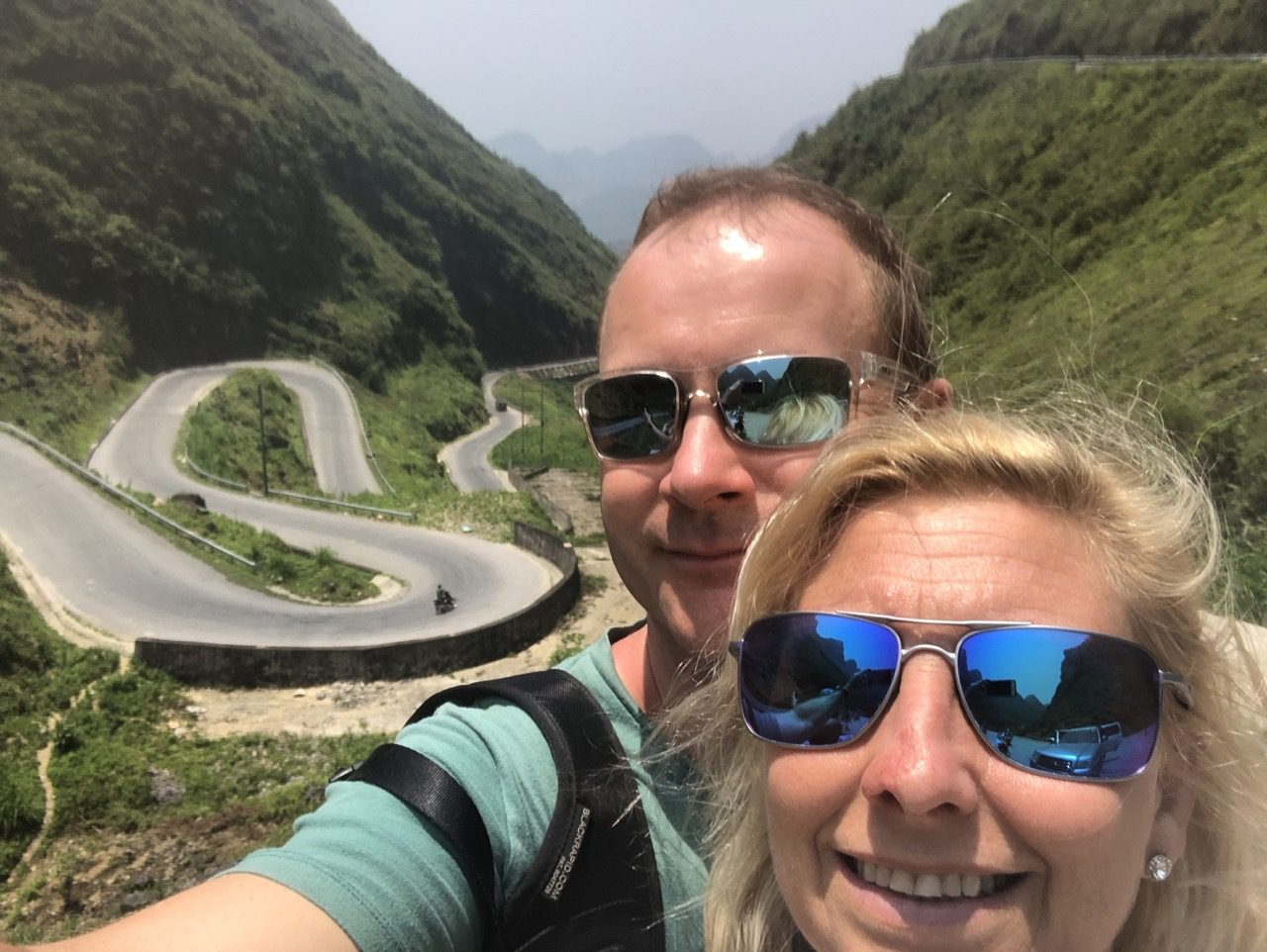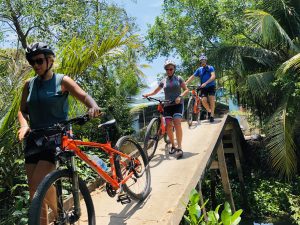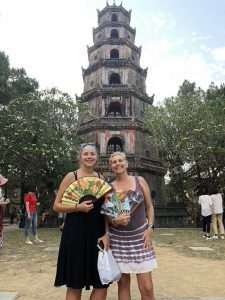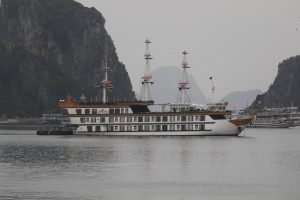🙂 Incredible landscapes. Stunning waterfalls.
🙁 Dangerous drivers. Dog was definitely on the menu.
Wednesday: 24 April 2019 – Sapa to Ha Giang (250Km) 36 C
After completing our fantastic 2 day Sapa trek, we were met at their offices by Phong (Ngoc’s husband and our guide for the next week) and our driver Ngan. We had the most stunning drive through the greenest paddy fields – Ngan never changed gears so we were permanently in 3rd! Roads are absolutely terrifying – people just drive in the middle and hoot as they navigate blind corners!!
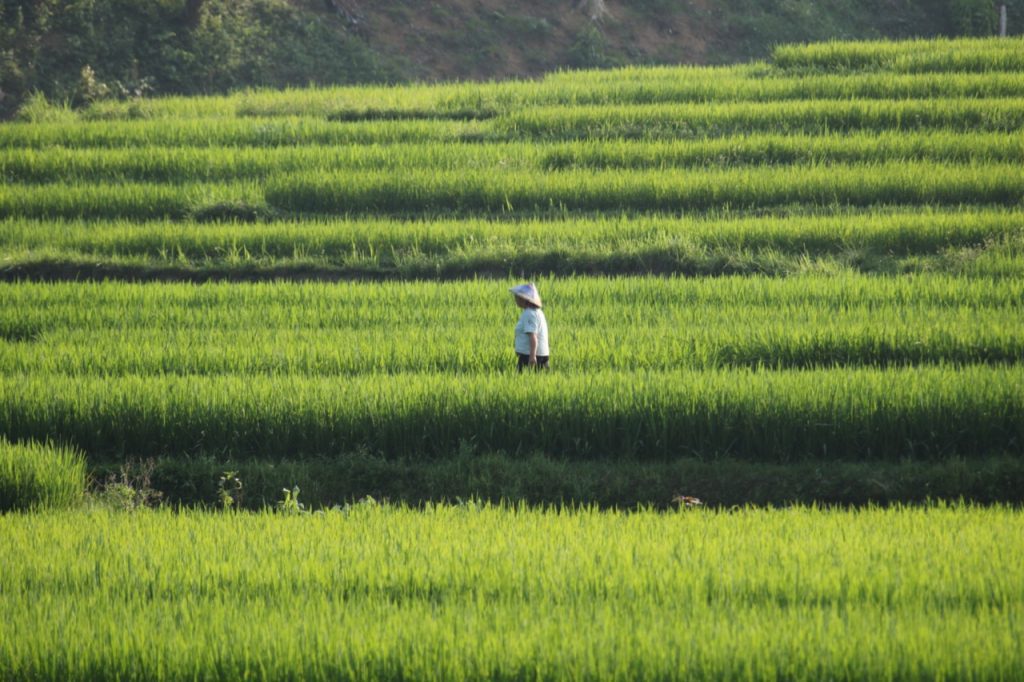
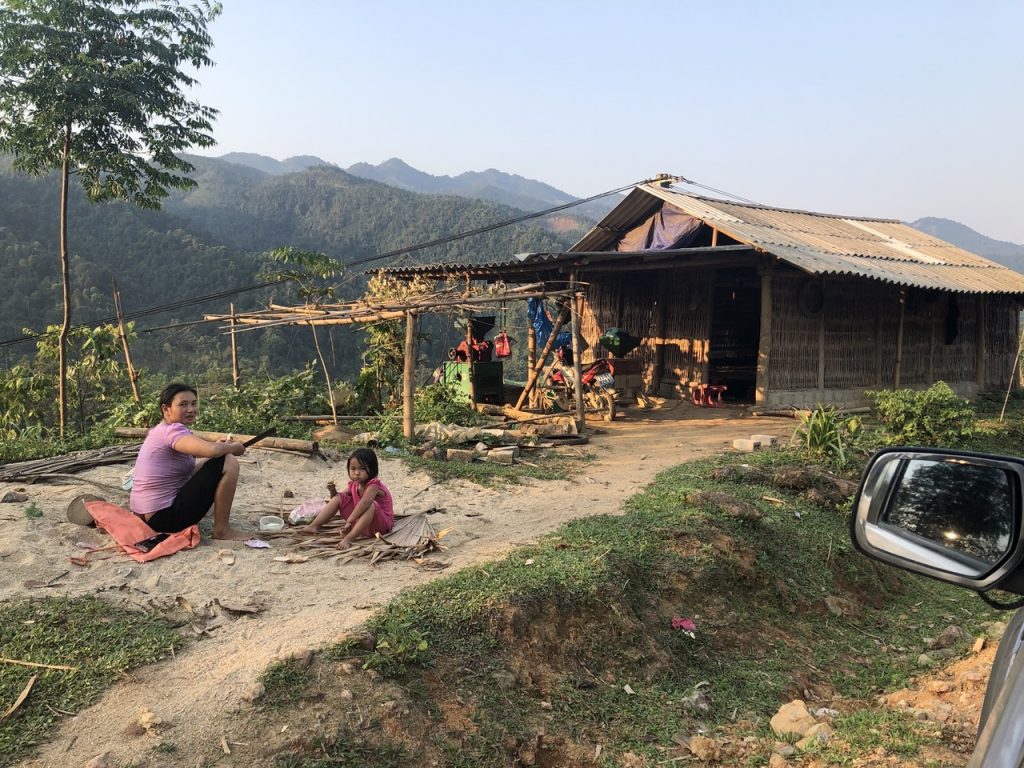
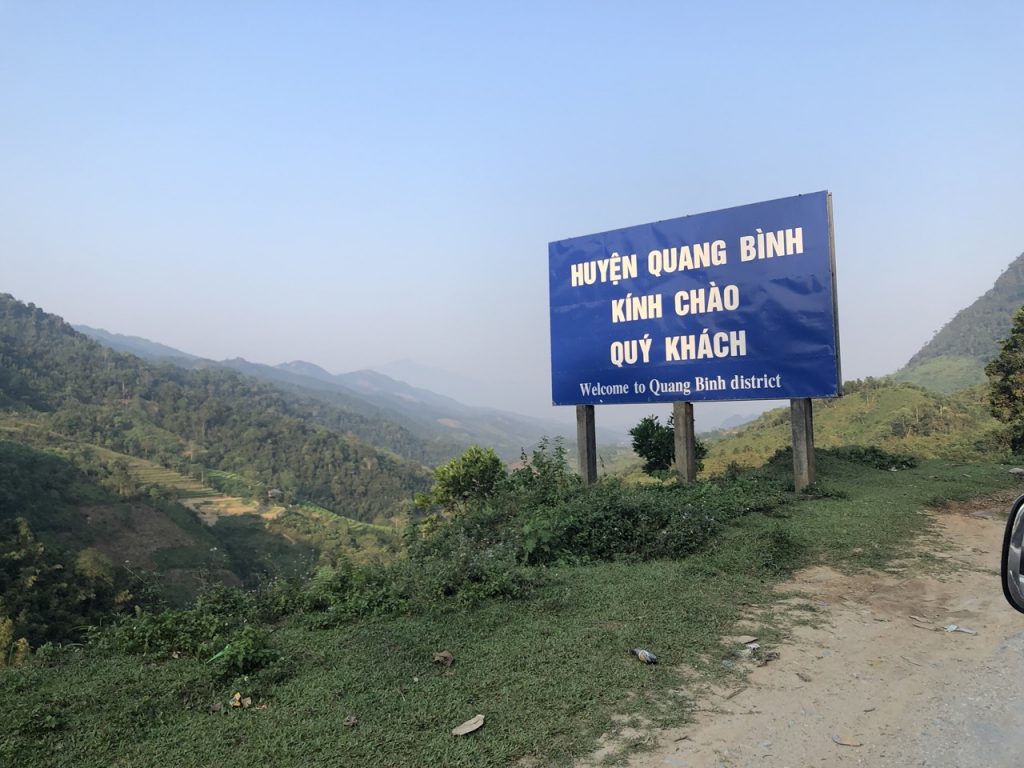
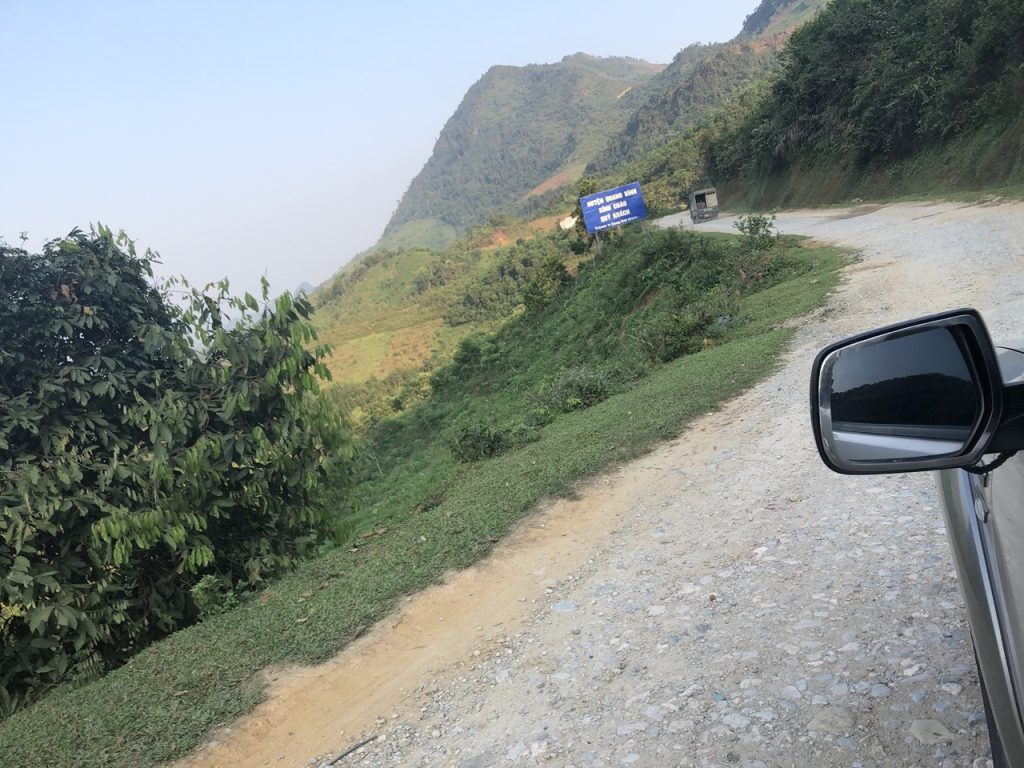
We stopped en route for dinner which was as always plentiful and delicious. Definitely dog meat being advertised in neighbouring restaurants. Locals kept coming over to share rice wine with us.
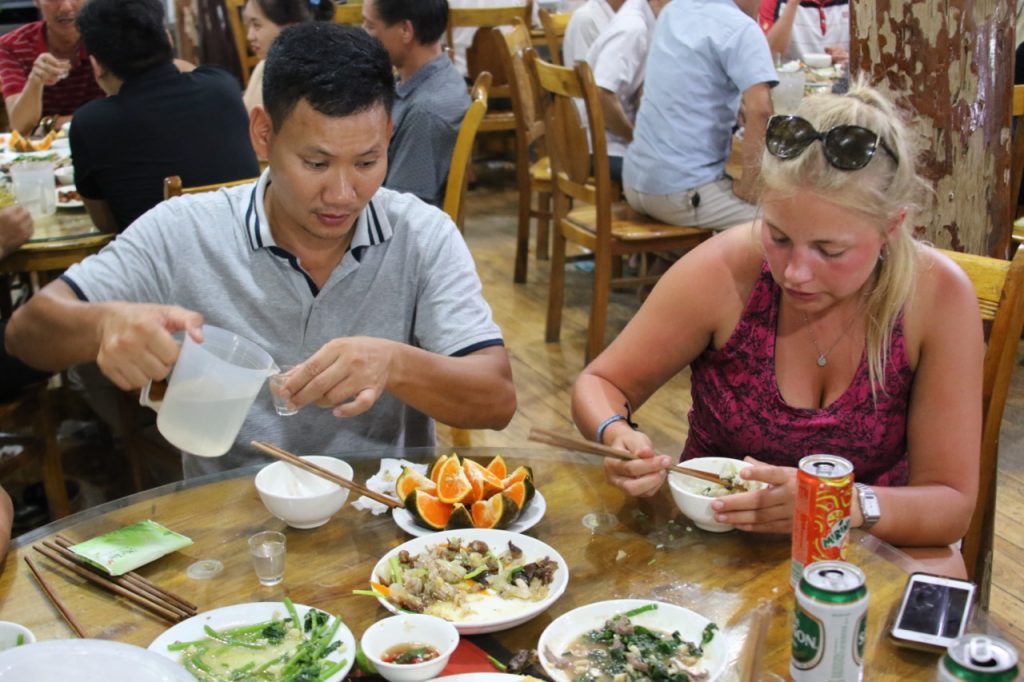
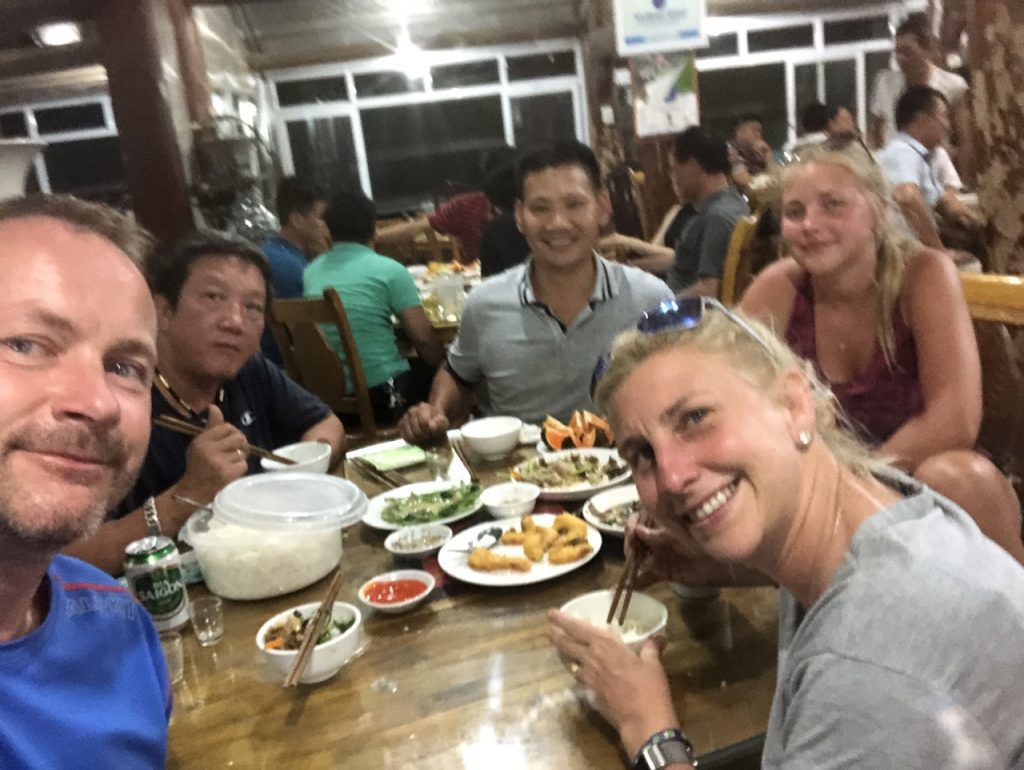
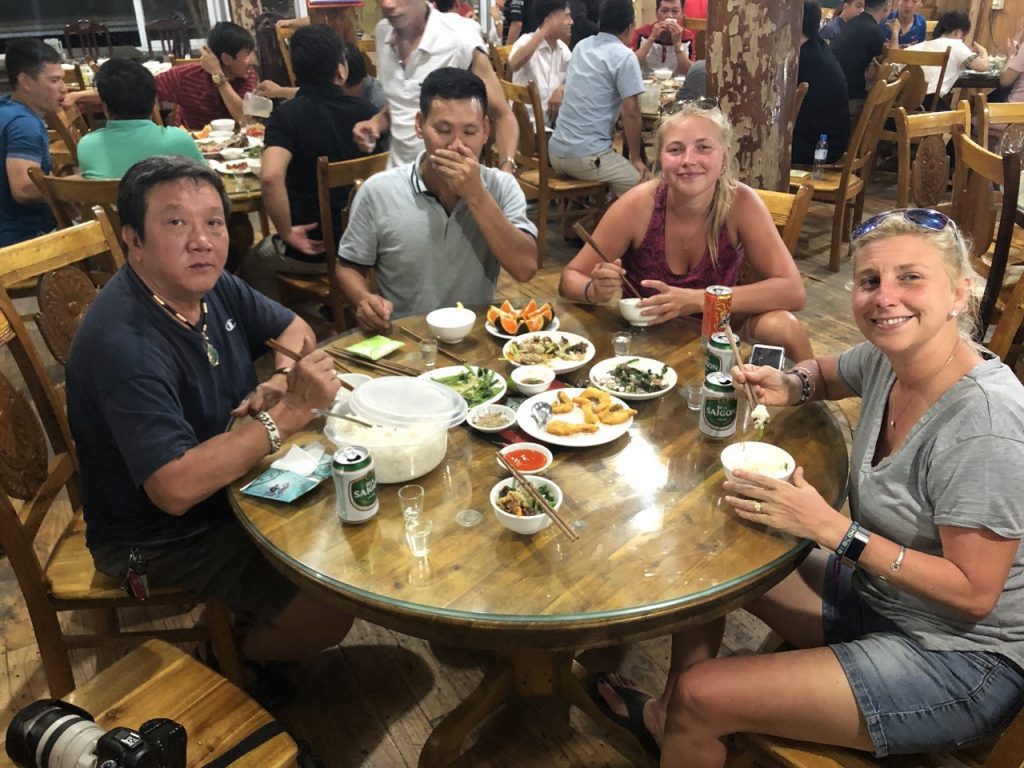
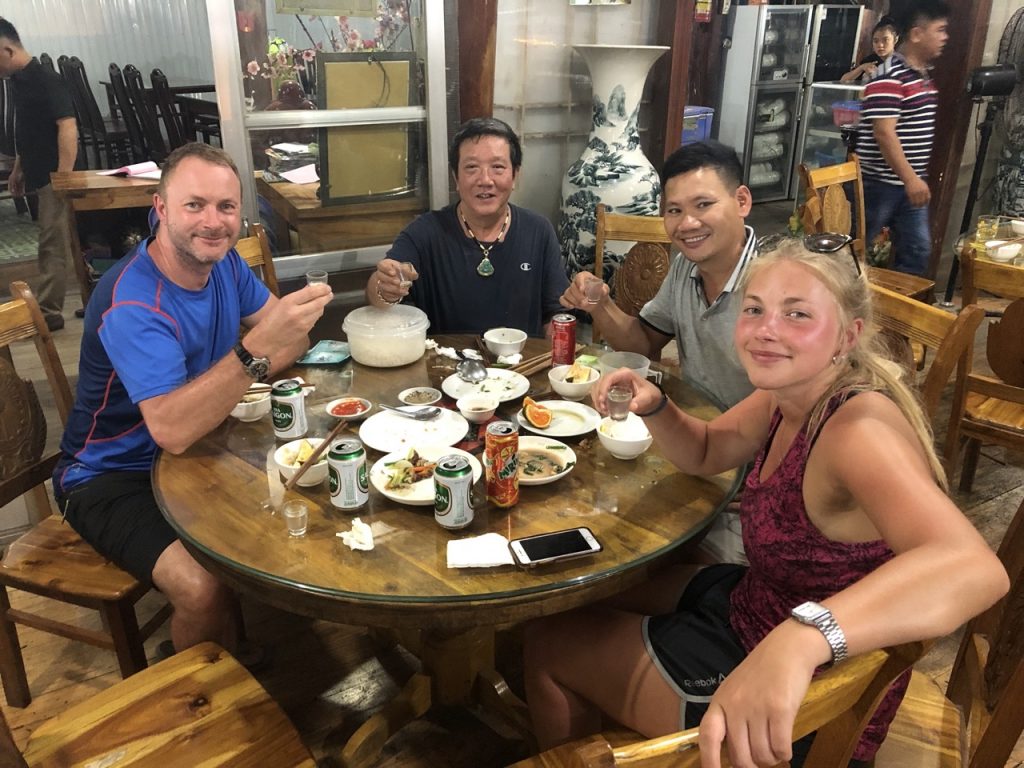
It was a long drive and we finally arrived in Ha Giang – NO tourists in sight. We checked into our hotel: Huy Hoan. Quite amusing as you quite literally drive all the way into Reception! Our rooms were spacious and clean. The furniture was heavy, wooden and ornate. And of course, the obligatory plastic slippers.
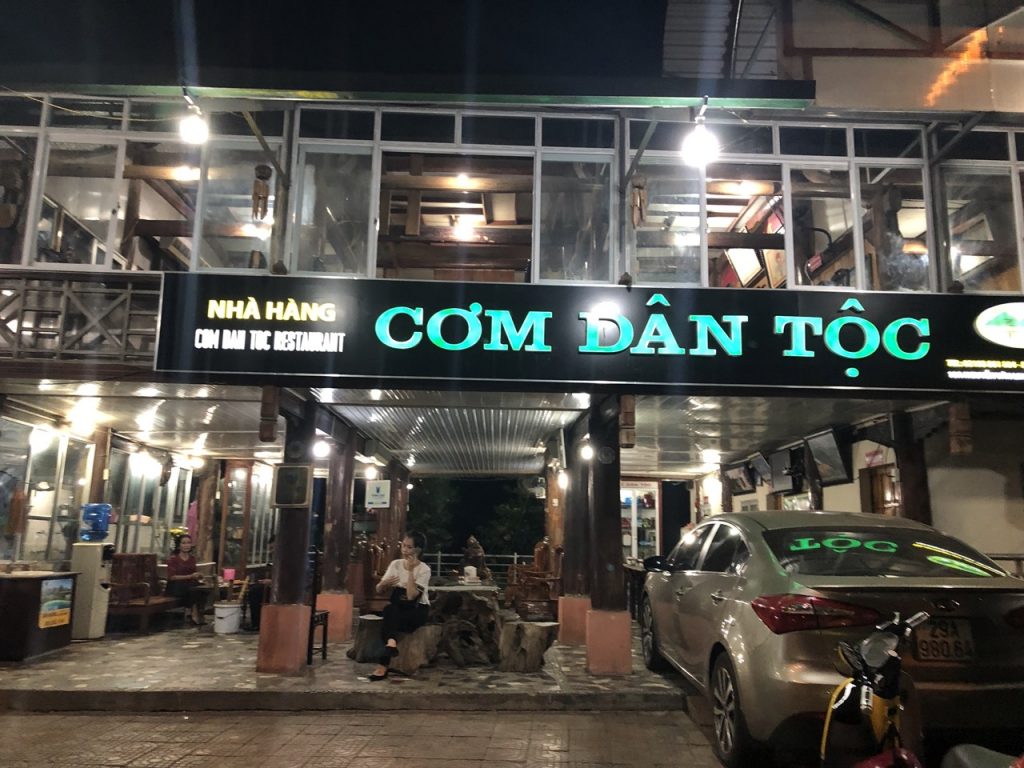
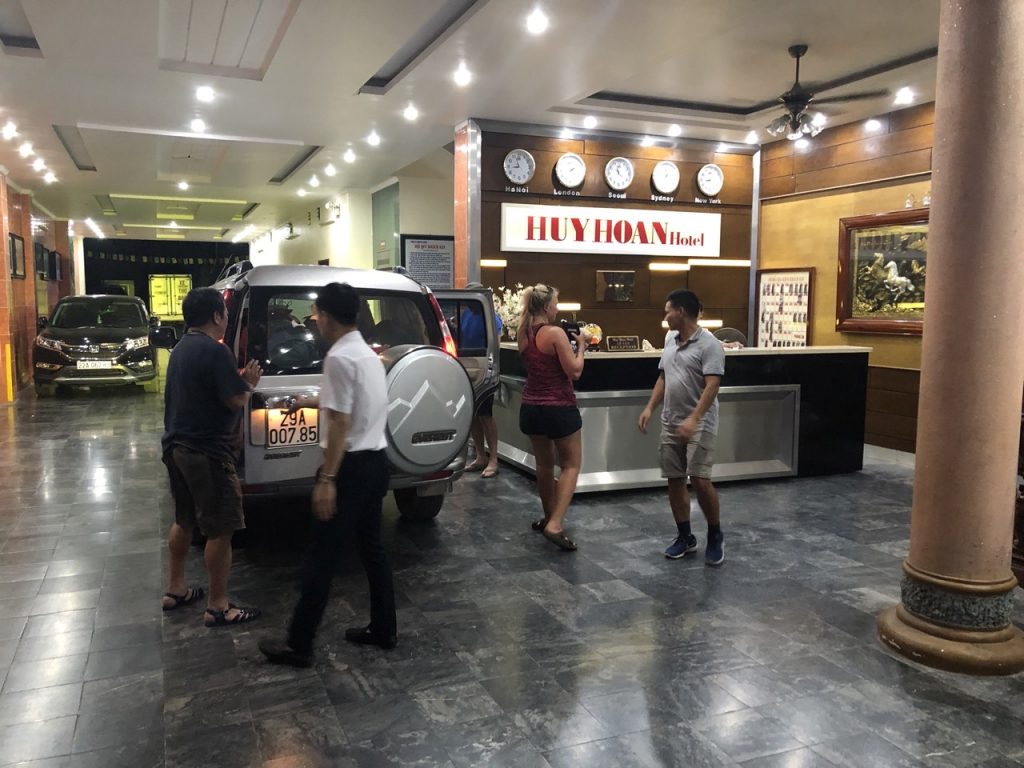
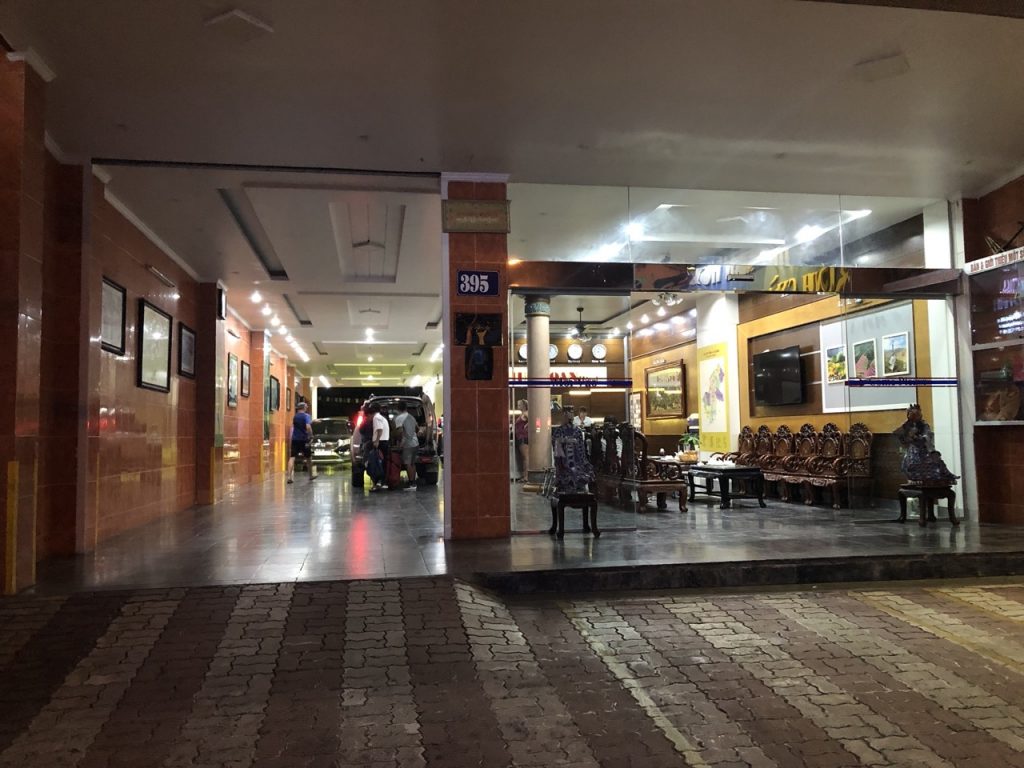
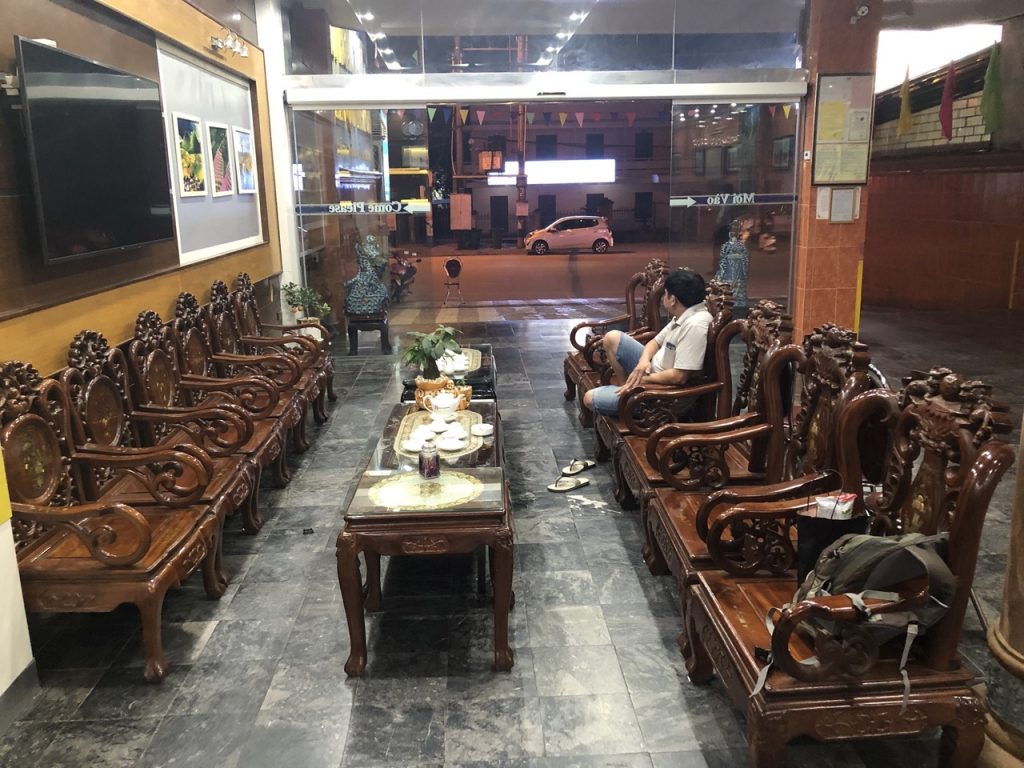
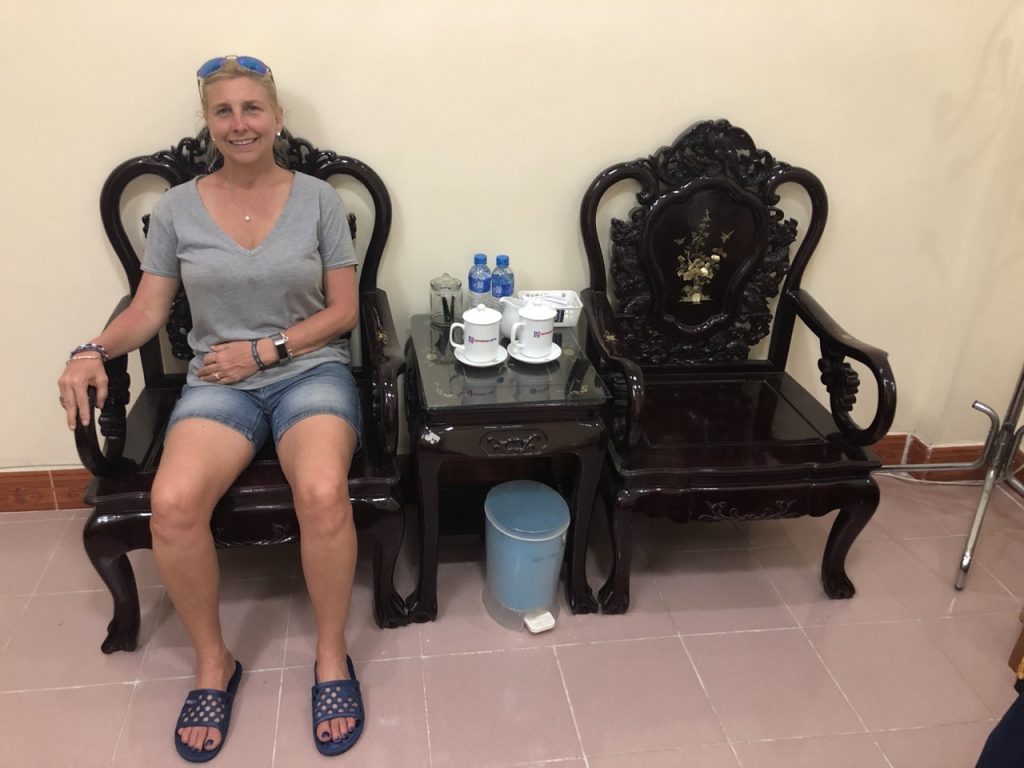
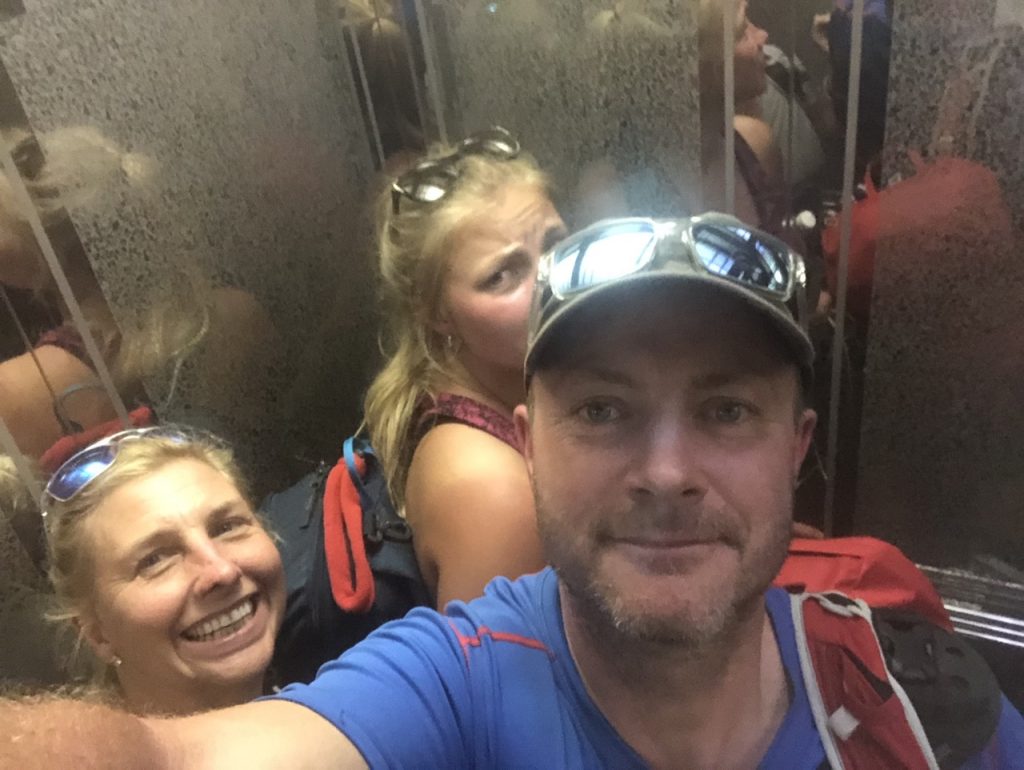
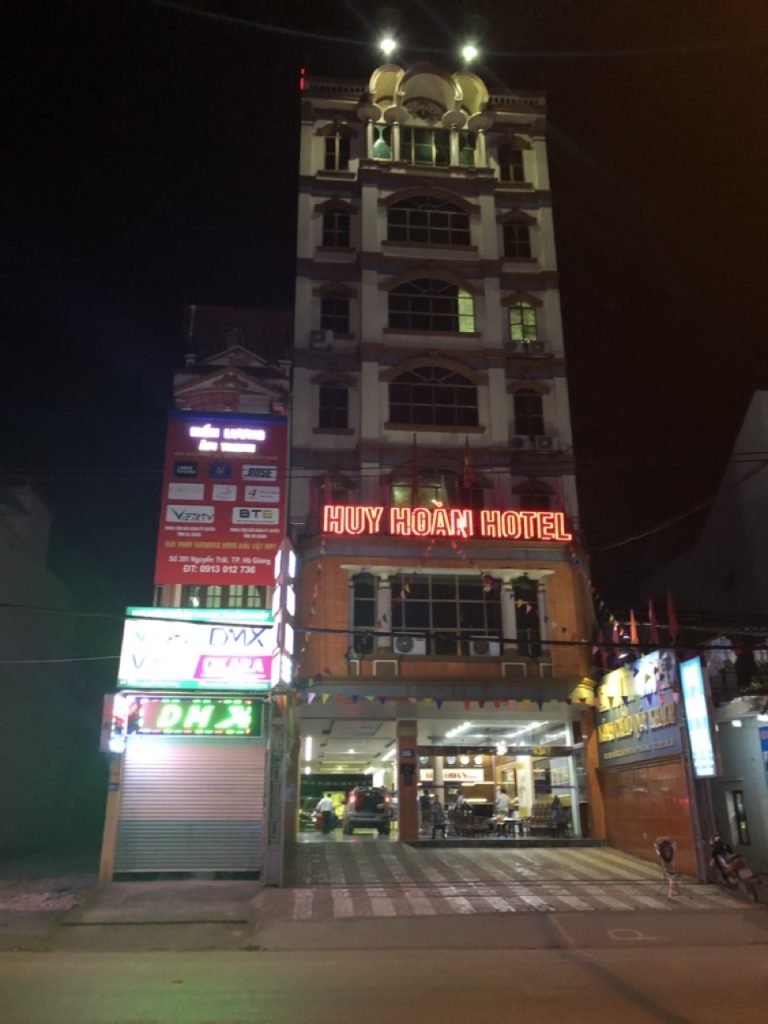
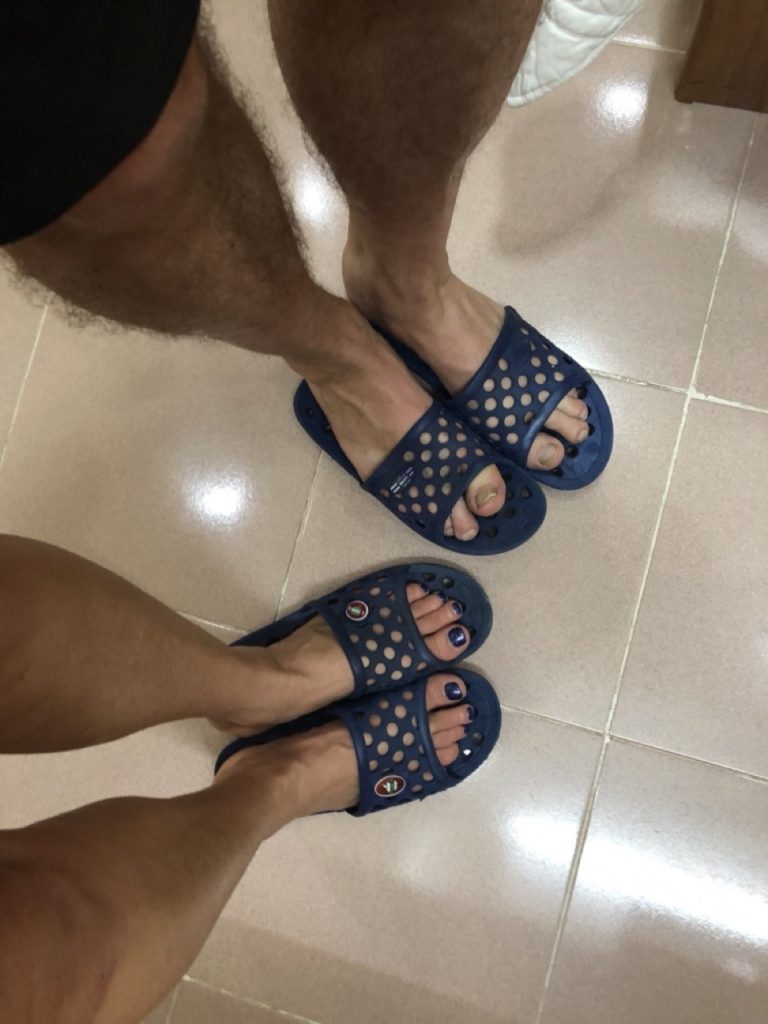
Thursday, 25 April 2019: Ha Giang – Dong Van – Meo Vac – Bao Lac (Twin Hills) – Vuong Palace – Ma Pi Leng Pass 36C
We were up early for a Vietnamese breakfast of Pho and Vietnamese Coffee (condense milk) delicious!
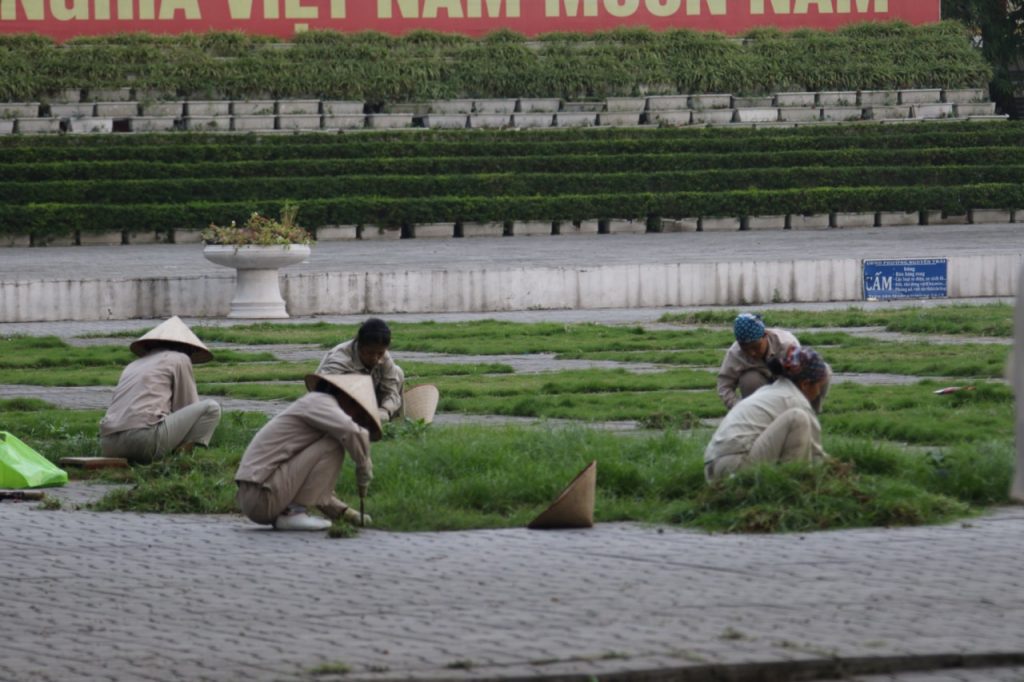

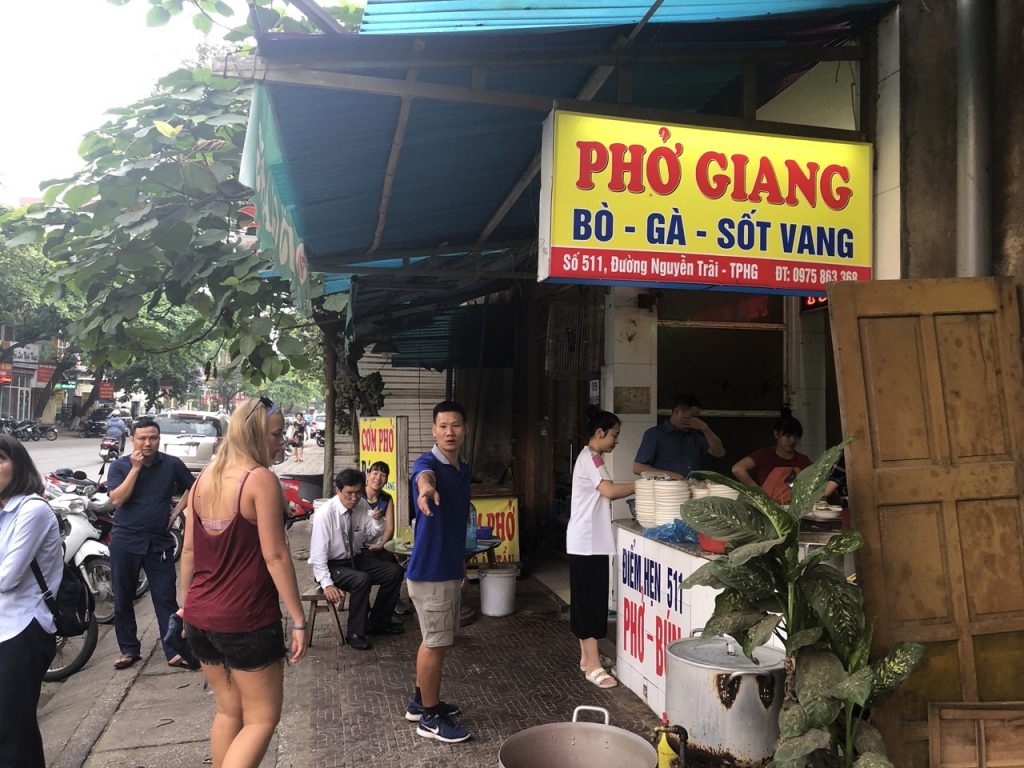
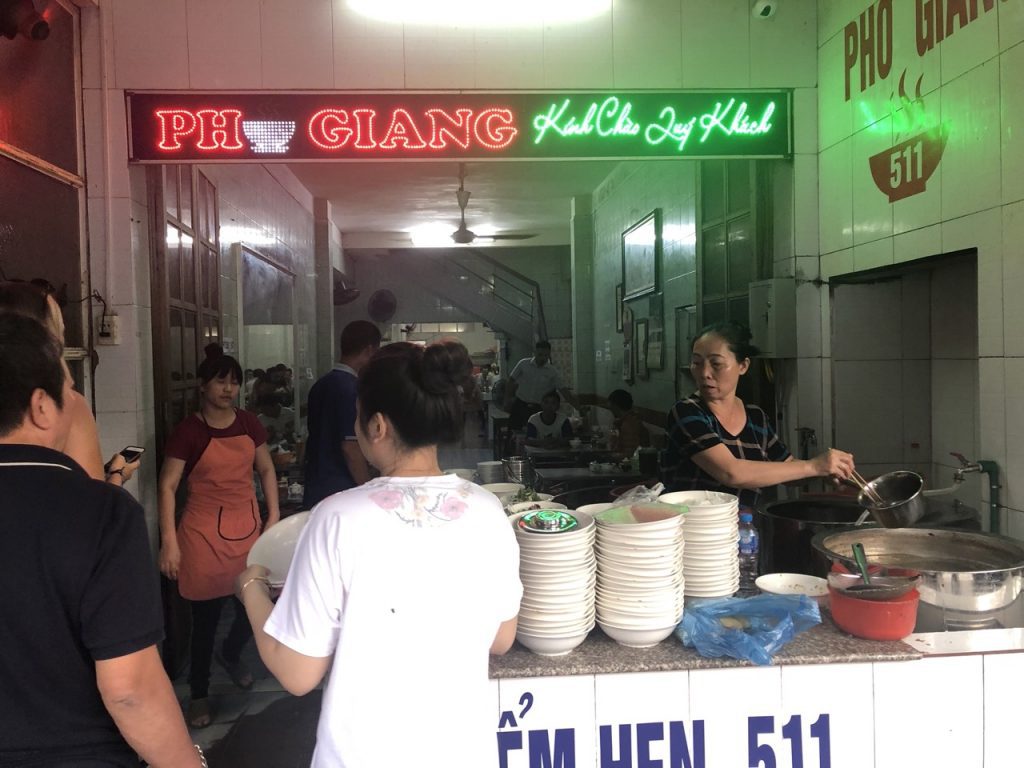
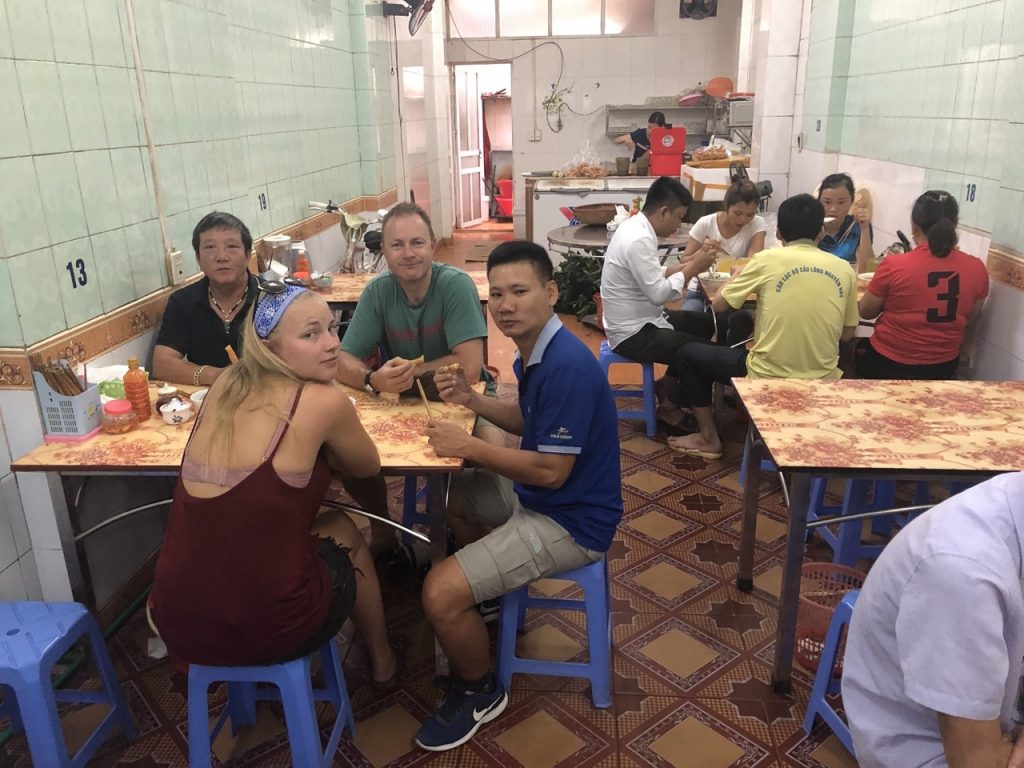
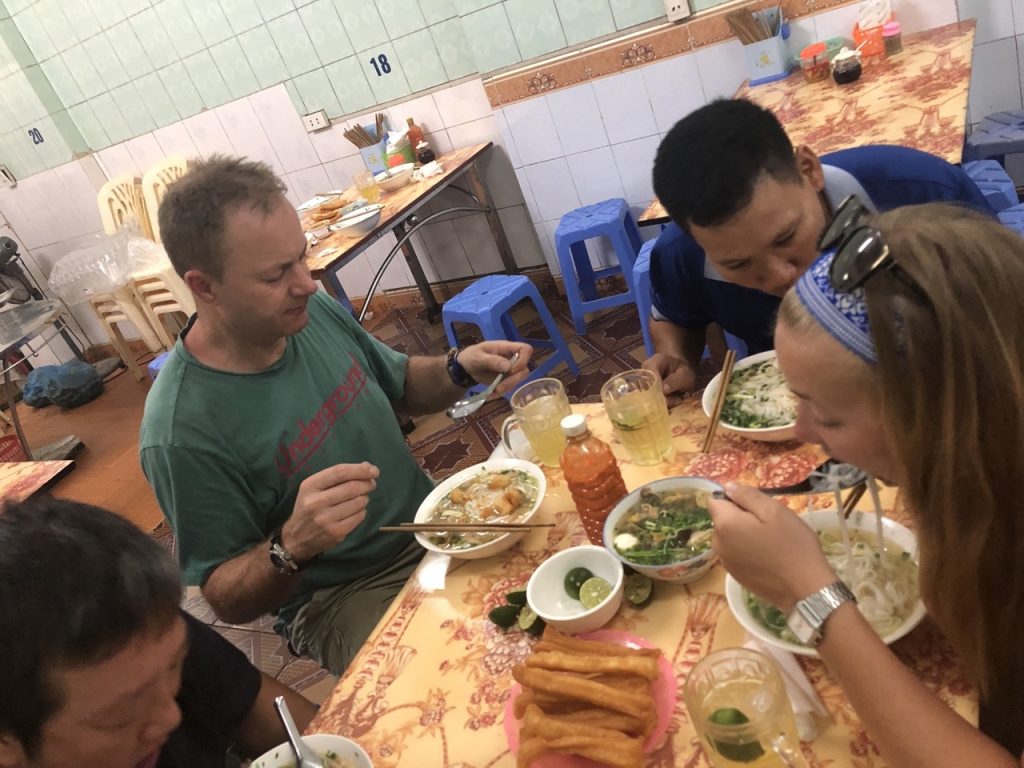
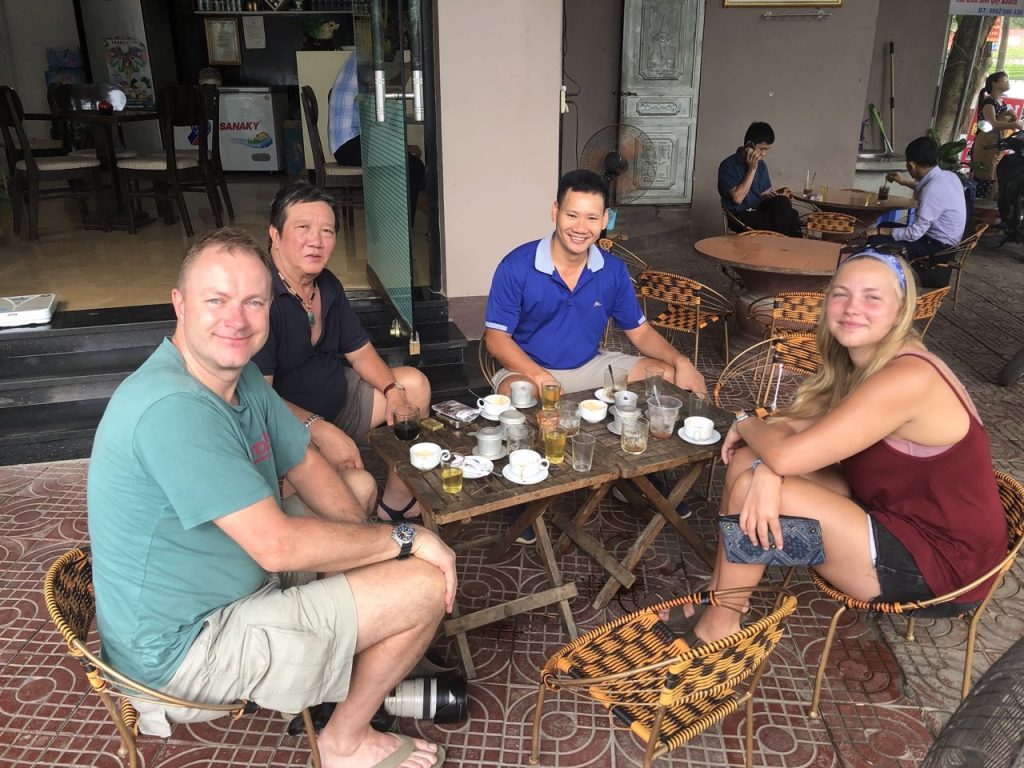
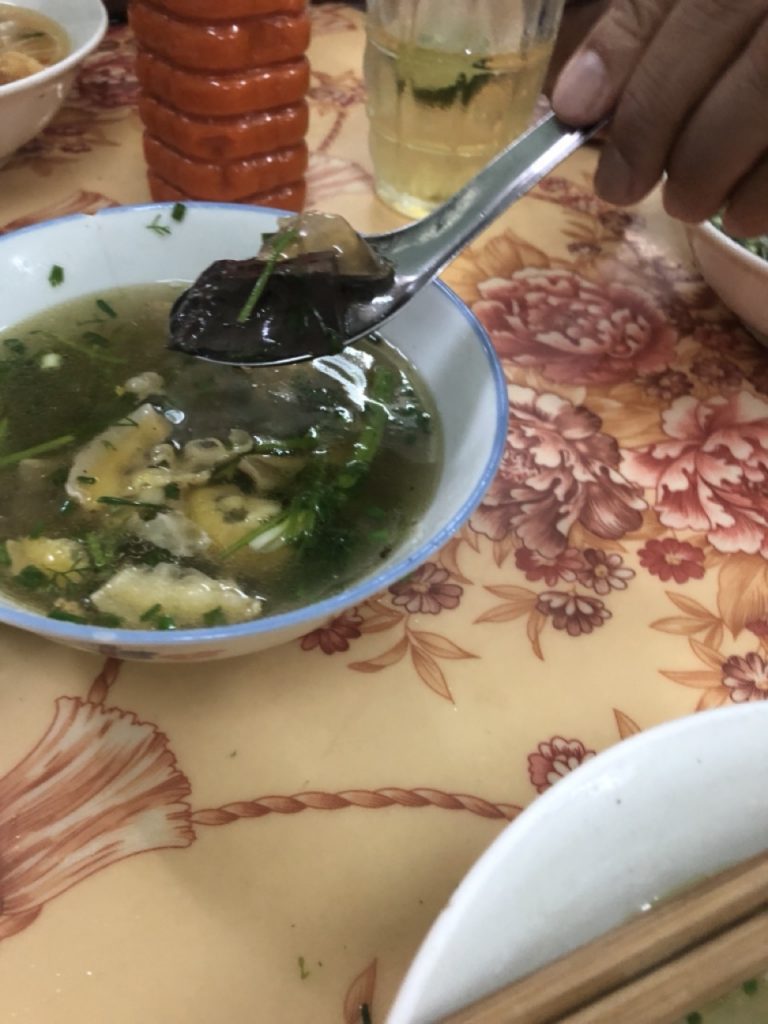
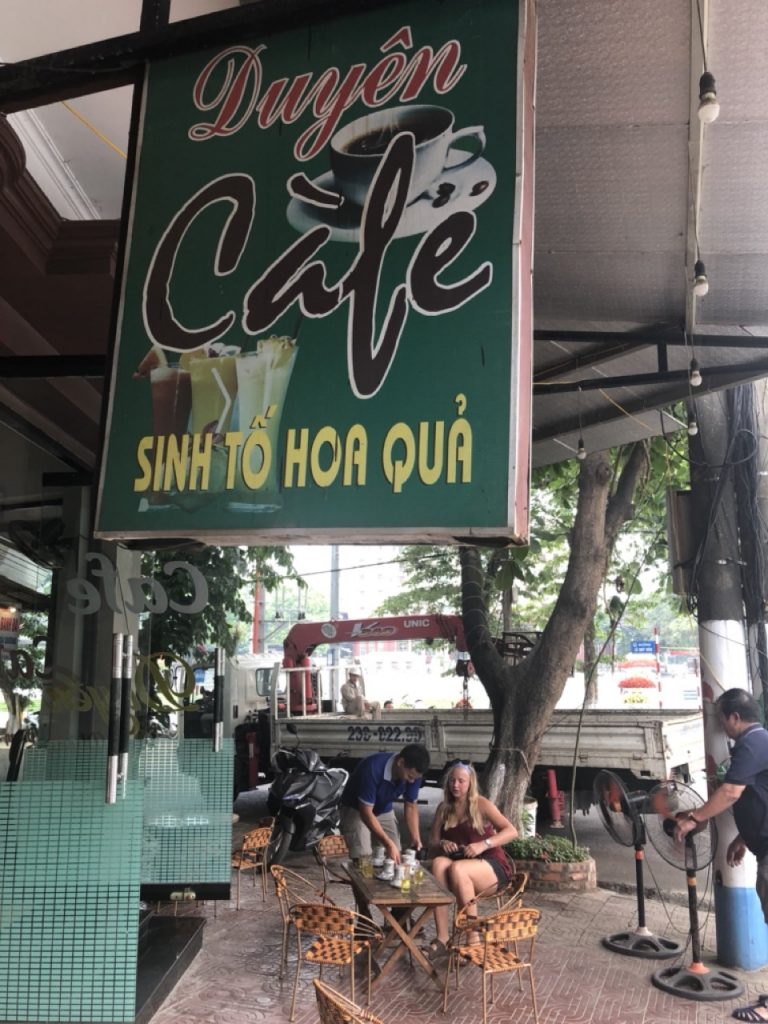
We set off and were transfixed by the incredible scenery – paddy fields carved out of perpendicular walls of rock – amazing.
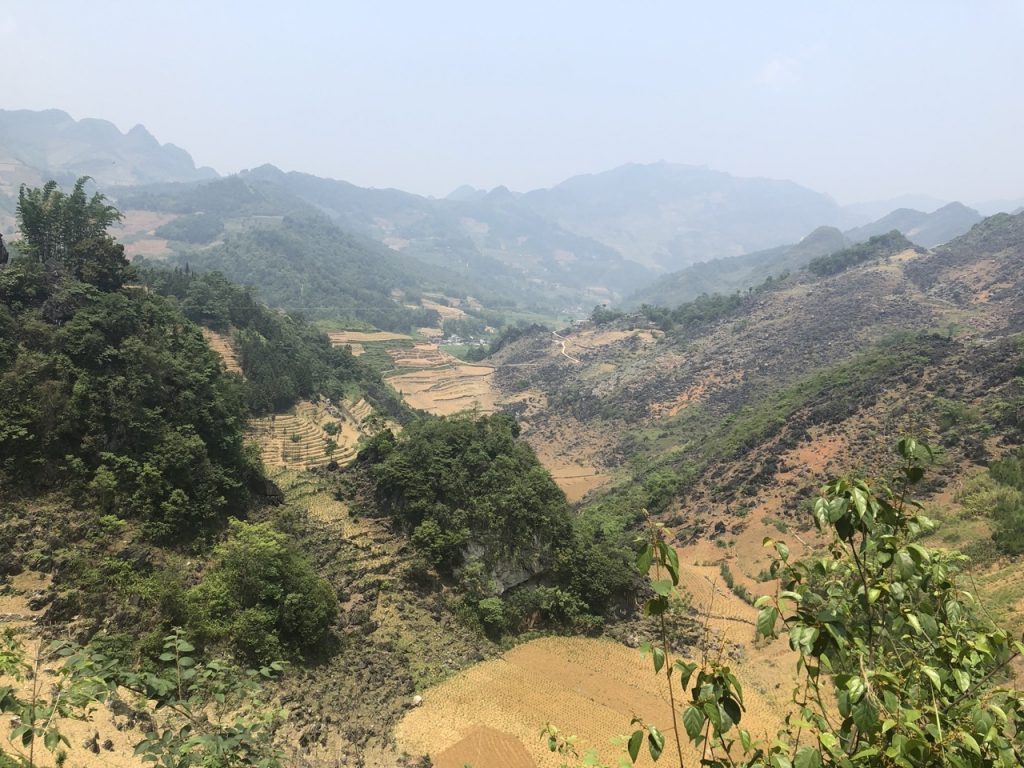
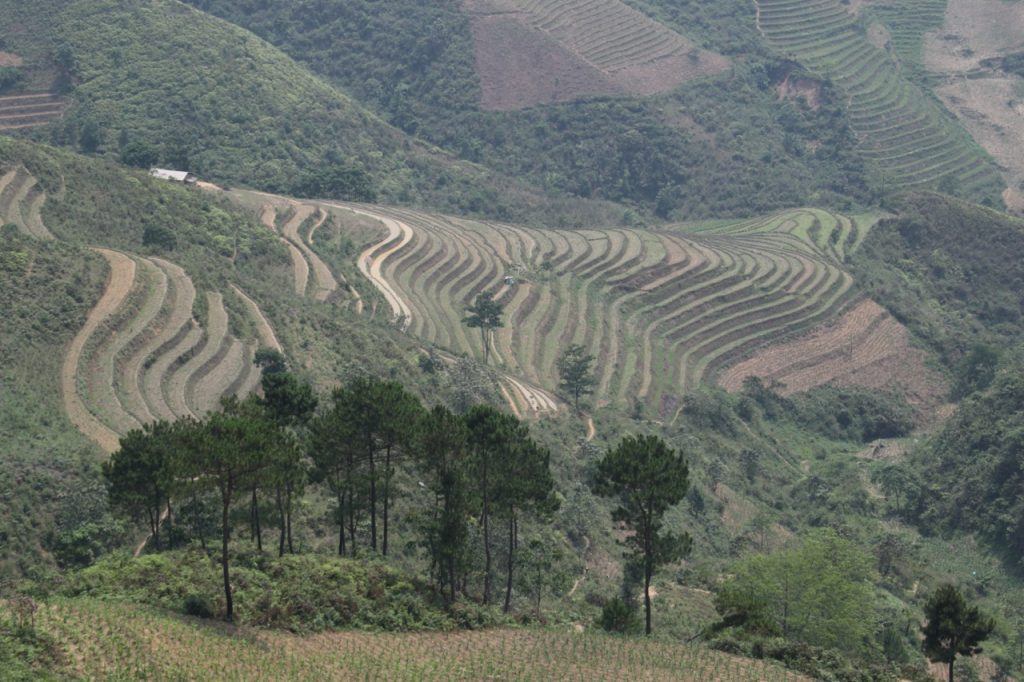
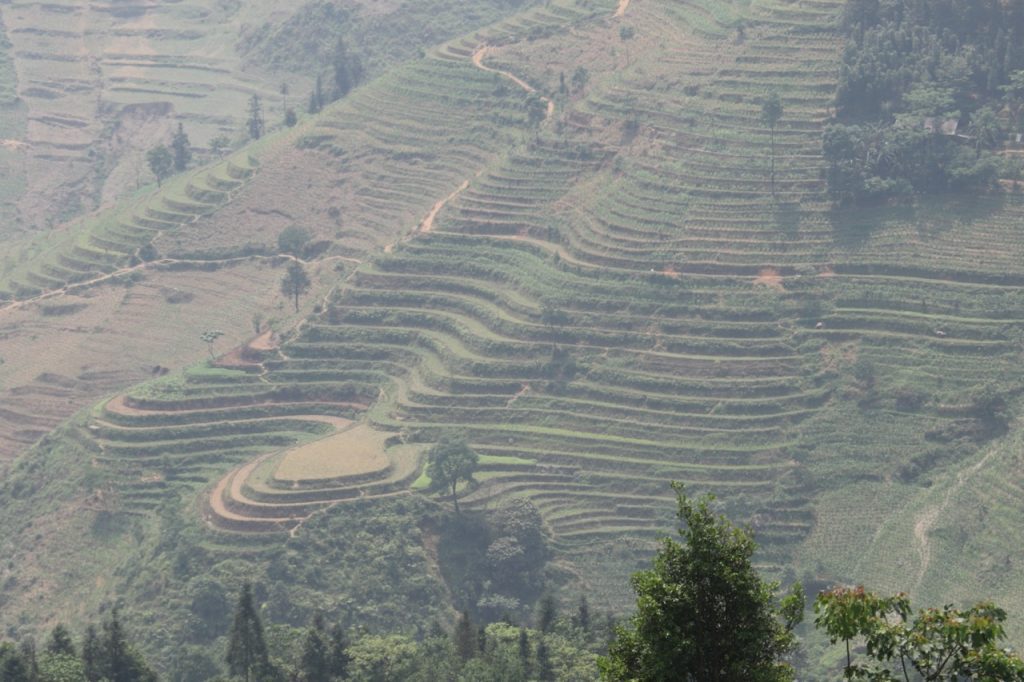
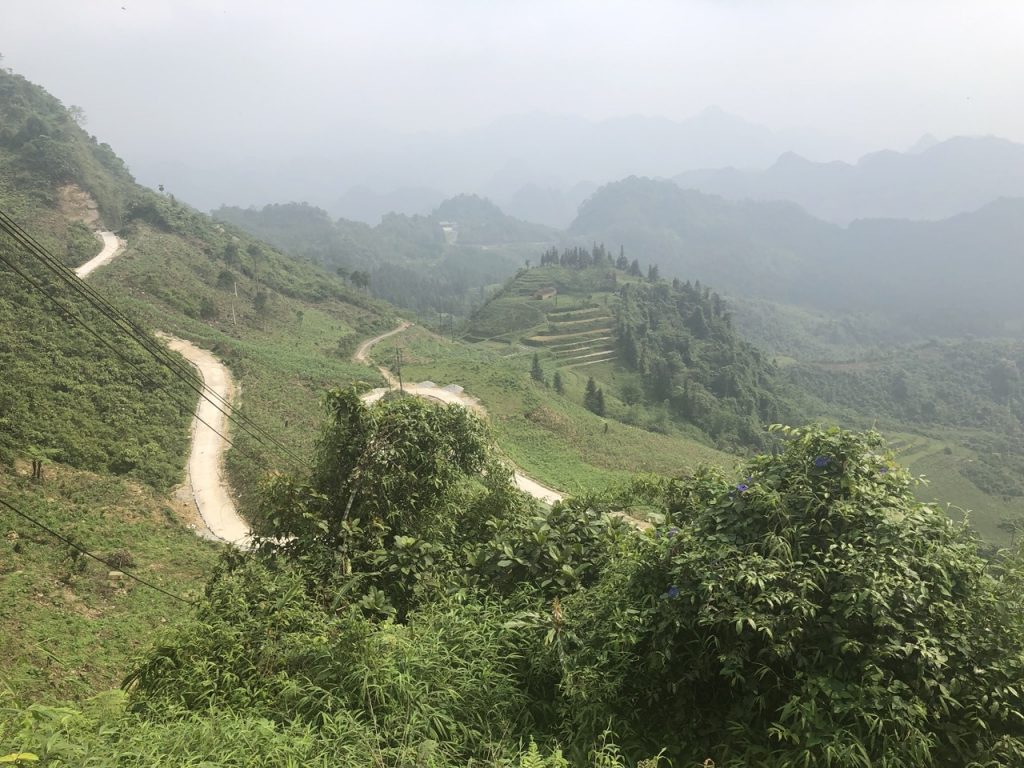
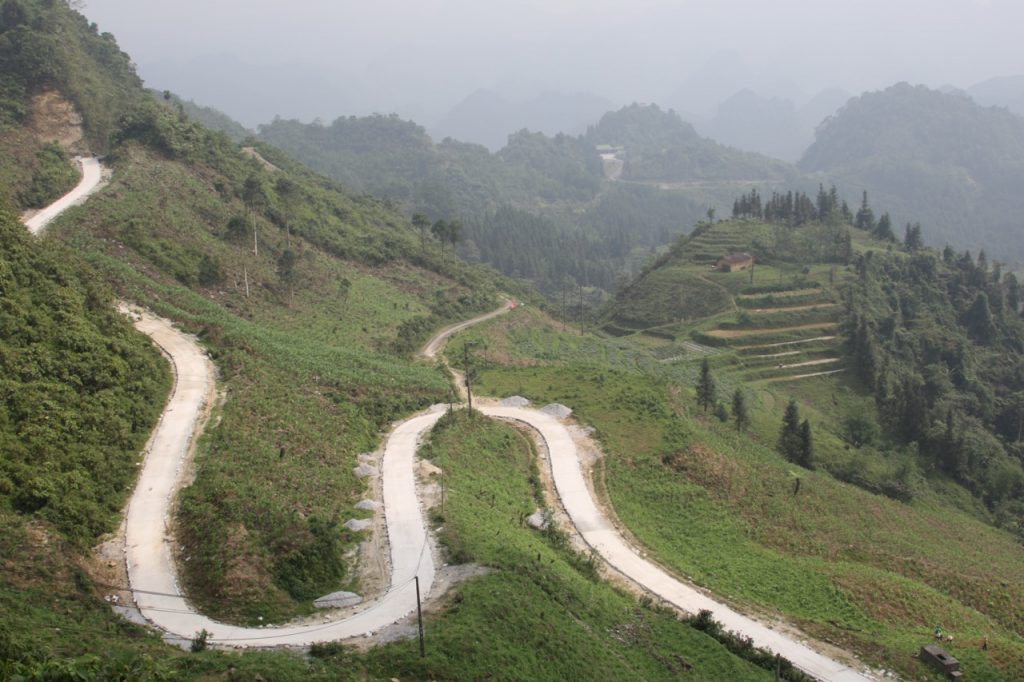
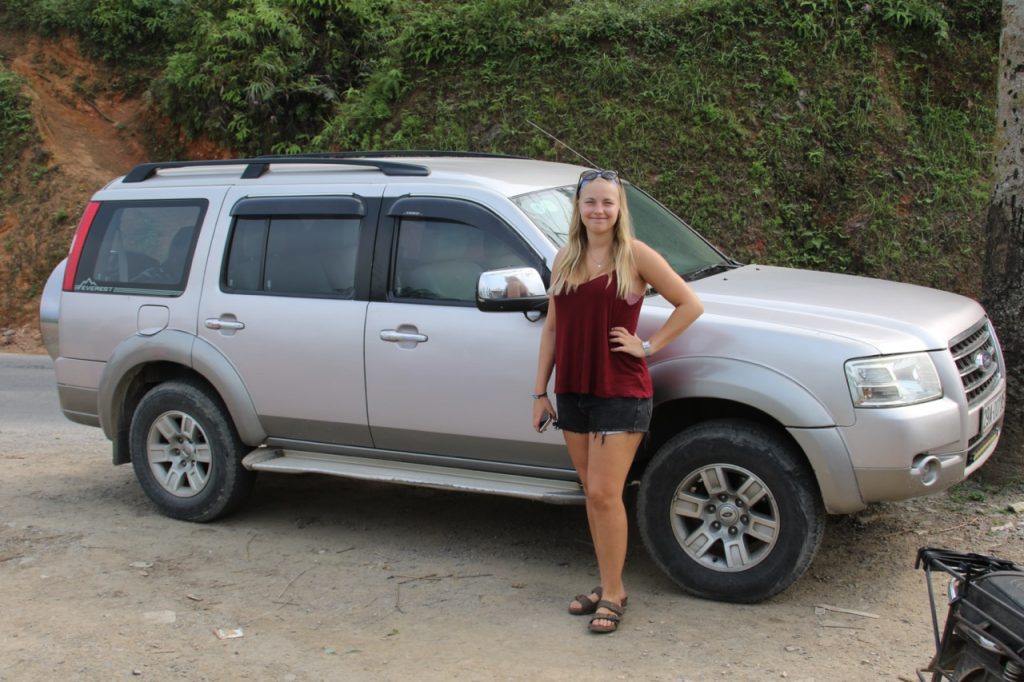
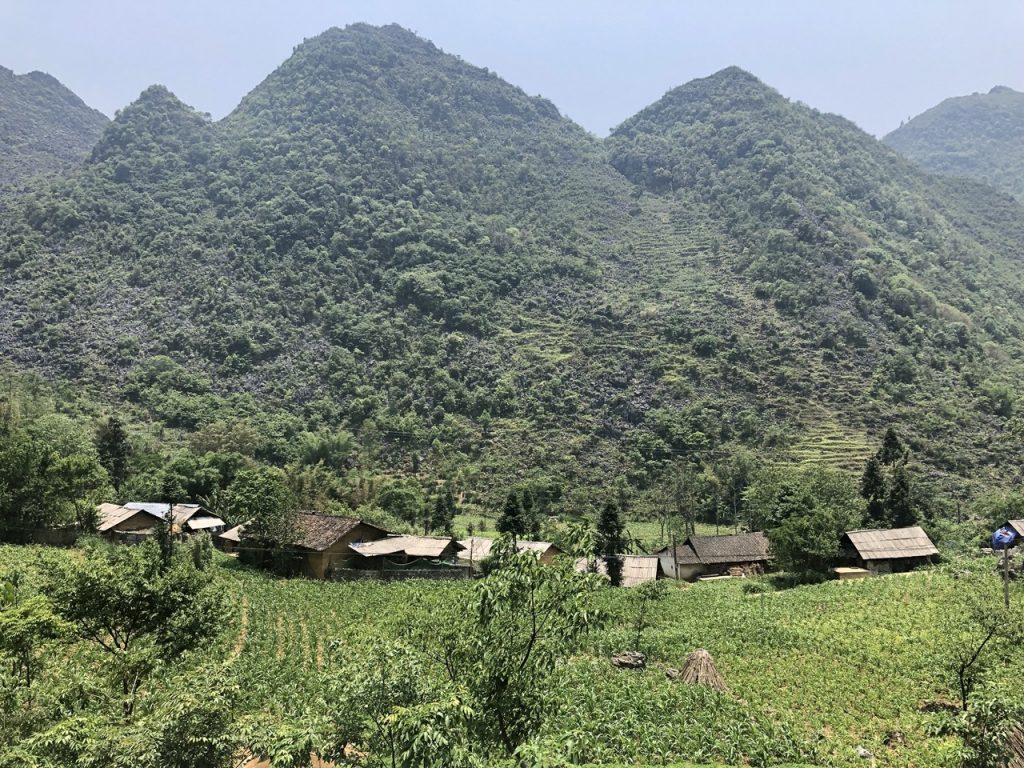
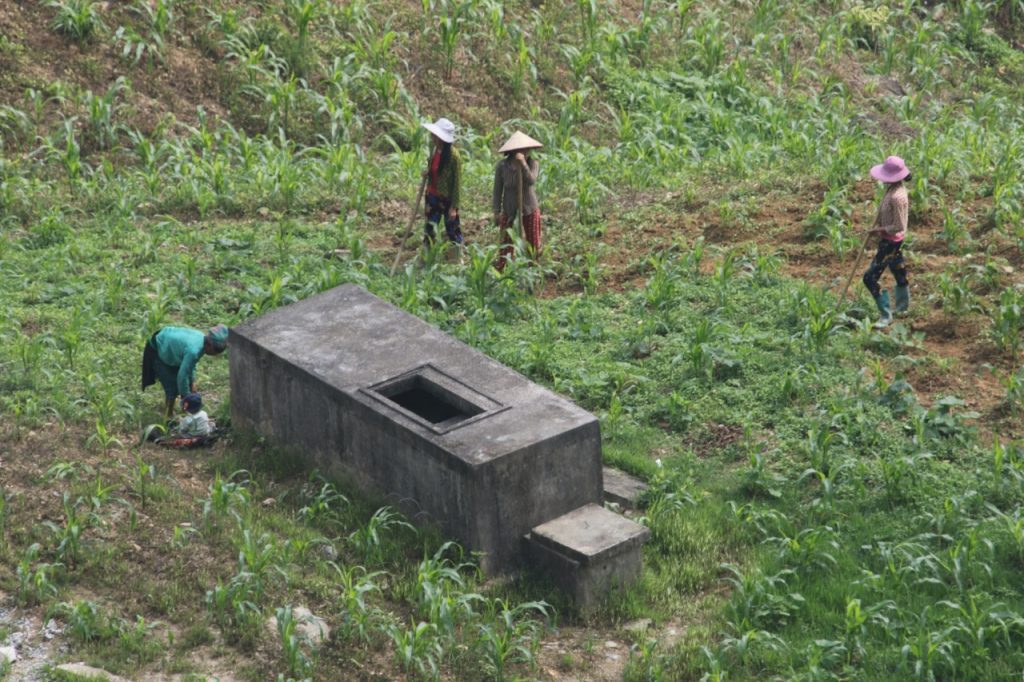
You can stop on the road and buy freshly squeezed sugar cane juice – yum
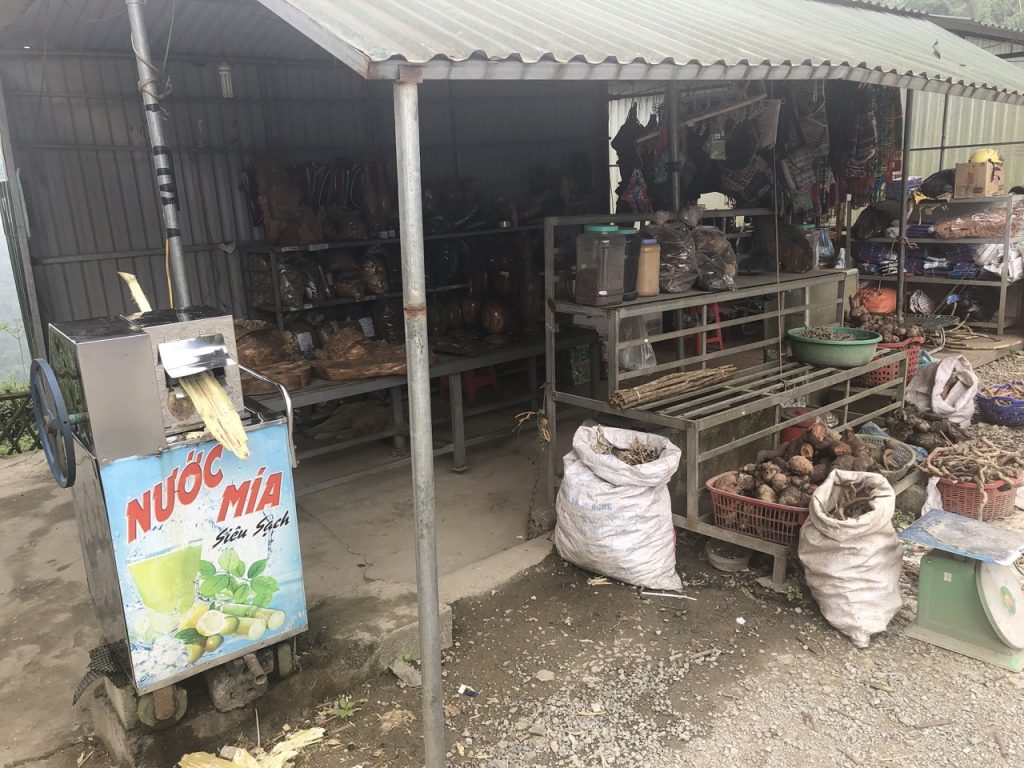
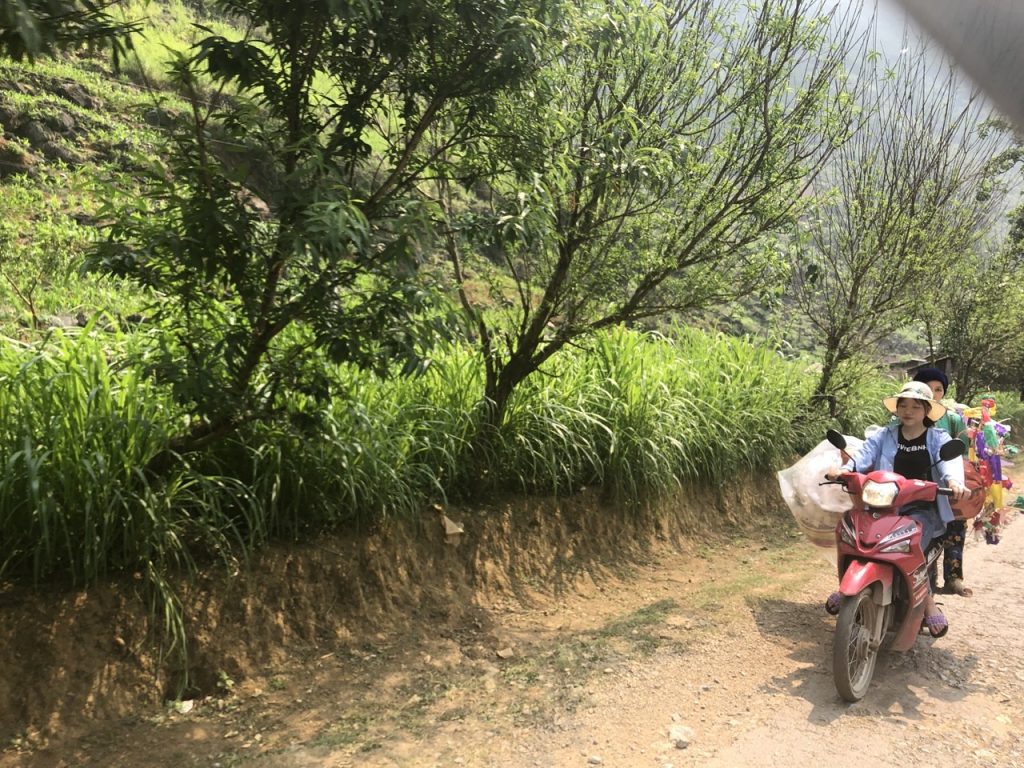
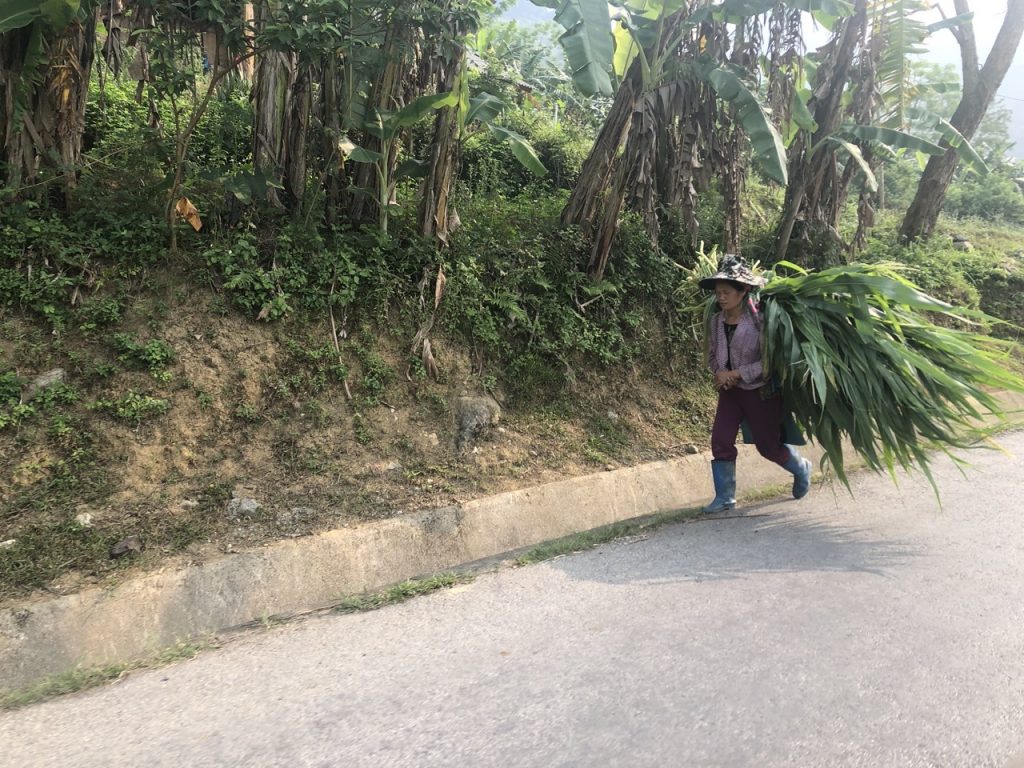
Quan Ba Pass, also known as Heaven’s Gate, is a road close to Ha Giang on the famous motorbike loop. We were limited in time and only stopped off at vista points but most people spend a night in one of the local villages to make the trip an authentic experience: Nam Dam village is one of them, with Dao people living in traditional houses and cultivating many old rituals. There’s also a museum there. Lung Tam Village is home to the Hmong people where you will see a traditional way of dying and sewing fabrics, which has been a great source of income for locals as many tourists buy those unique handcrafted products. Tam Son is another town with spectacular scenery, karst mountains, and caves nearby.
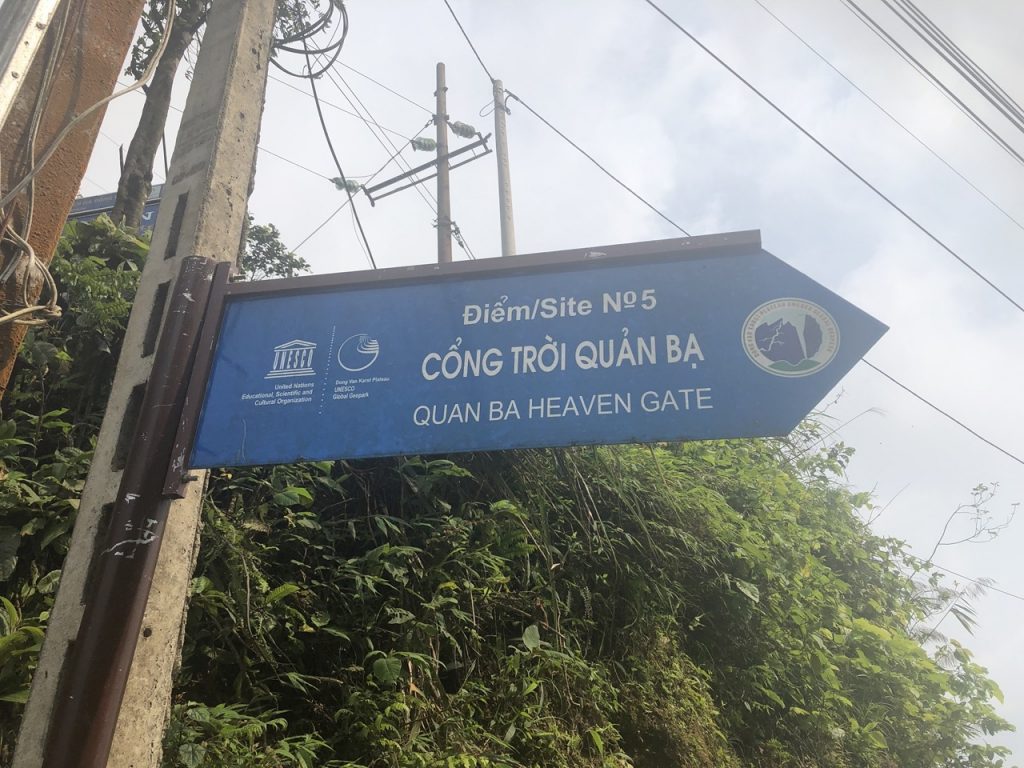
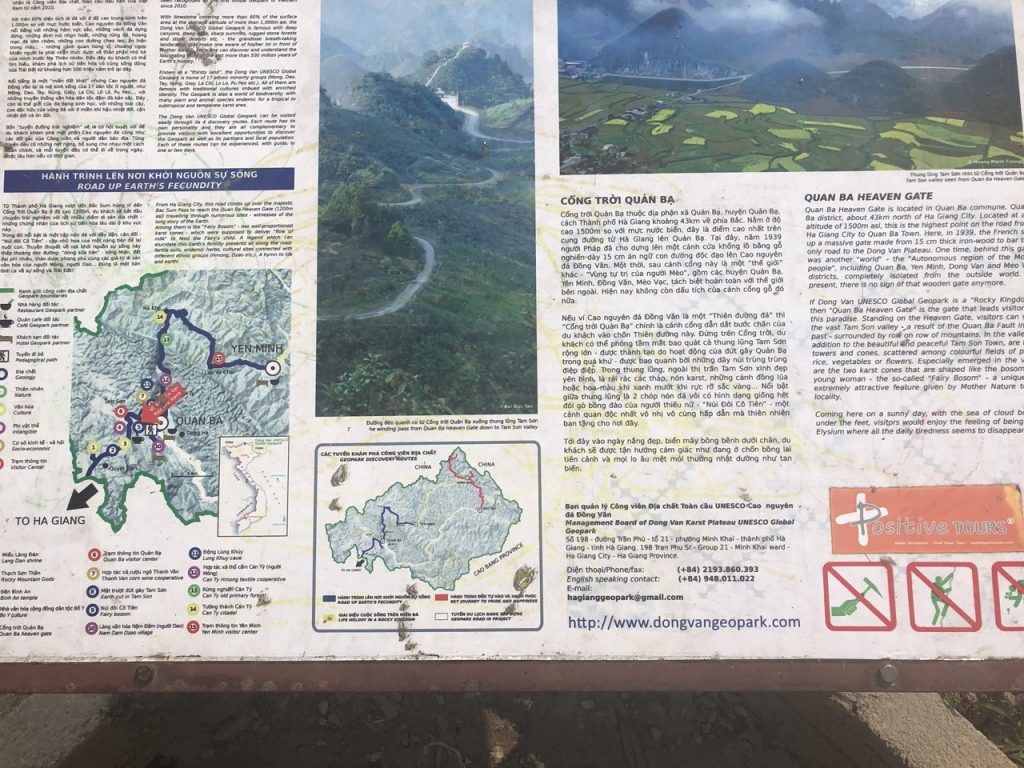
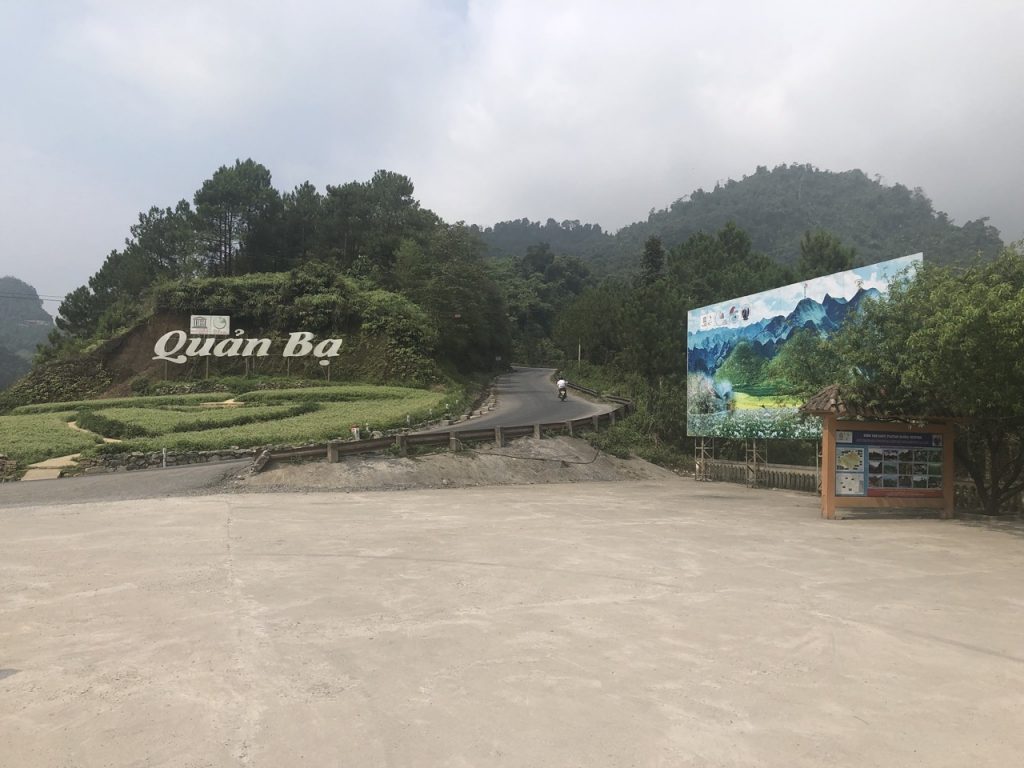
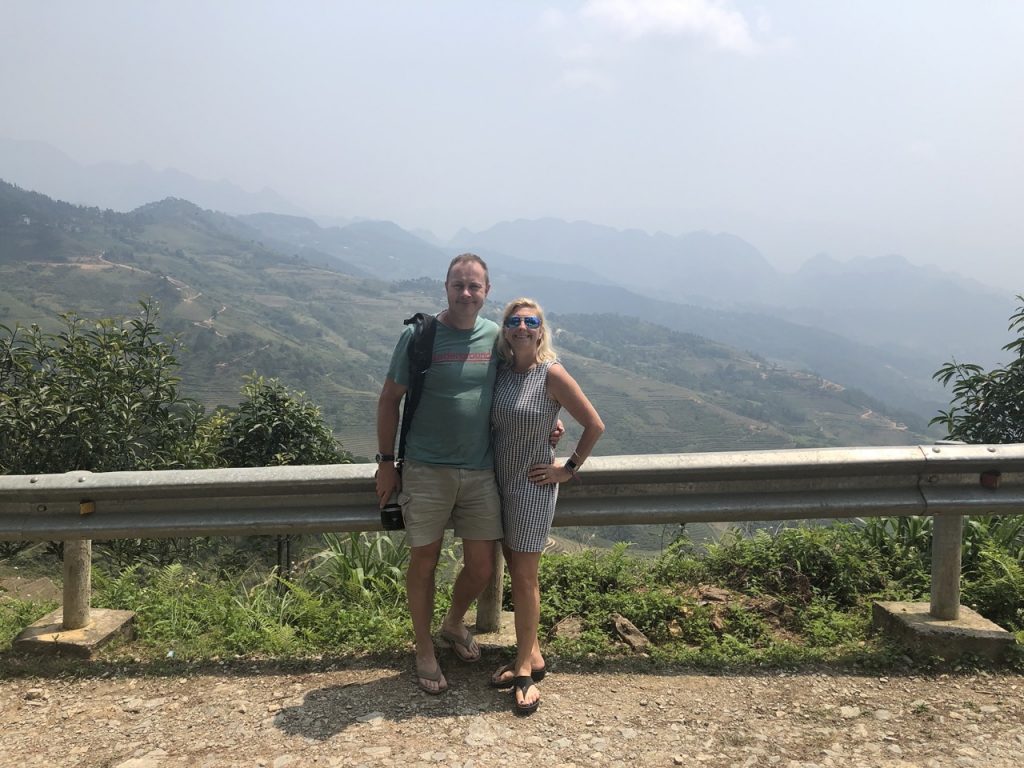
Twin Mountain was easy to spot! Legend has has it that once upon a time, in this land there was a handsome Hmong man who had the talent to blow his lips. His tongue was like the sound of a stream, like the sound of birds, forest deep… There is a fairy in the sky called beautiful flowers, snow-white, lips like spring peaches, two cheeks blushed pink like a peach. One day she heard the sound of Hmong flute then followed the wind to escape to heaven to find someone blowing the lips. After that fell in love with Hmong man, Then she decided to stay in this land with her husband. Years later they have a pretty boy. One day the Jade Emperor discovered that she had escaped to the world. That makes the emperor ridiculously angry. Then he orders his servant descend to the land and bring the princess back to heaven. But her child still very small. She begged for her to stay in the nursery but no one relented. Felling husband alone to feed her child, her son’s milk lacking milk. After that, she decided to left her pair of breasts under the sub-world breastfeeding. The pair of breasts grow round to feed her baby growing up. Later turned into two mountains shaped like mother breast, unusual to today, still called the Mountain pair of breasts or Mount Co Tien.
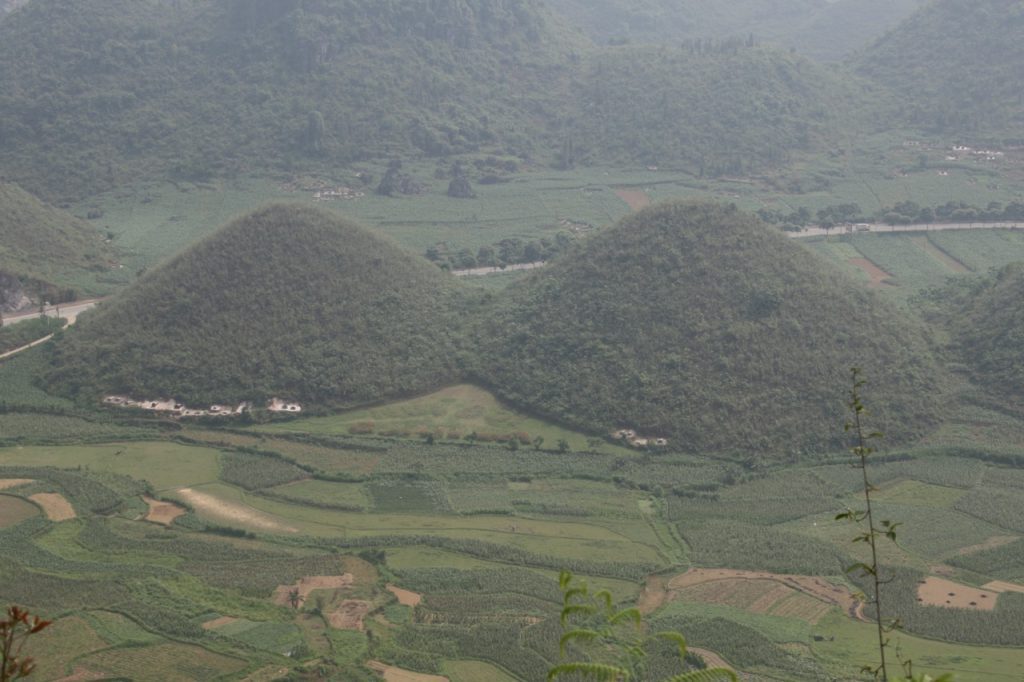
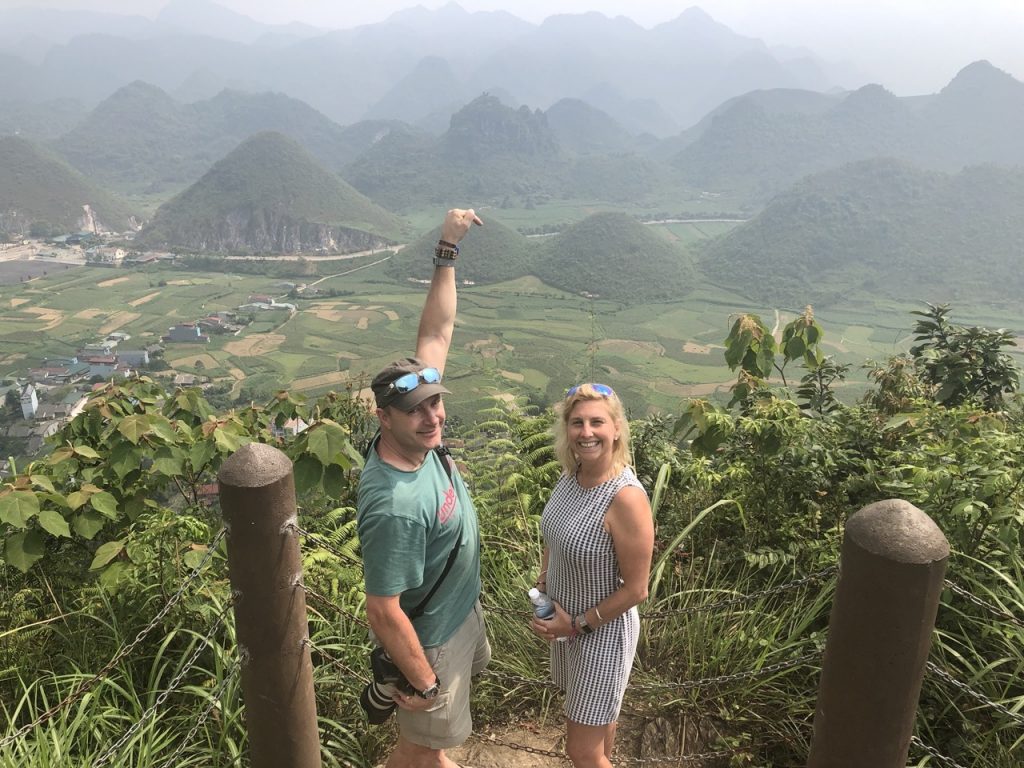
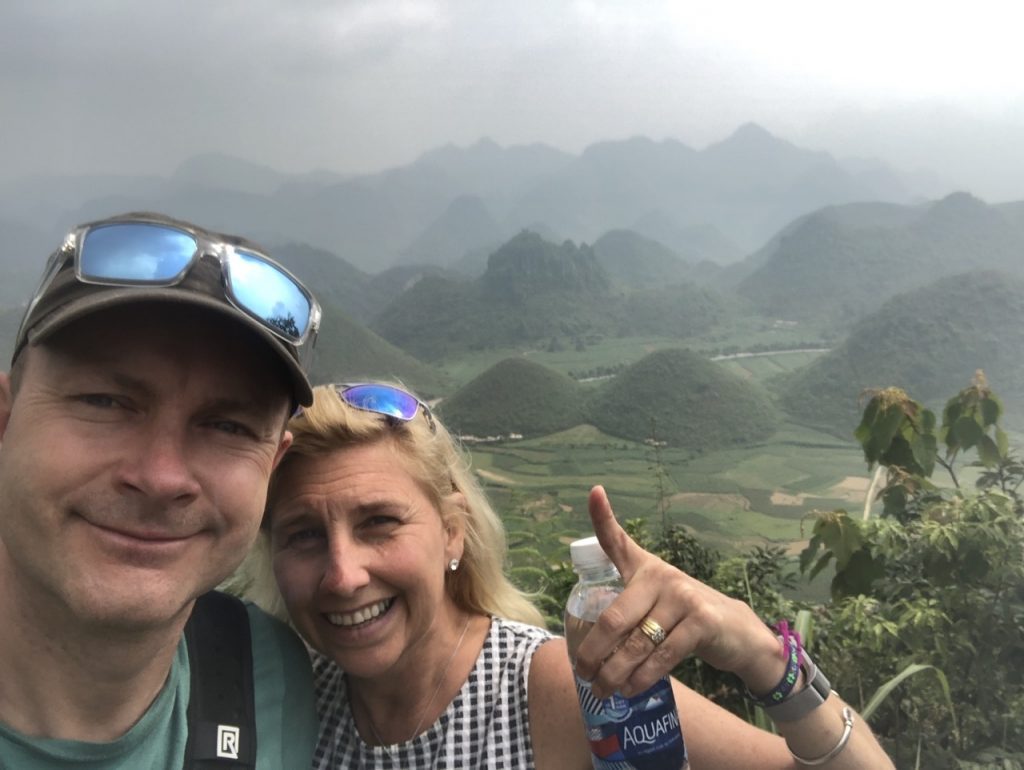
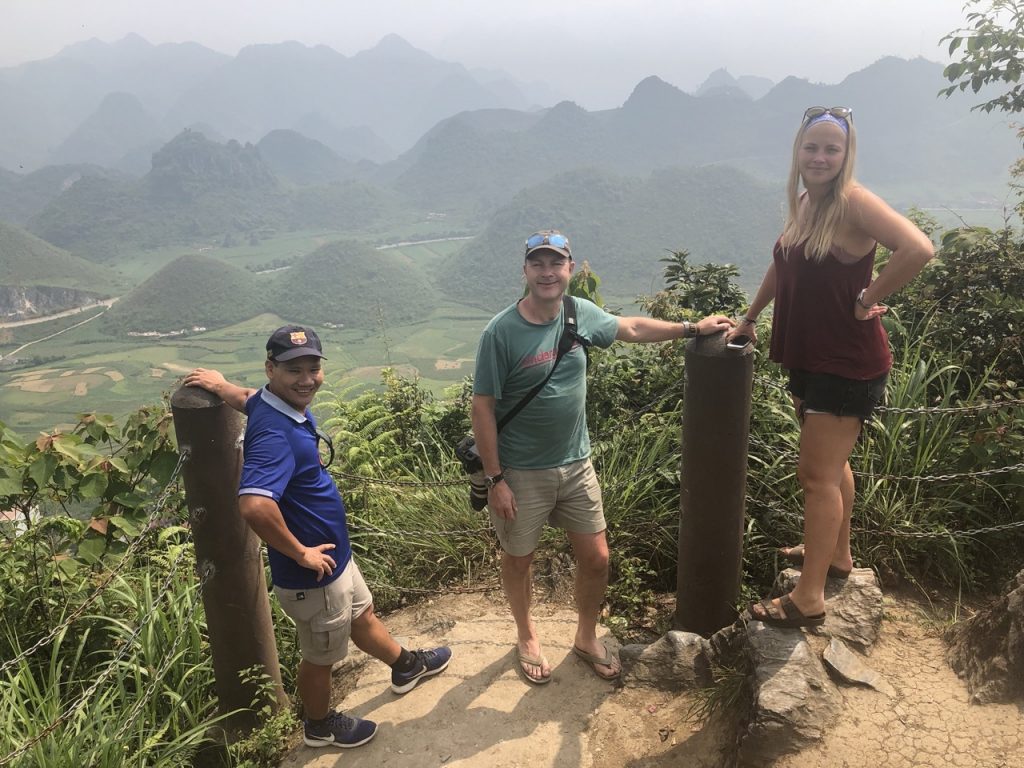
The Tham Ma Pass is an iconic s-shaped mountain pass in the mountain region of Ha Giang. It is part of the Dong Van Karst Plateau Geopark and one of the most impressive mountain passes in Vietnam. The mountain pass is about 5 km long at an altitude of 1500 meters and has a sharp zigzagging road. The pass is located 10 km from Yen Minh between the villages of Lung Thau and Van Chai. Along this pass there are many interesting geosites, of impressive cliffs and rocks. The Hmong hill tribe, an ethnic minority, have completely adapted to the area. Because it is a rocky area, they know how to optimally use the small amount of soil for agriculture, such as corn, beans and other crops. The stones are used for certain tools and for the houses and they only have livestock suitable for this climate. There is a good vantage point at the top of the pass where you can take photos of the winding s-shaped road up. Children of ethnic minorities often walk around here with flowers….I wasn’t sure that they were entirely happy though…very beautiful.
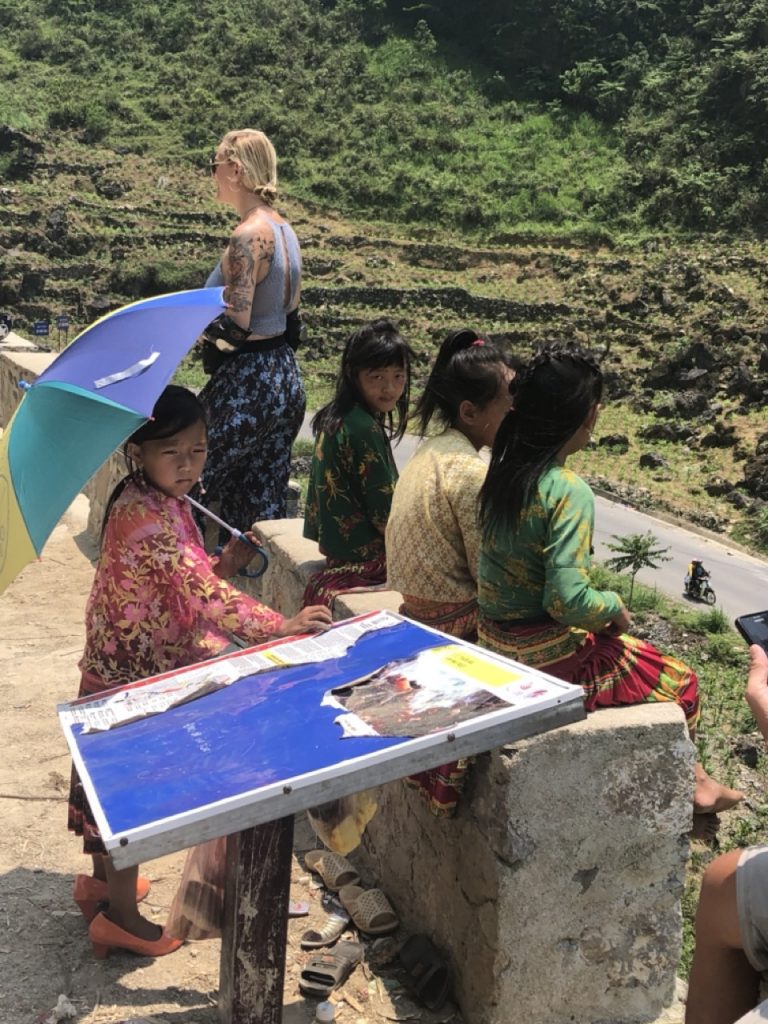
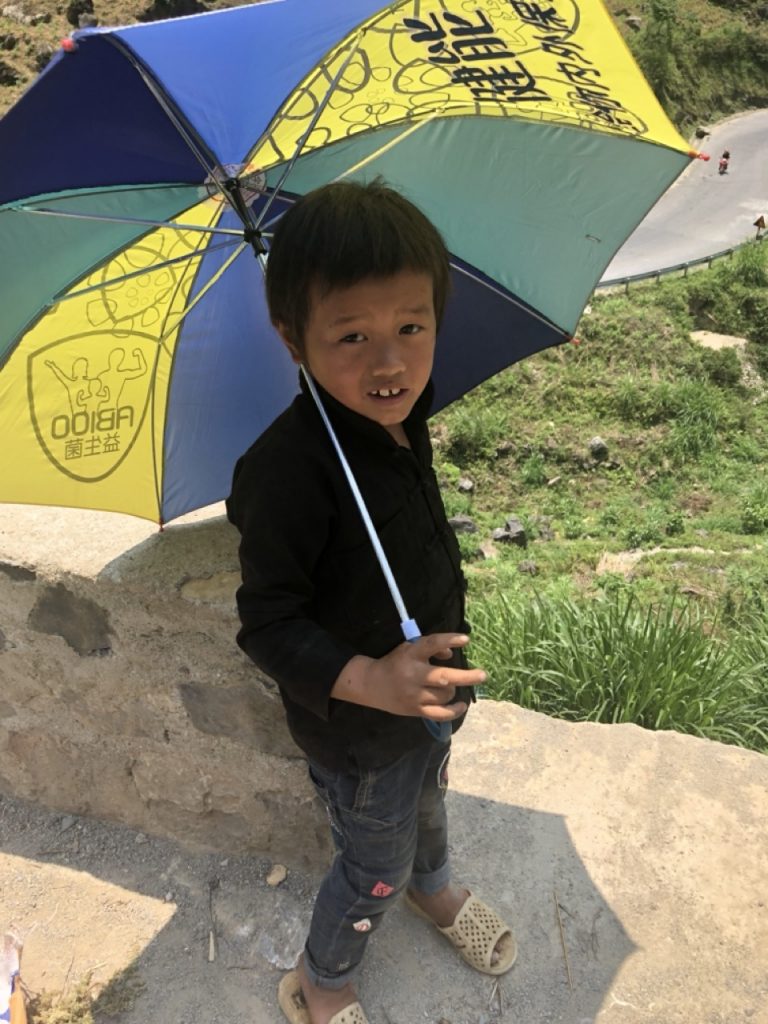
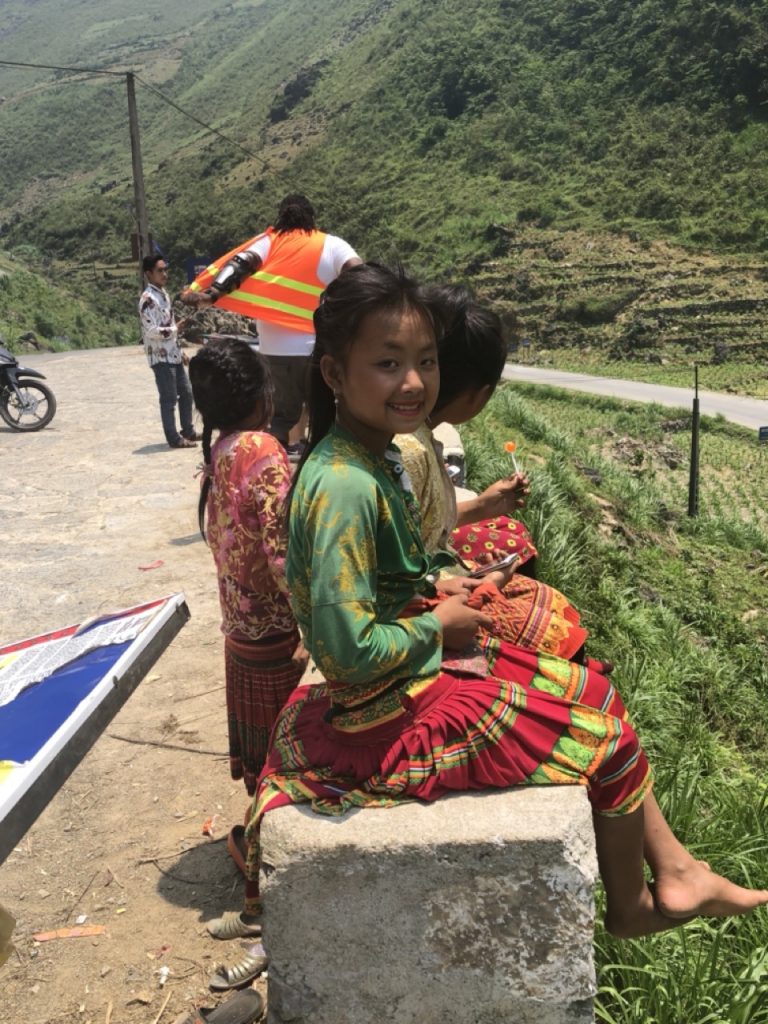
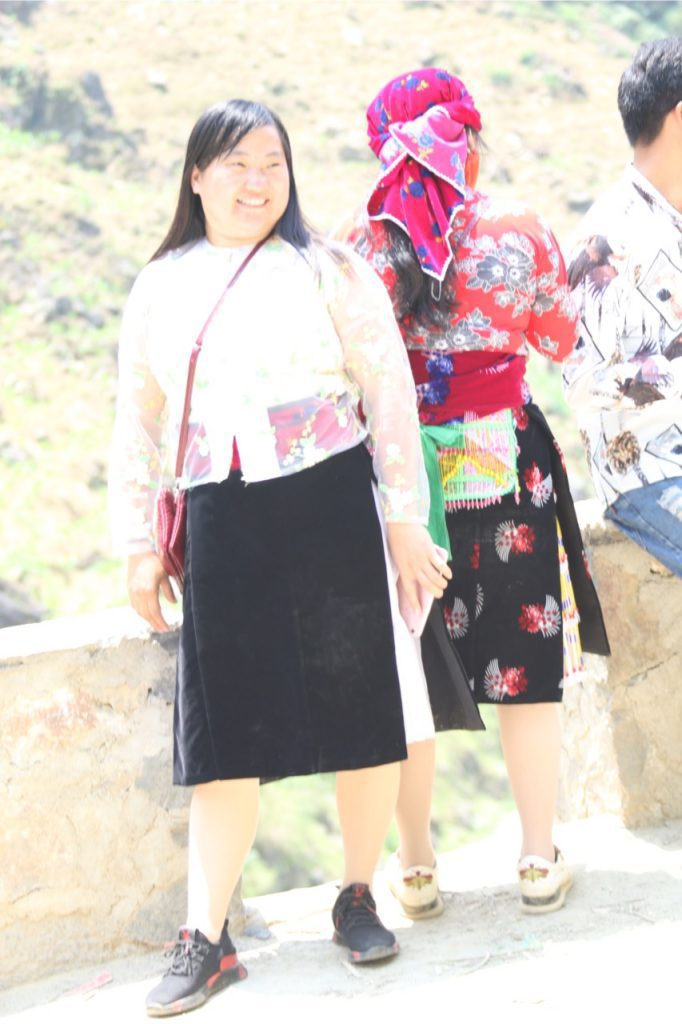
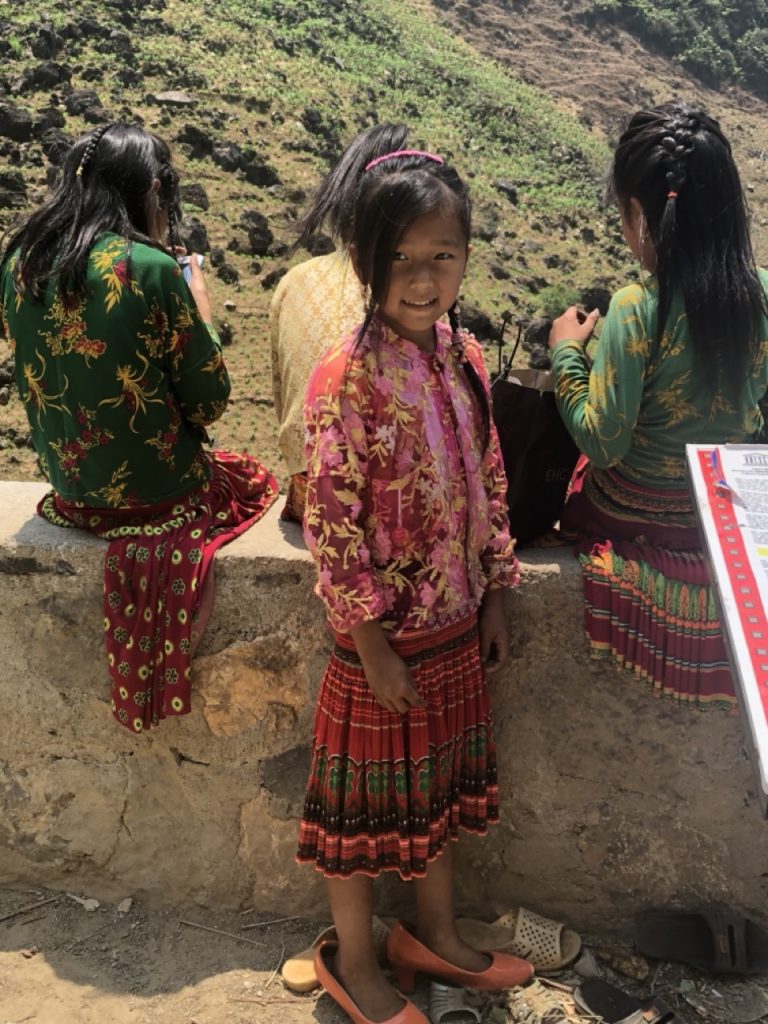
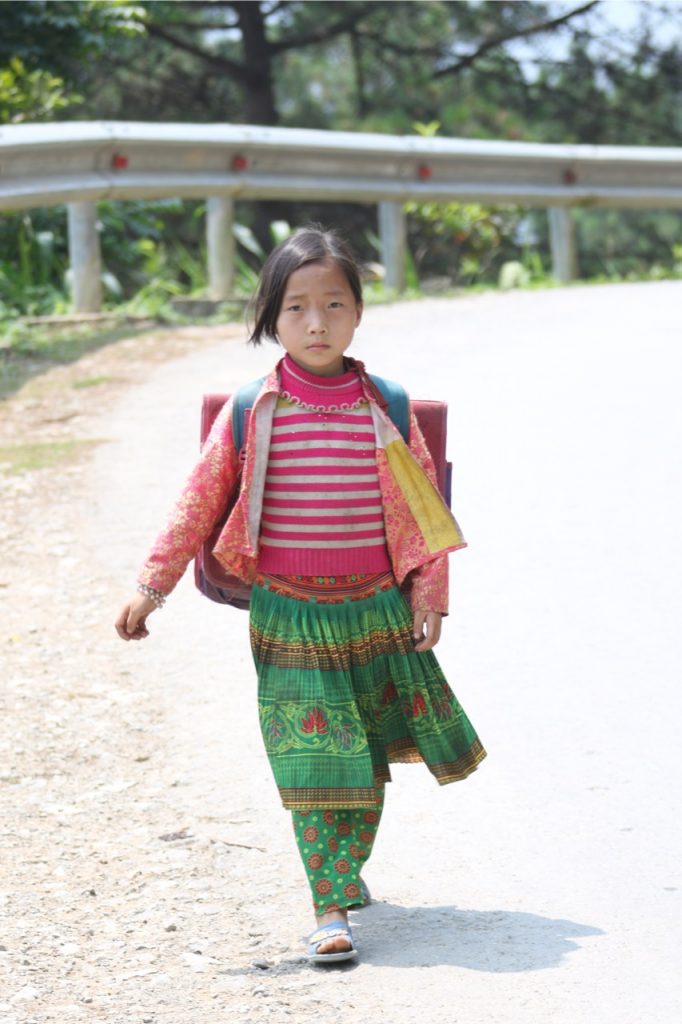
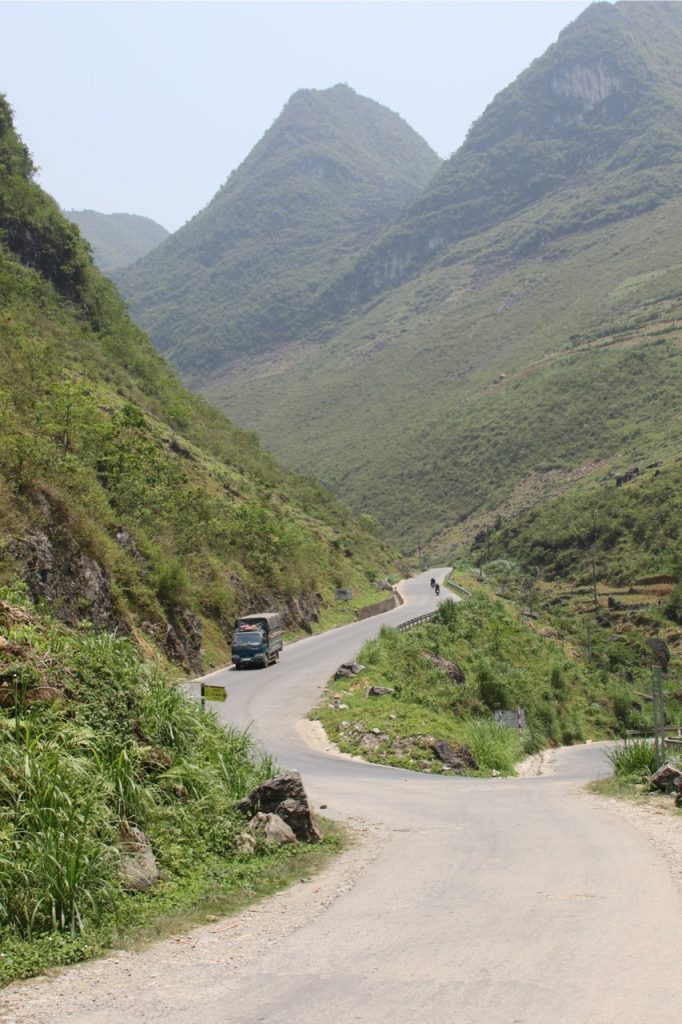
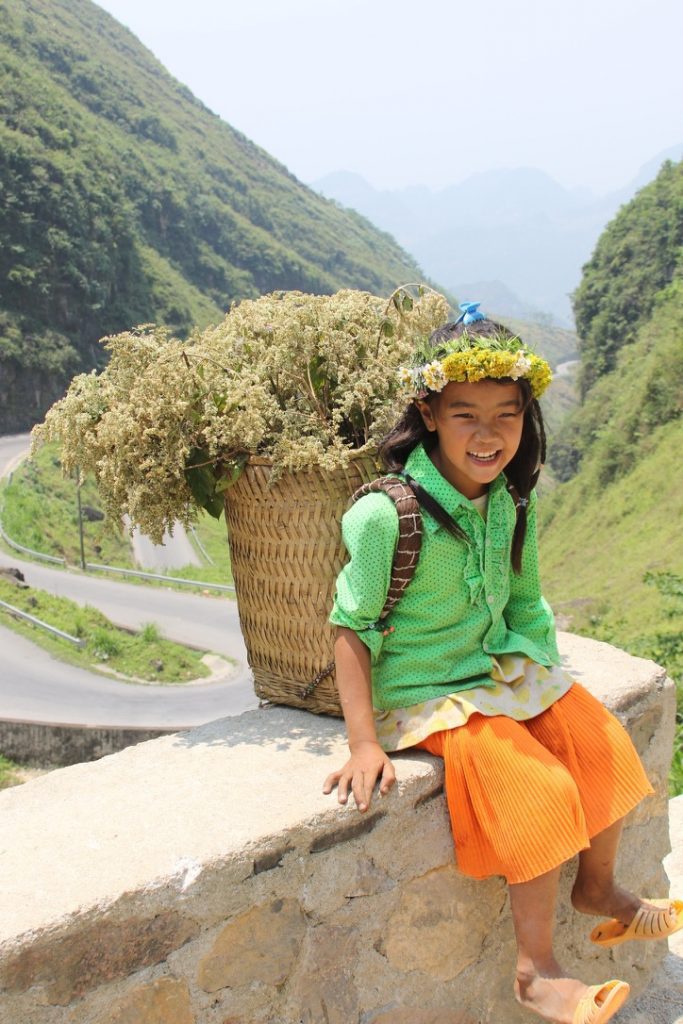
Interesting fact: The Tham Ma Pass is used by the locals to test their horses. They take their horses up the mountain pass with heavy loads to measure how strong their horses are. If a horse reaches the top of the stride and looks good, they will keep that horse. Otherwise, the horse is slaughtered for Thang Co which a special dish that you can find at every farmer’s market in Ha Giang!!
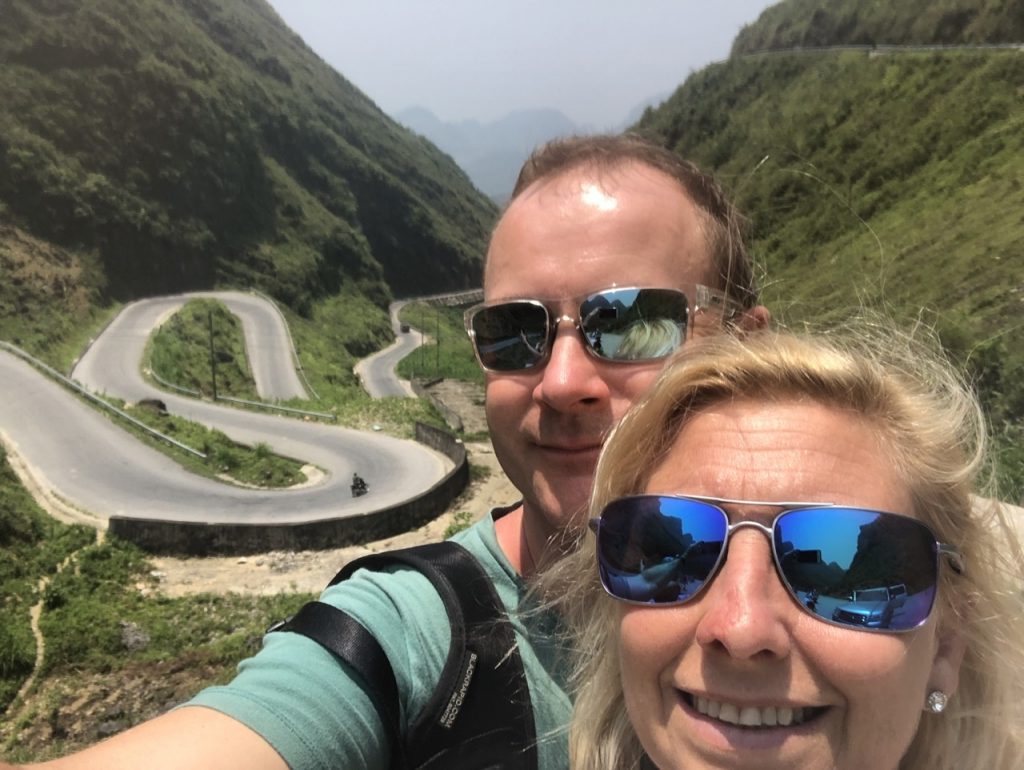
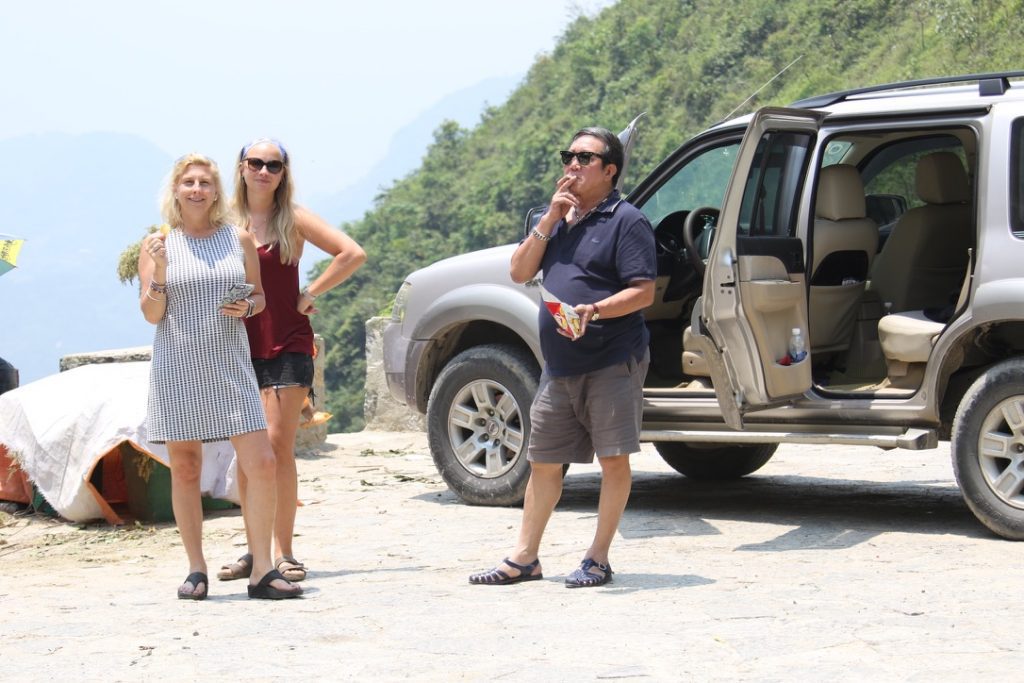
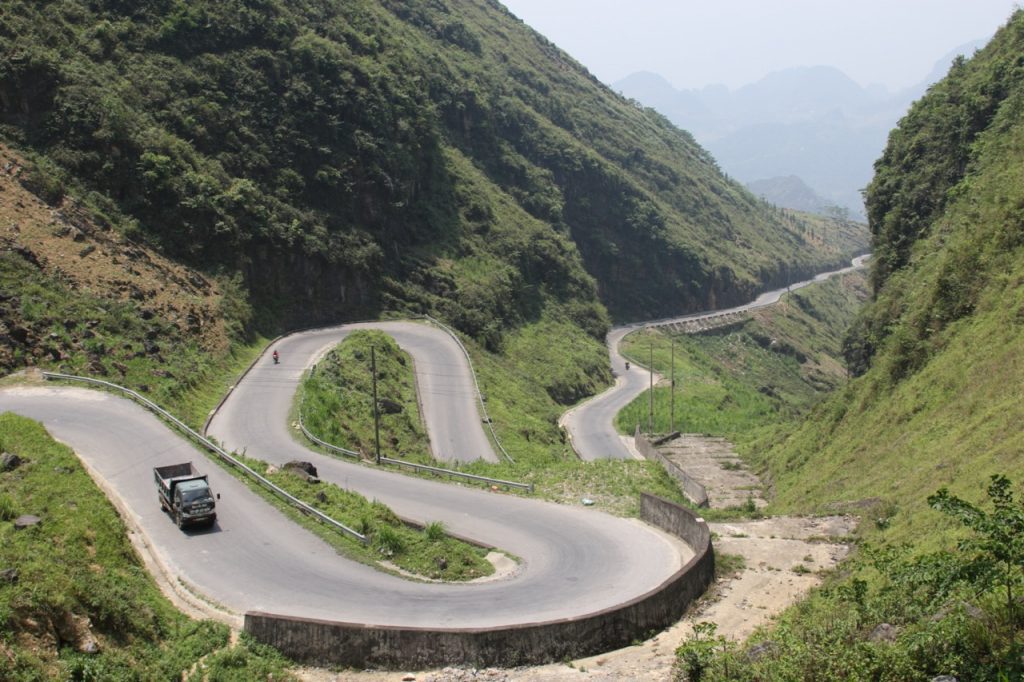
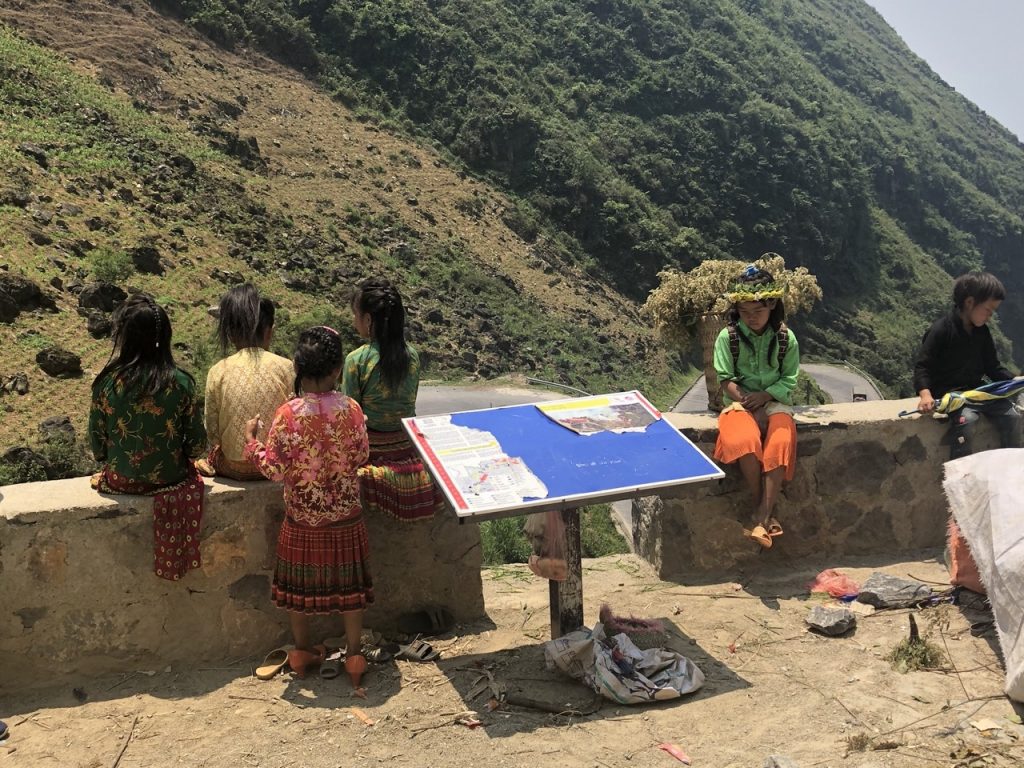
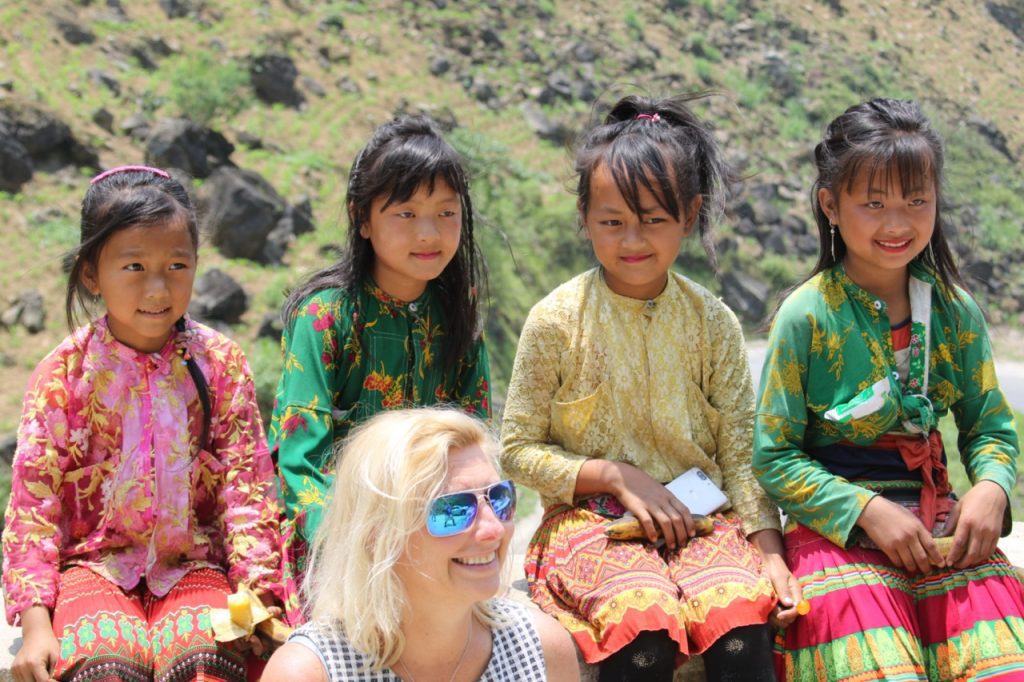
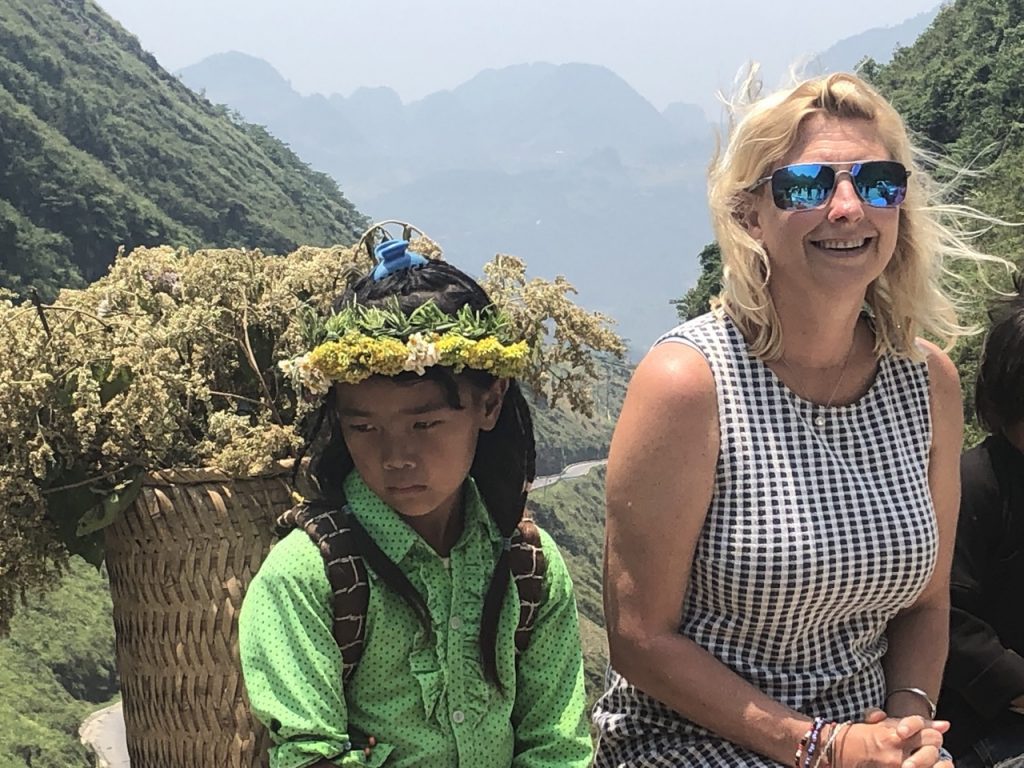
After crossing the pass we stopped off at a place to eat which had lovely views and some handy advice on a notice board on how to treat tourists!
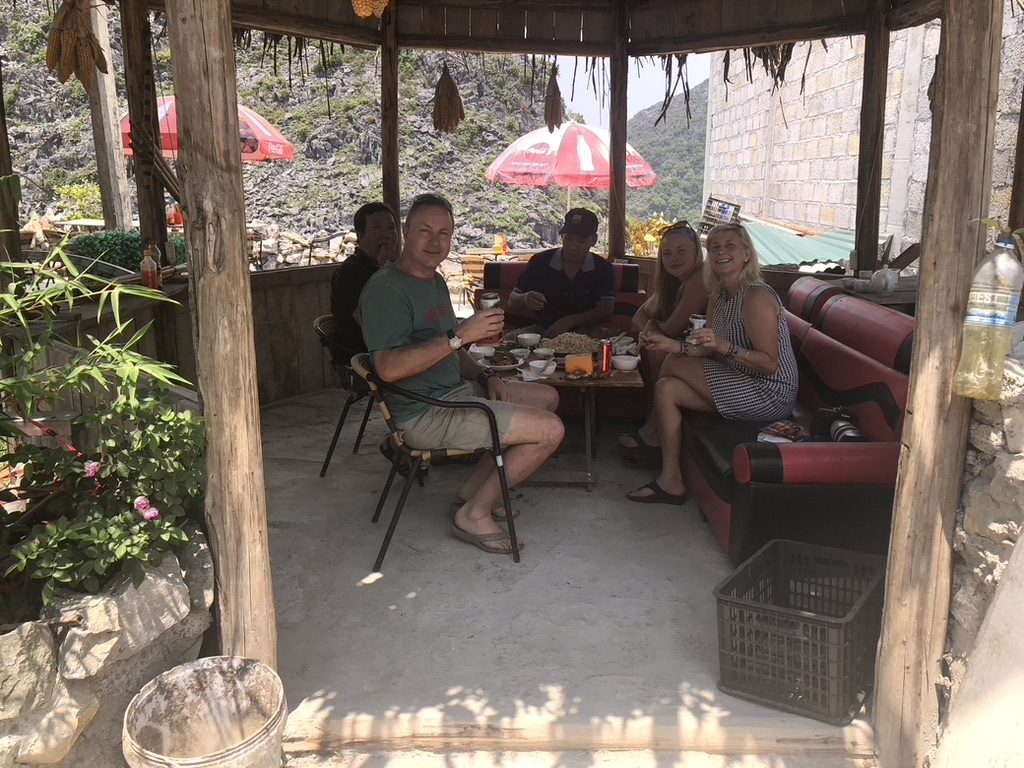
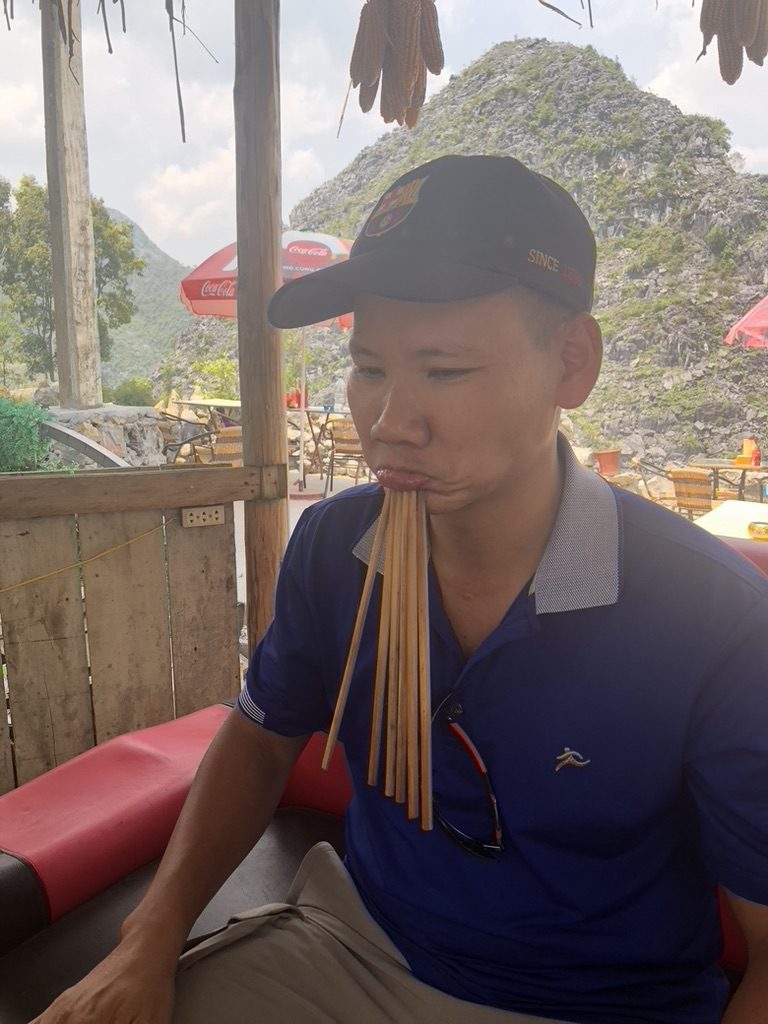
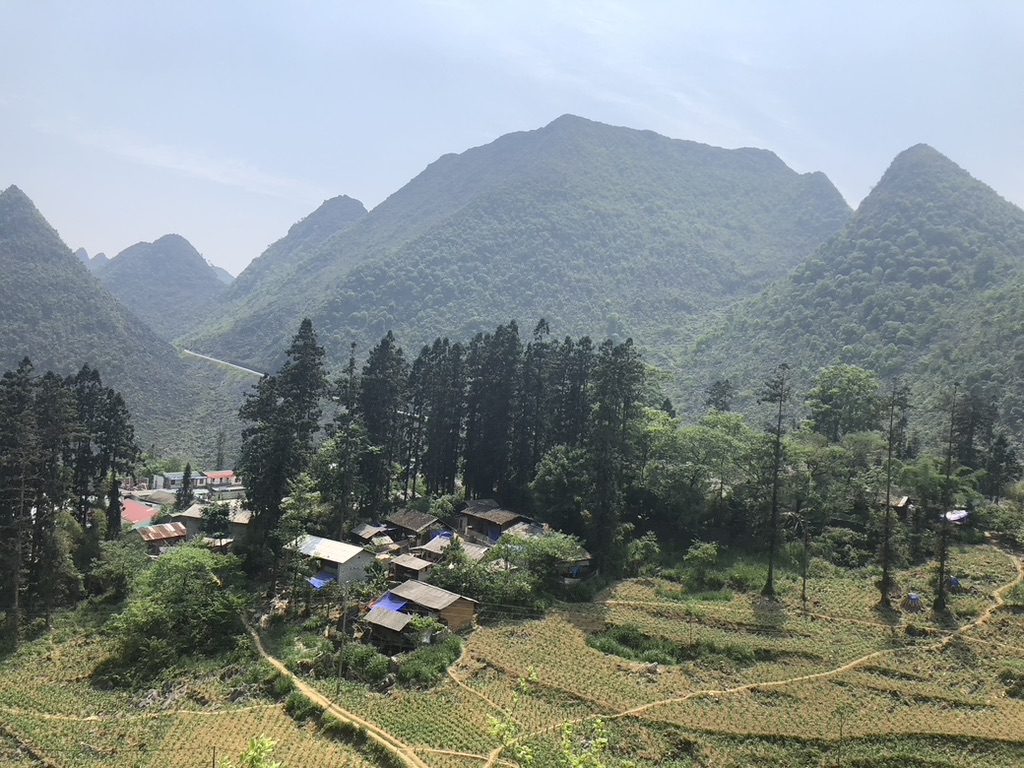
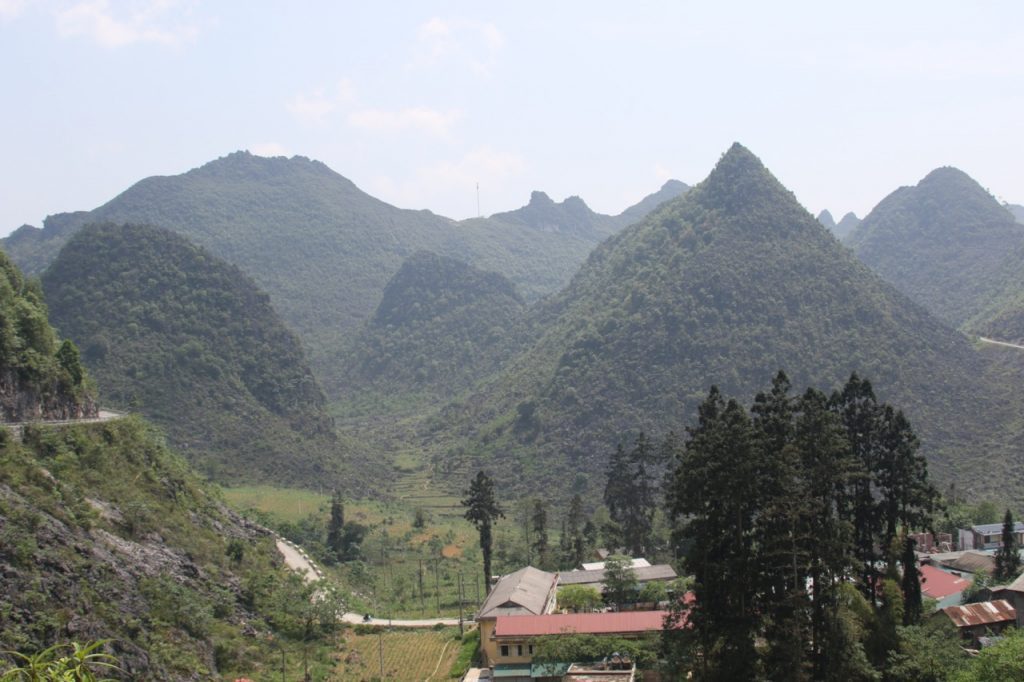
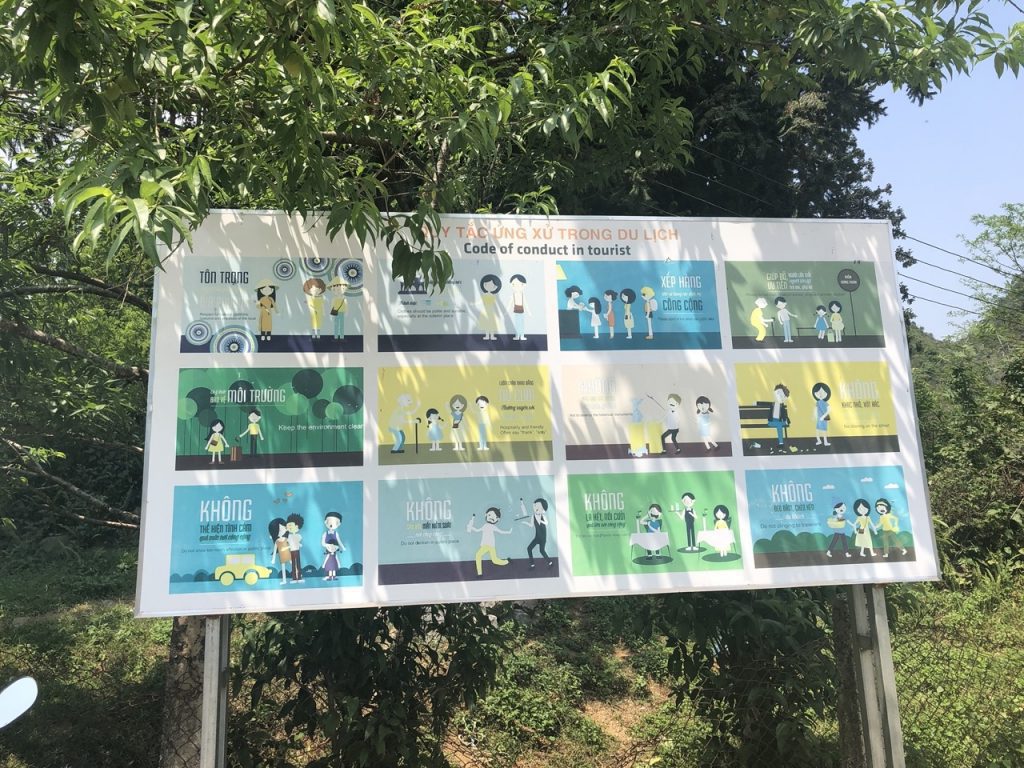
Our driver entertained us with some strange stomach movements!
Our next stop was Vuong Palace. Vuong Palace is the ancient villa of Vuong Chinh Duc who was the only king recognised by the Ha Giang ethnic people as king of the Hmong People in the beginning of the 20th century and who controlled Quan Ba, Yen Minh, Meo Vac and Dong Van districts….He ruled the area and got rich by trading opium across the border. It took ten years and 150 billion VND to build it, and some parts are made with po-mu, a valuable type of wood. It built in 1919 and completed in 1928. One of the hallmarks of the mansion is the fine art of sculpture, many carved details, cleverly carry the symbol of prosperity. There are some shops outside selling grains and snacks.
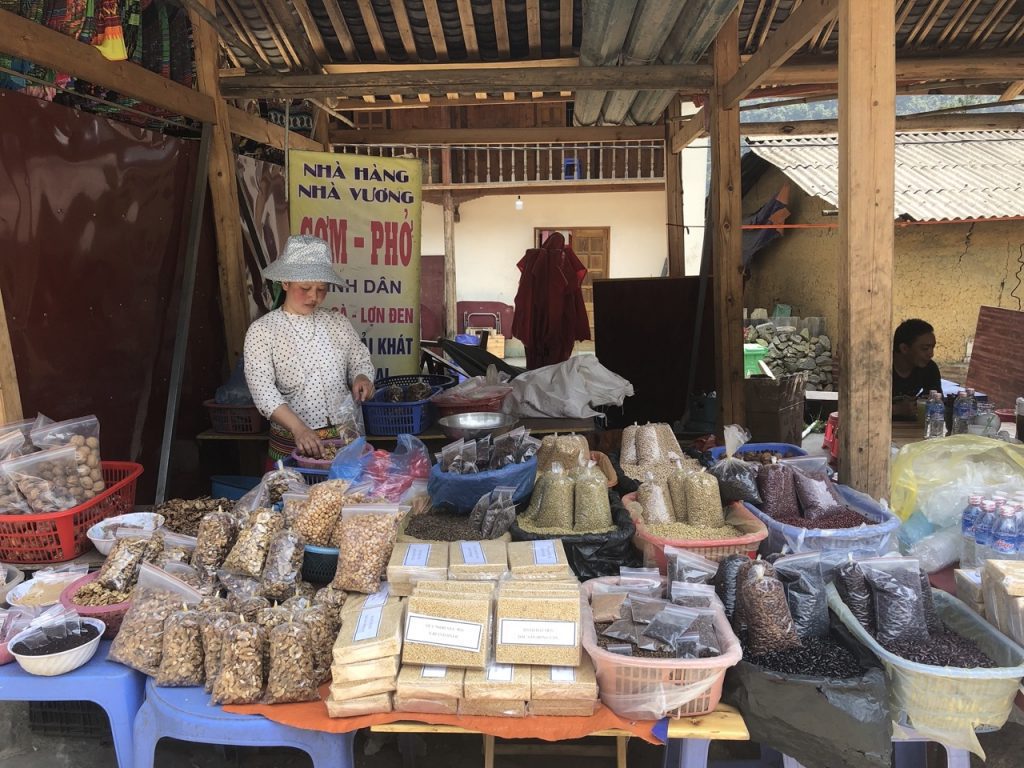
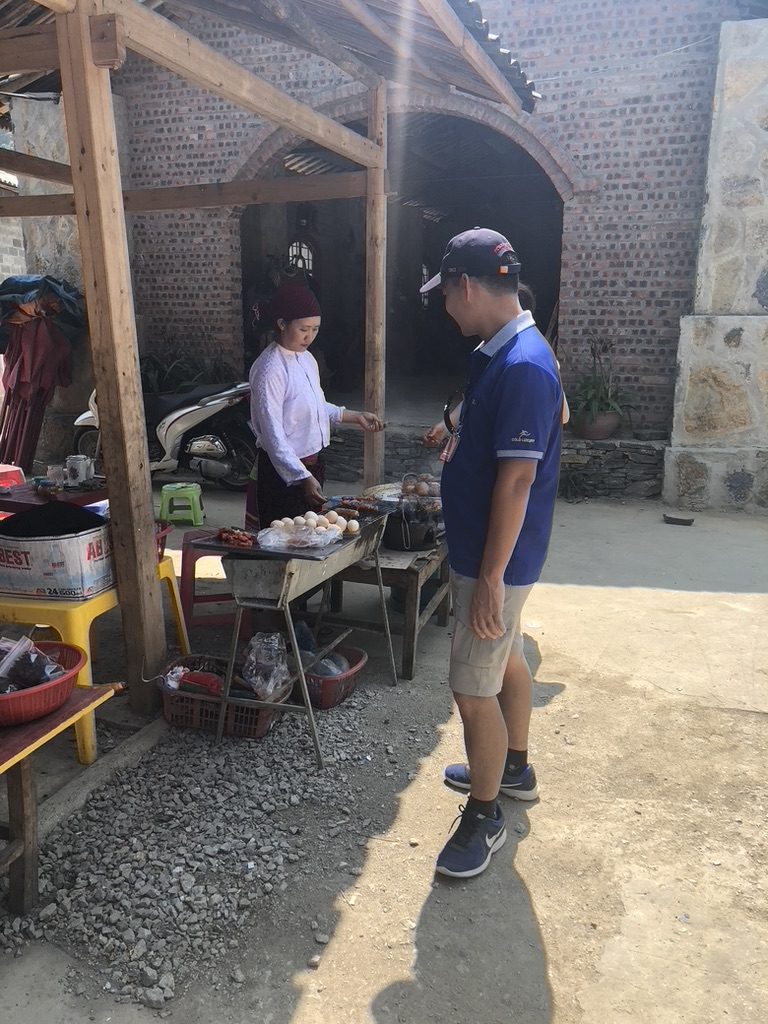
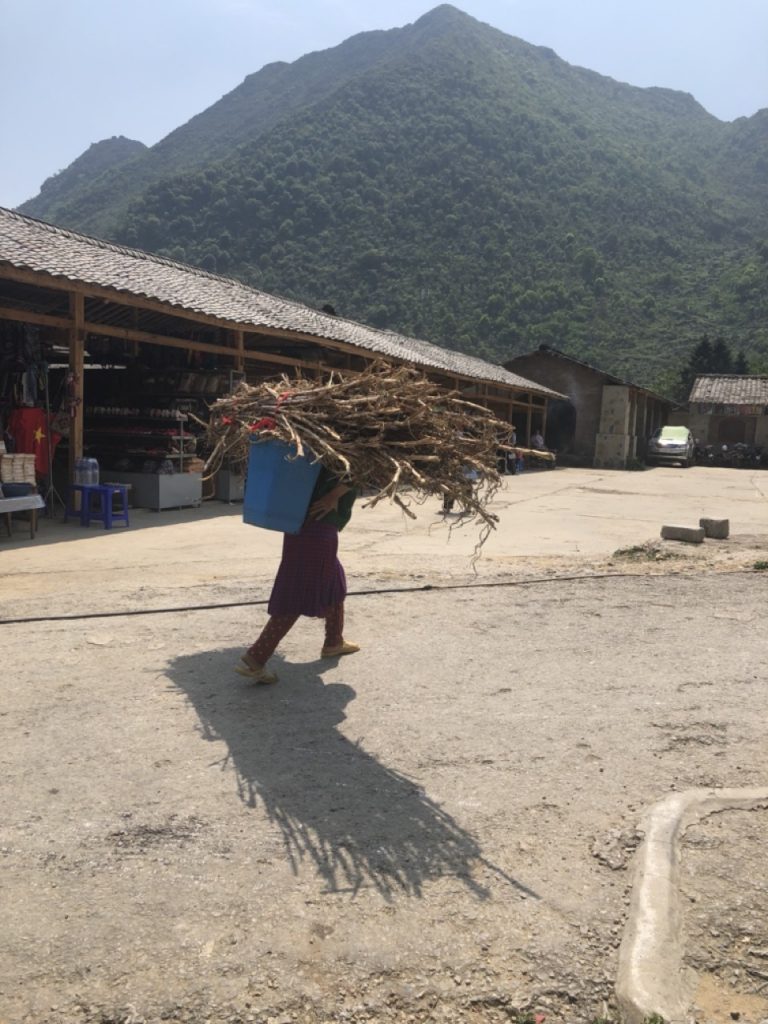
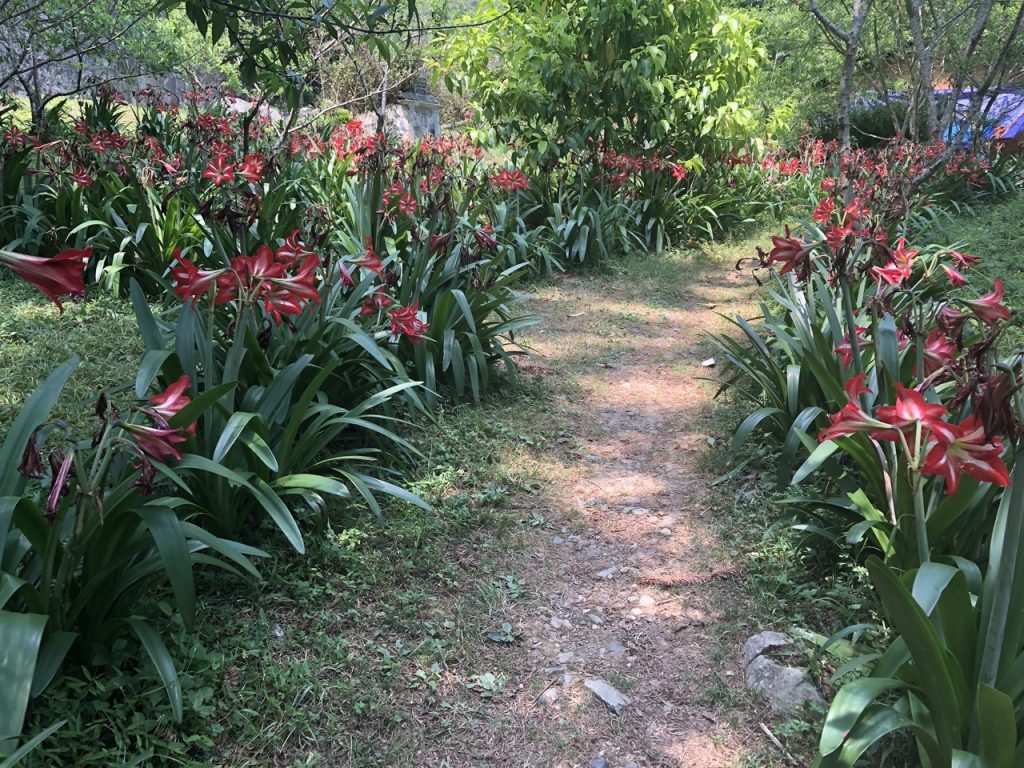
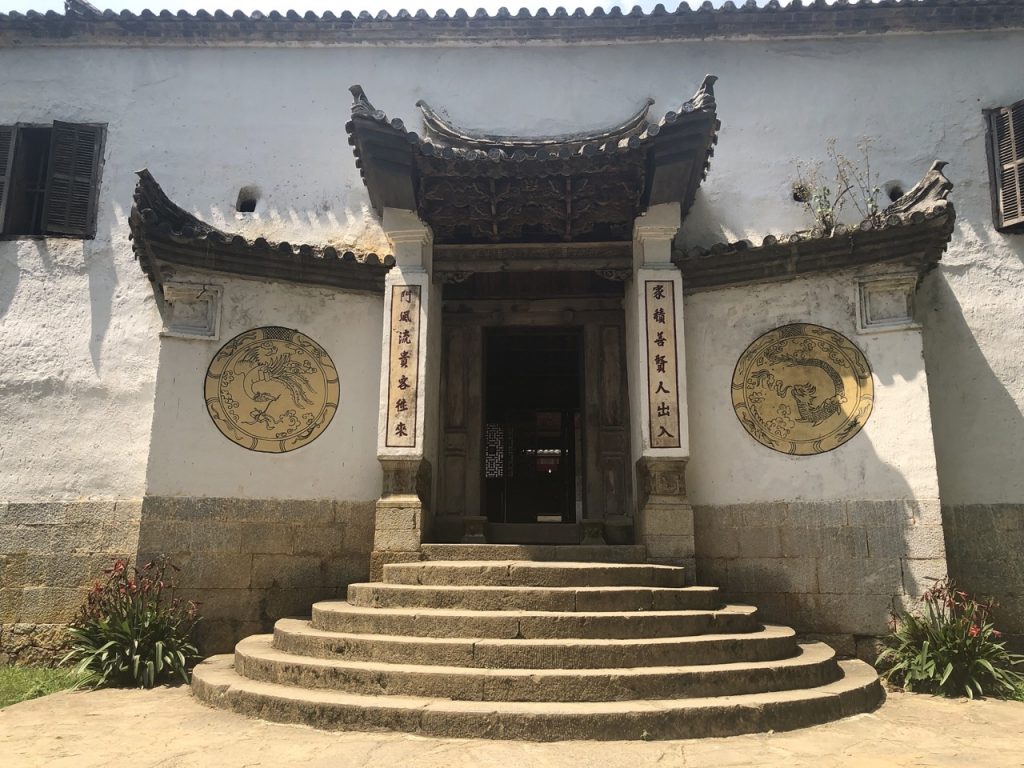
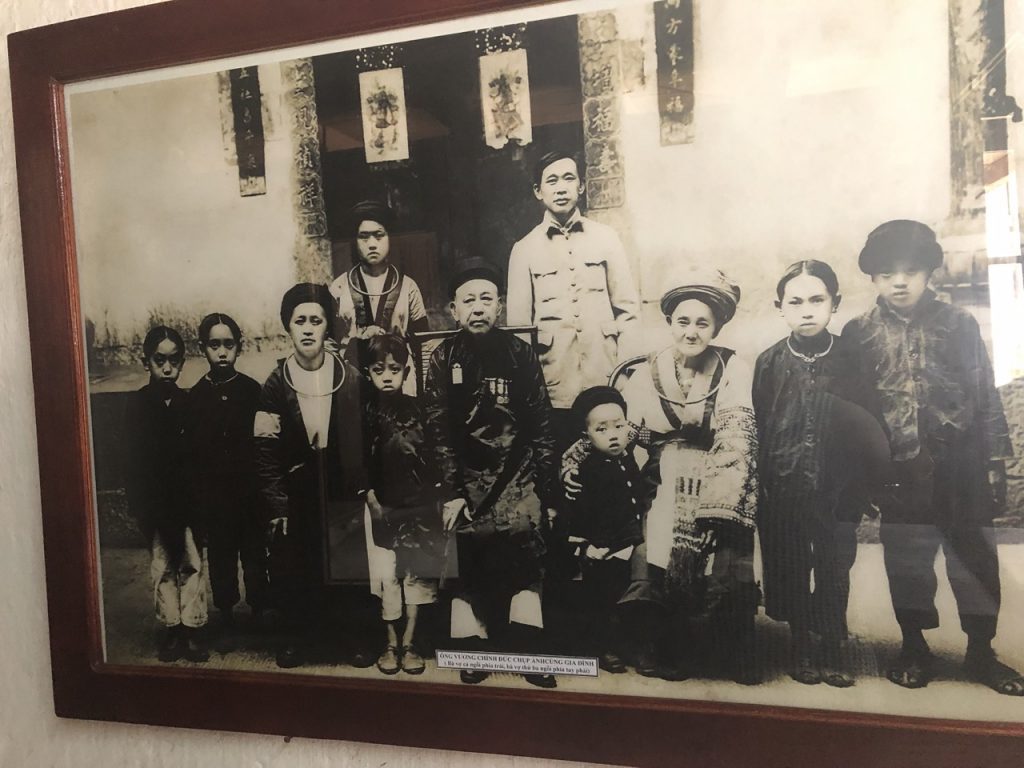
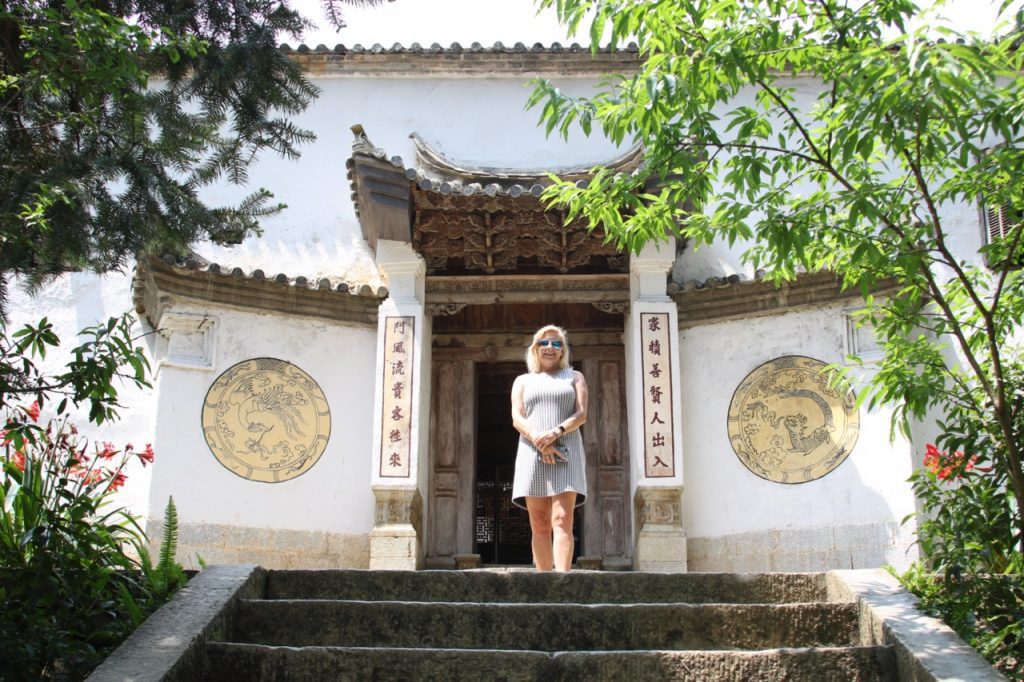
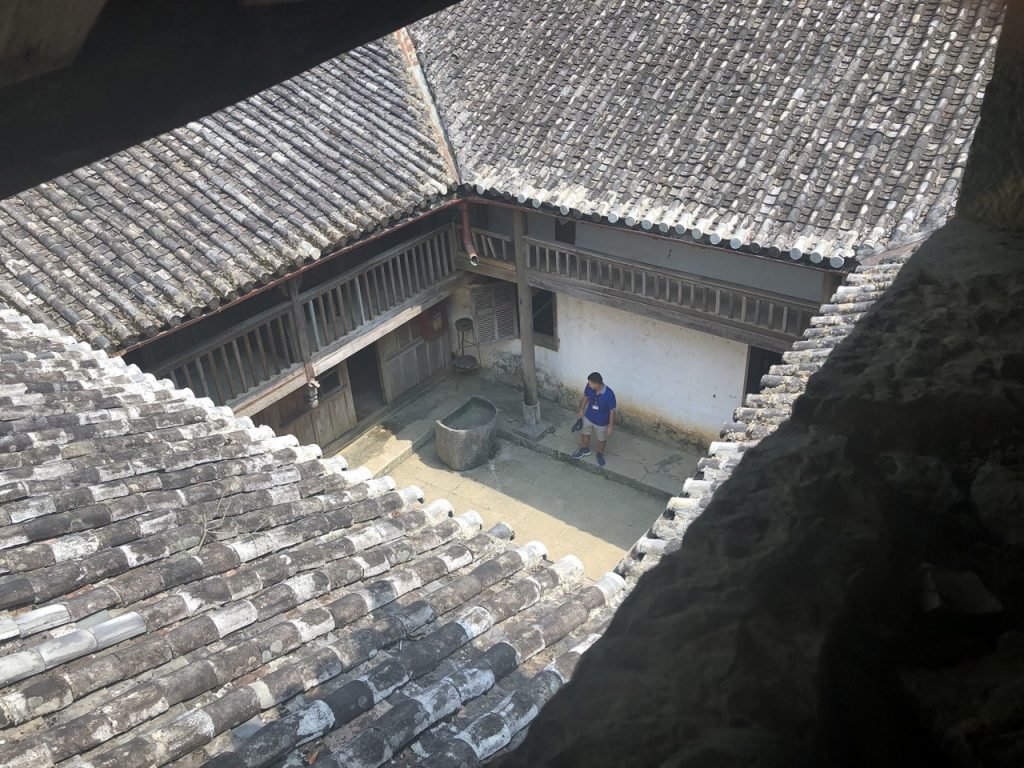
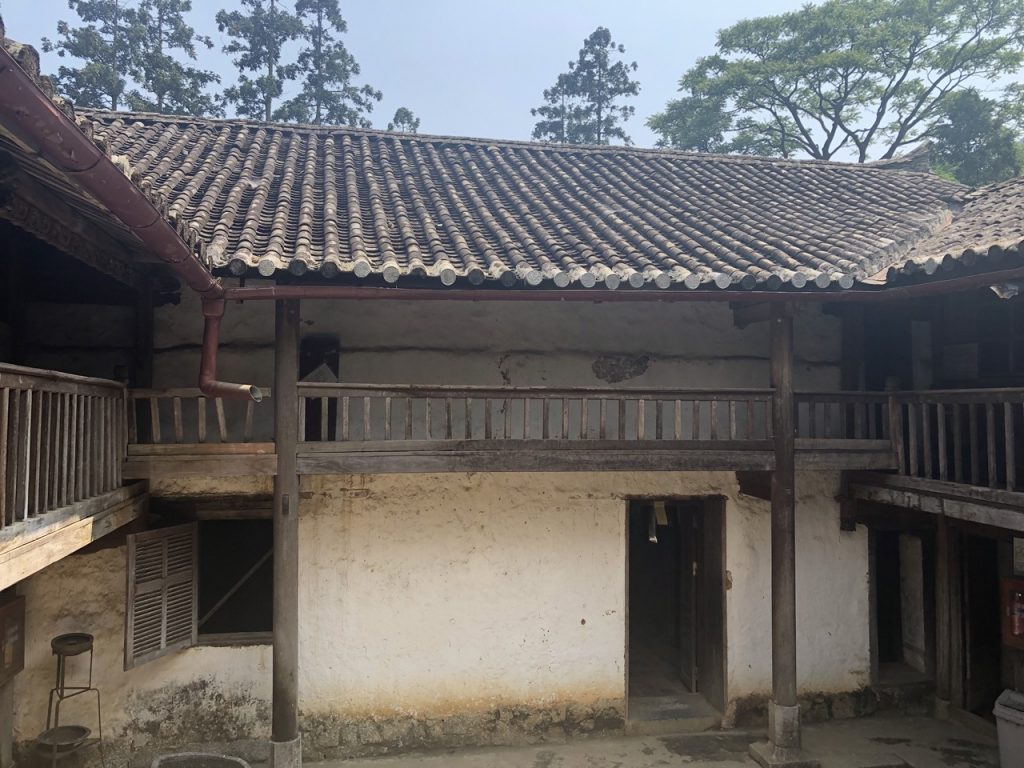
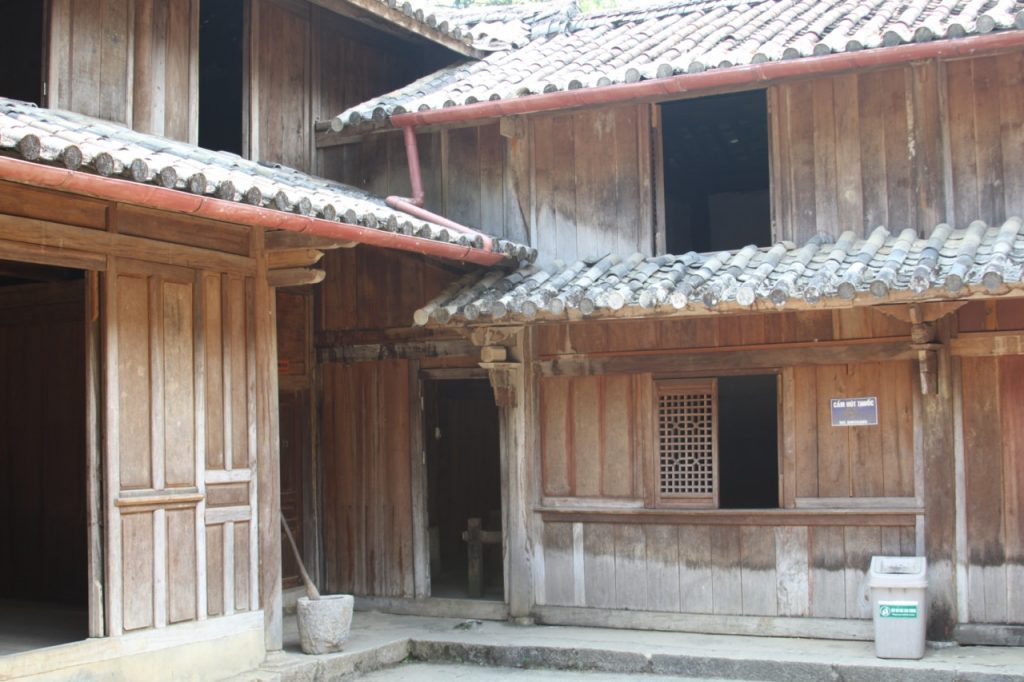
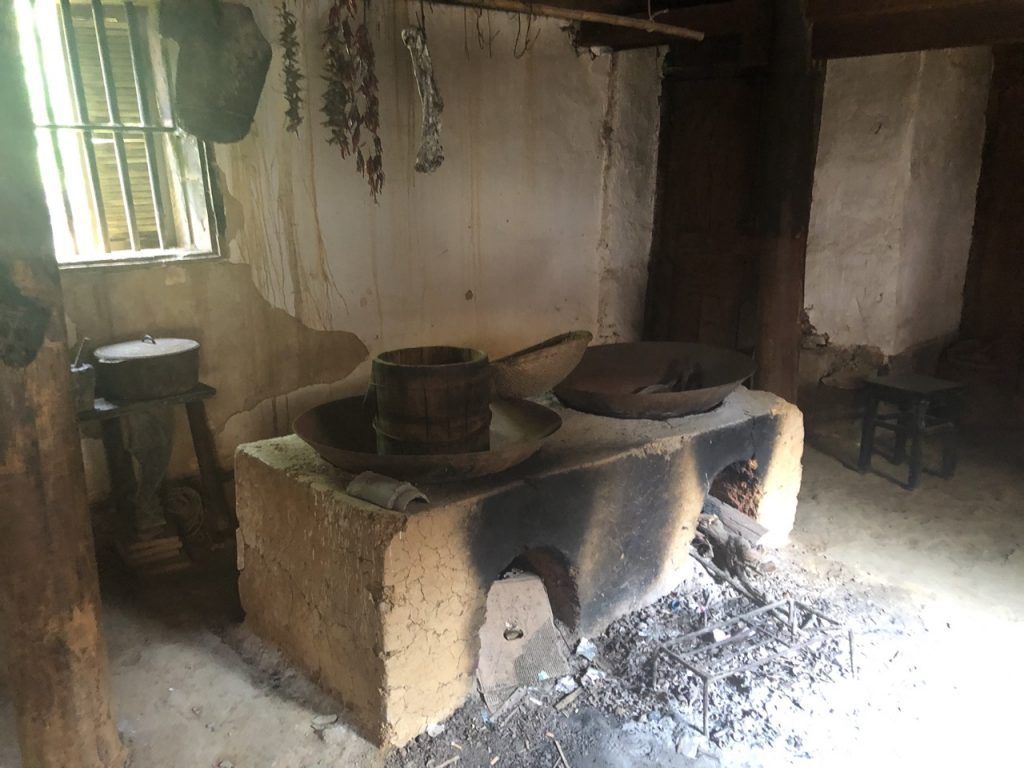
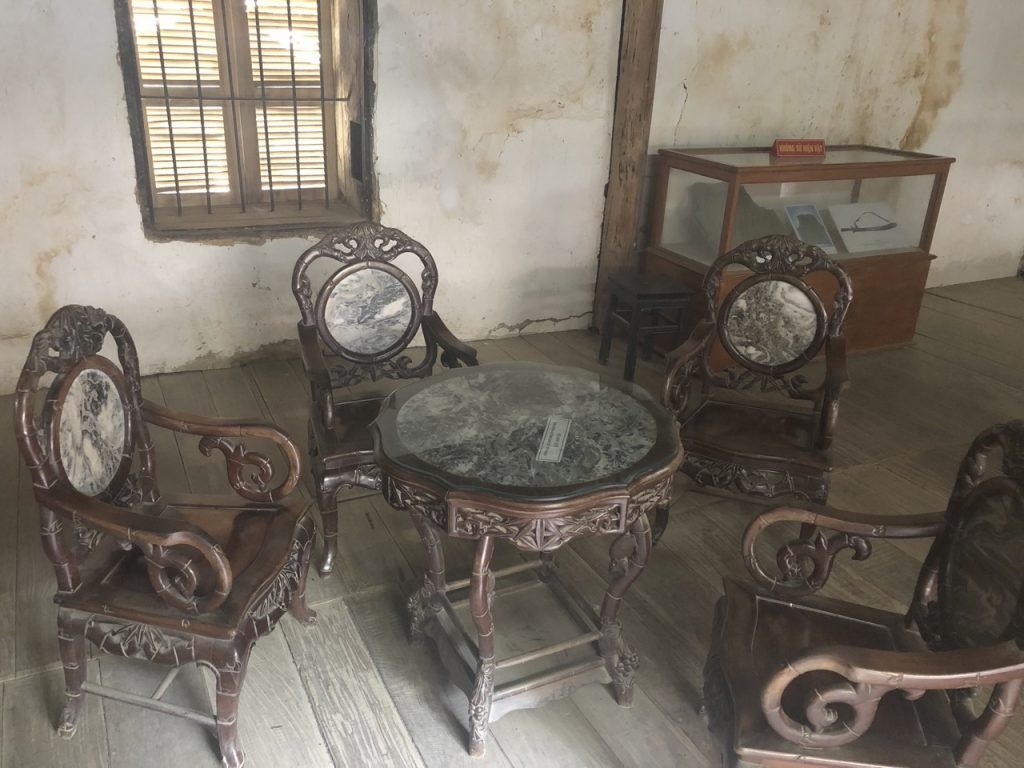
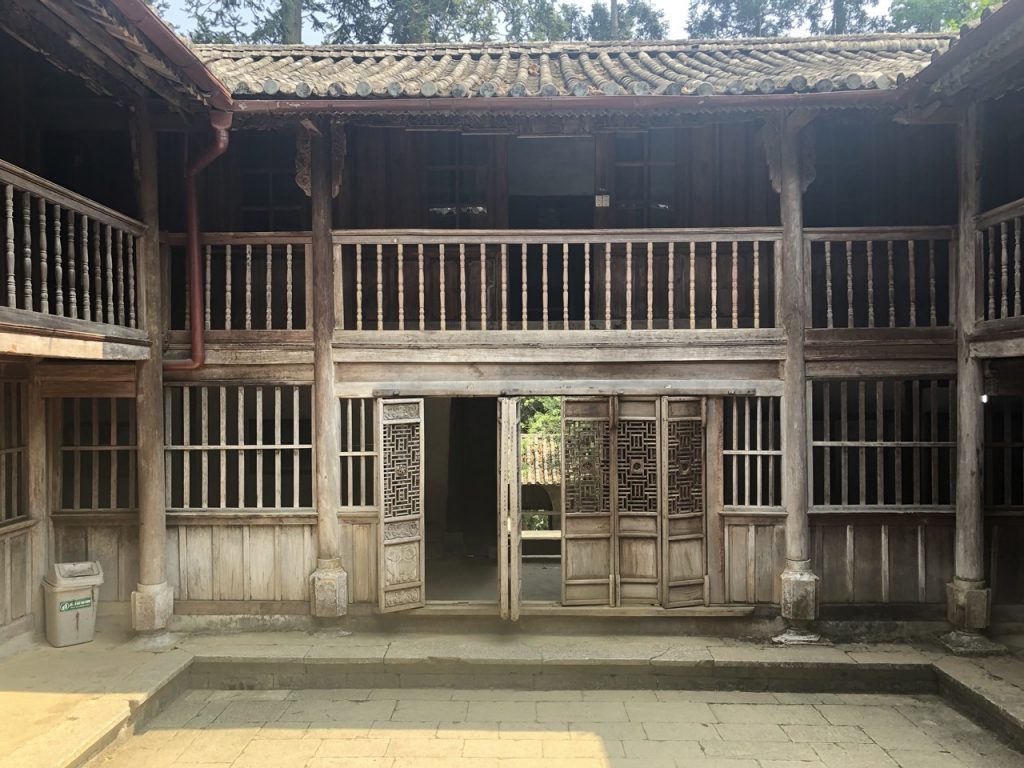
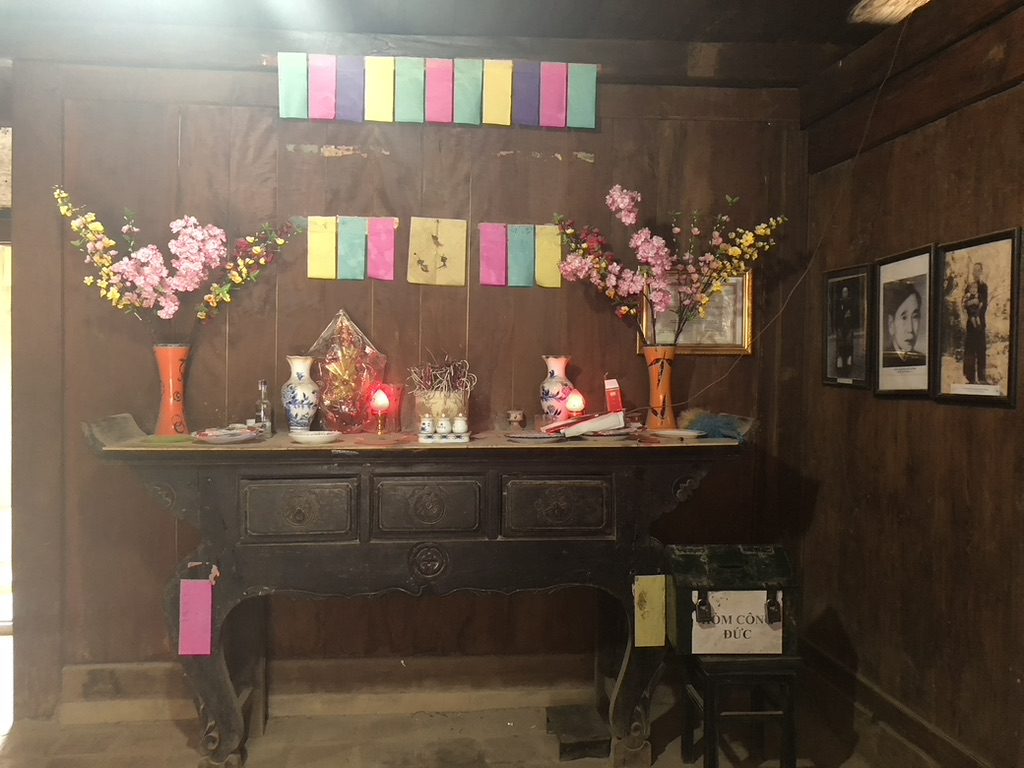
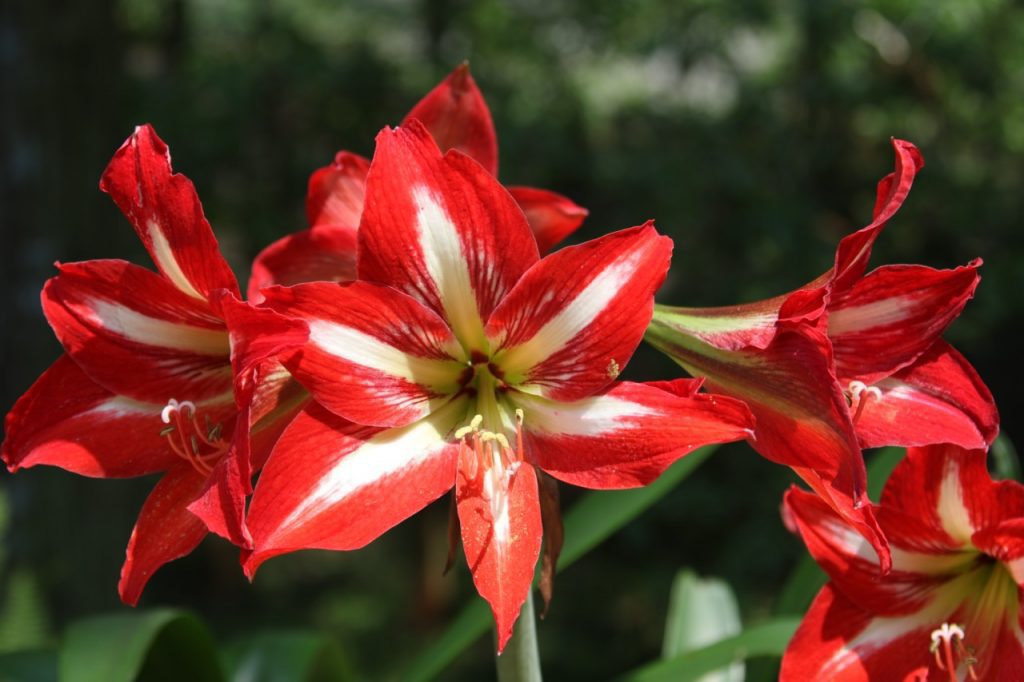
We continued through yet more beautiful scenery … and stopped off to take more photos – breathtaking. Ma Pi Leng is considered one of the top 4 passes in Vietnam which are beautiful but also dangerous to travel. According to H’mong language this means “the bridge of a horse’s nose” – which describes the shape of it. Some people compare it to The Great Wall of Vietnam. The pass’s length is only about 20Km but it is a challenge to drive! Looking down the Tu San Canyon you can see the bright blue Nho Que River (called locally as Sleeping Beauty) from high above. The river originates from Van Nam province, China and it flows all the way to Dong Van and Meo Vac towns in Ha Giang Vietnam.
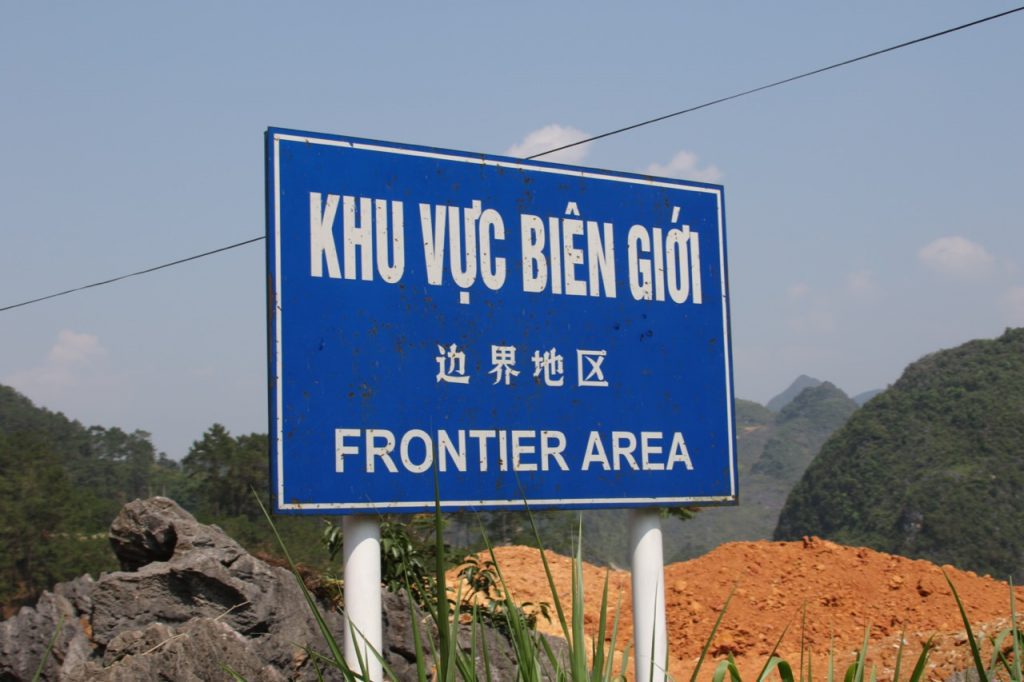
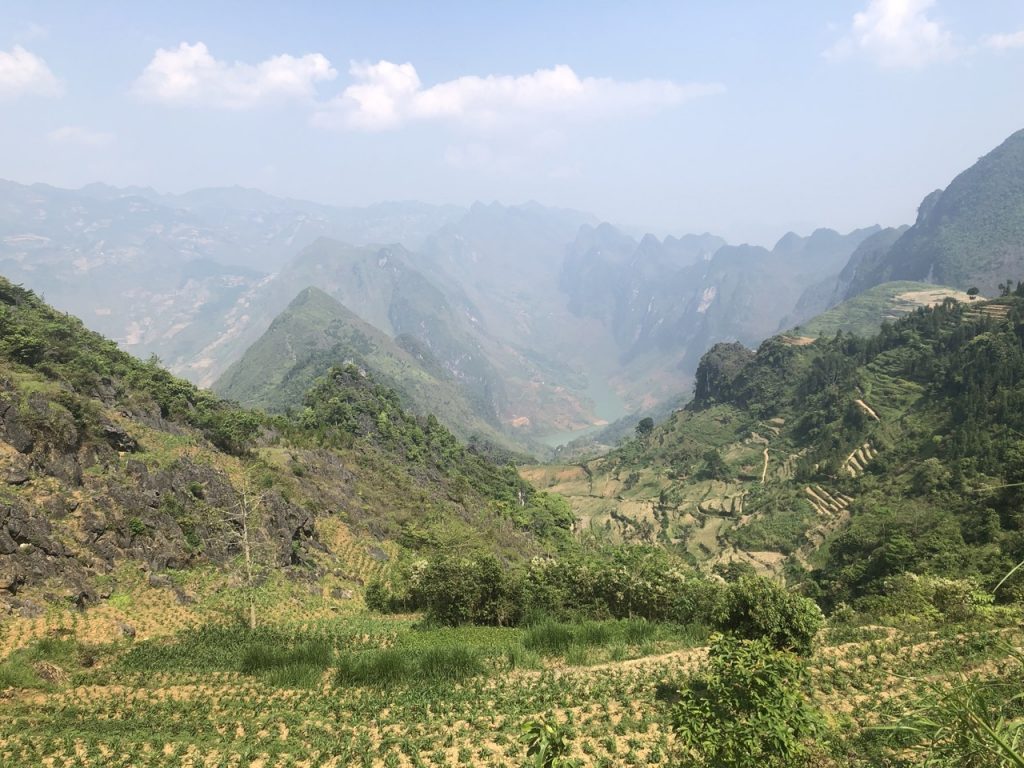
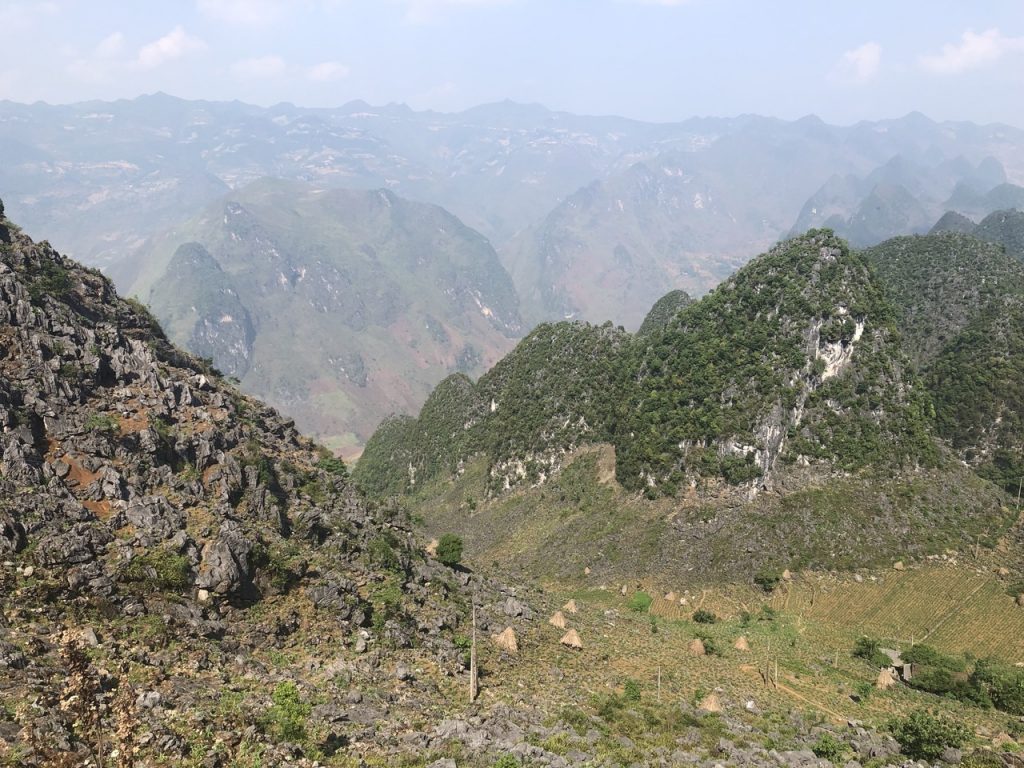
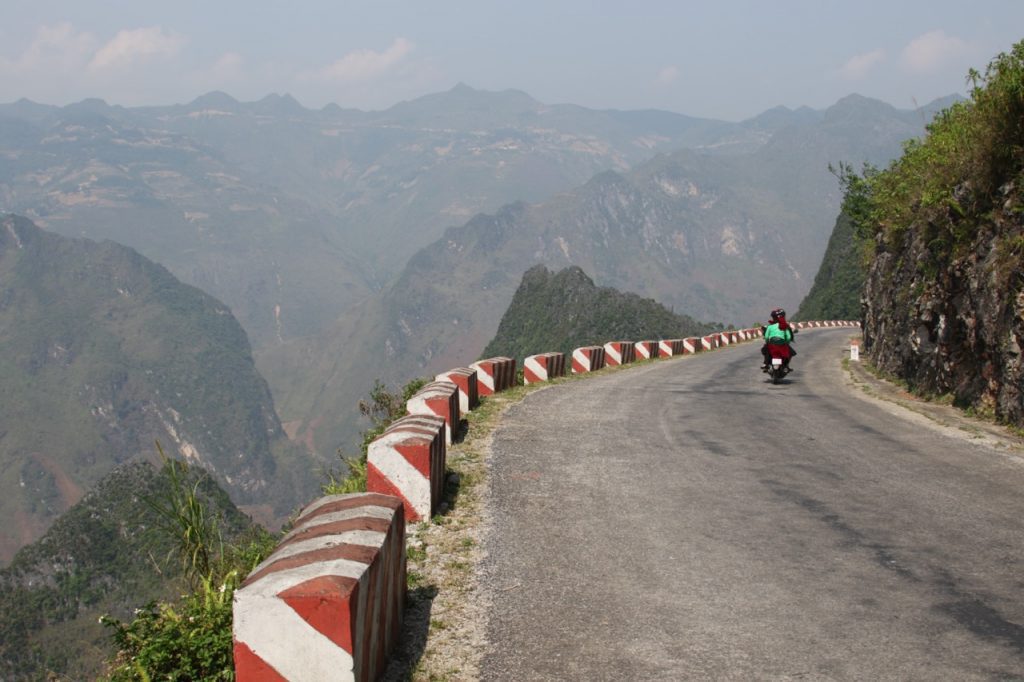
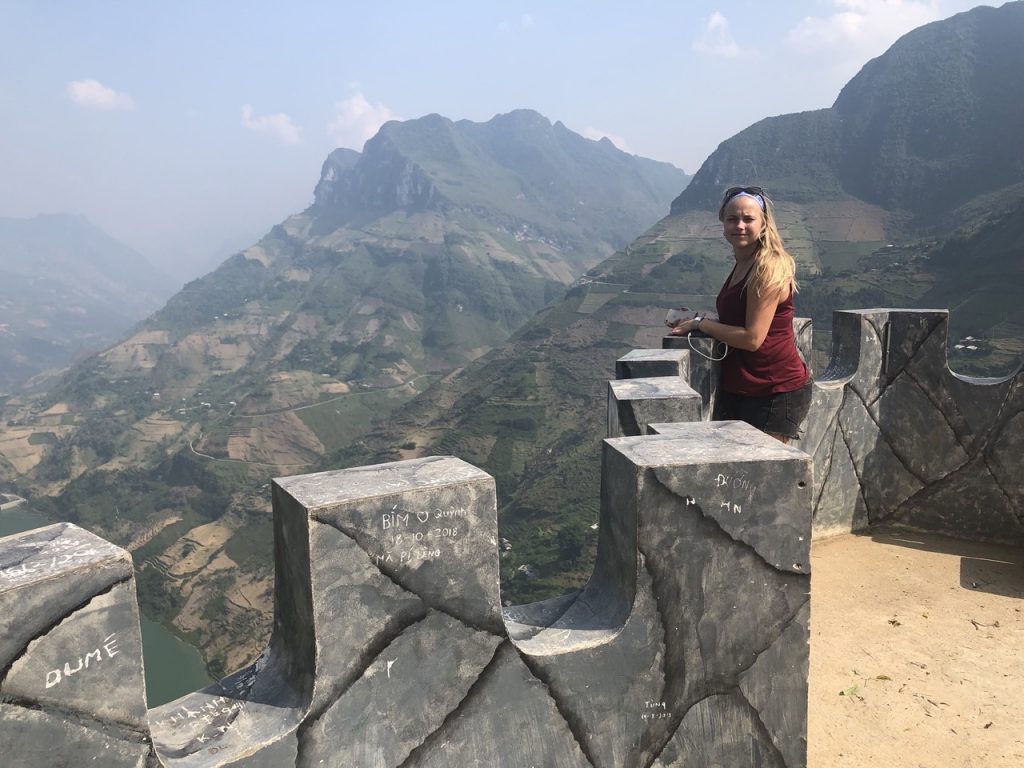
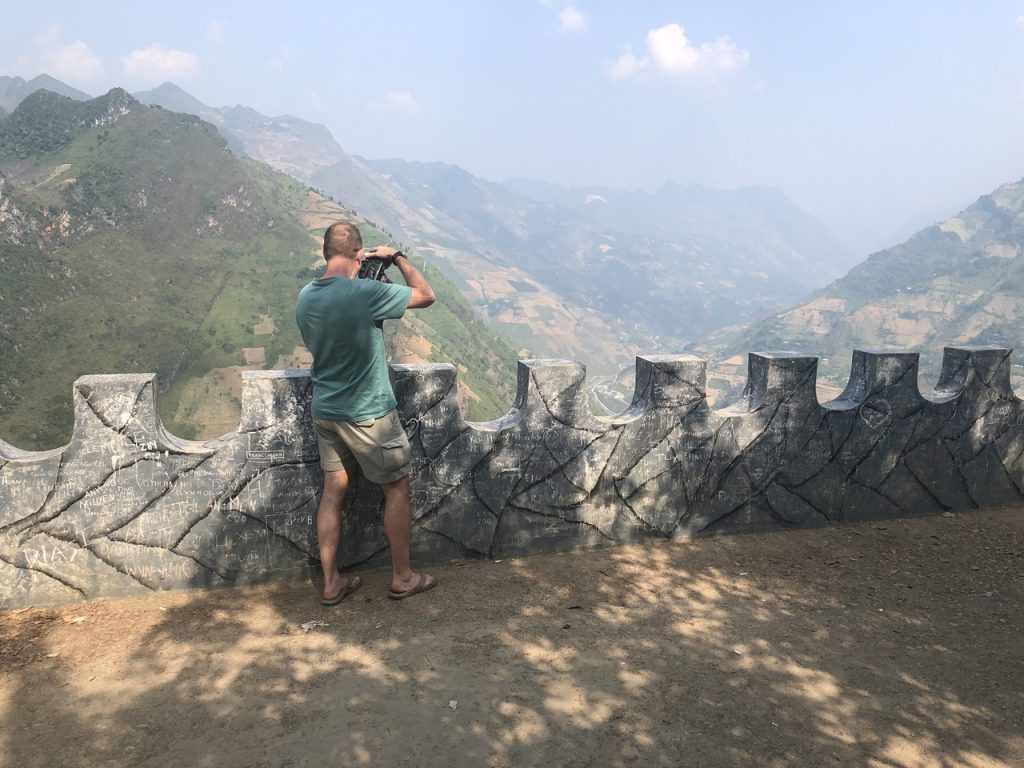
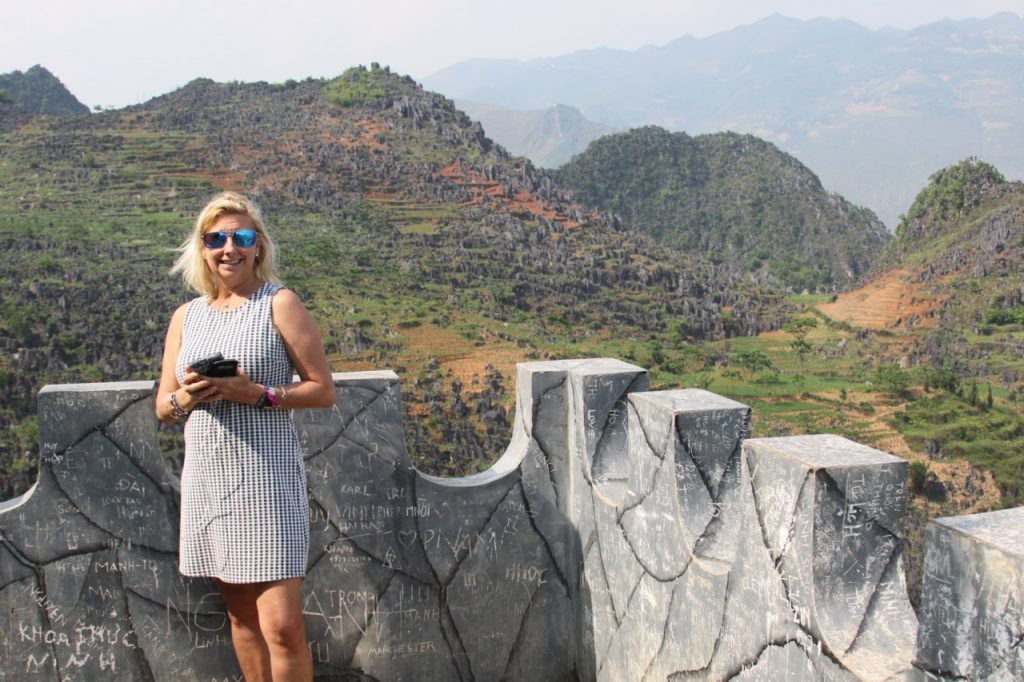
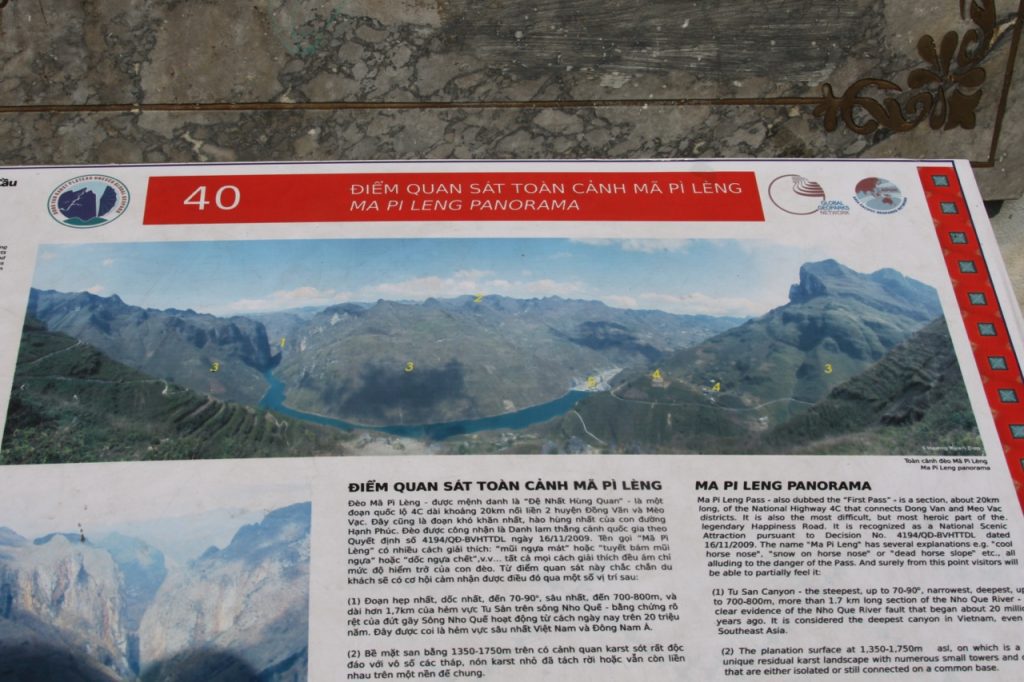
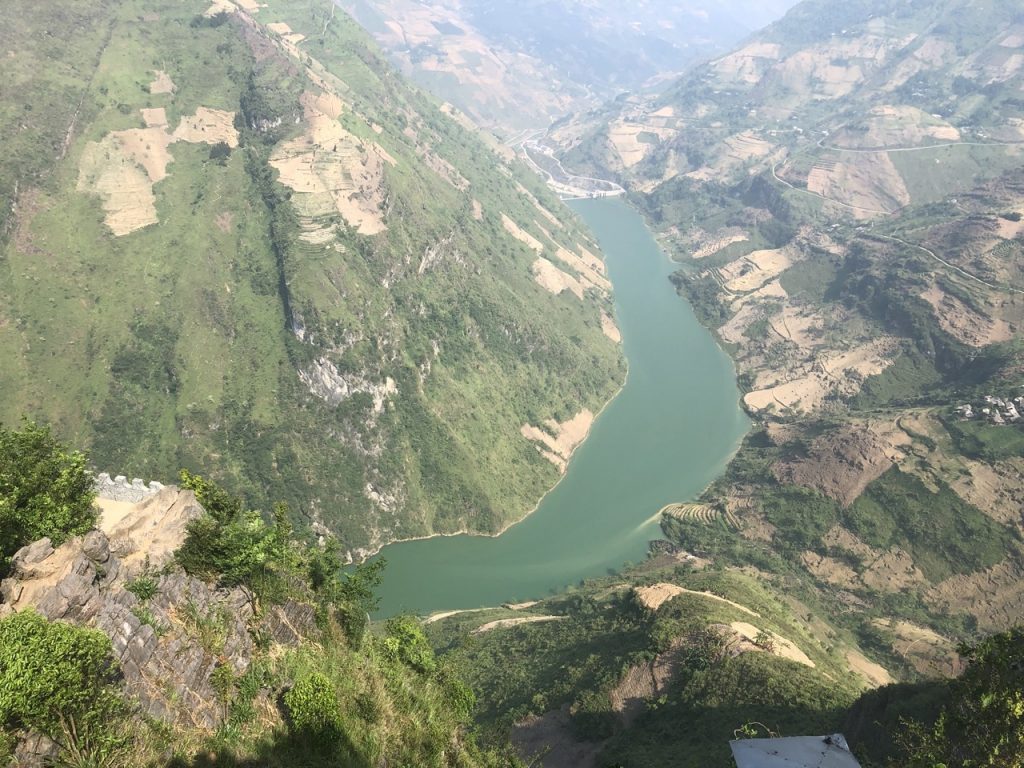
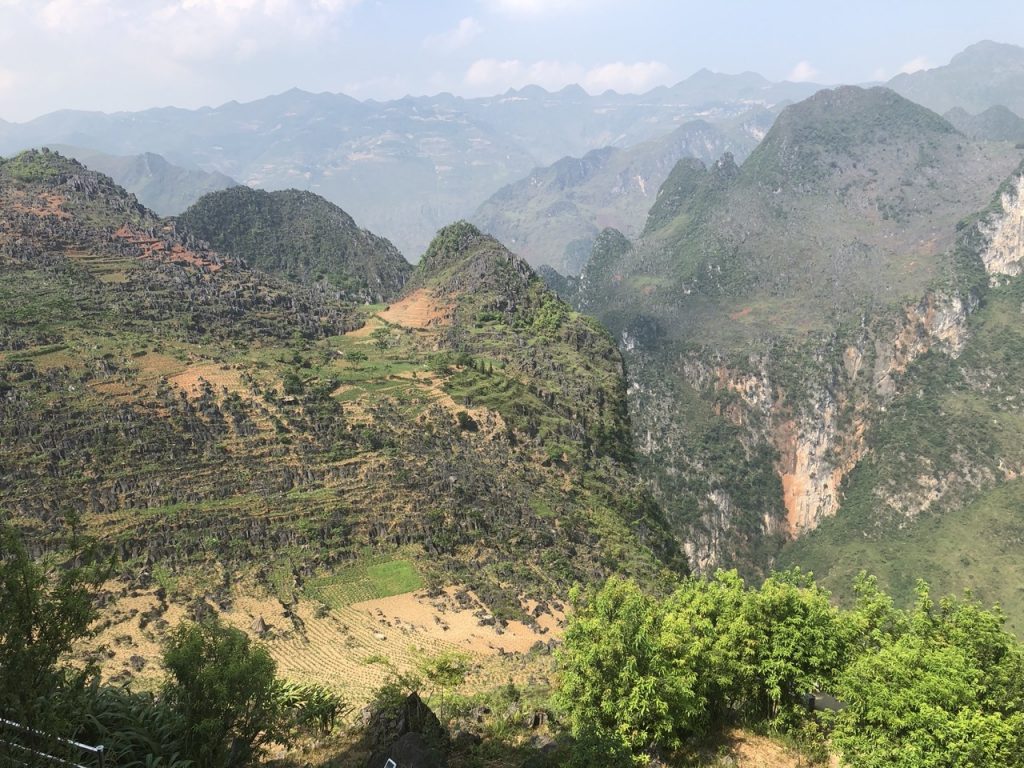
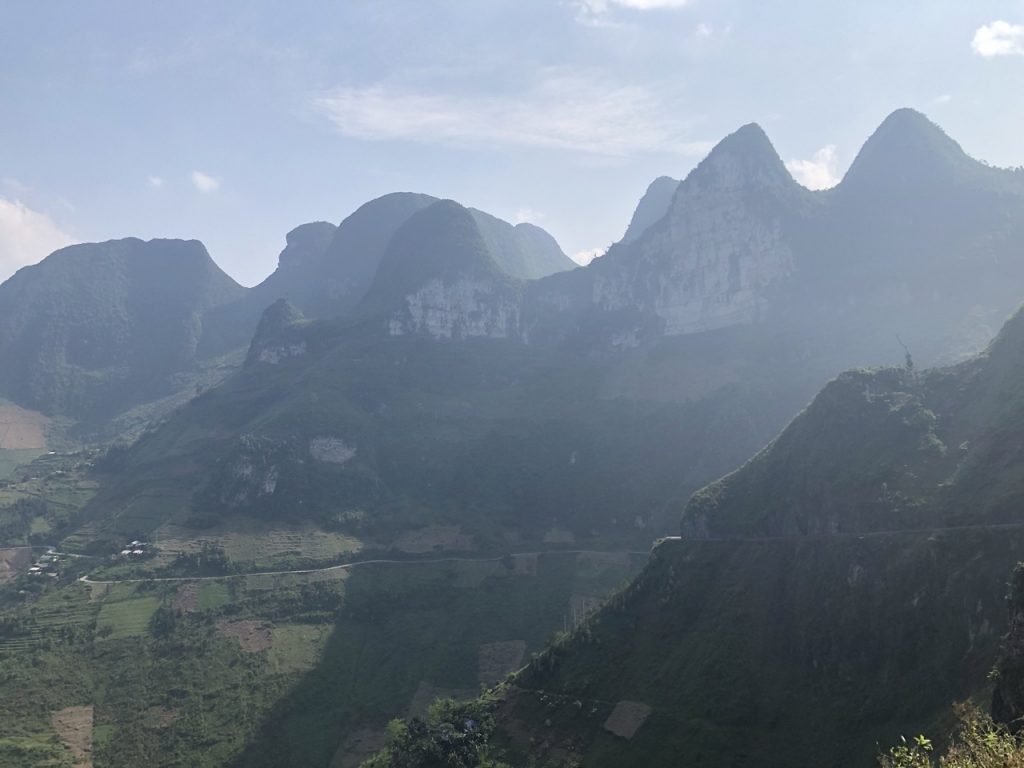
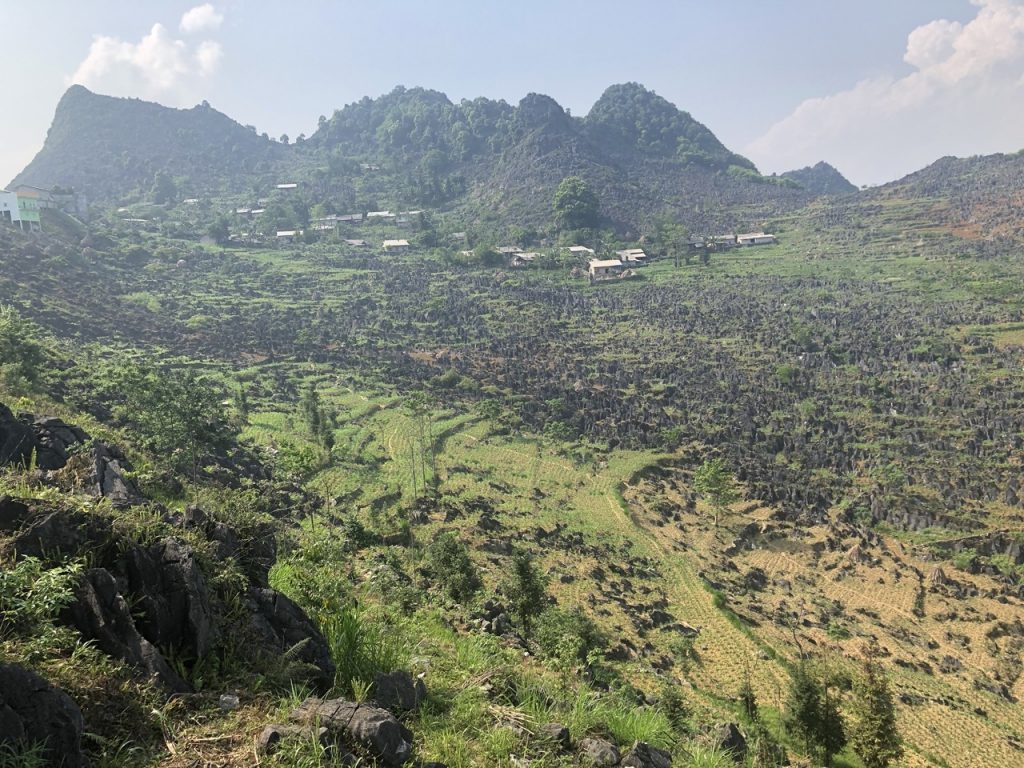
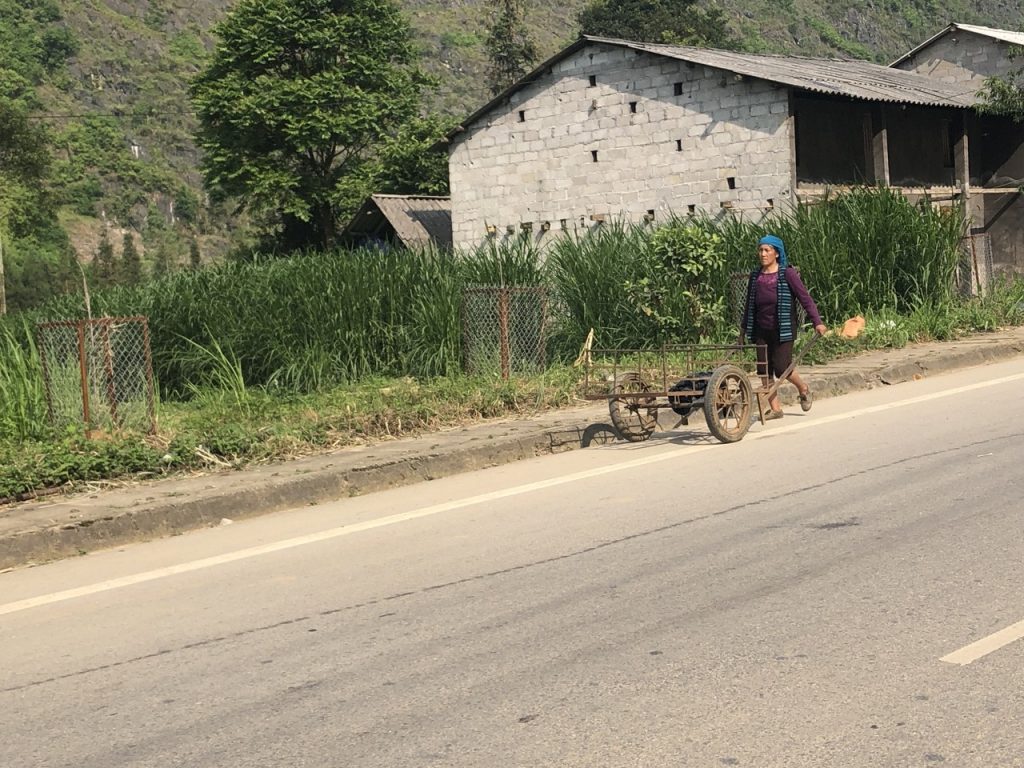
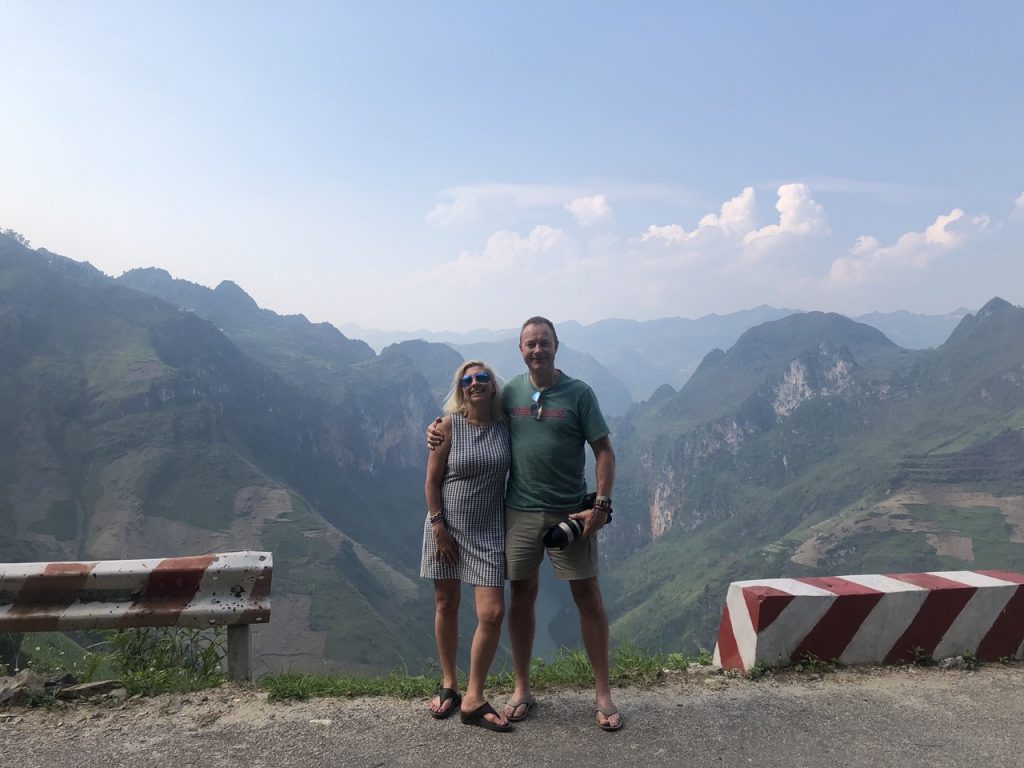
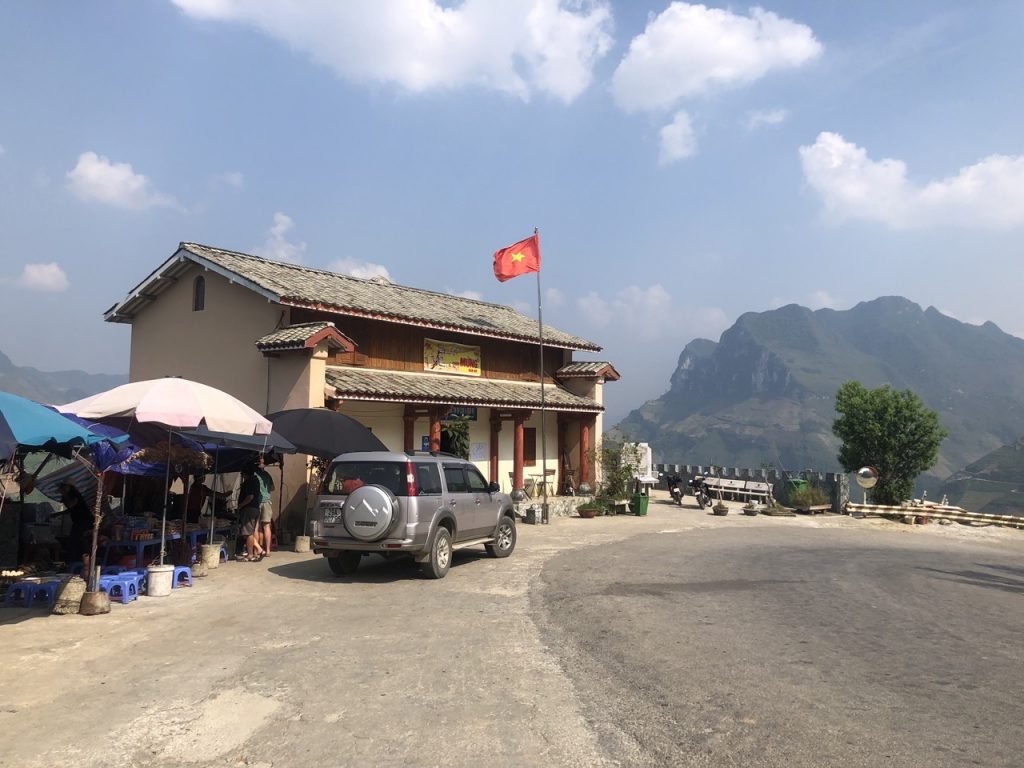
If travelling in late March /April you can take part in the Khau Vai Love market and get to know more about the culture of local people … Legend has it that there is a sad love story which is the origin of thi smarket: background of a sad love story. There was once an ethnic Giay girl who fell in love with an ethnic Nung boy. The girl was so beautiful that her people refused to let her marry outside of her community and a conflict erupted between the Giay and Nung. To stop the bloodshed, the couple decided to separate but not forgetting their love, they would have a secret meeting every year on the 27th of the third month of the lunar calendar. And every year from the 26th to the 27th of that month, the small community of Khau Vai holds the “love market”. Nowadays the market in itself is a gathering for many different ethnic groups. It is also an opportunity to meet people and perhaps find love for the first time but more importantly, it’s a rendezvous for ex-lovers who could not be married for one reason or another. Hundreds of ex-lovers will be reunited on that day, reminiscing about lingering feelings and catching up for old time’s sake. For them, it’s a way to see “the one that got away” without any guilt. On the day when the market session takes place, it is likely that both the wife and her husband will go together to the market where they look for their own past partners to share emotions. If one of them has to stay at home, he or she is not jealous because the dating at the marketplace is only a temporary feeling exchange, which has no negative influences on real life.
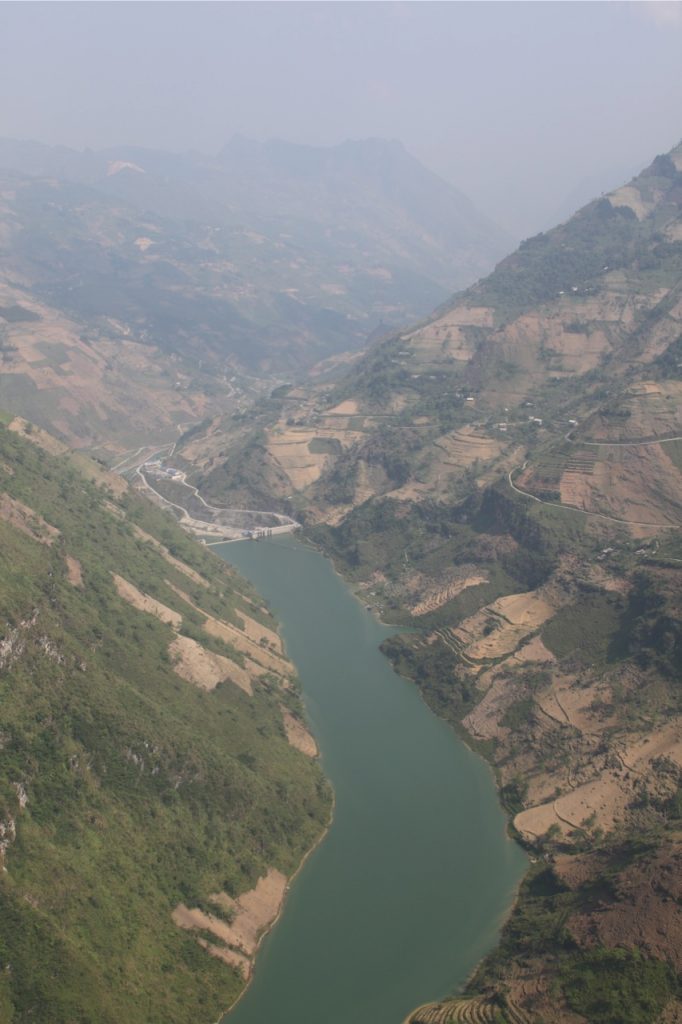
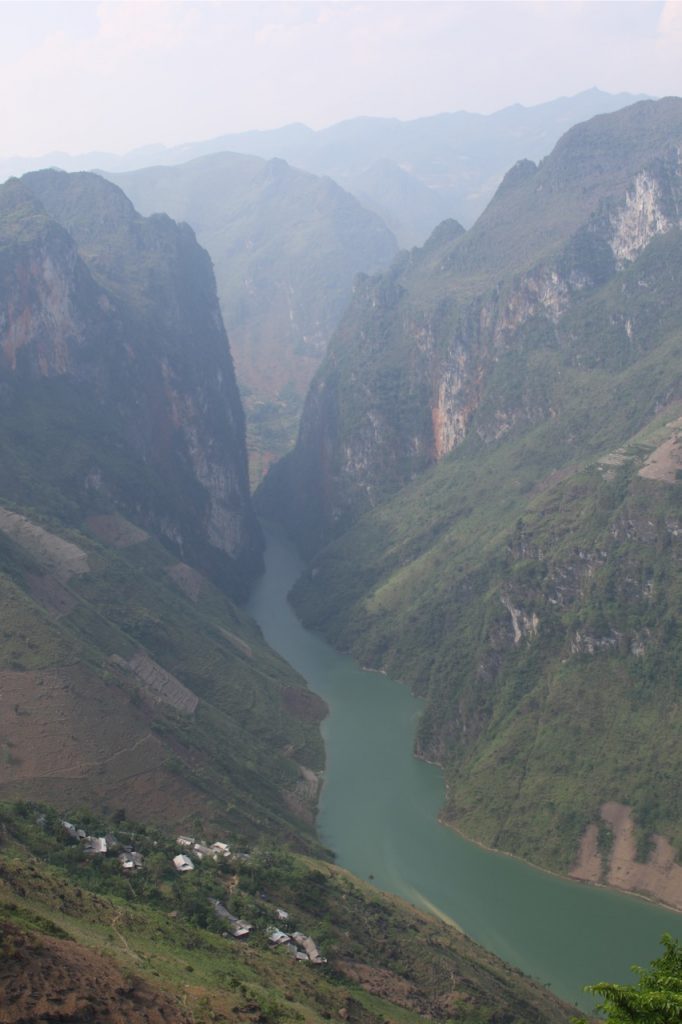
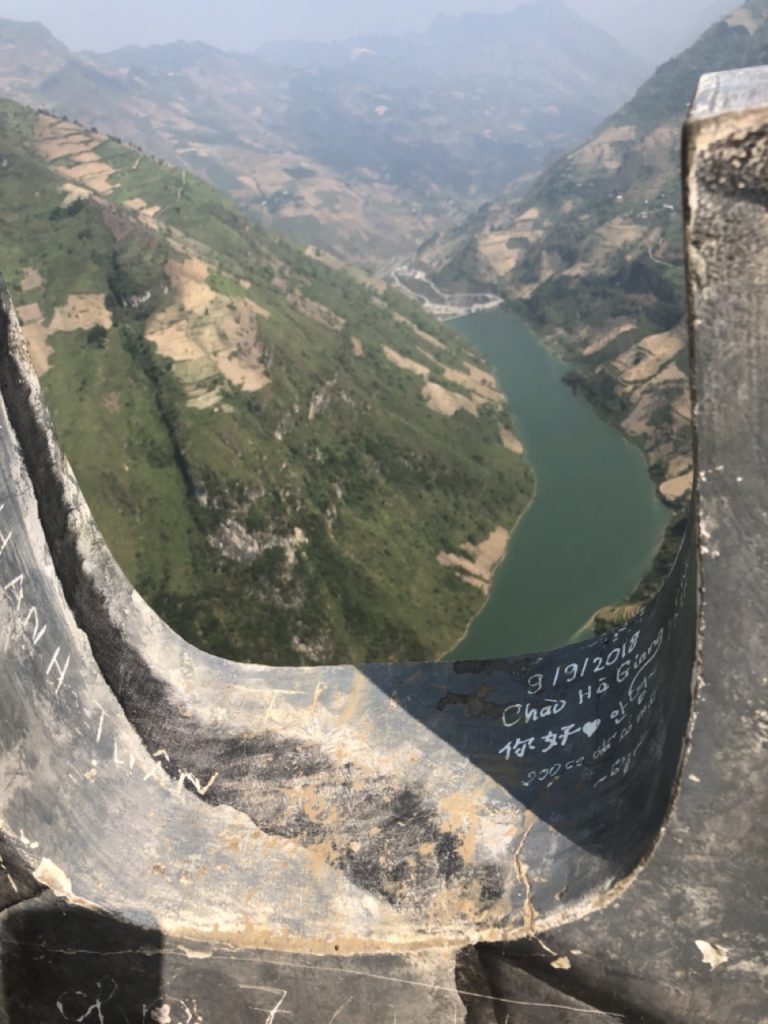
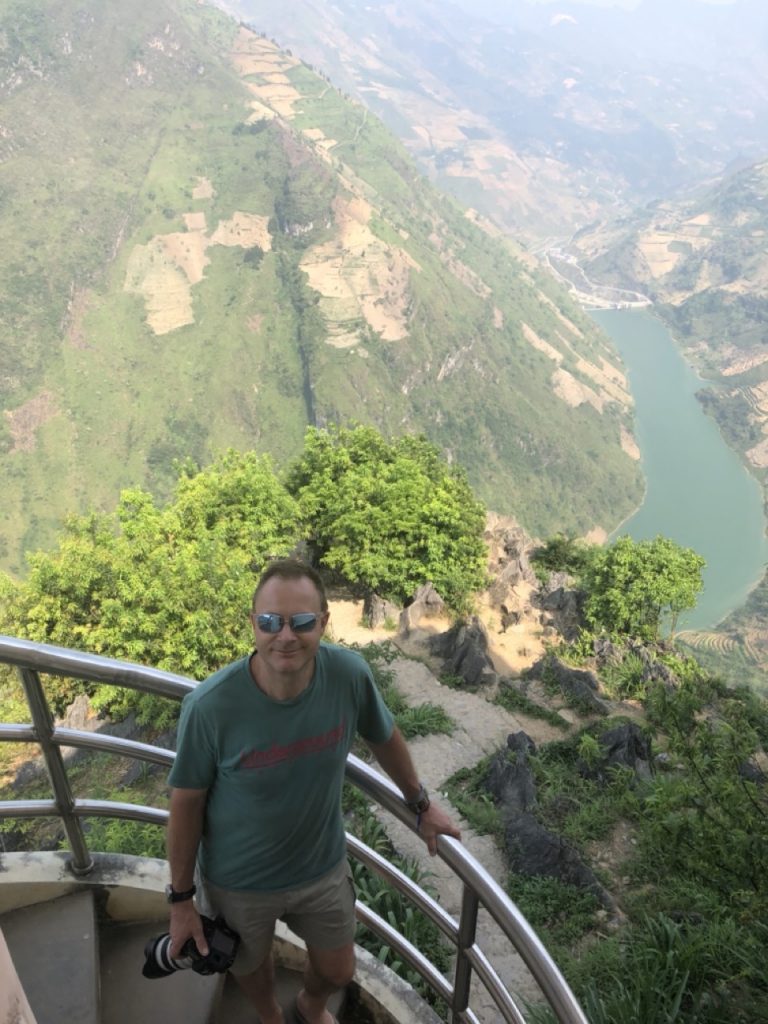
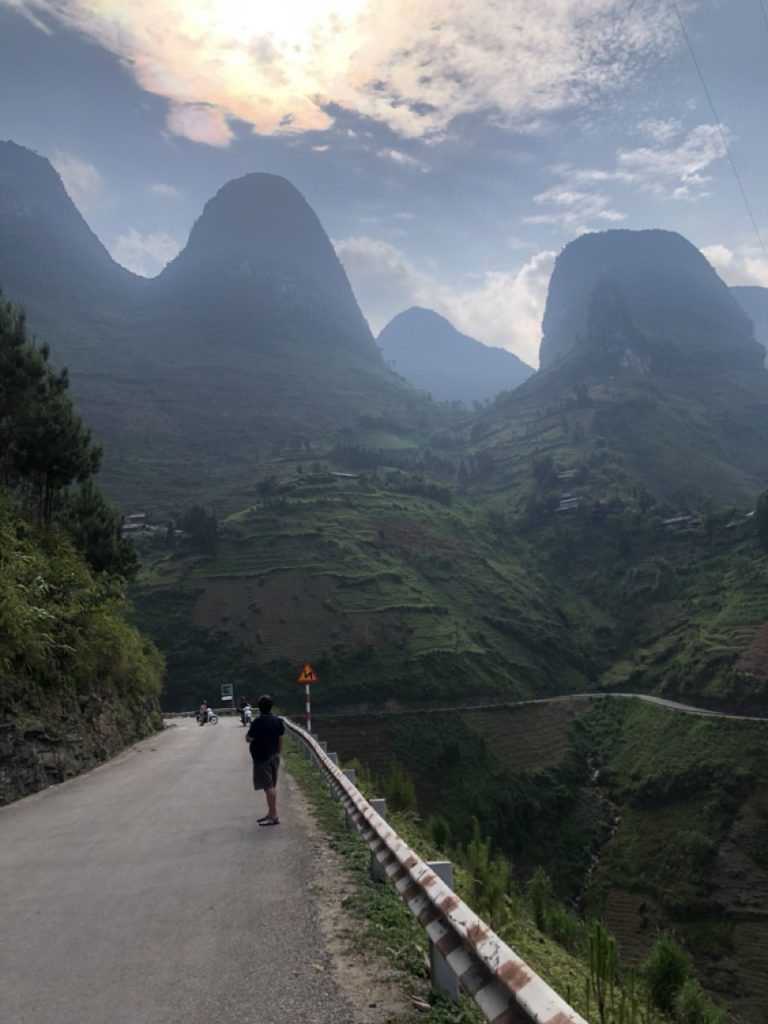
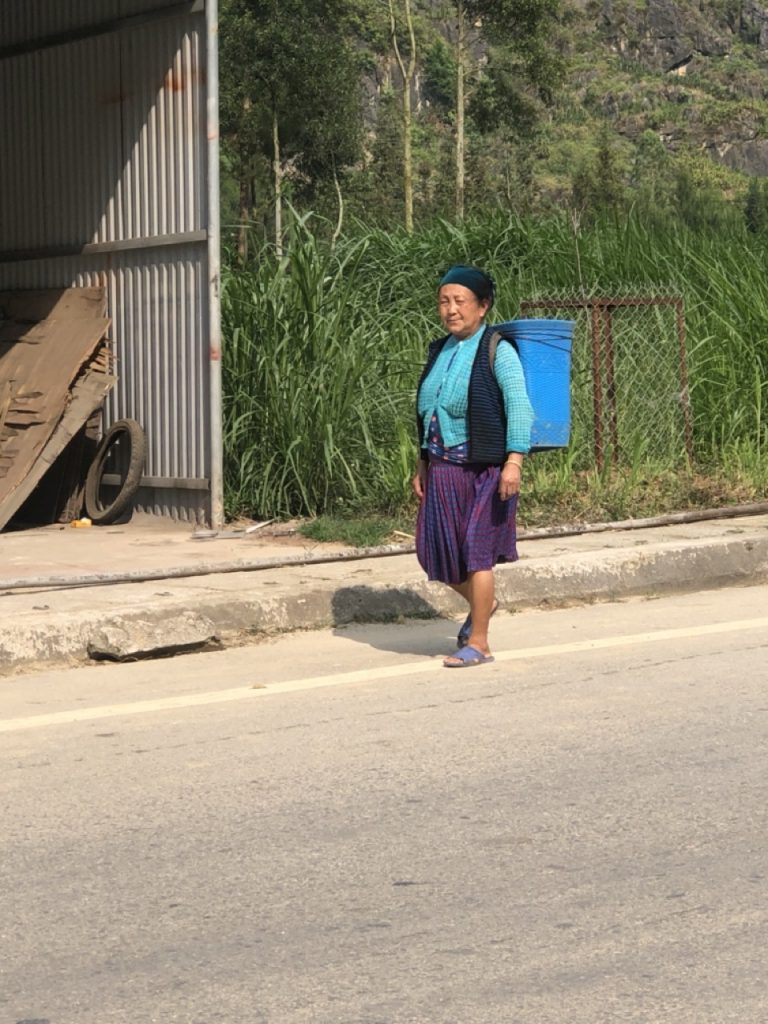
The journey continued with some incredible granite extrusions…the sun started to set and the light on the paddy fields was stunning. We were stopped by the Police who checked our permits but all was fine.
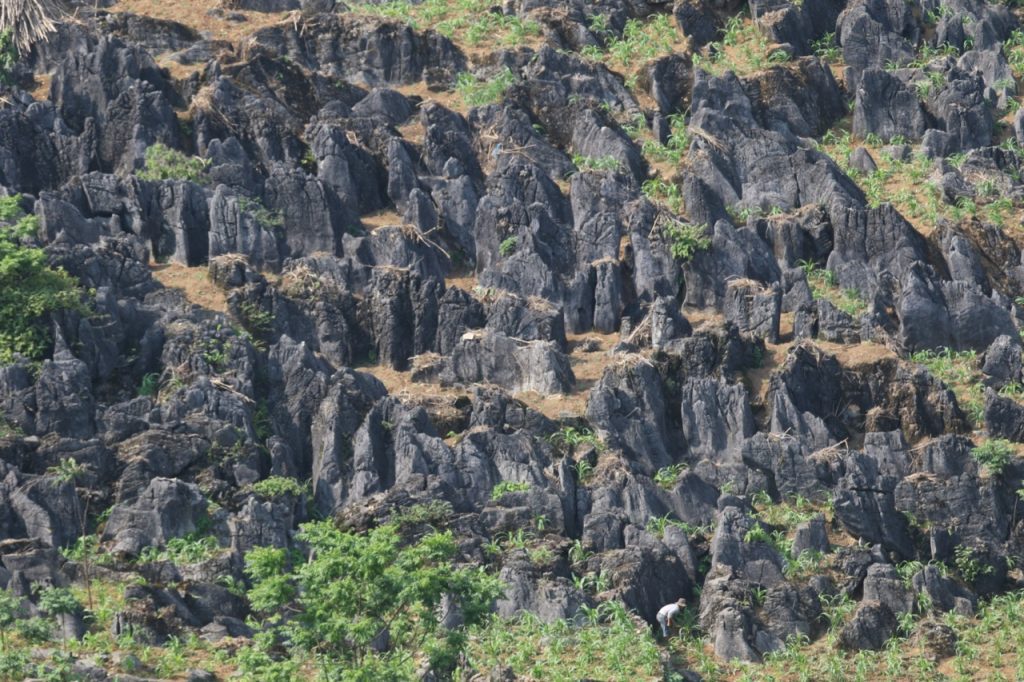
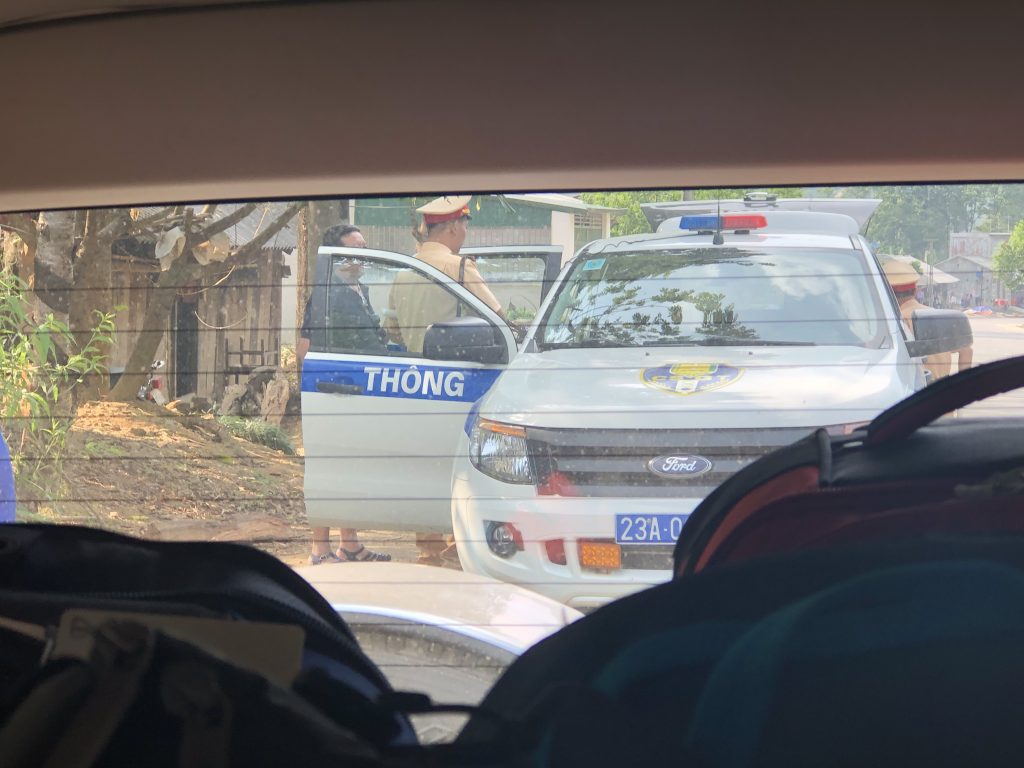
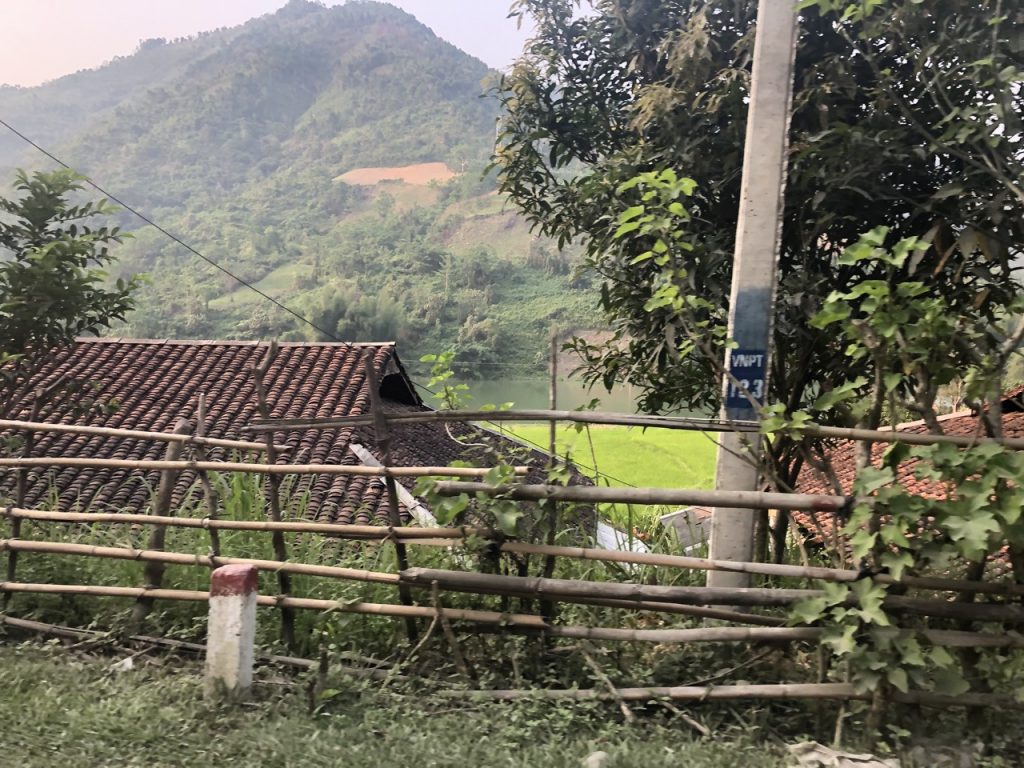
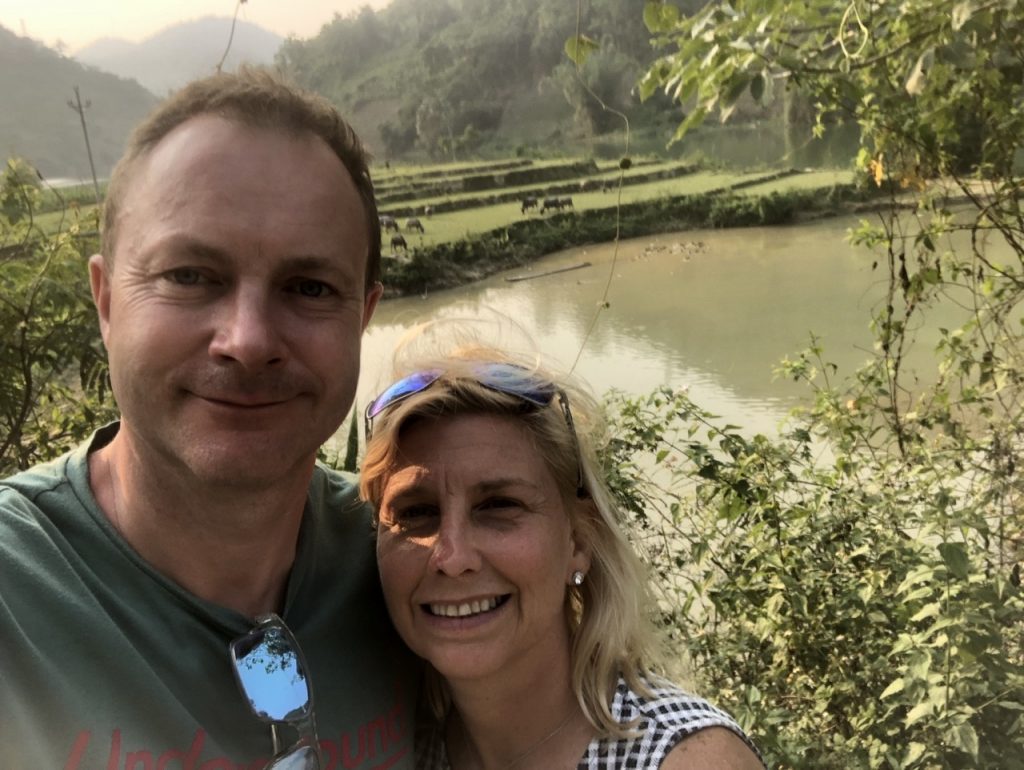
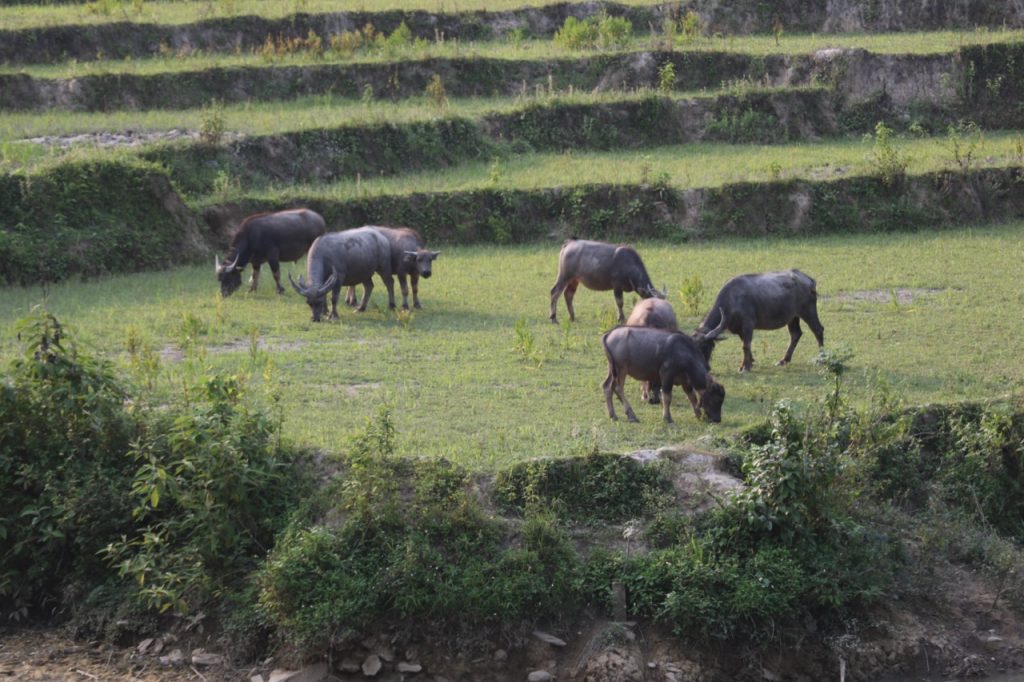
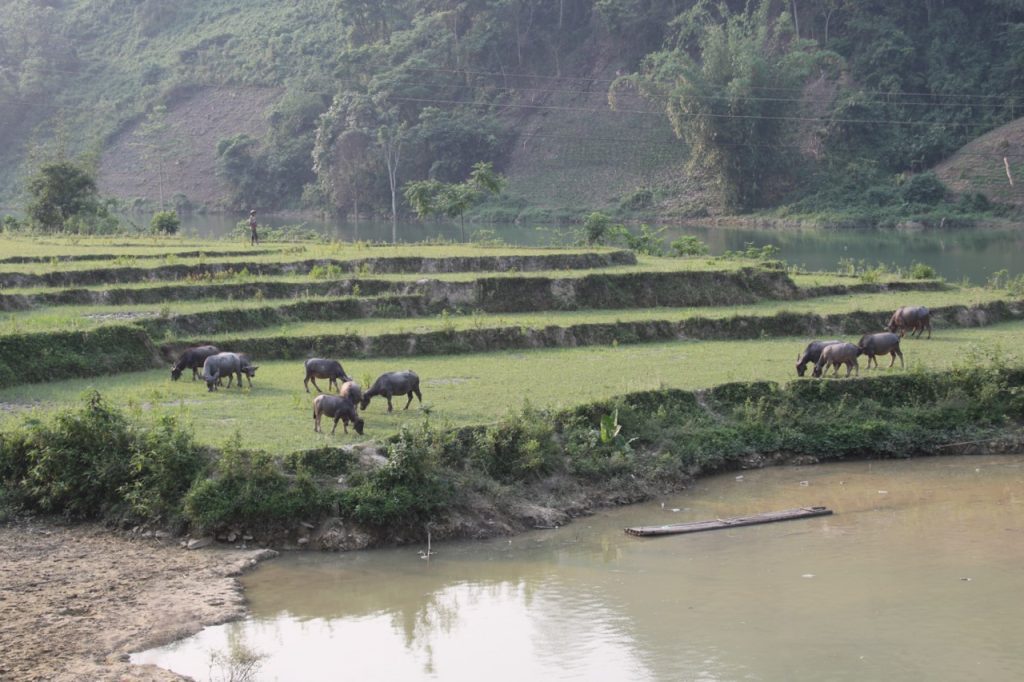
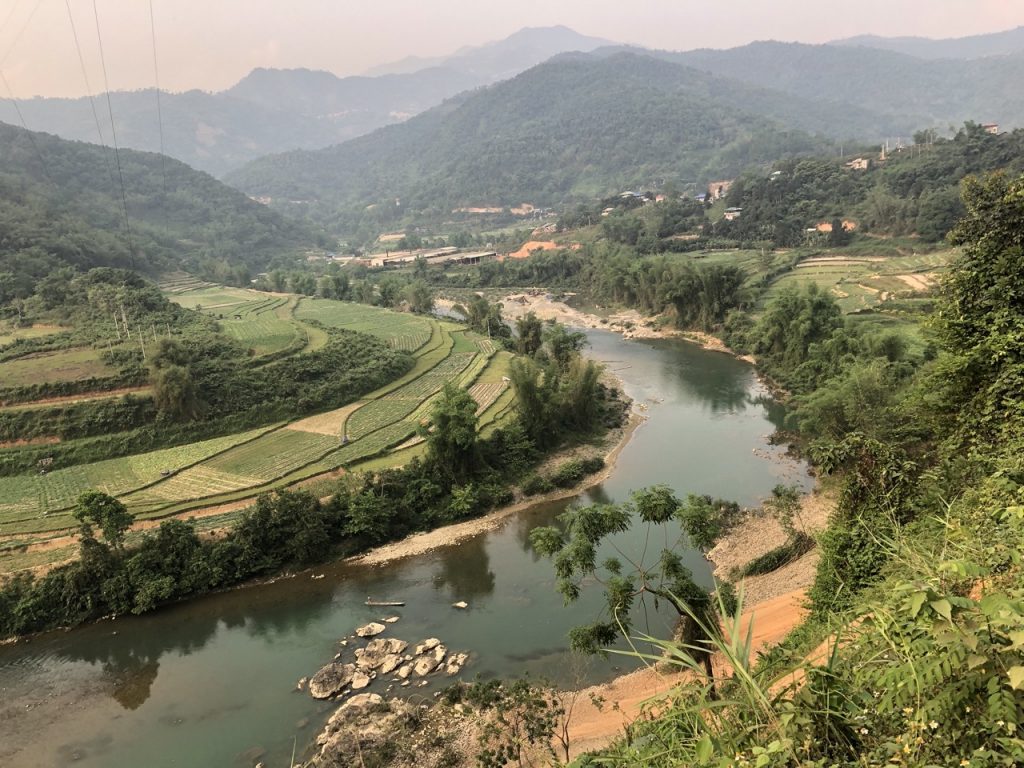
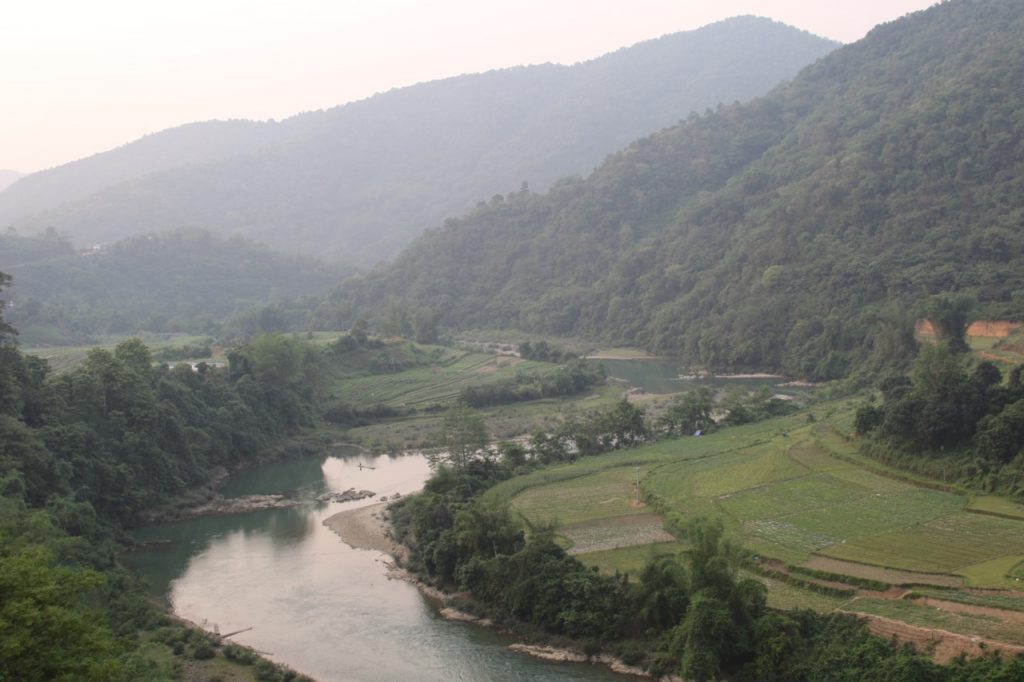
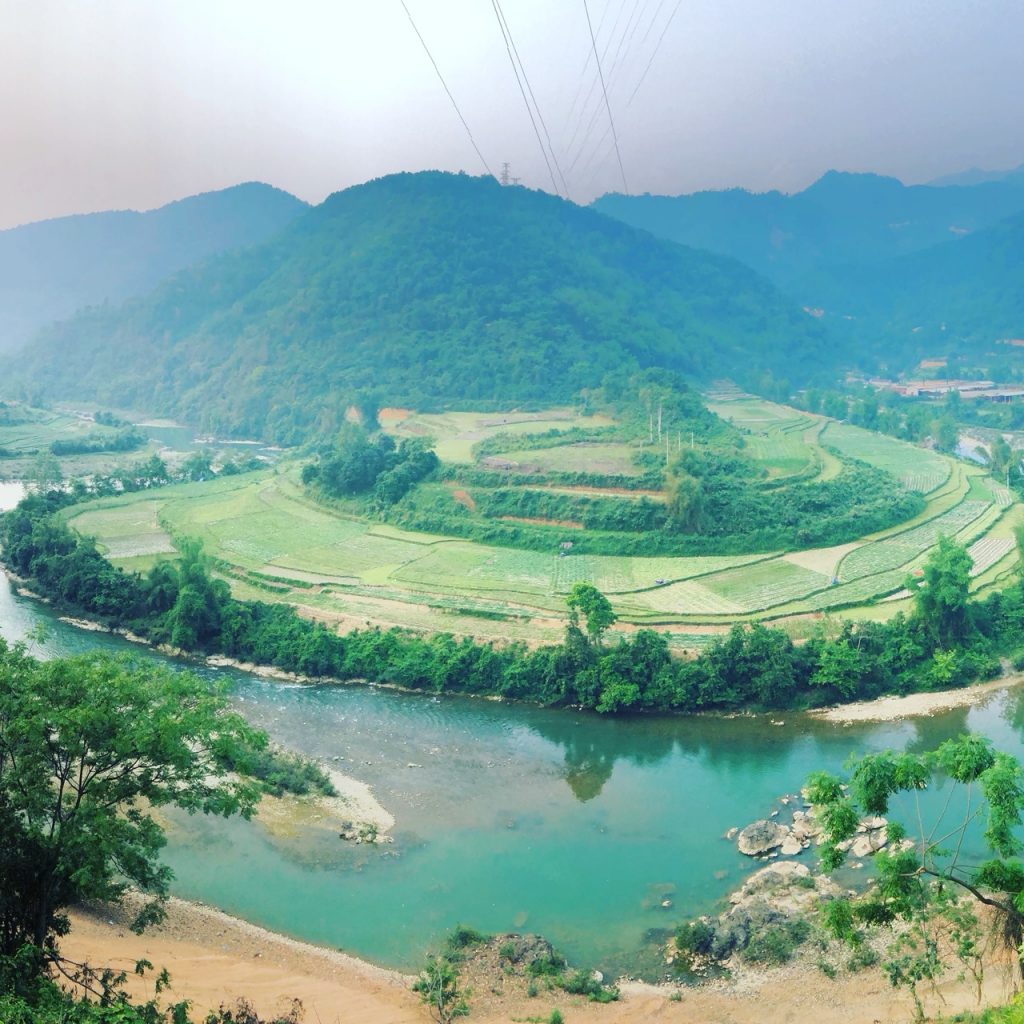
It was relaxing to watch a local man fishing with his nets.
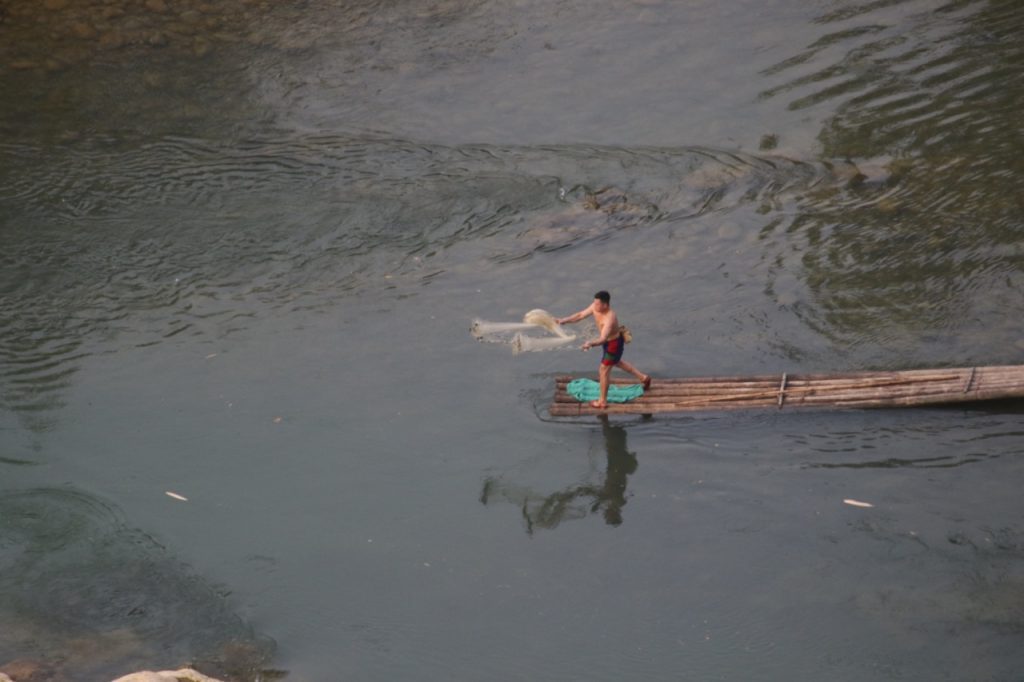
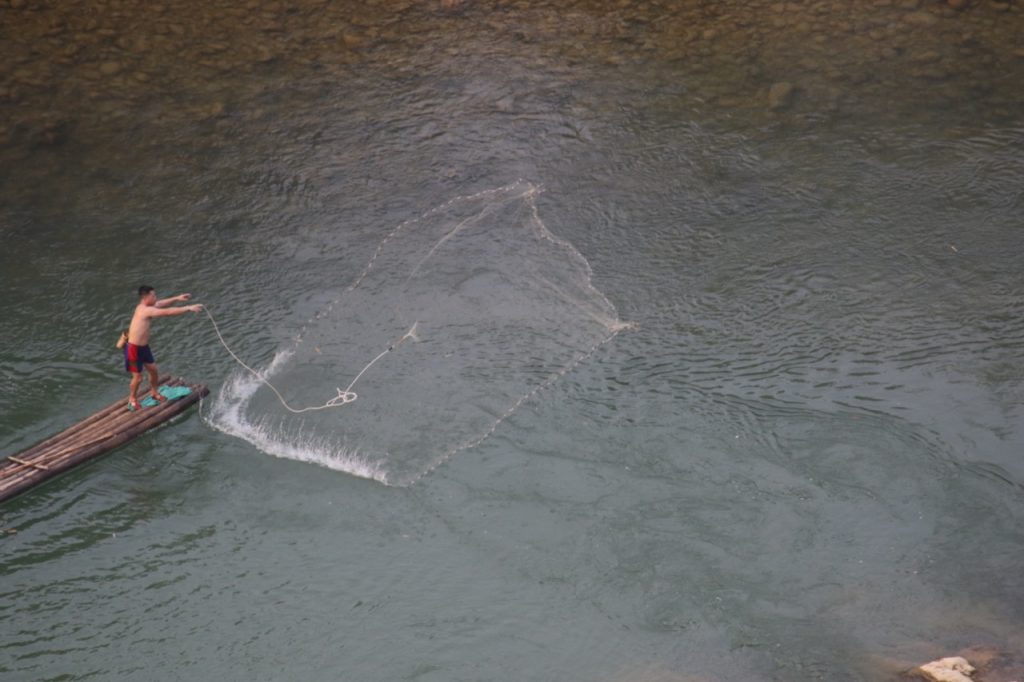
Spectacular.
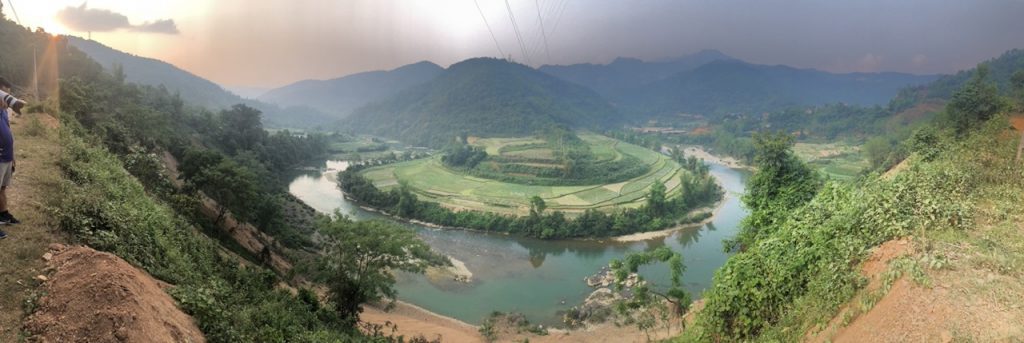
We arrived late in Cao Bang which is is the capital and largest settlement of Cao Bằng Province. It is located on the bank of the Bằng Giang river, and is around 30 kilometres away from the border with China’s Guangxi region. Yet again we parked our car inside the Reception area of the hotel! More very heavy set wooden furniture. We ate dinner and went straight to bed. We were woken in the morning by a firing squad practising their shooting which we watched nervously from our hotel room balcony!
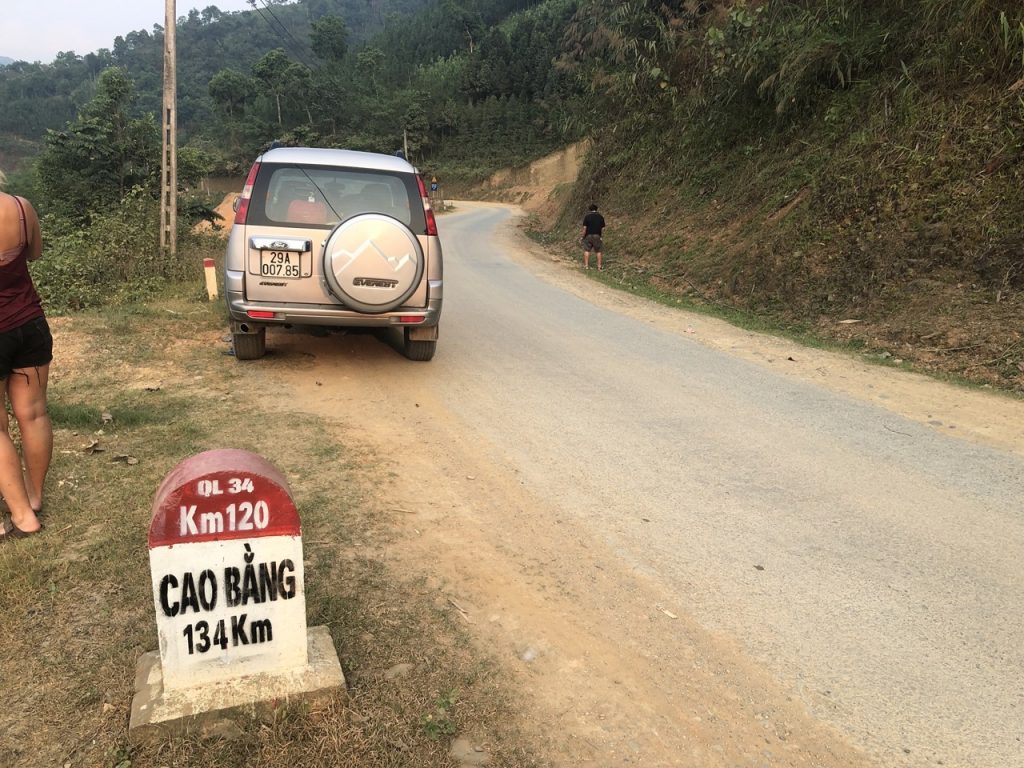
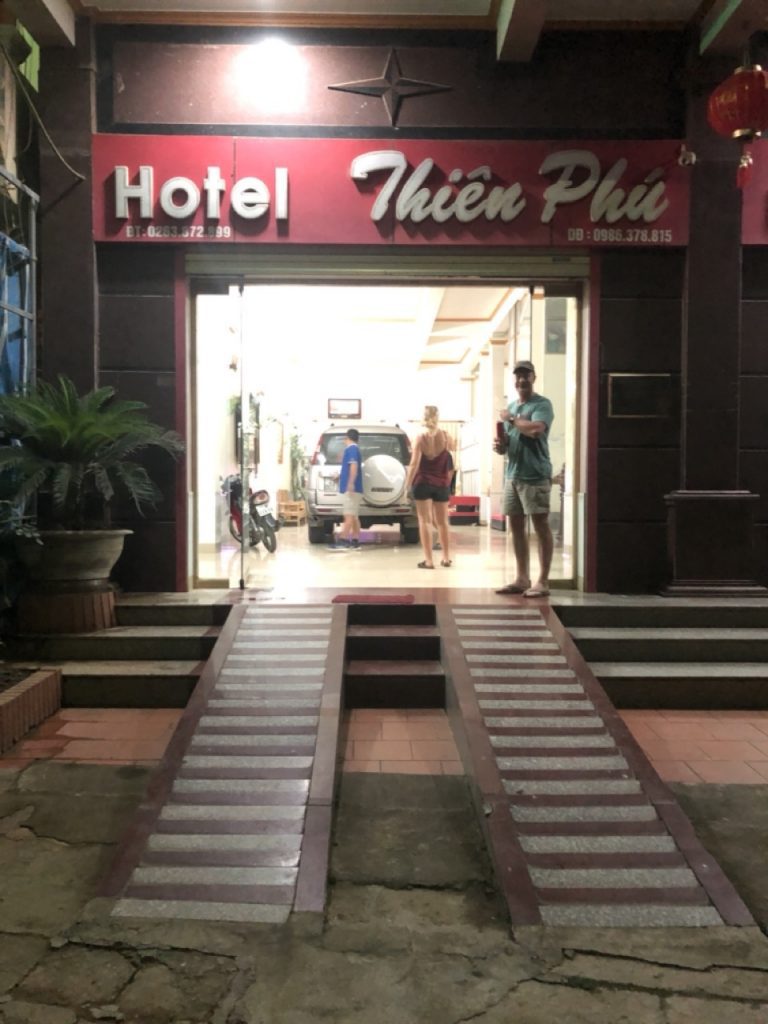
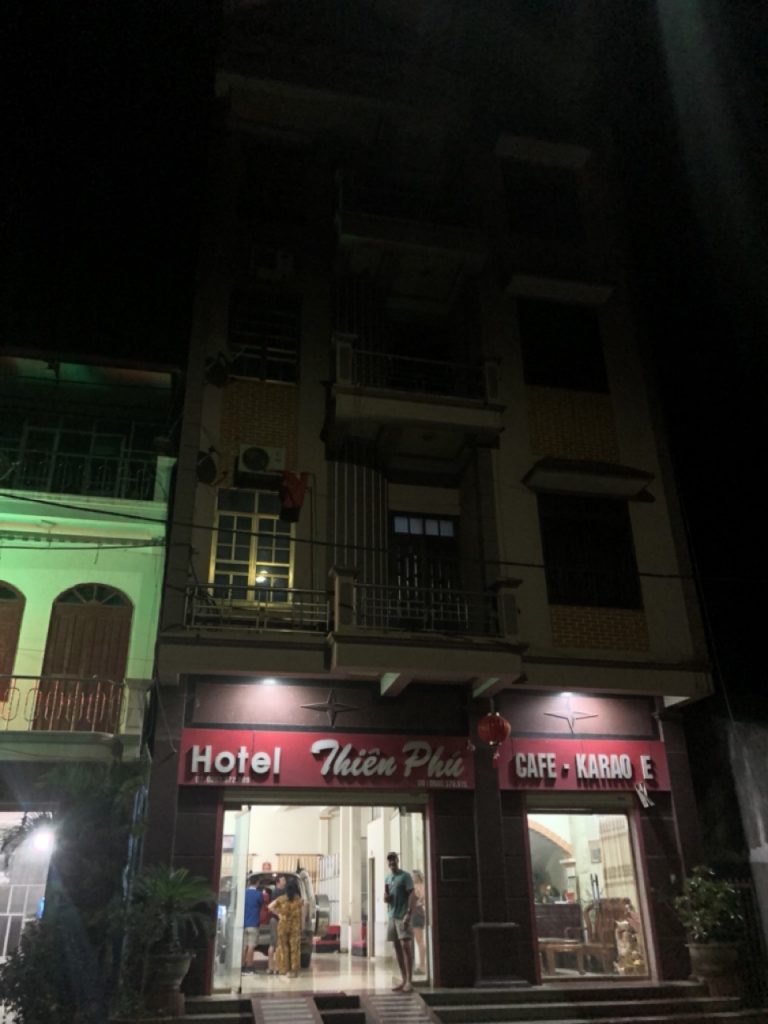
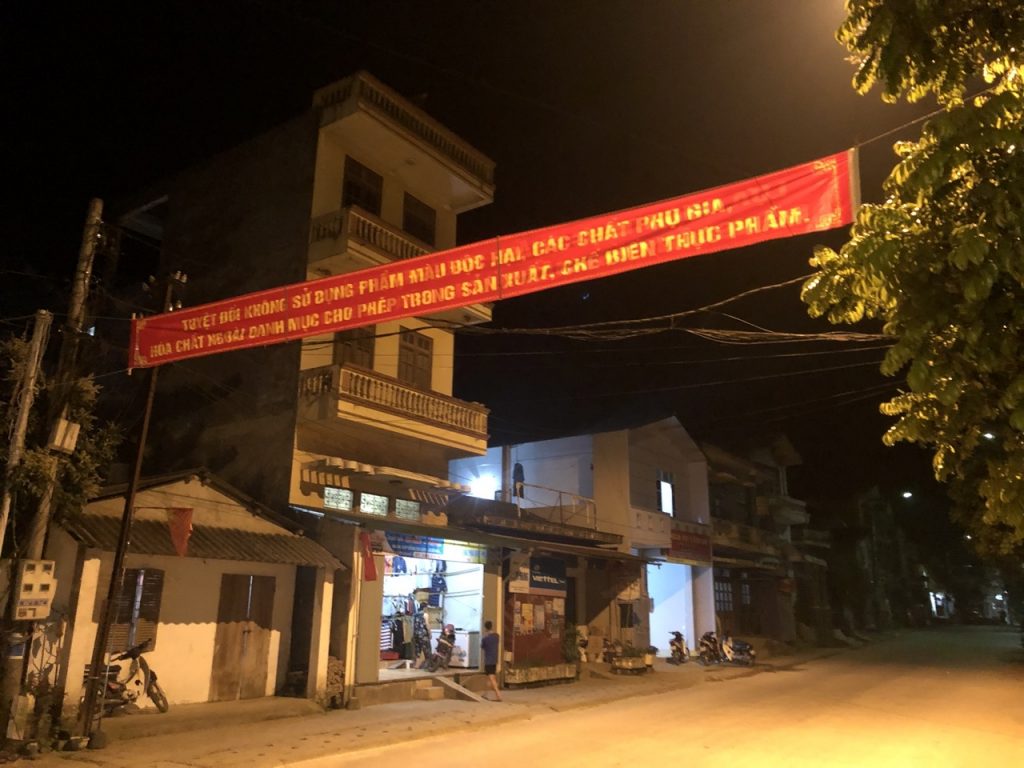
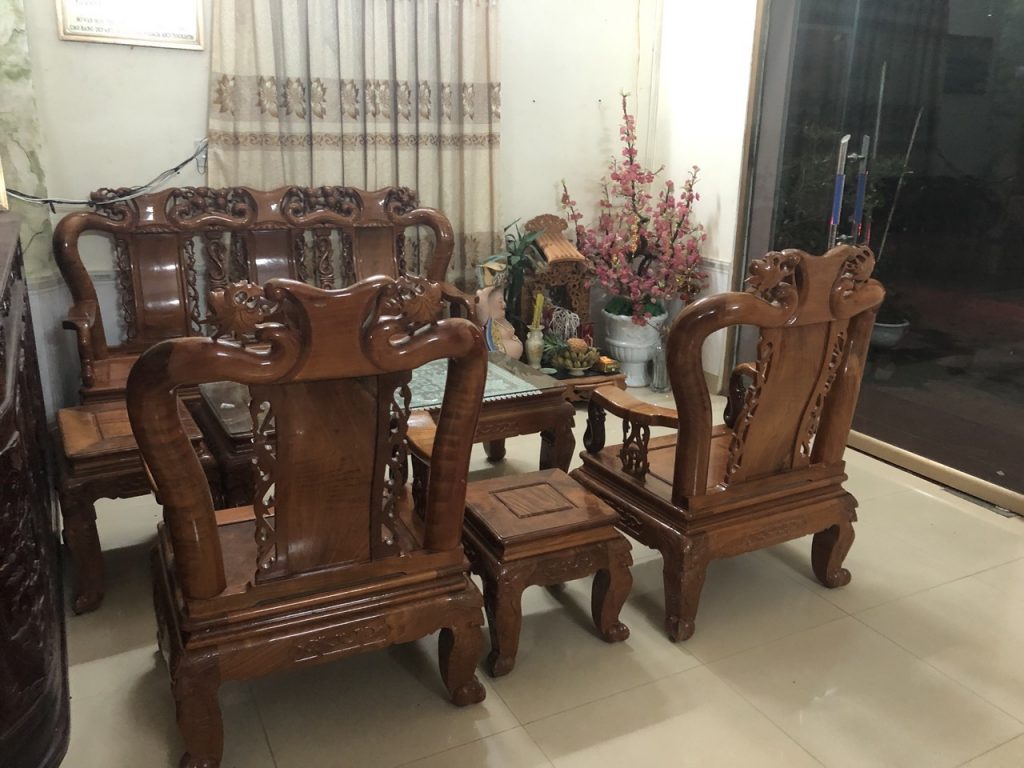
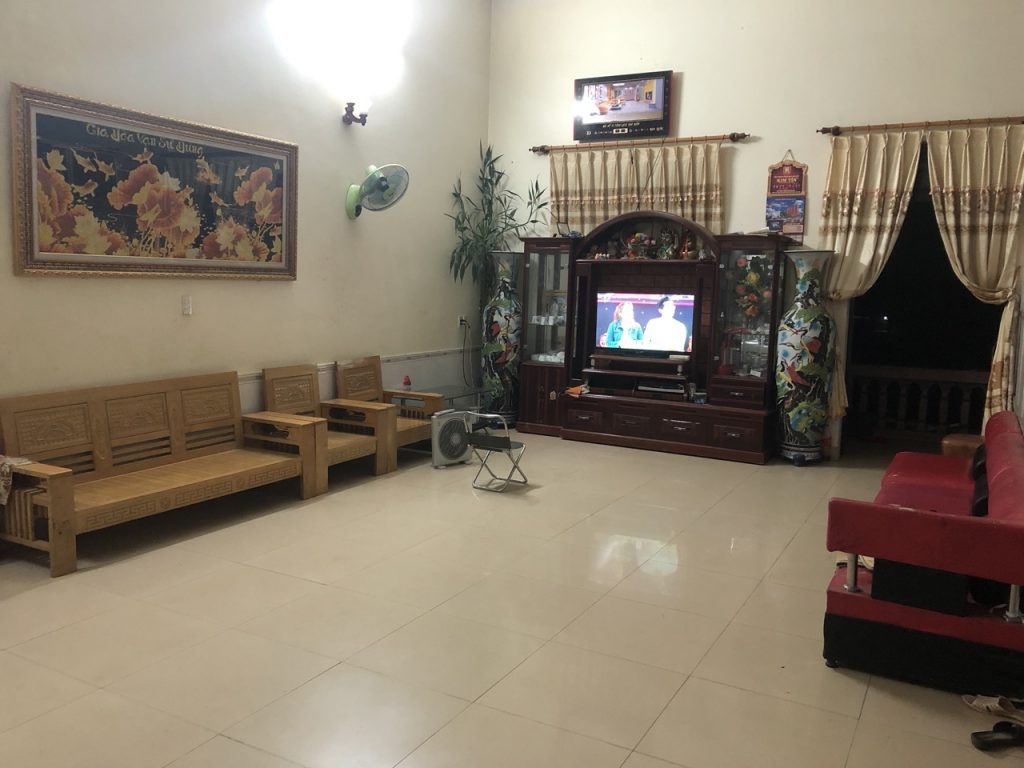
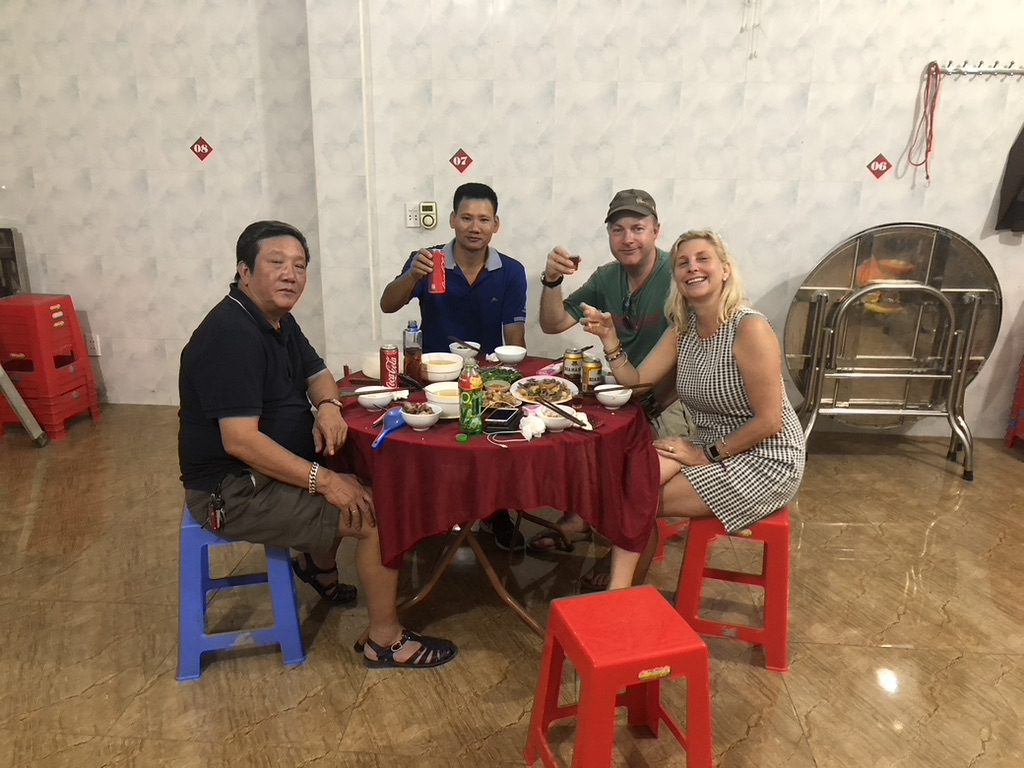
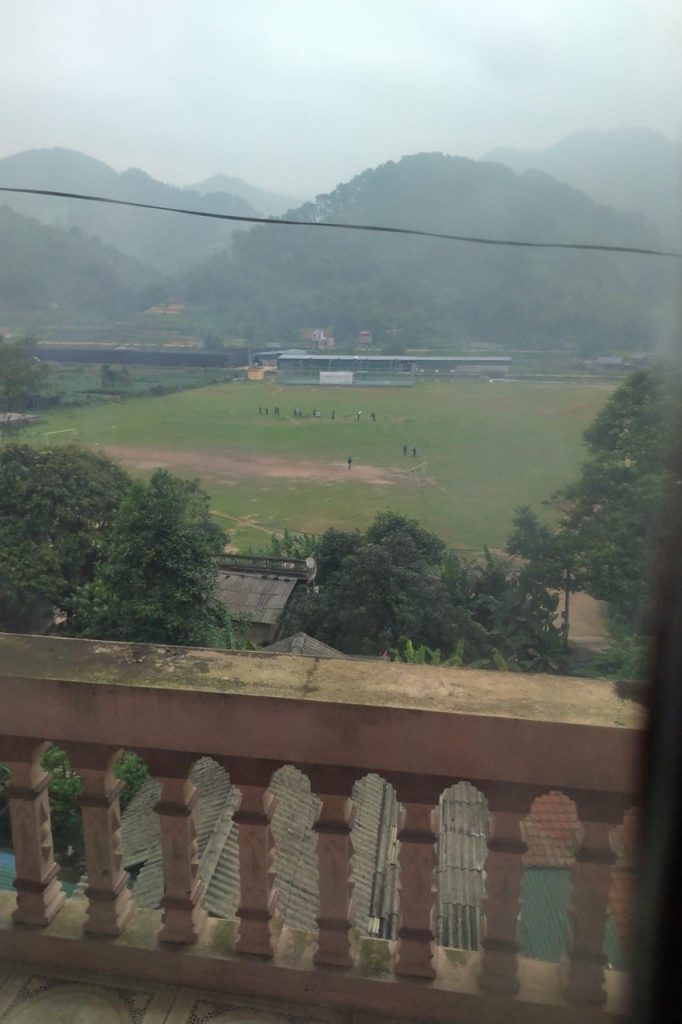
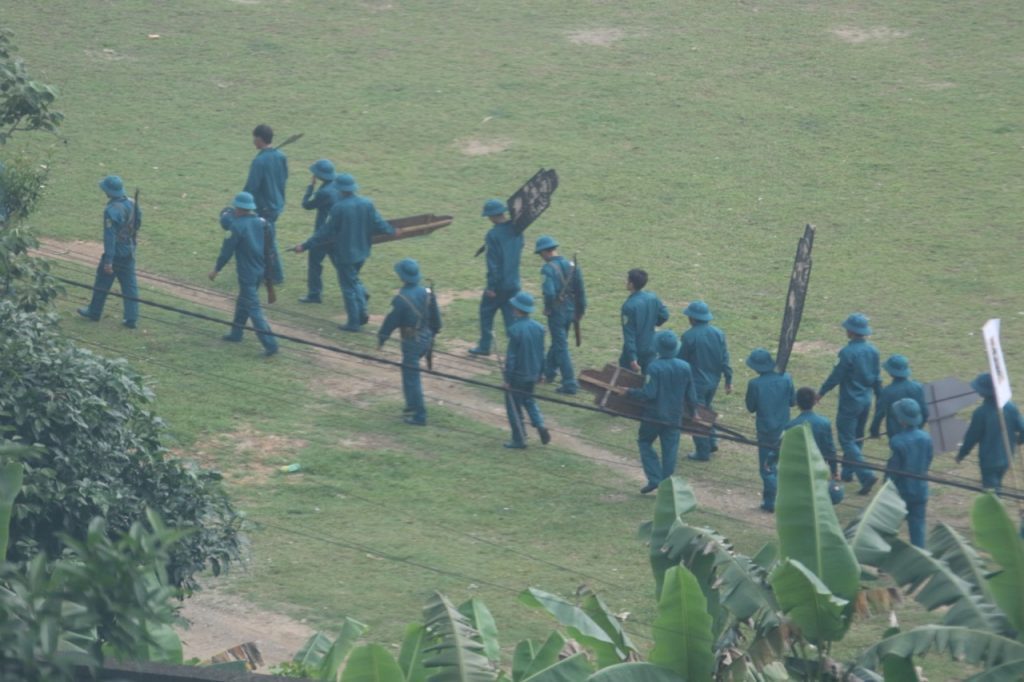
Friday, 26 April: 35C – Ban Gioc Falls · Nguom Ngao Cave · Ho Thang Hen Lake · Nam Tra Waterfall (actually a hole in a mountain!).
We were up early and headed for a delicious local breakfast where we watched the lady preparing the Bánh Cuốn which is a deliciously light Vietnamese rice rolls filled with simple ingredients, including pork or vegetables according to your preference – divine! Afterwards we headed over the road for a delicious Vietnamese coffee (with obligatory condensed milk!).
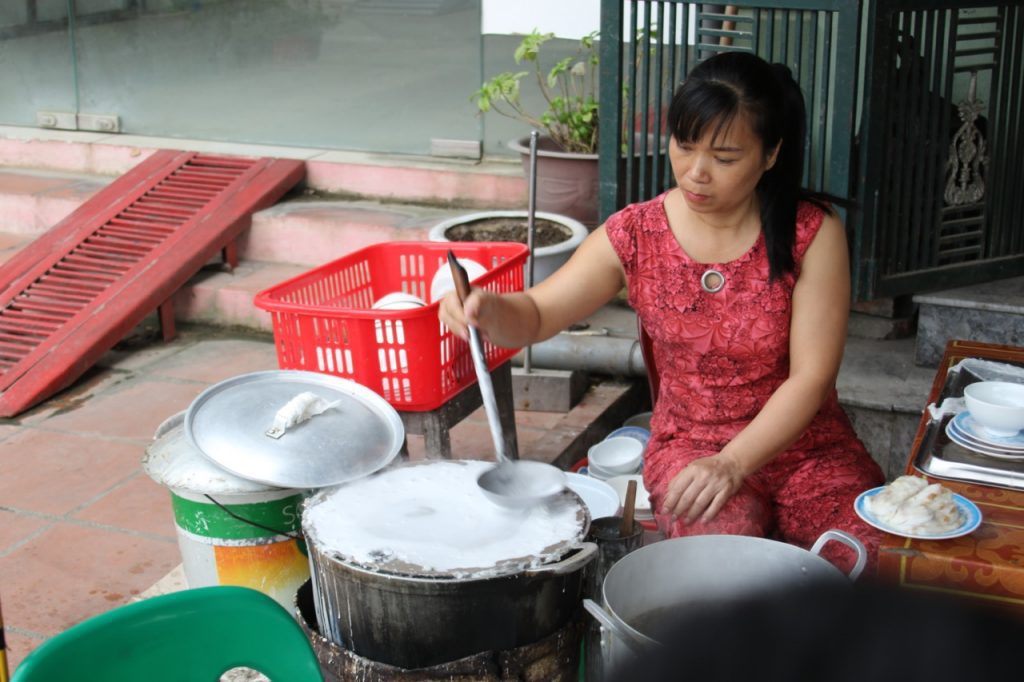
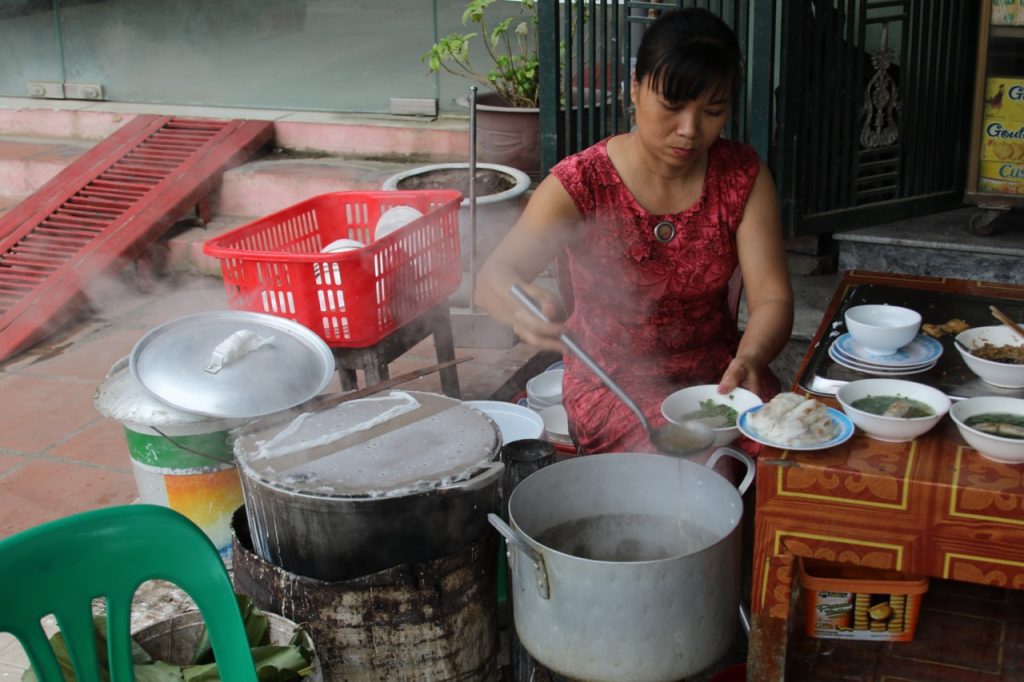
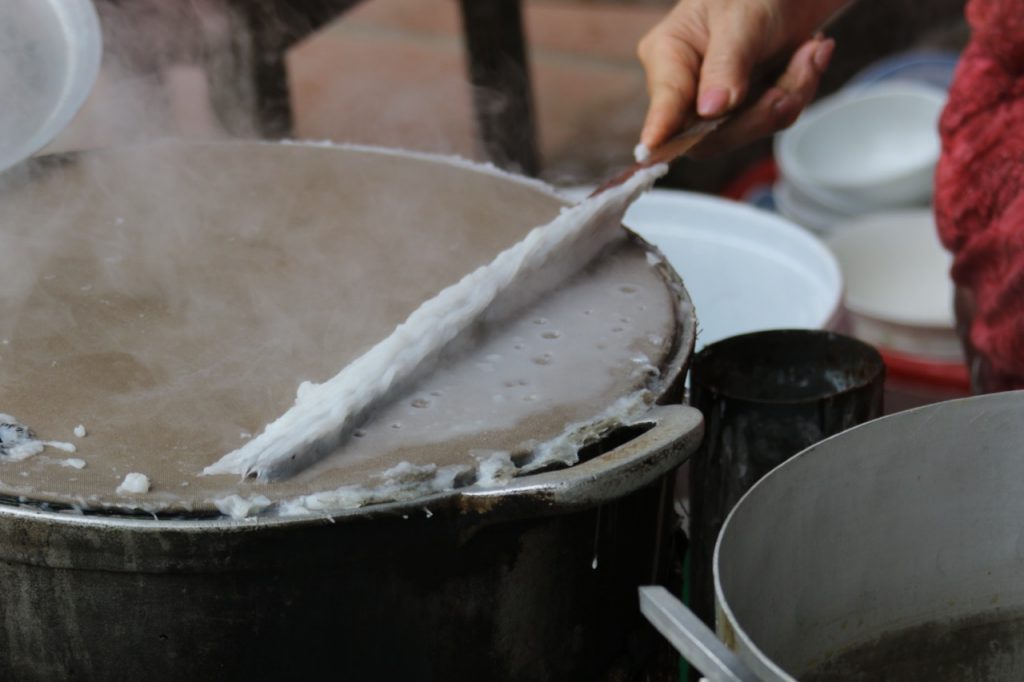
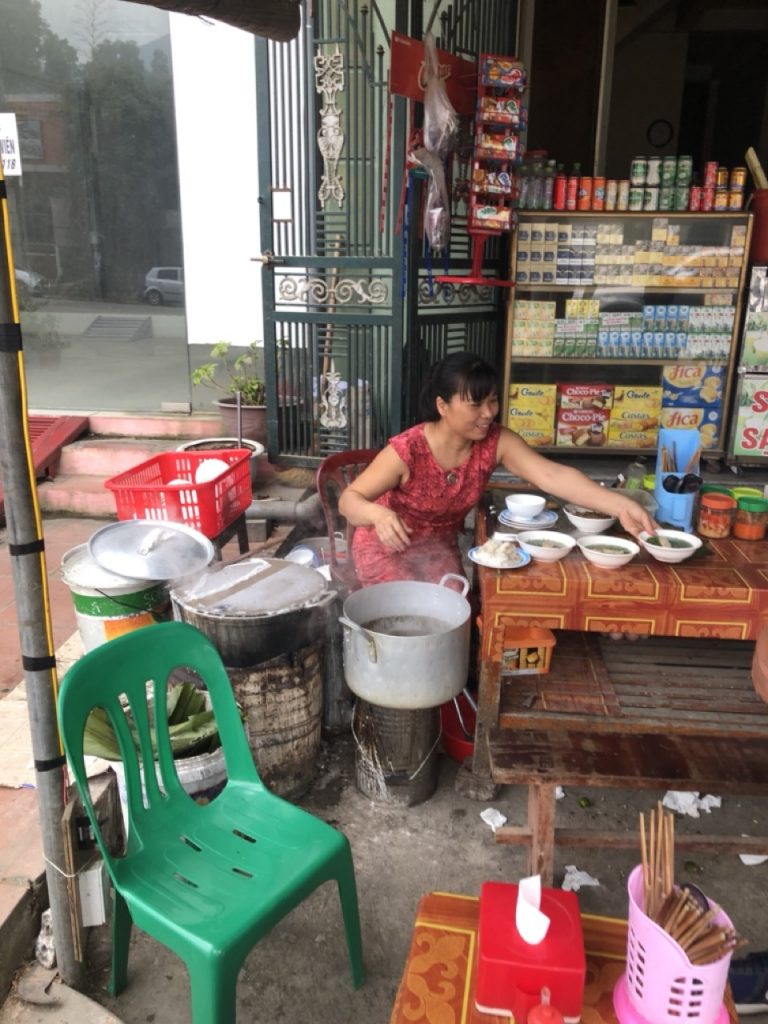
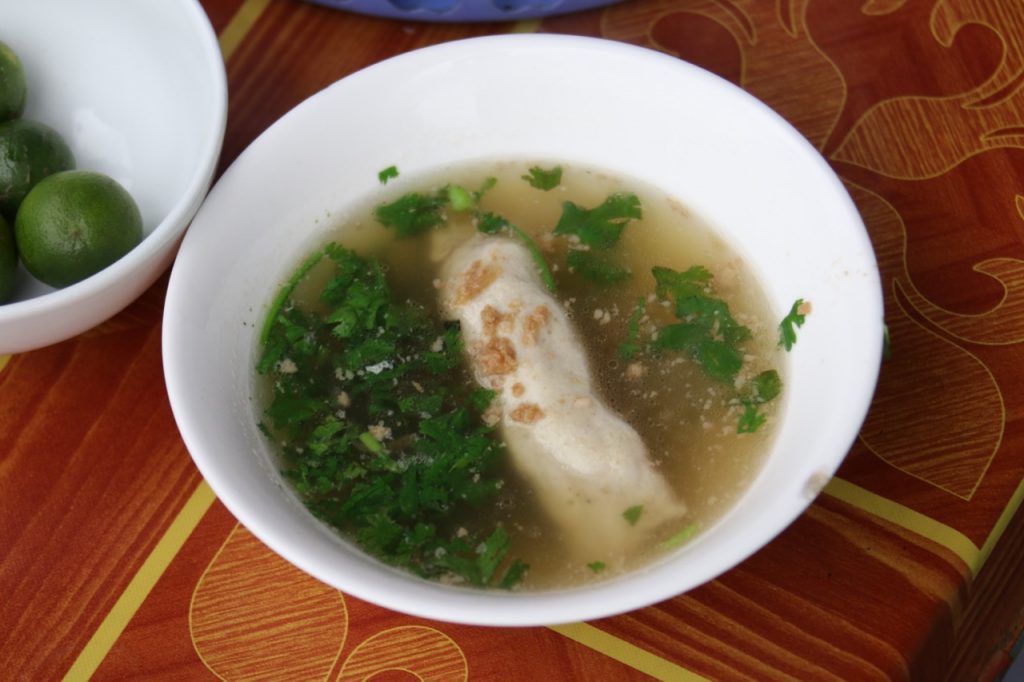
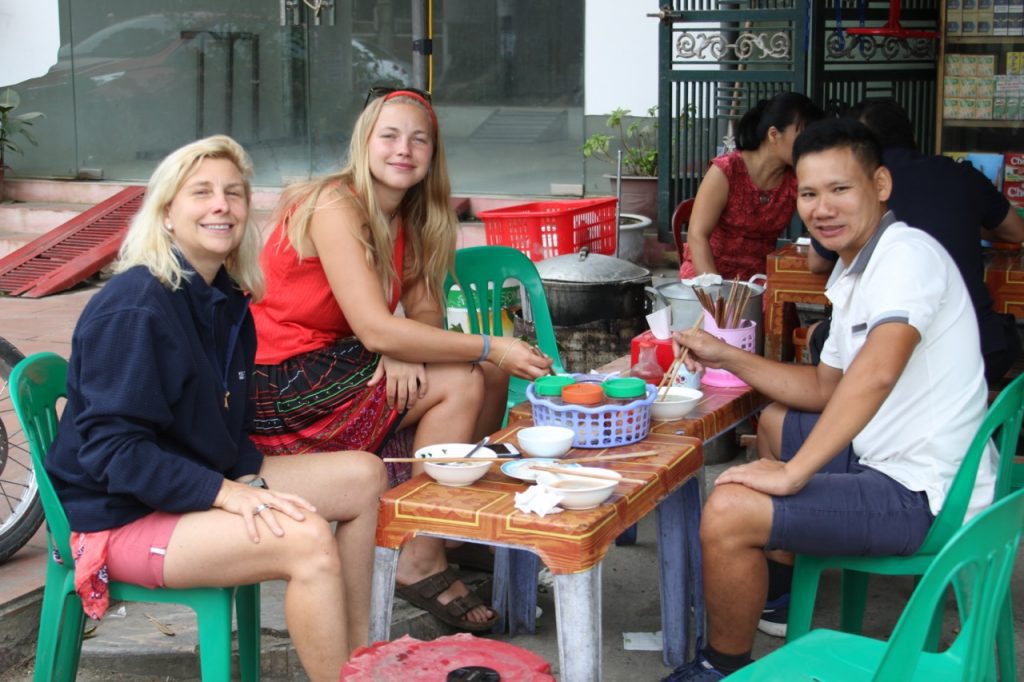
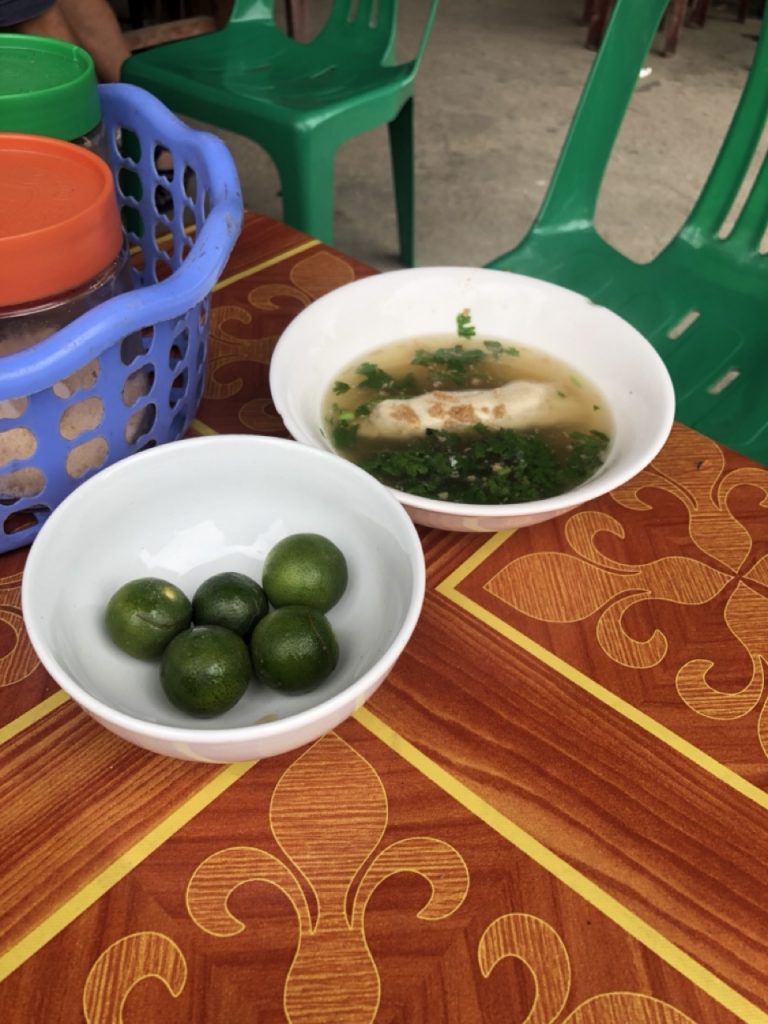
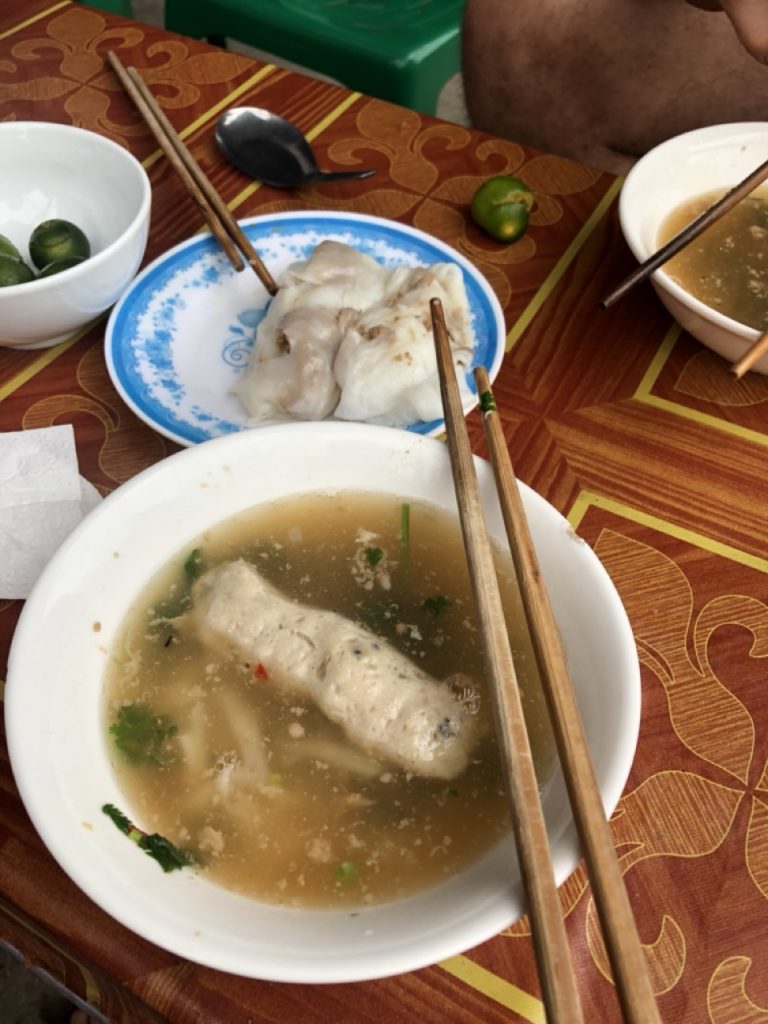
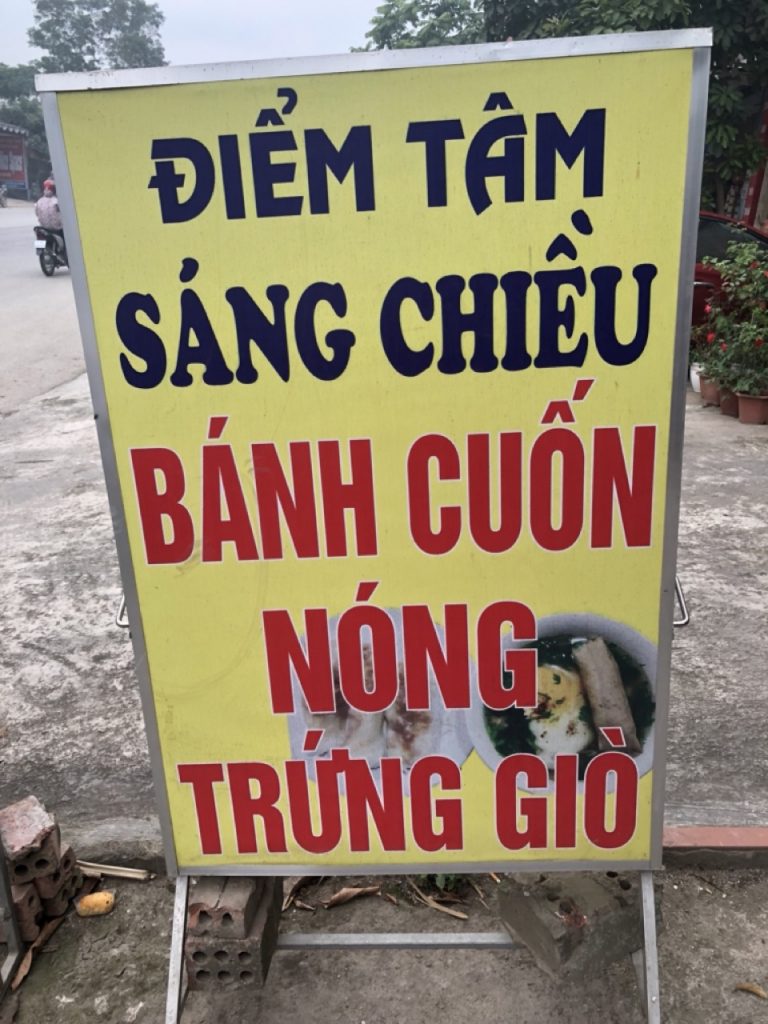
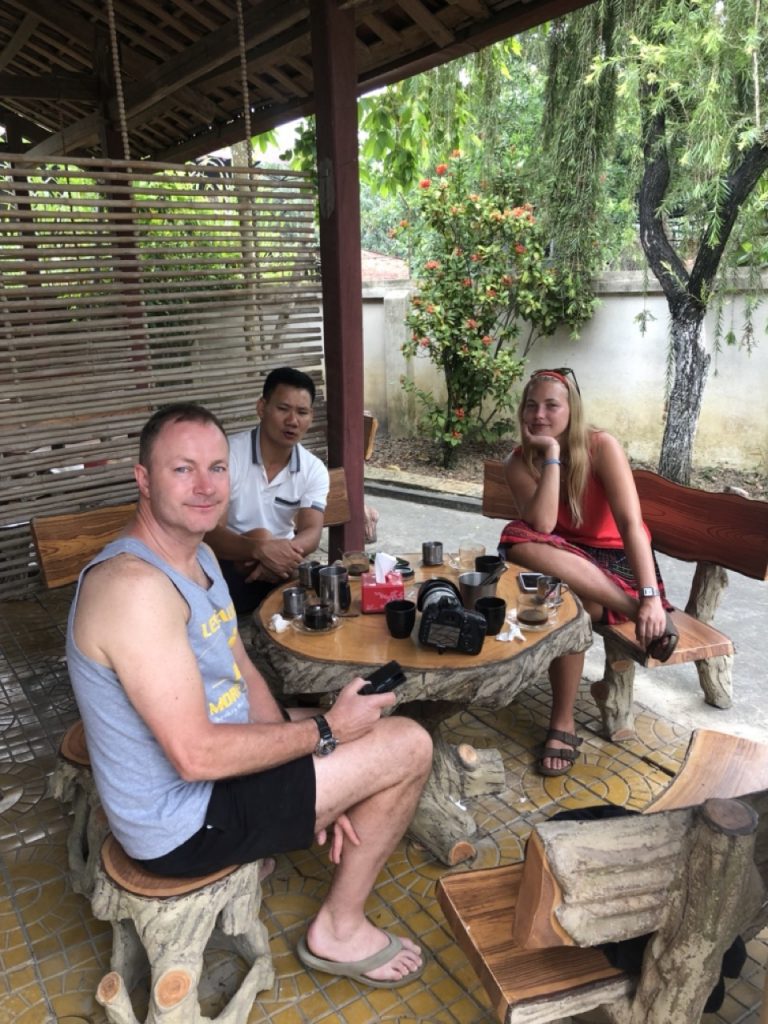
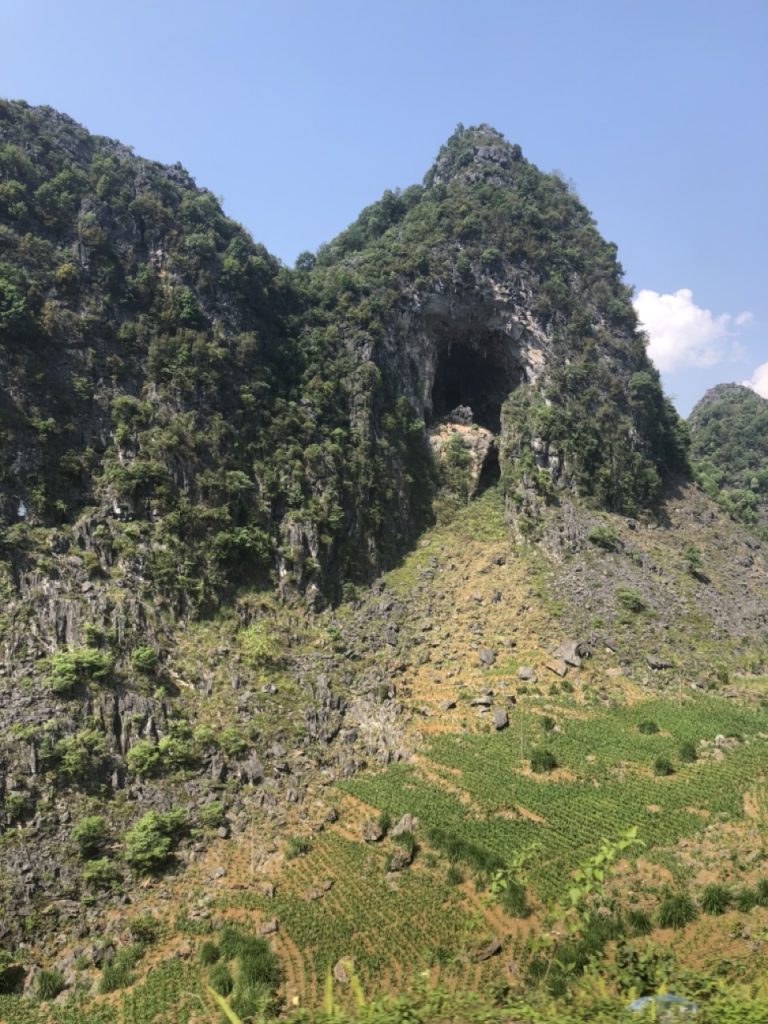
It is difficult to stop raving about the amazing vistas around every corner – just amazing… we stopped off to watch a young man making knives from recycled vehicle parts – really cool – so we bought about 4 of them! He offered some delicious tea.
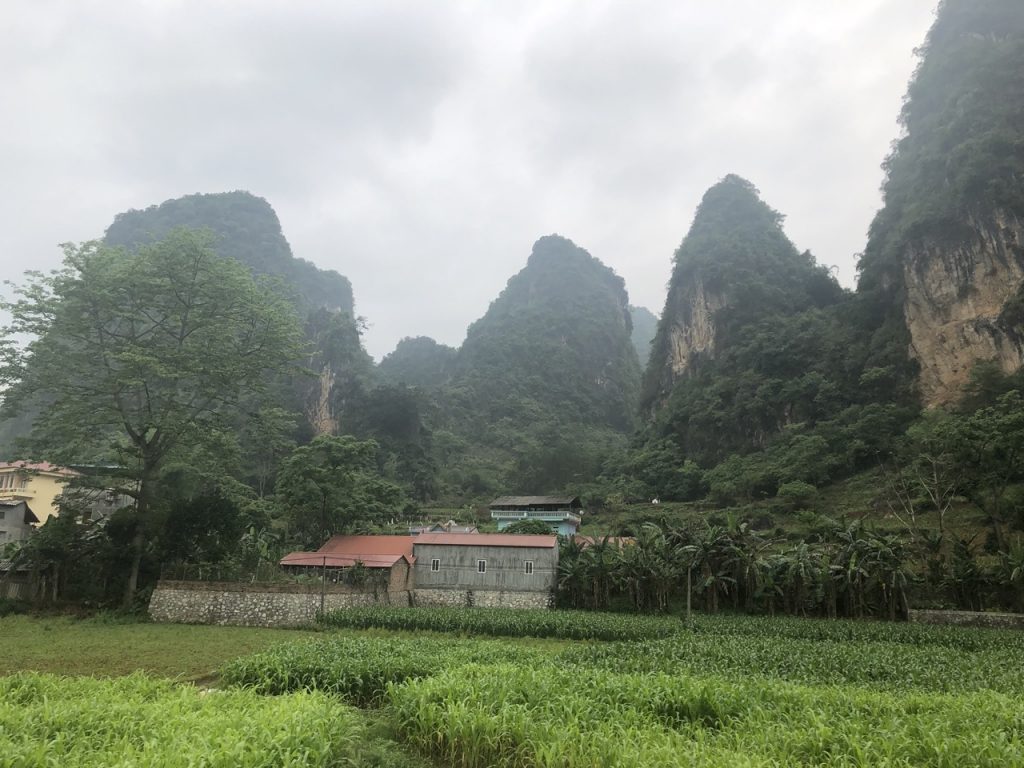
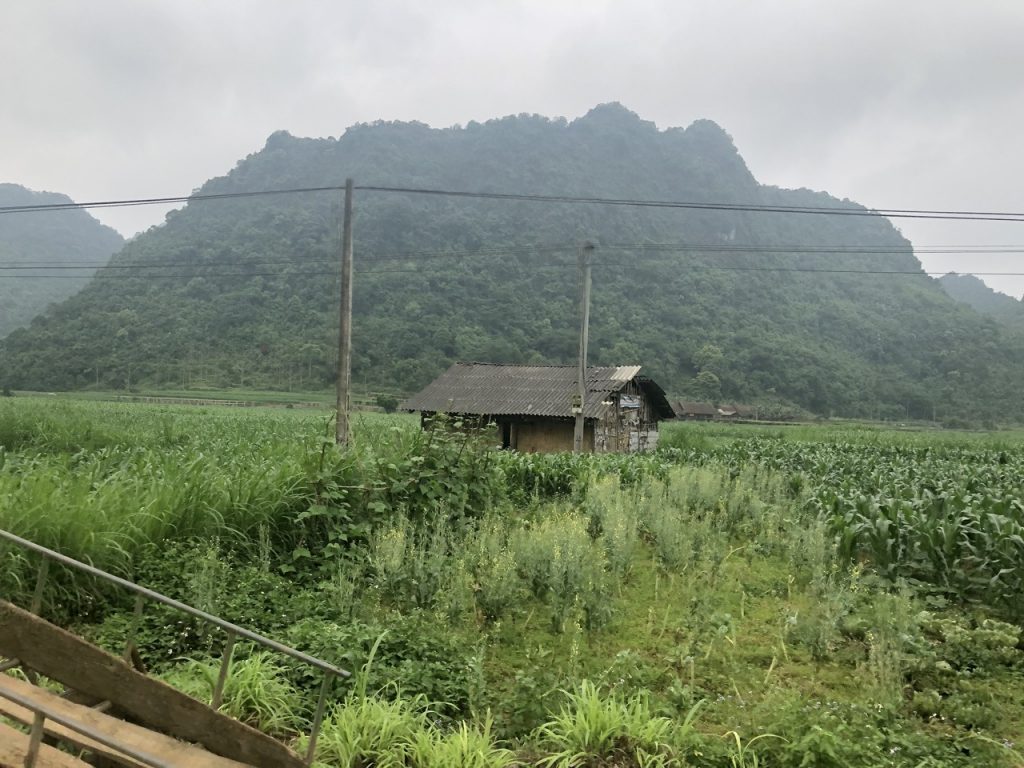
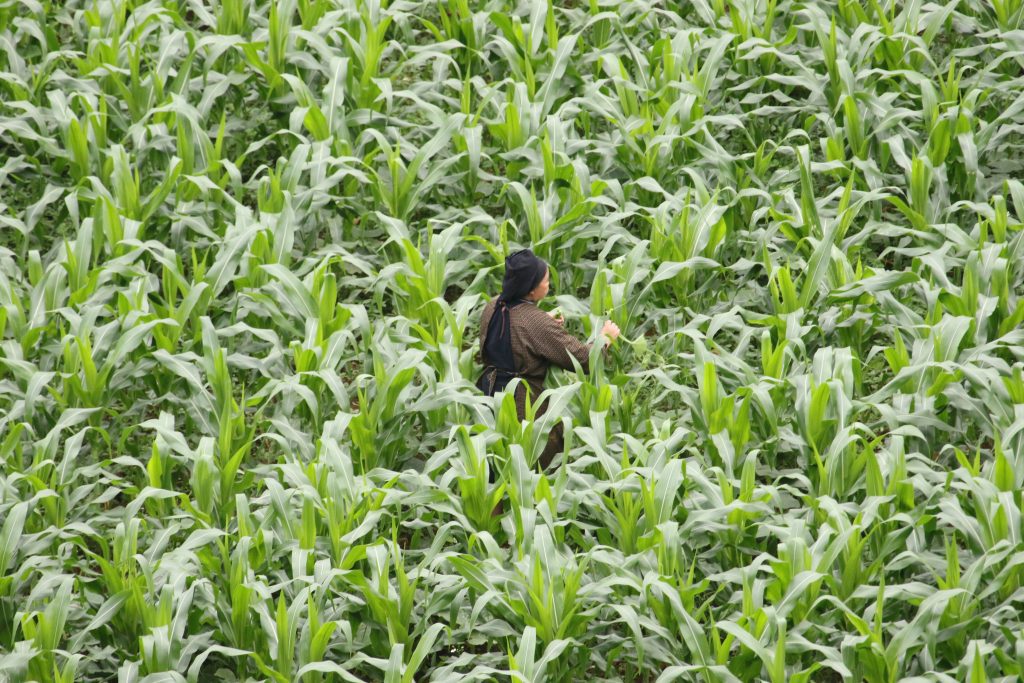
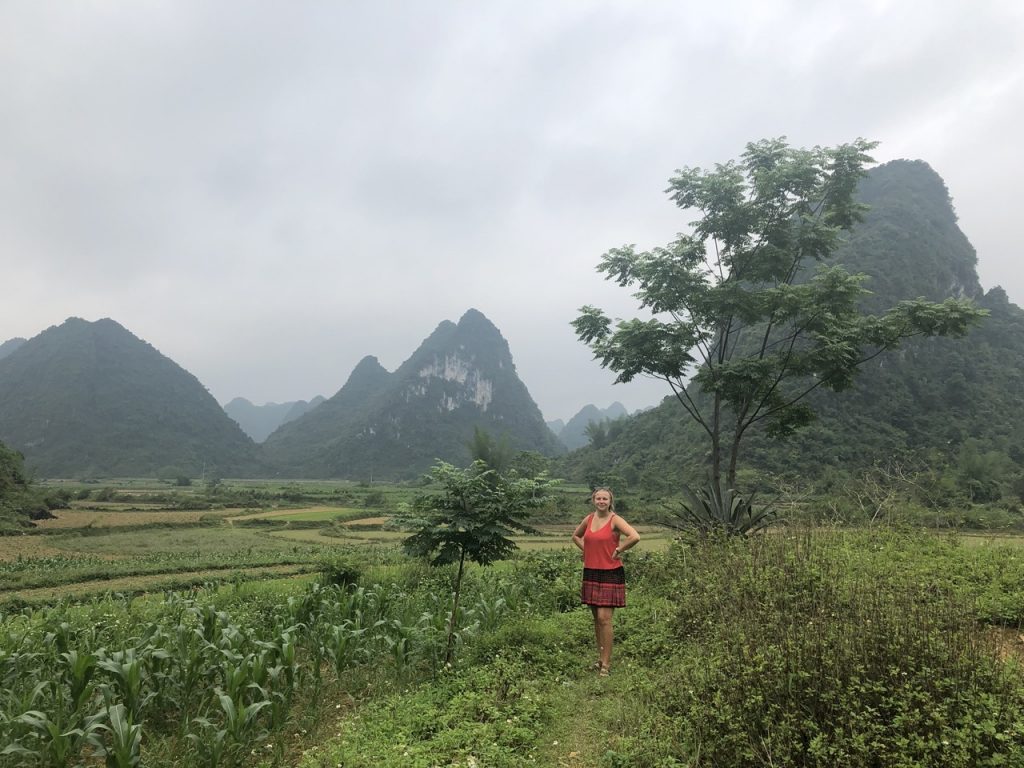
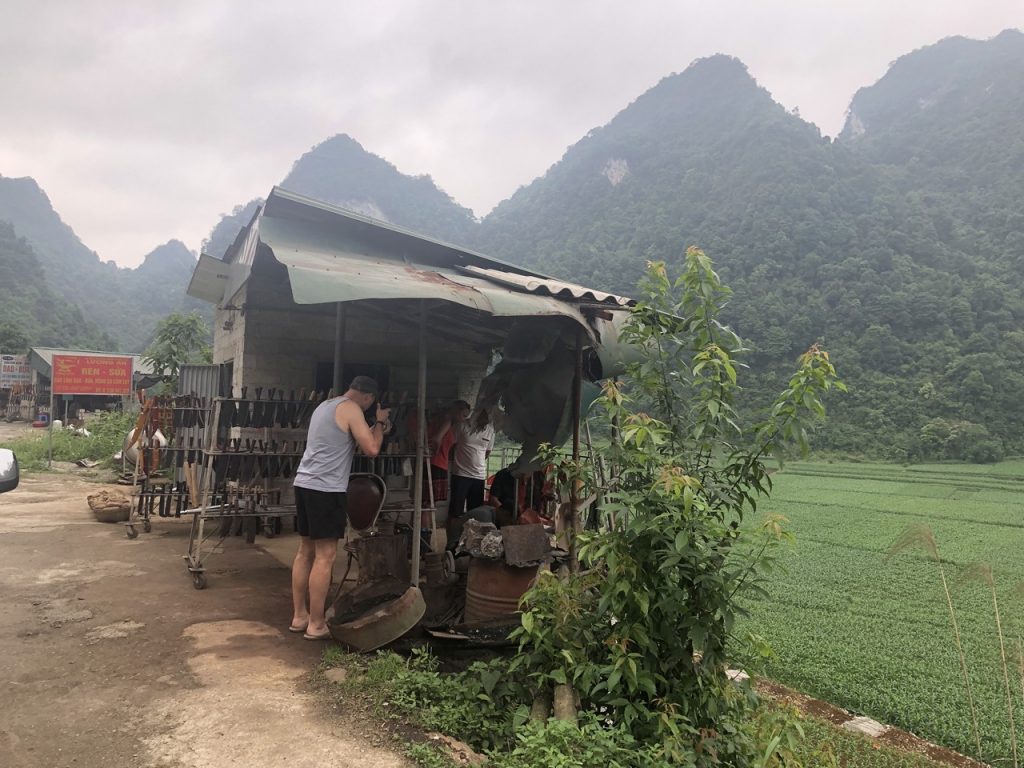
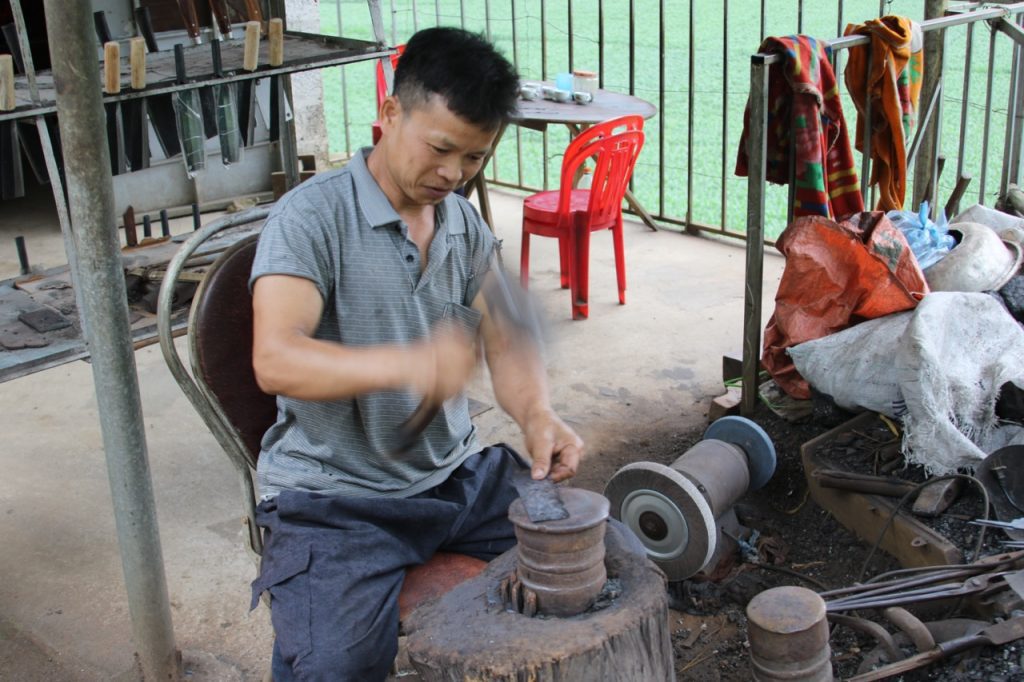
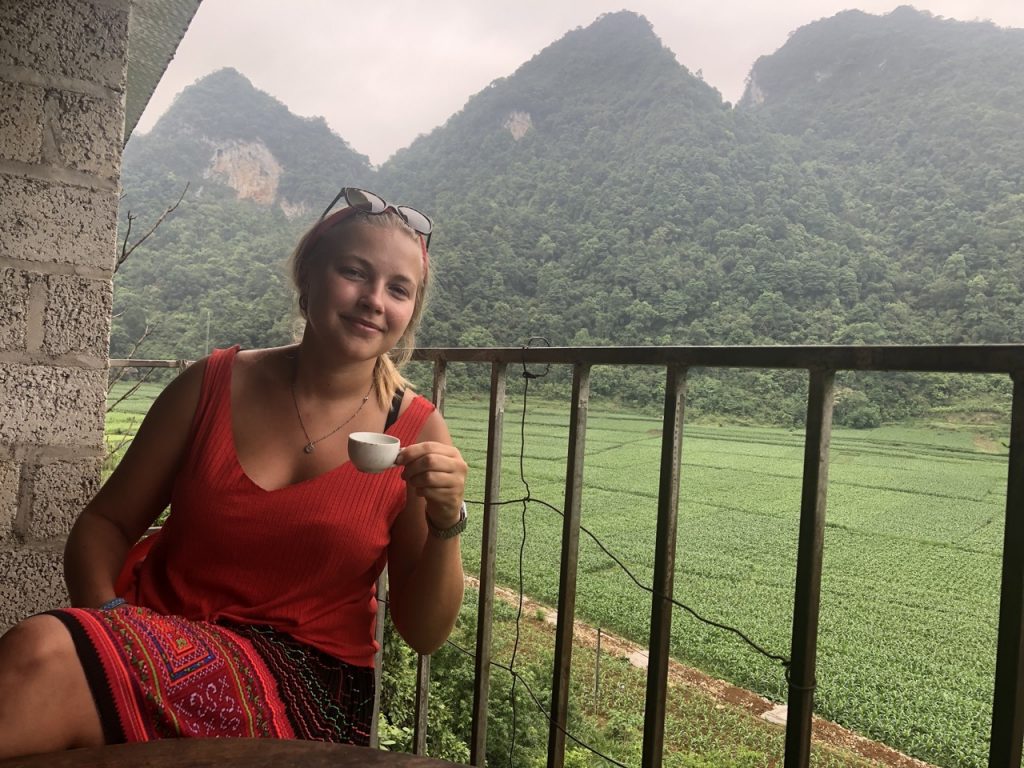
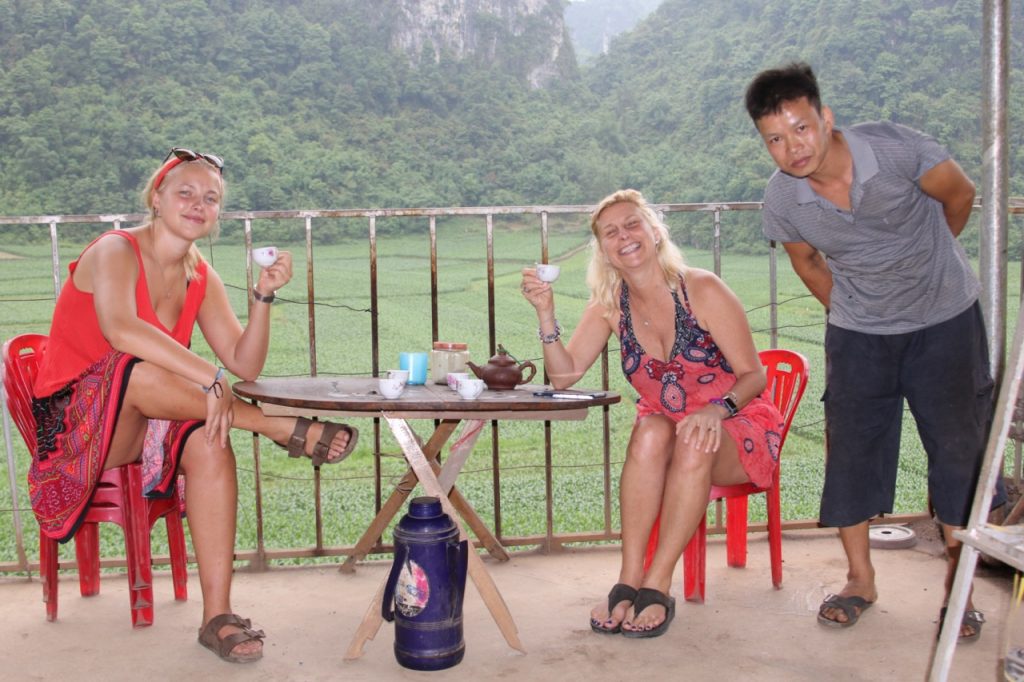
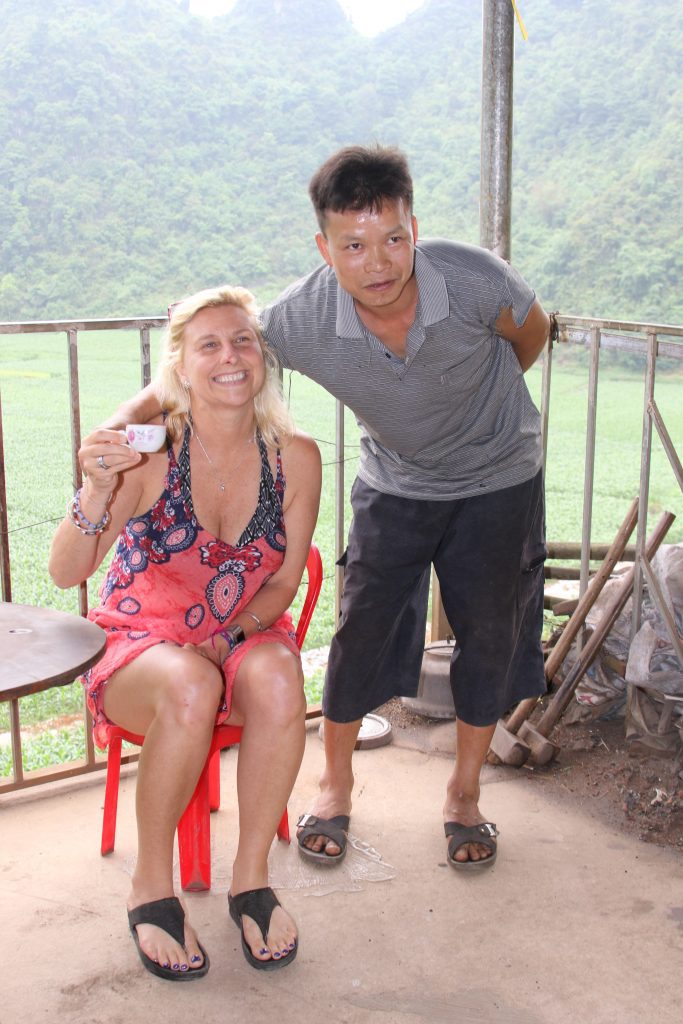
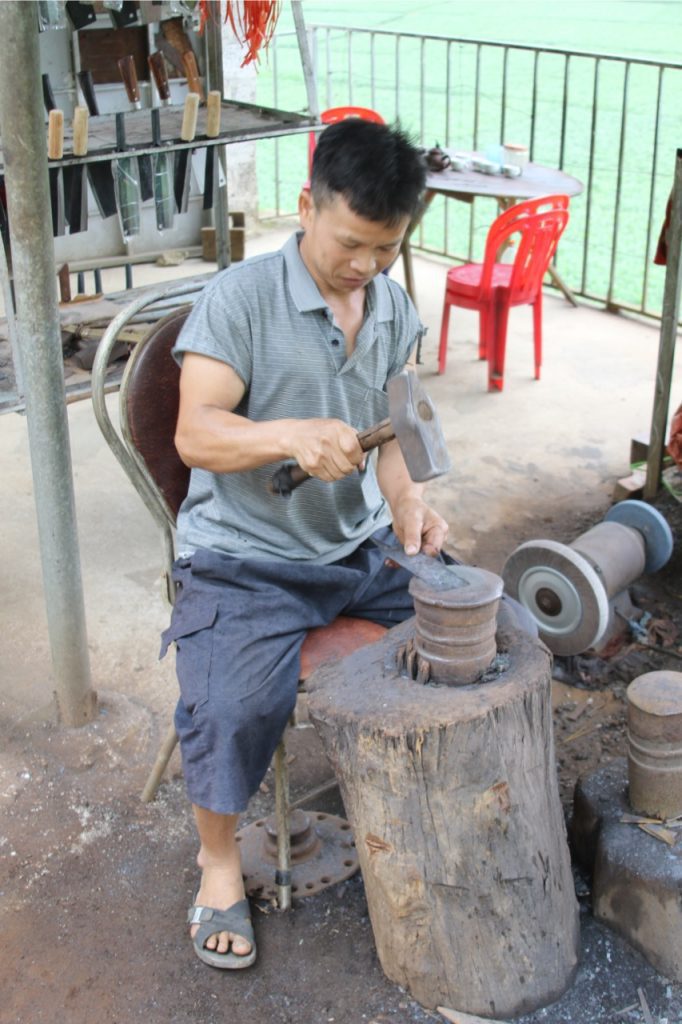
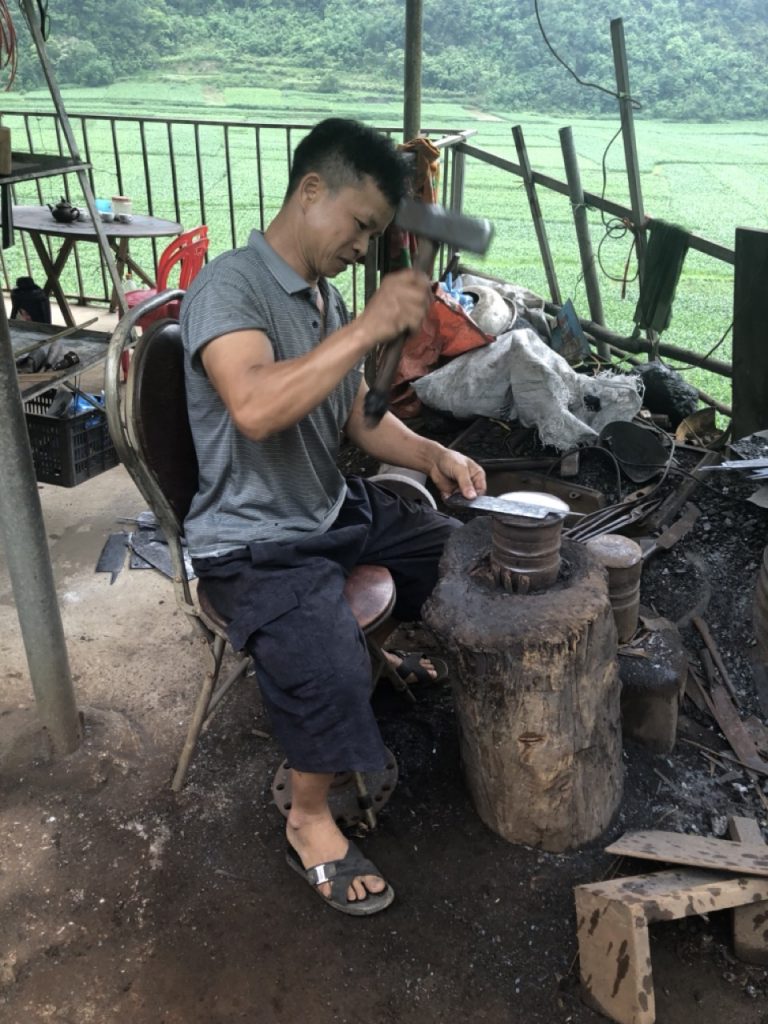
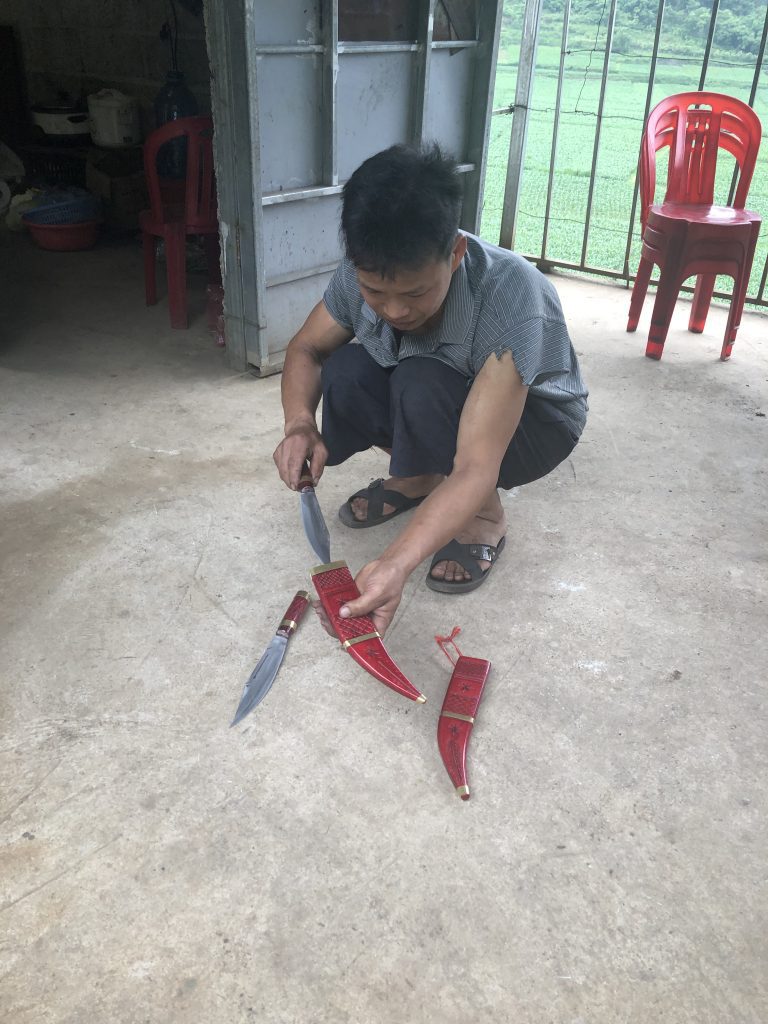
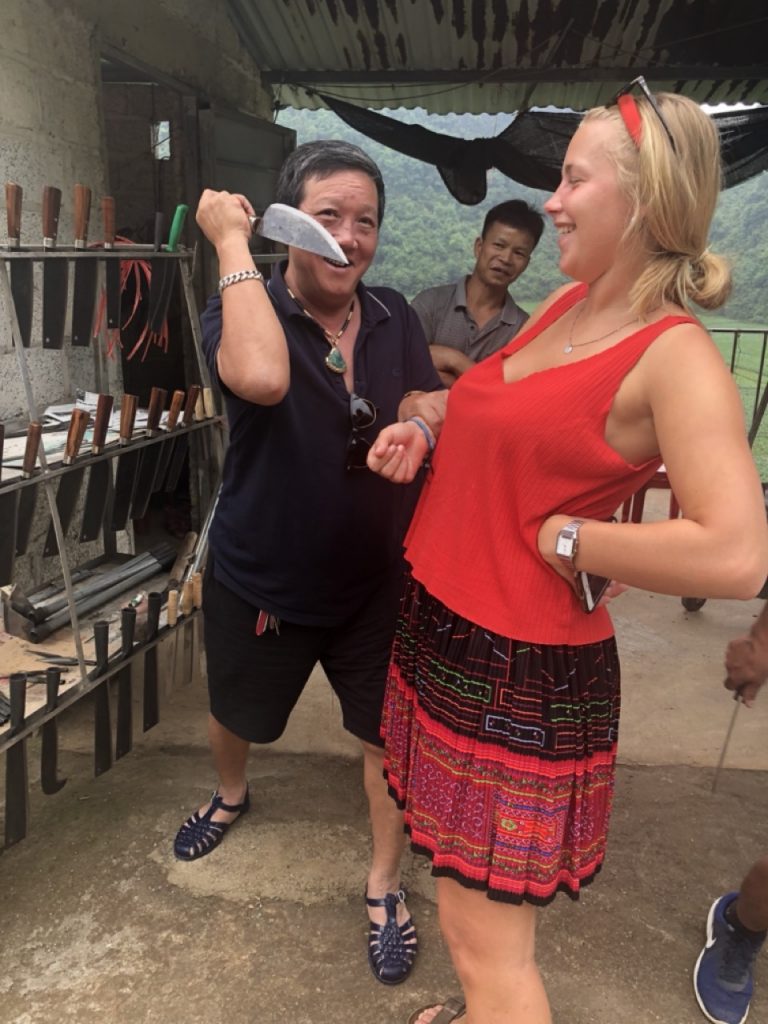
The next stop was a highlight that we had been looking forward to – the spectacular Ban Gioc Falls. Ban Gioc – Detian Falls or Ban Gioc Falls is a collective name for two waterfalls on the Quây Sơn River that straddle the international border between China and Vietnam; more specifically located between the Karst hills of Daxin County, Guangxi, and Trùng Khánh District, Cao Bằng Province. Its is 30 metres high and spans 300 metres across, making it the widest waterfall in the country. **Note: Mr Linh is now running Ba Be Lake & Ban Gioc Waterfall Tours again. While Vietnam is still bouncing back from Covid, group tours are currently only available on Fridays.** There were many Chinese toursis as the border is the waterfall – they were all taking loads of photos of us!
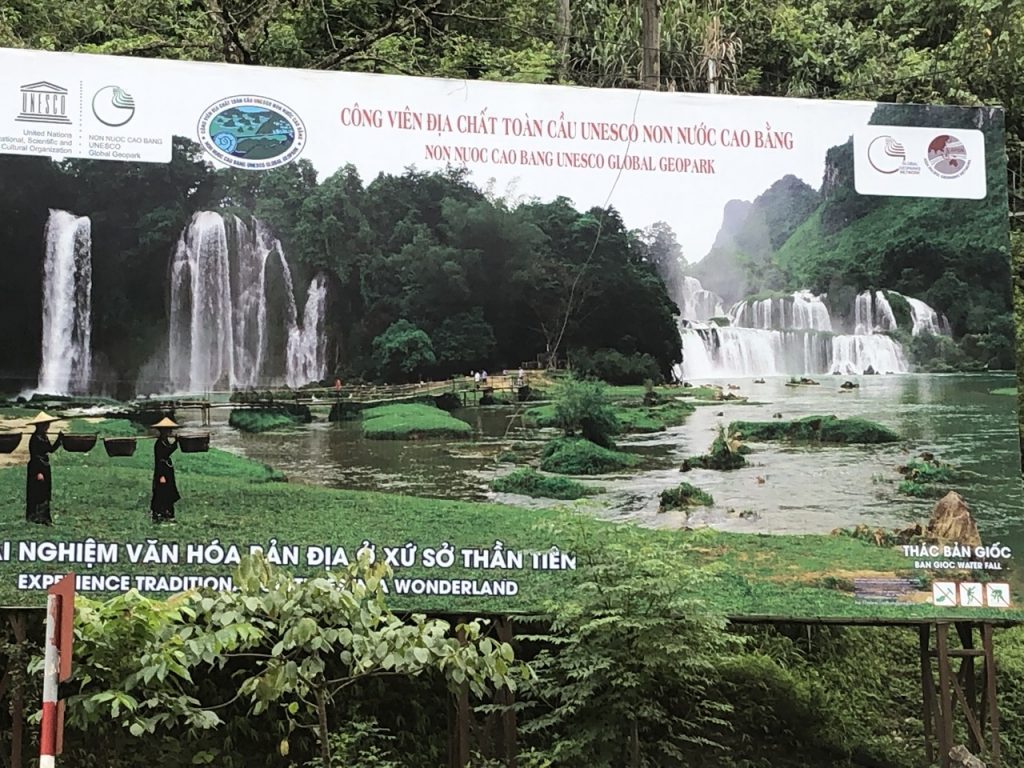
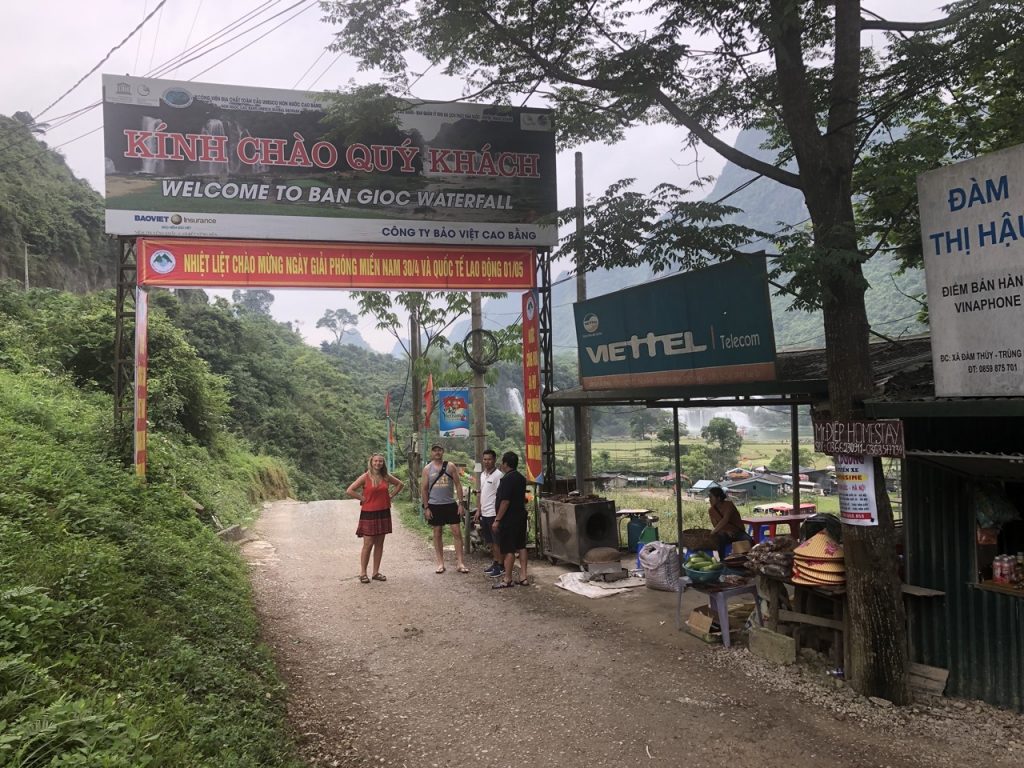
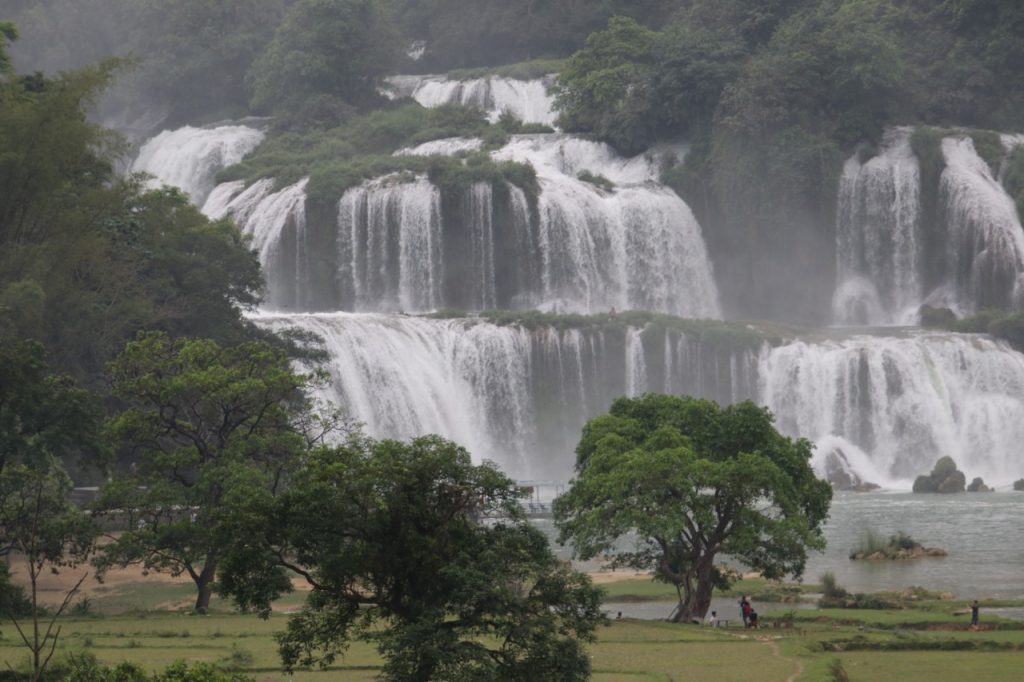
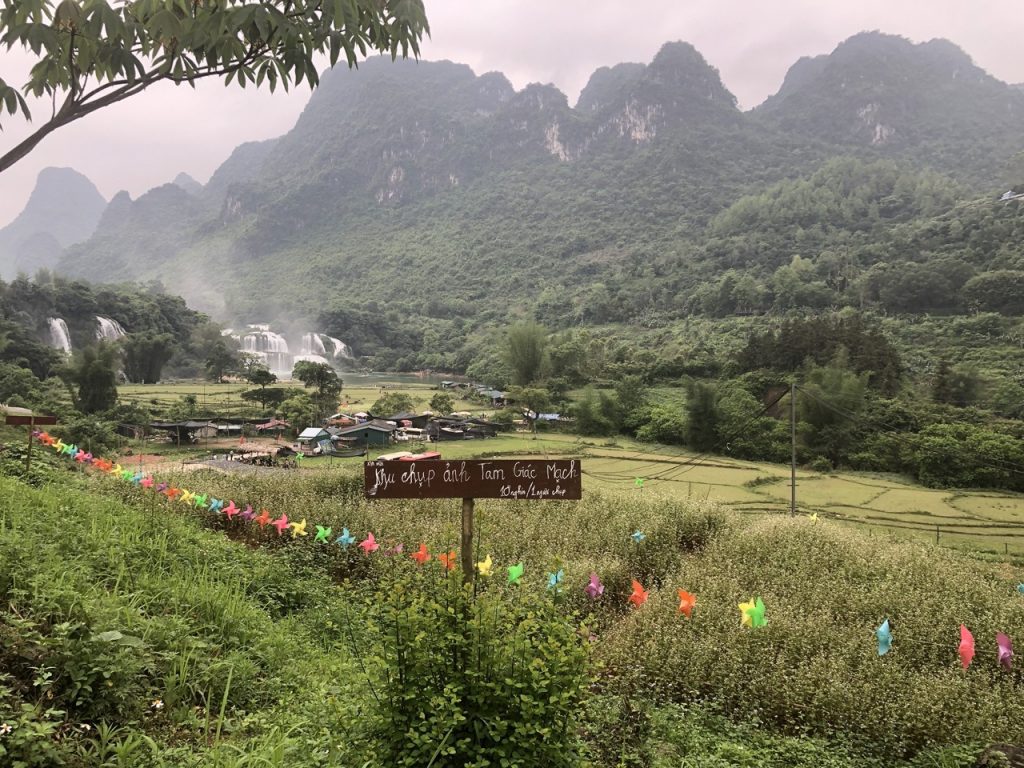
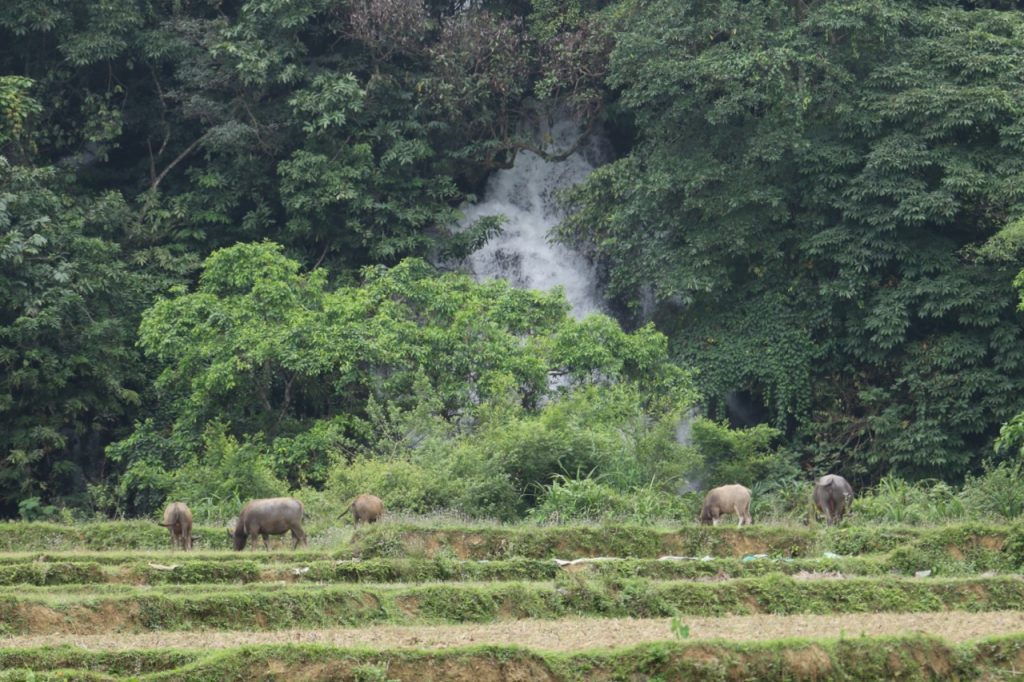
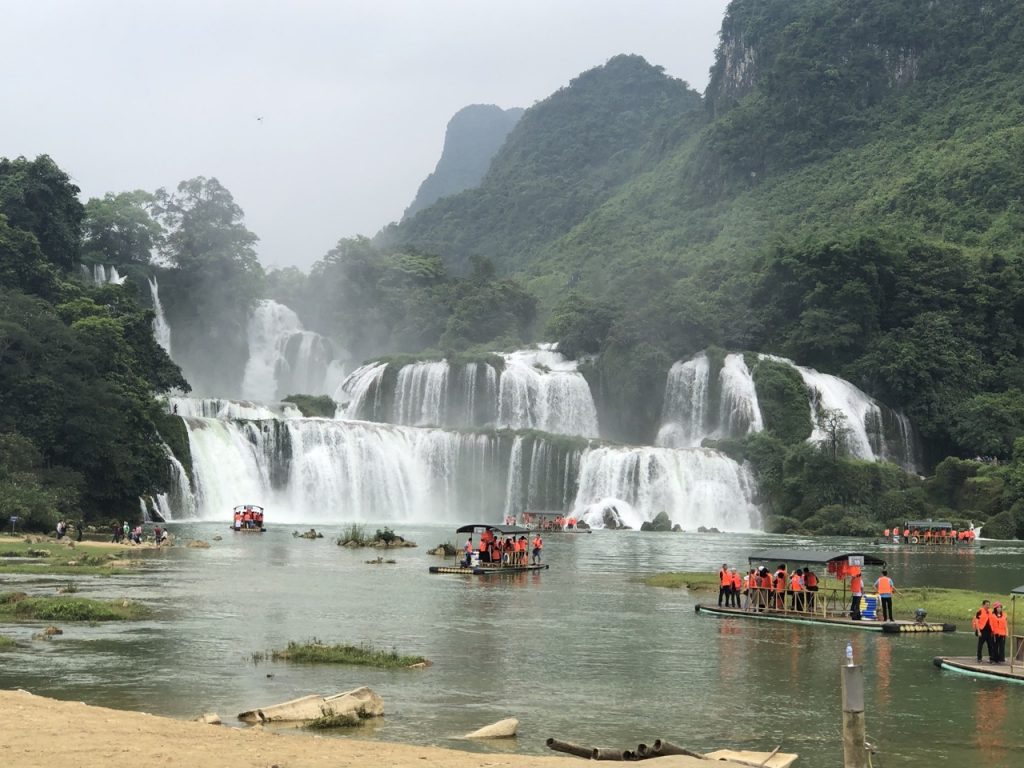
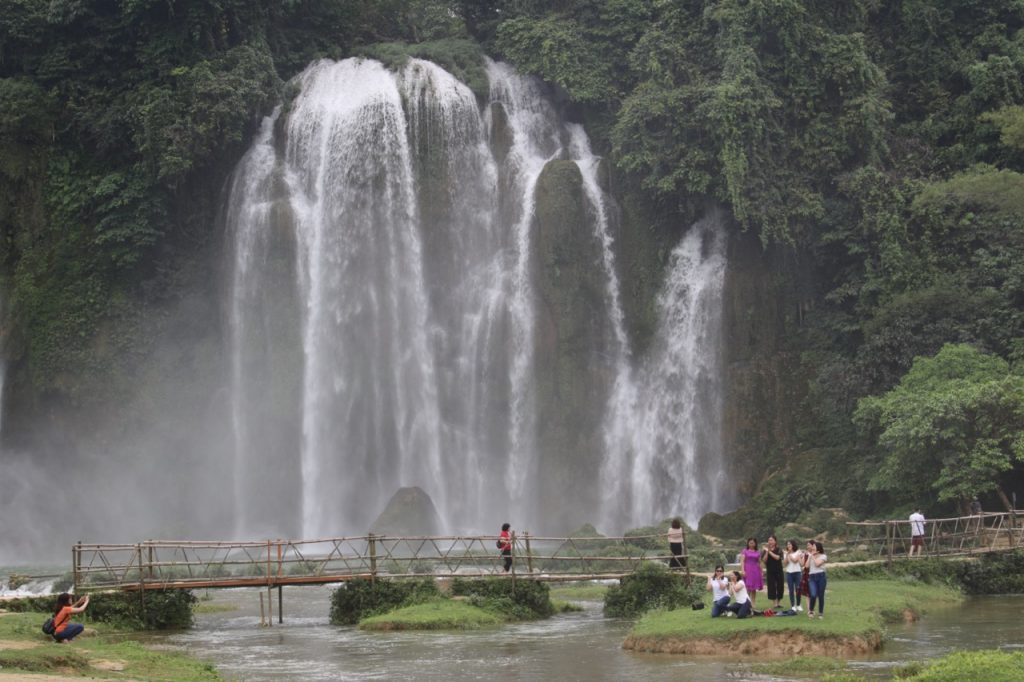
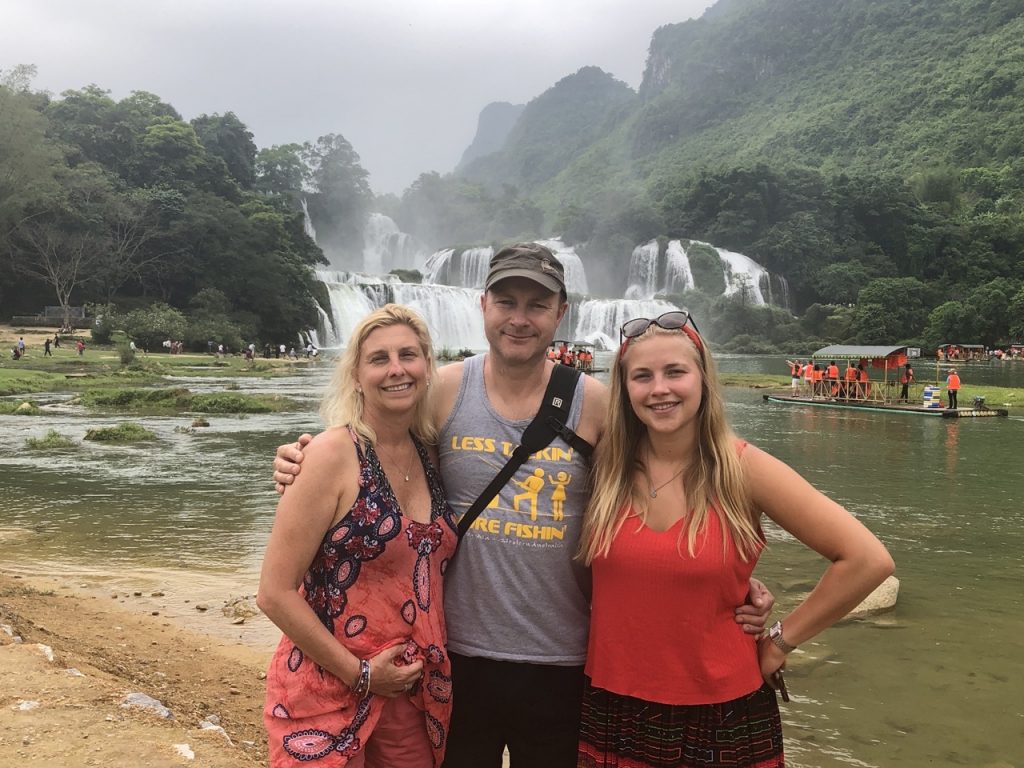
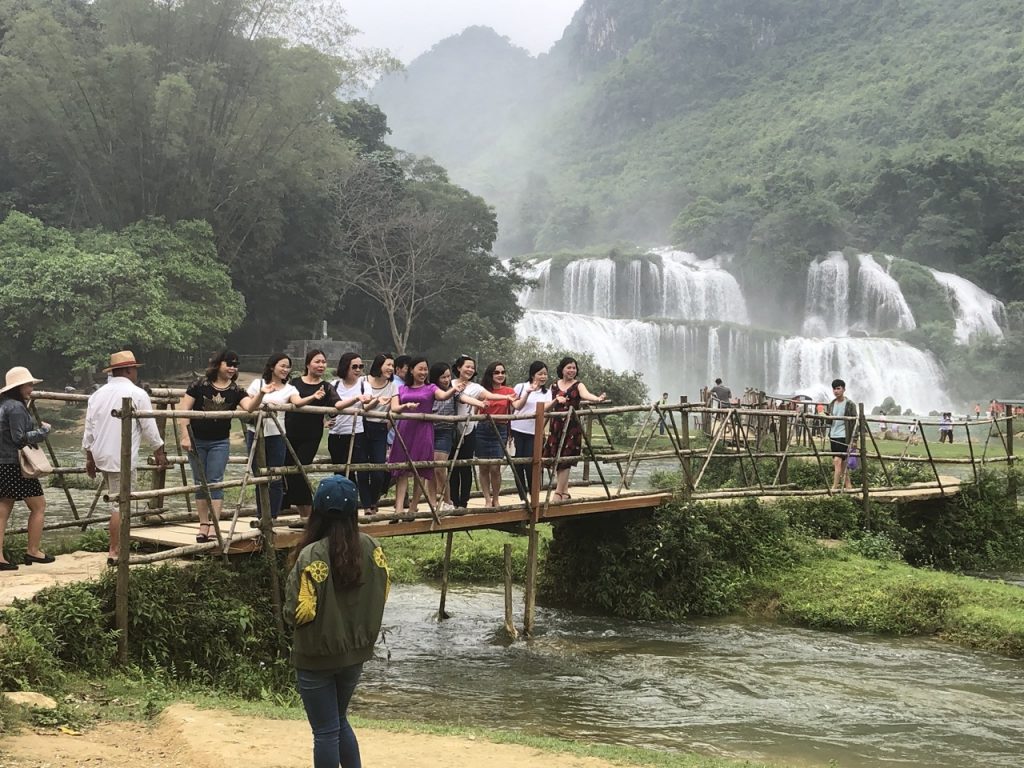
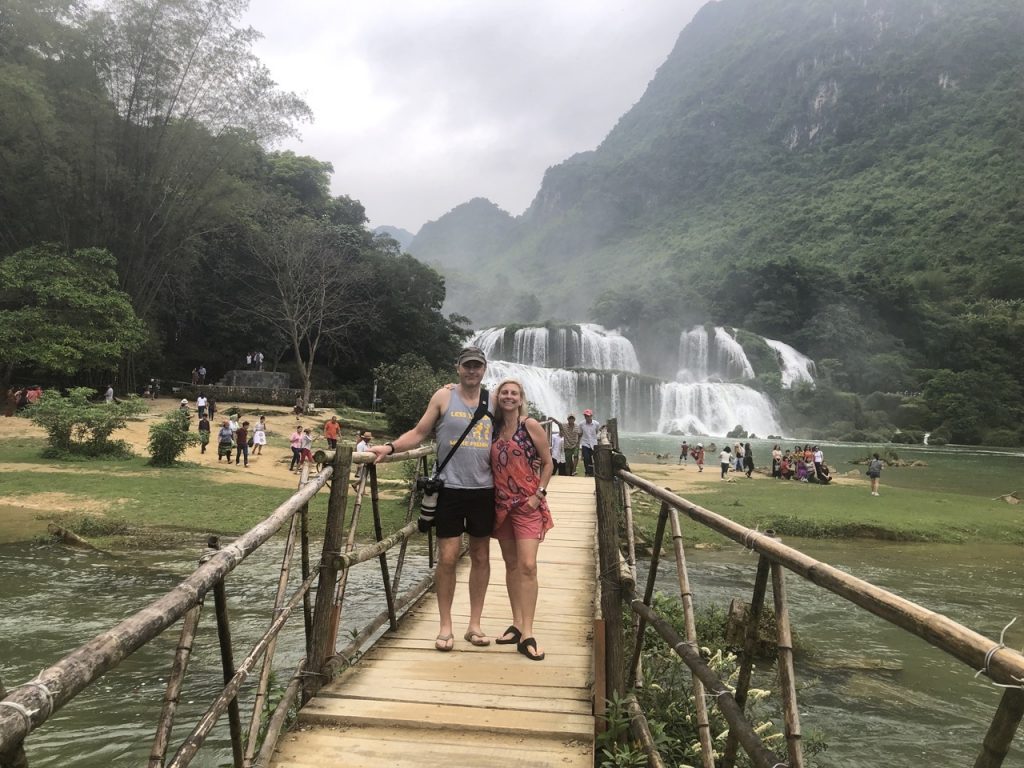
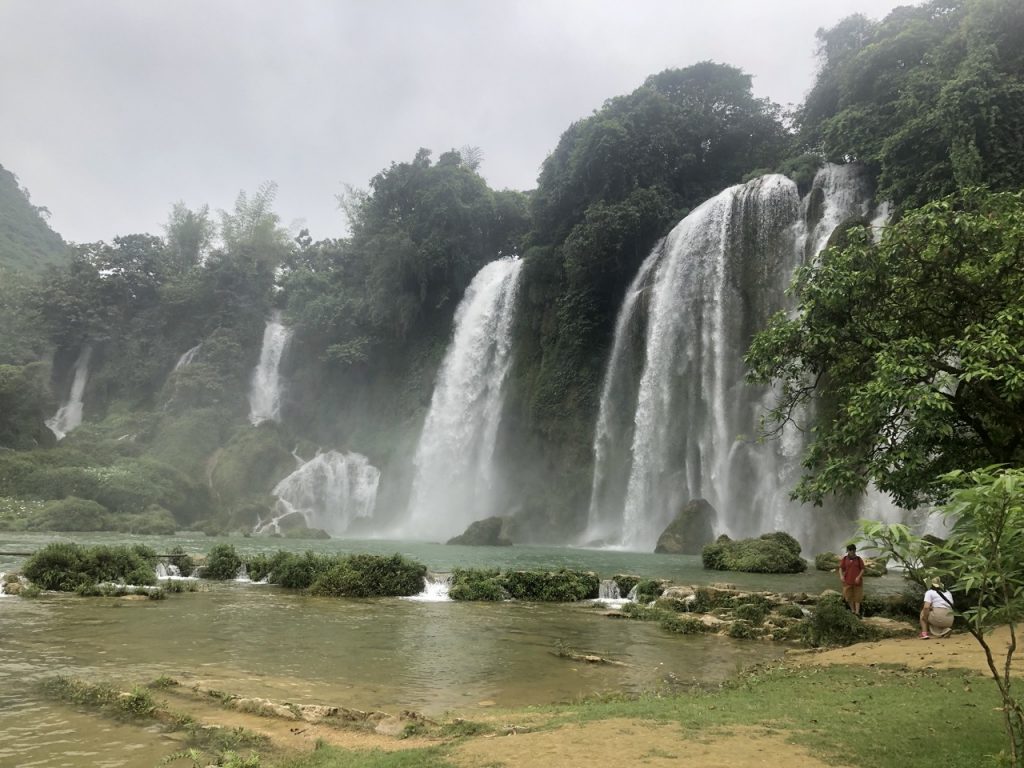
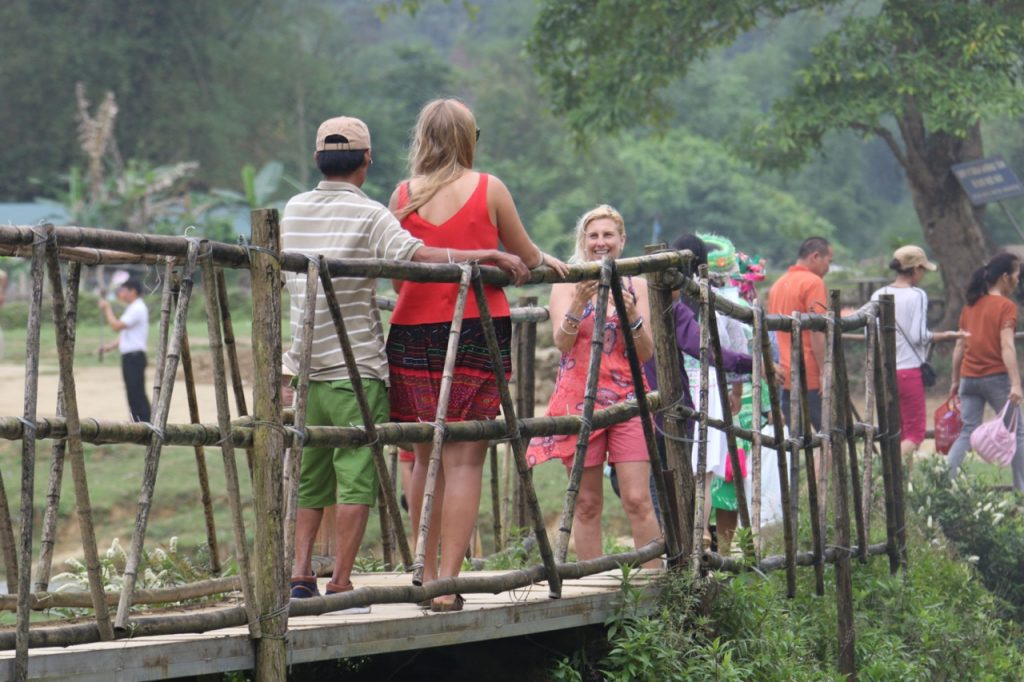
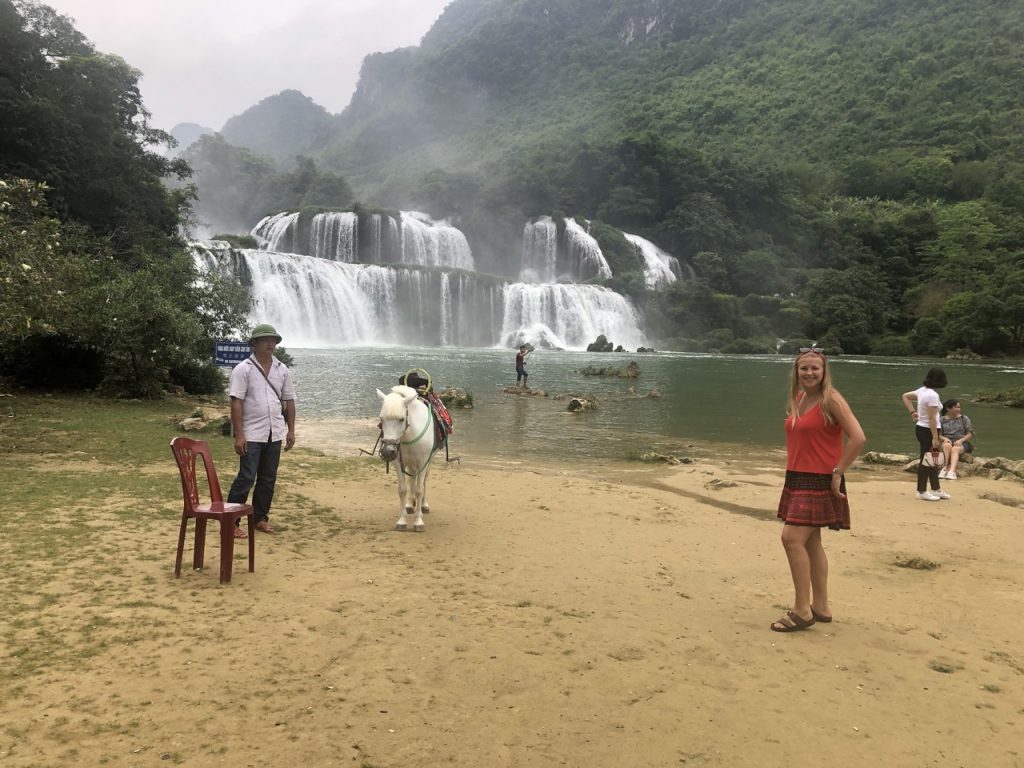
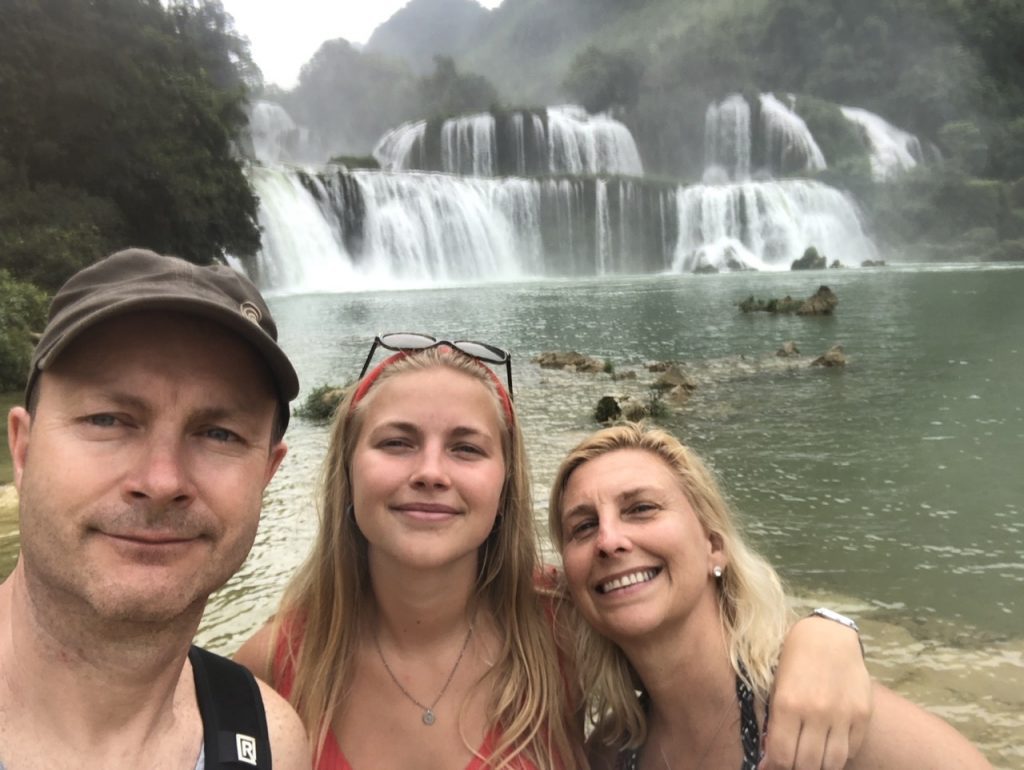
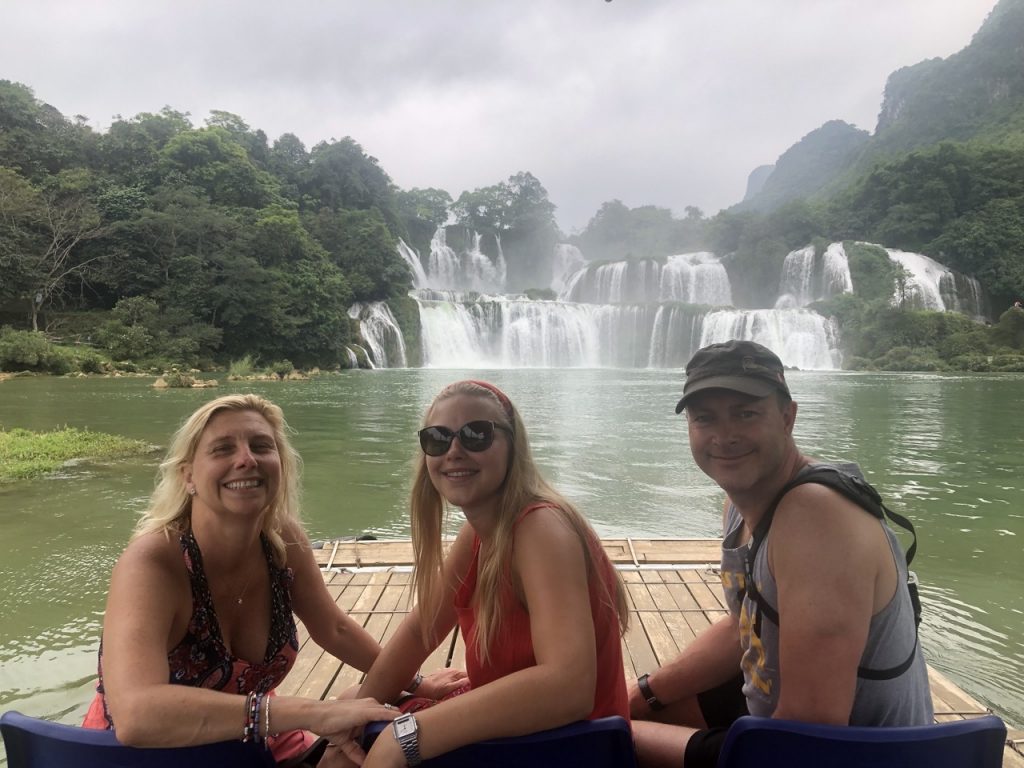

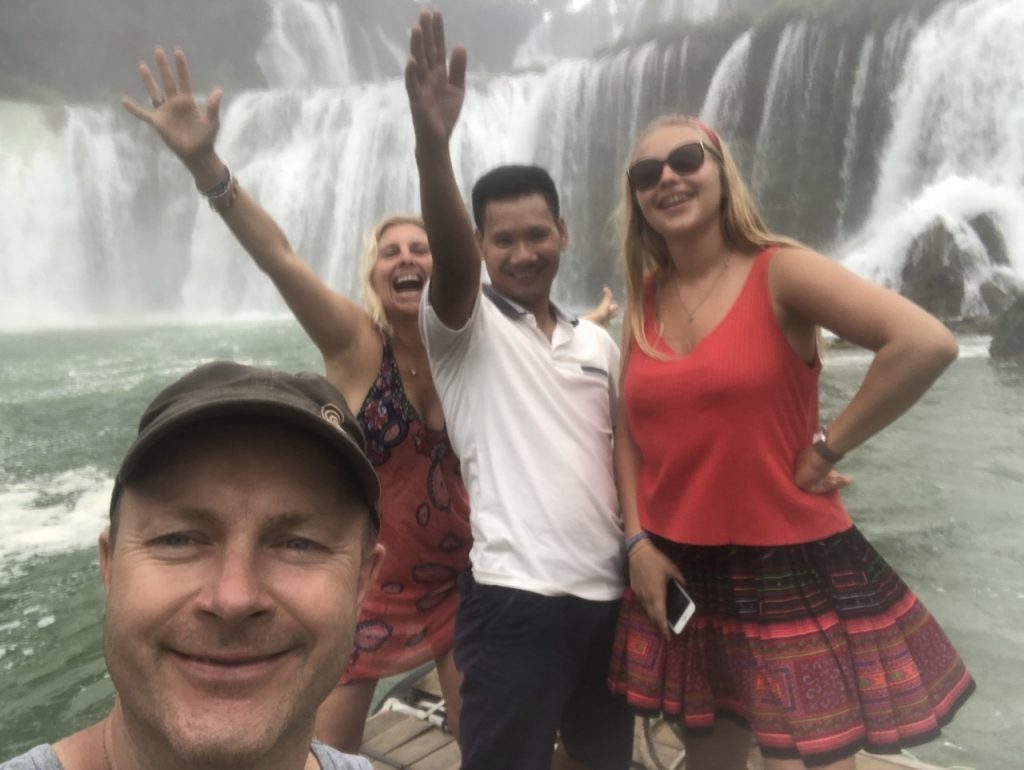
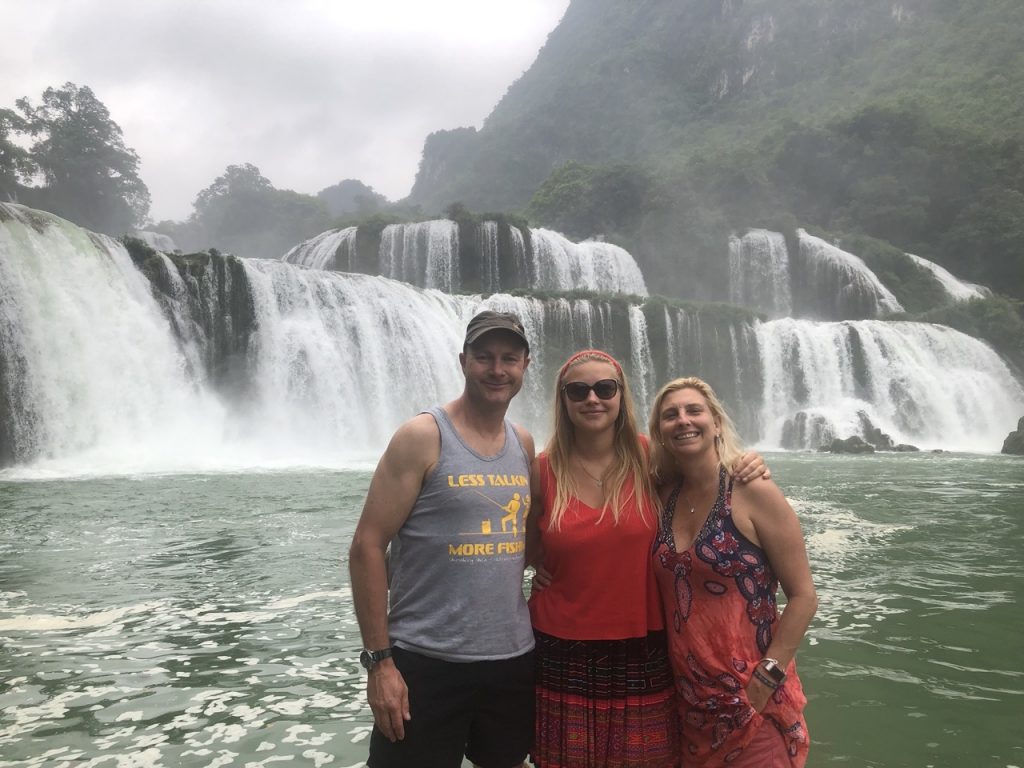
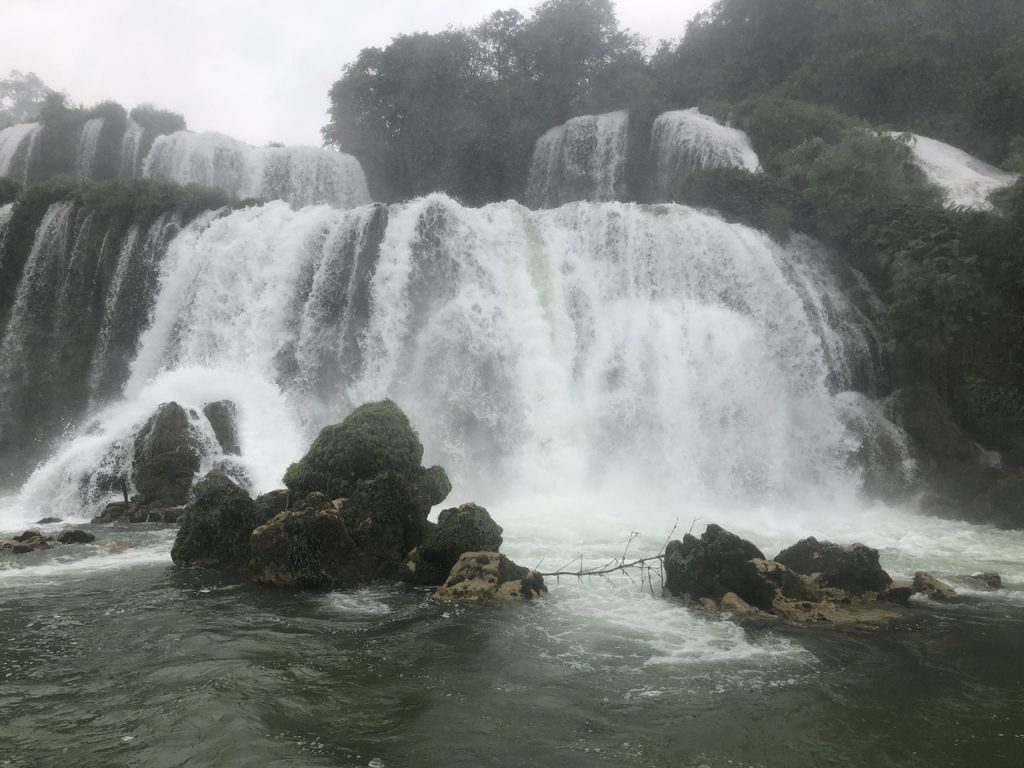
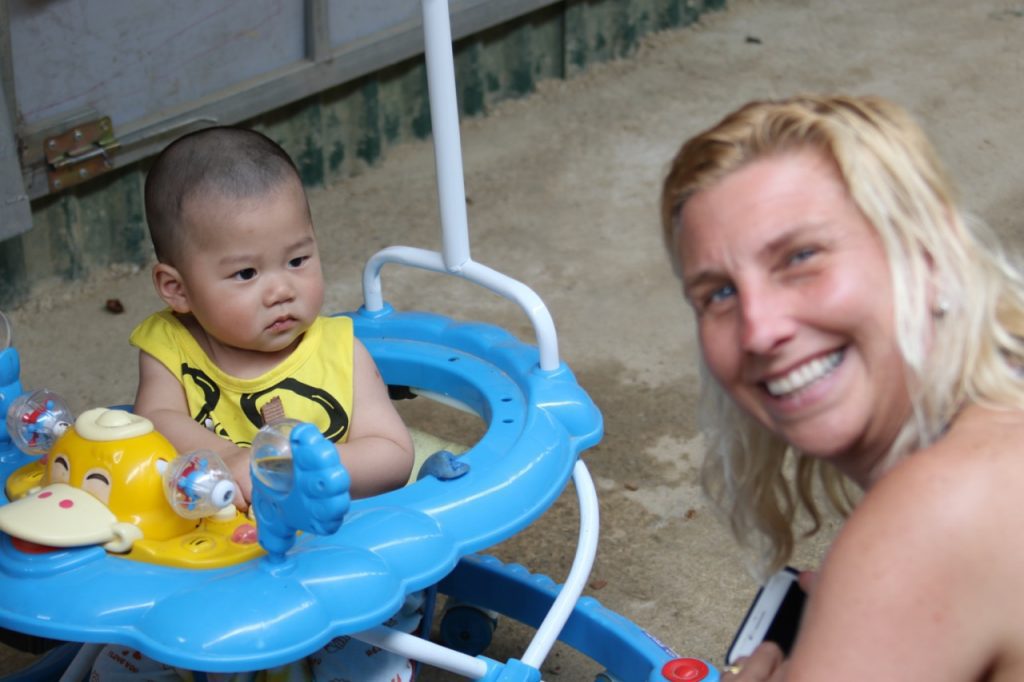
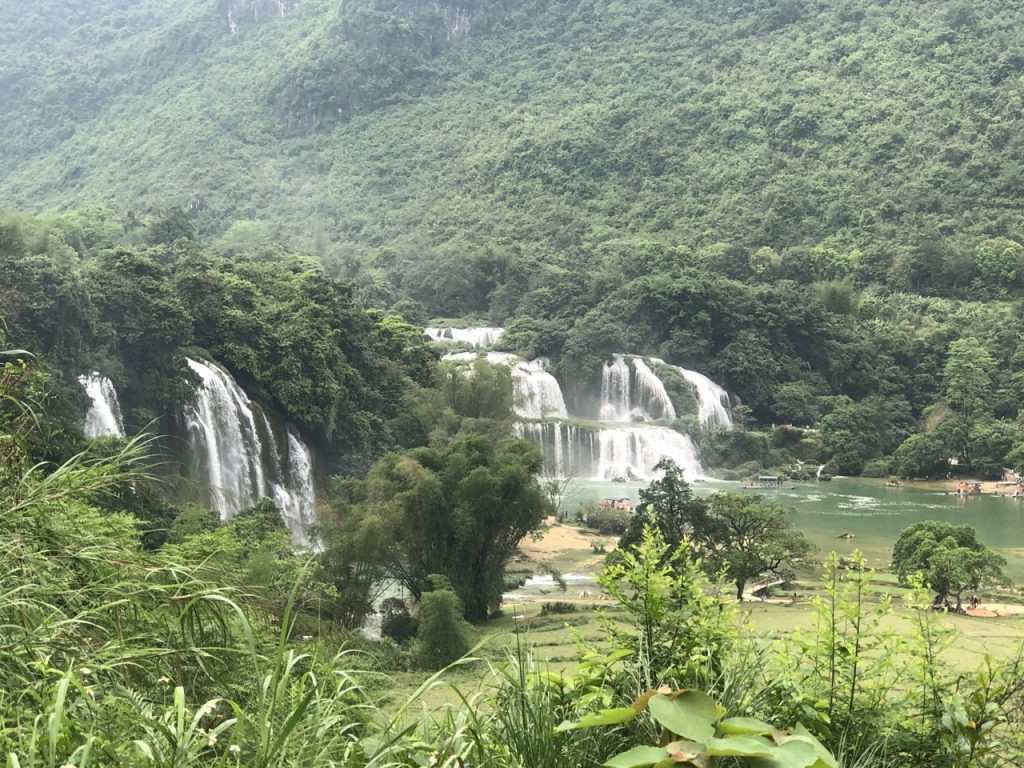
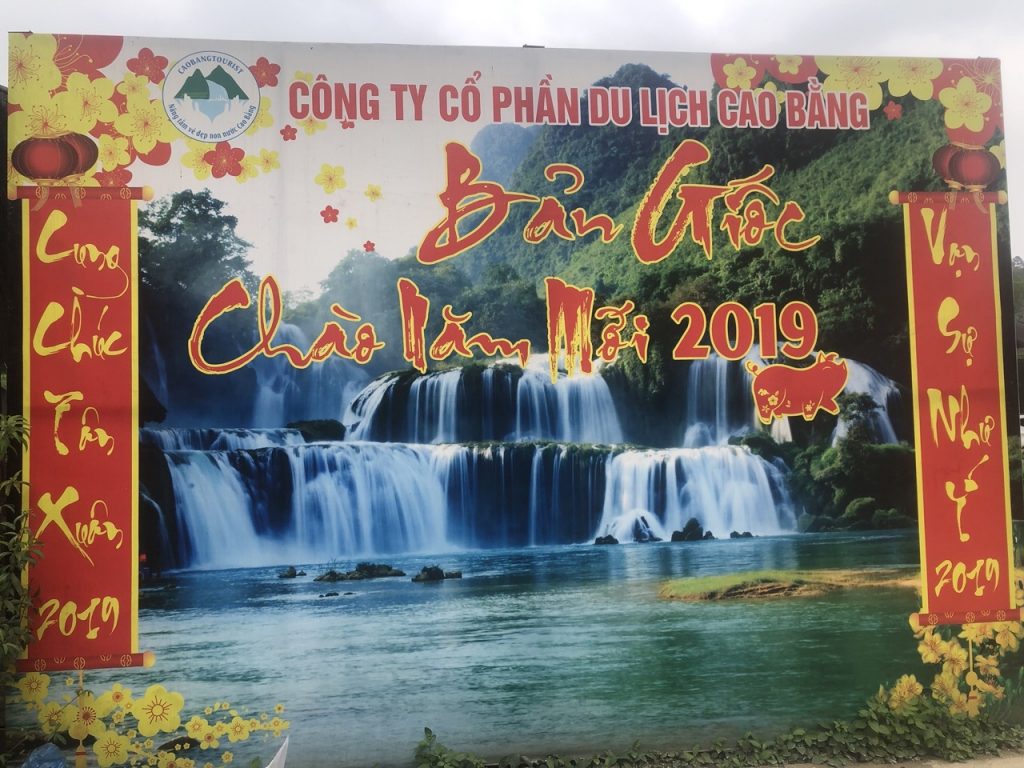
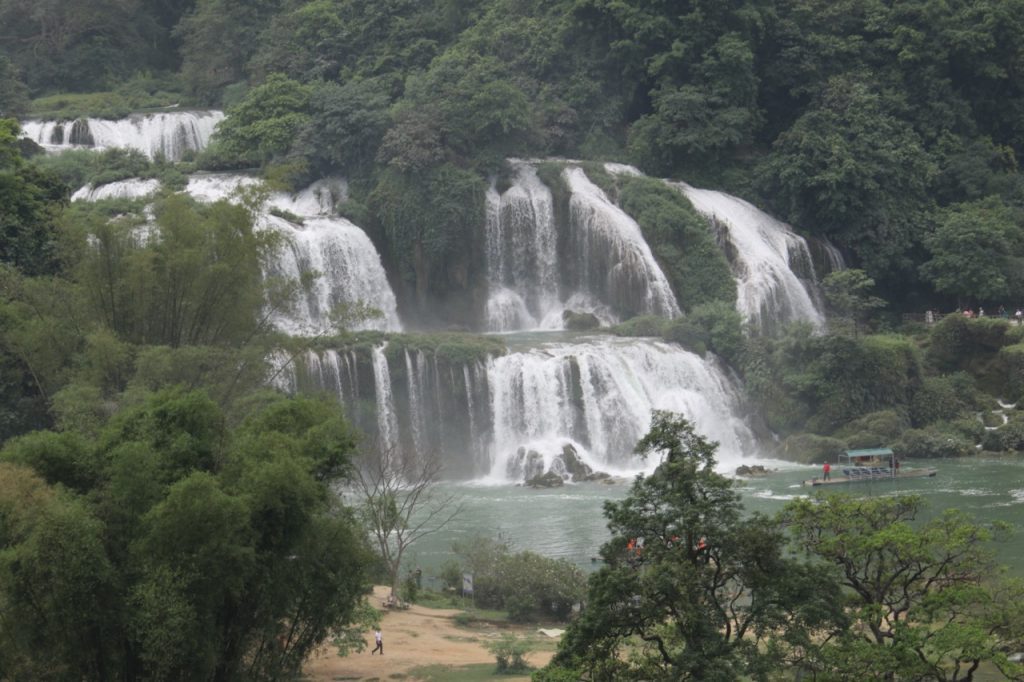
The boat trip is worth doing but we did get a bit wet!
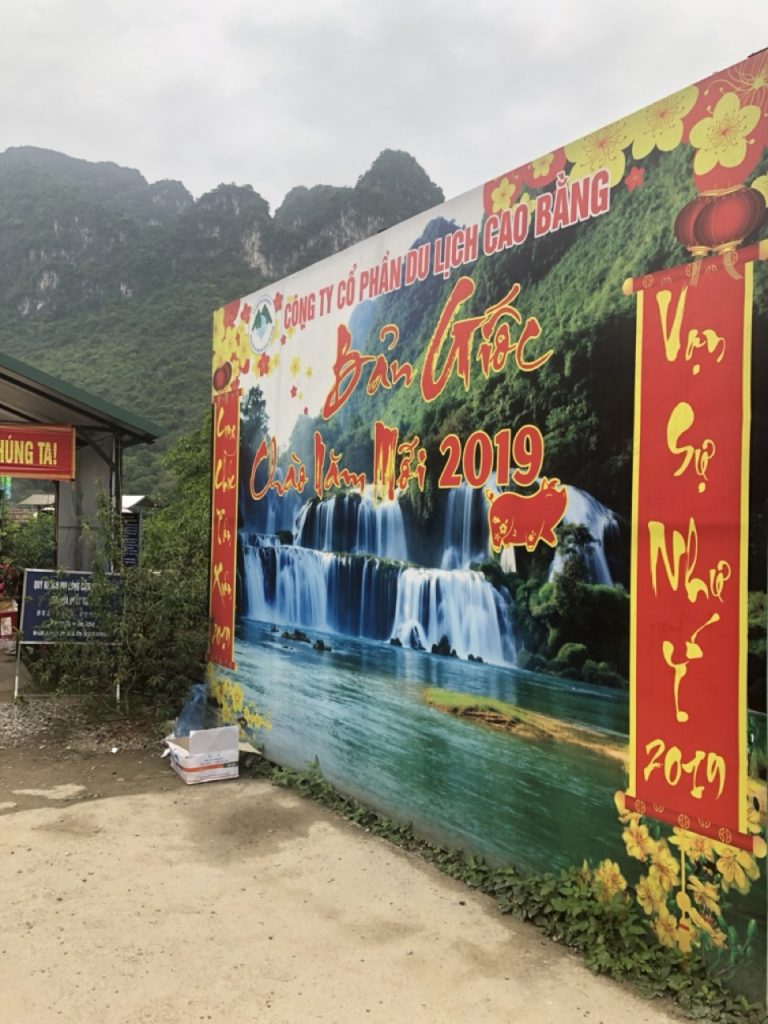
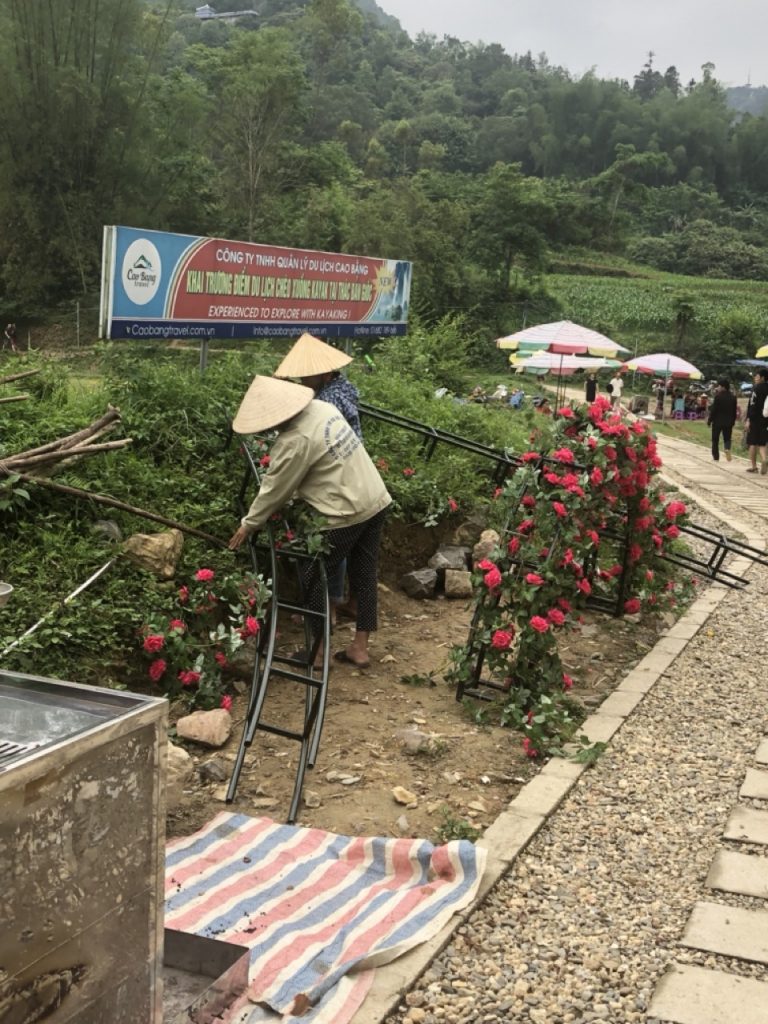
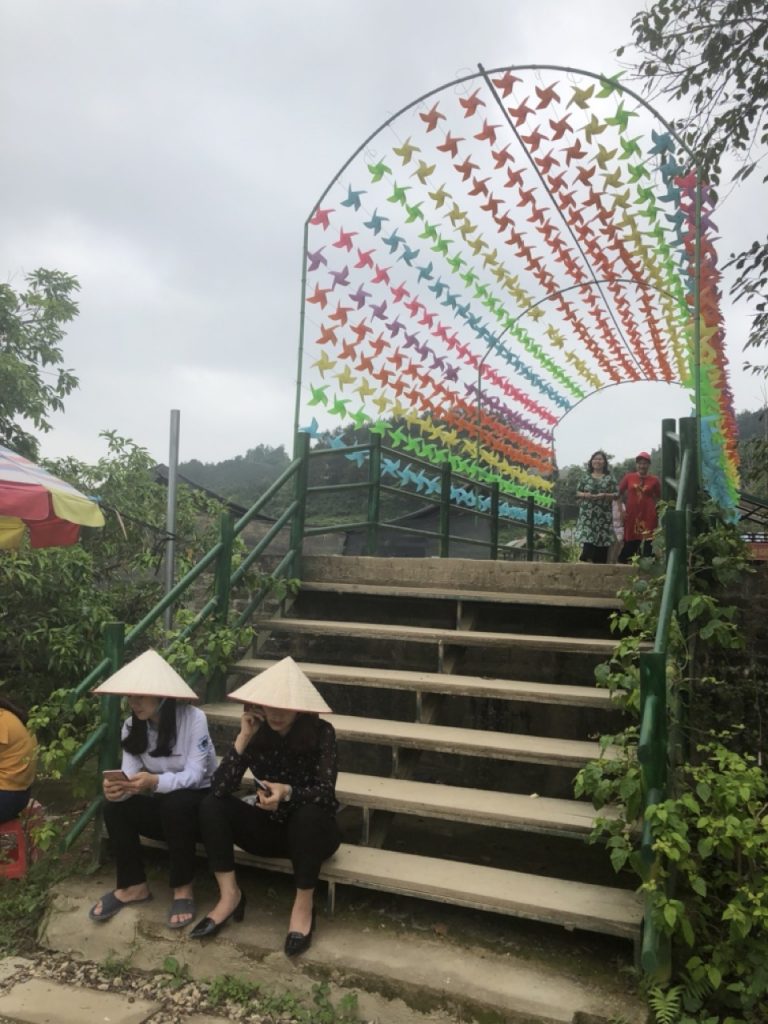
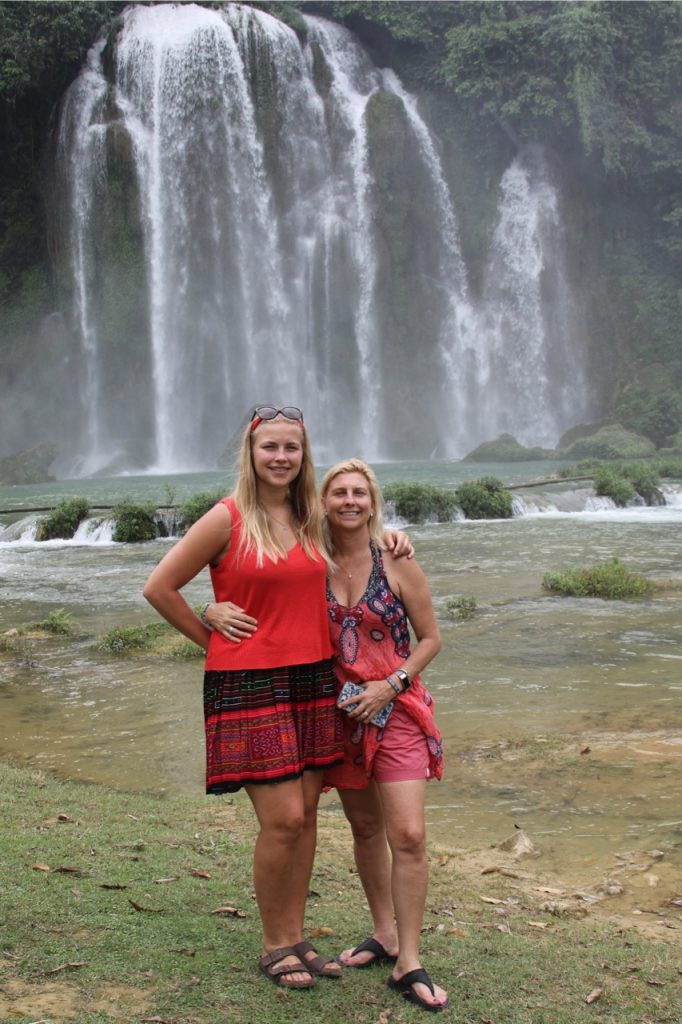
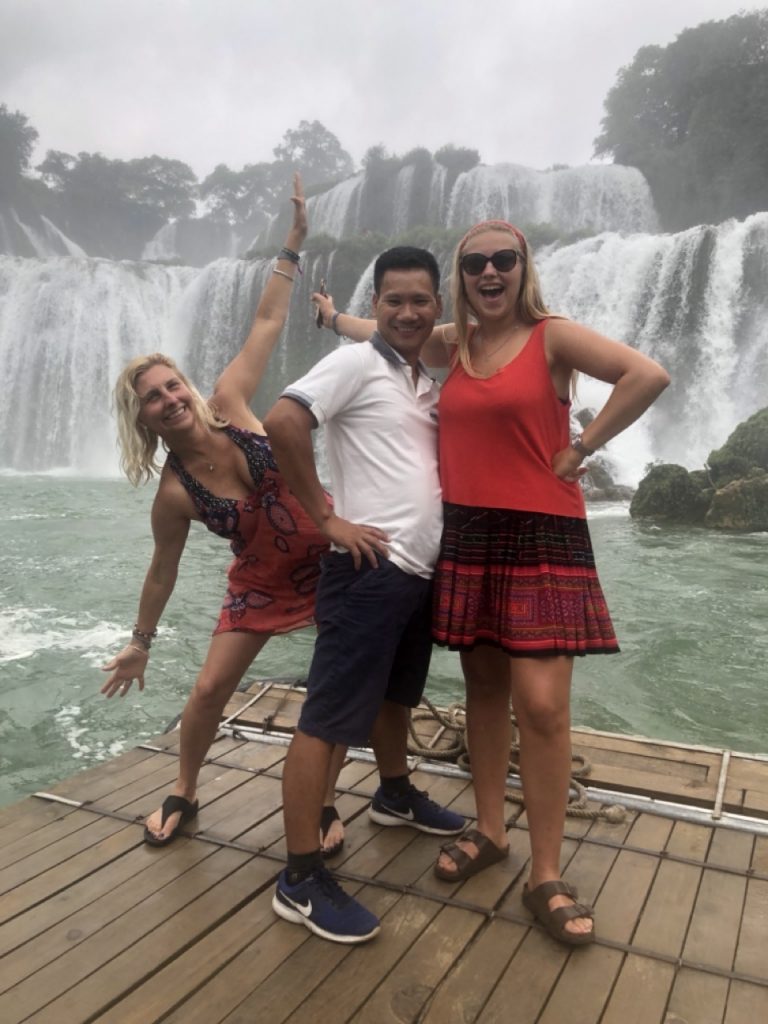
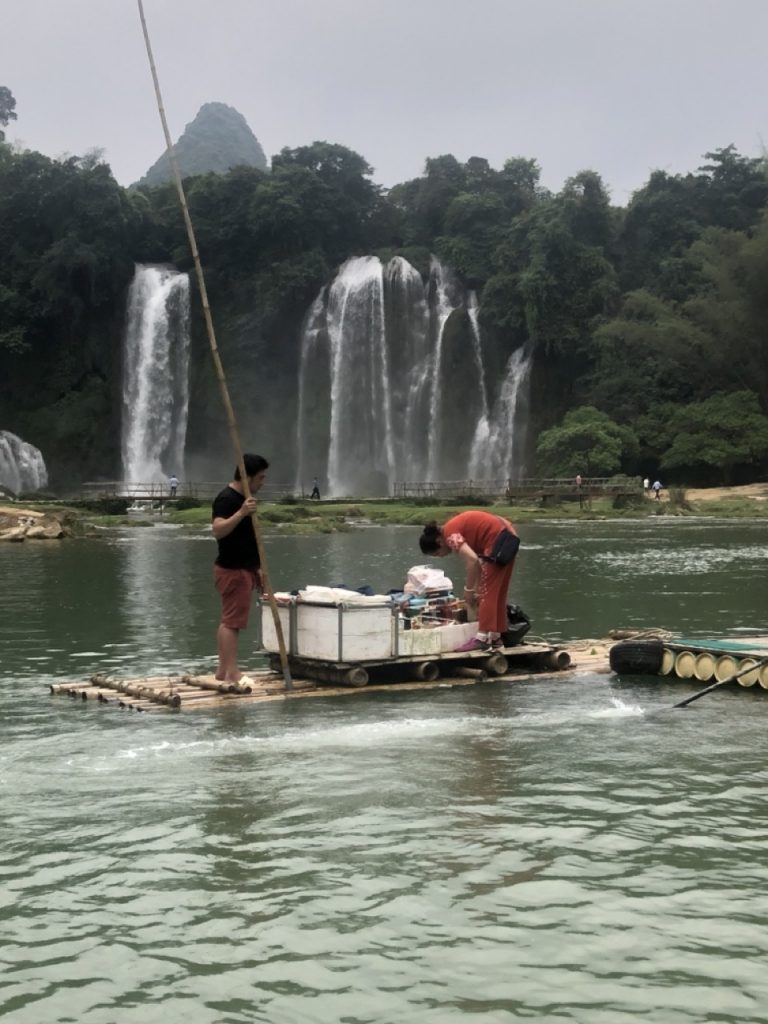
After that excellent excursion it was time to head to the Nguom Ngao caves containing River-formed caverns featuring unique rock formations, some shaped like humans, flowers & animals. The locals were quite taken by Charlotte and kept asking her to pose in their photos! The collness of the cave was a welcome respite to the hot and humid weather outside.
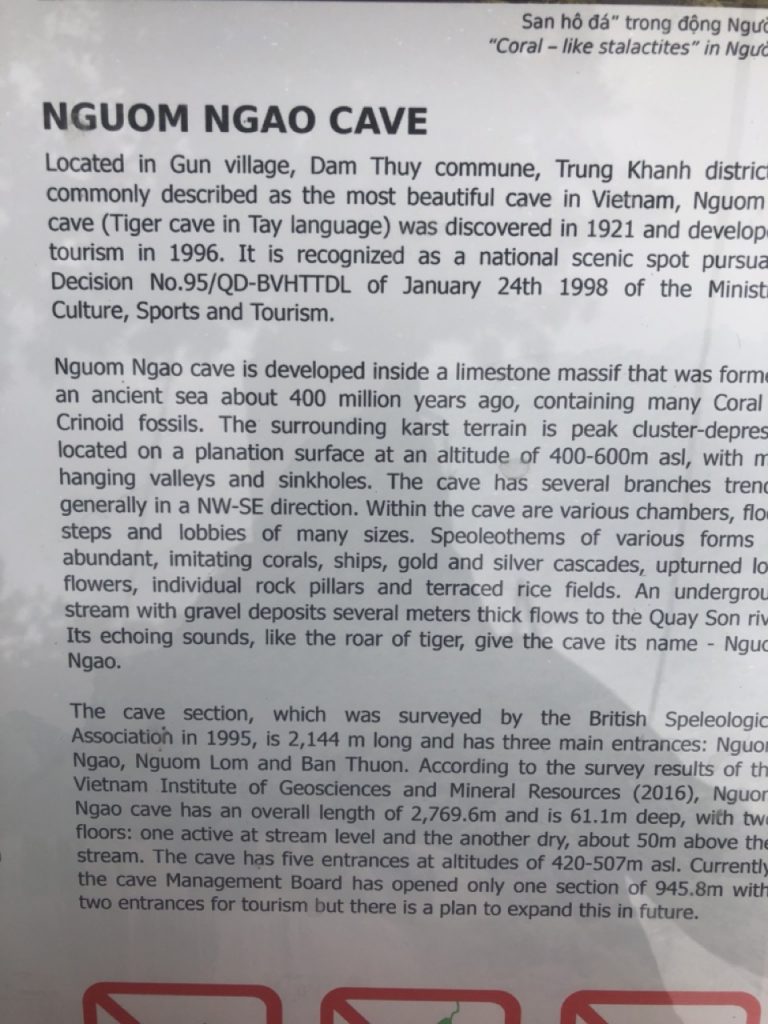
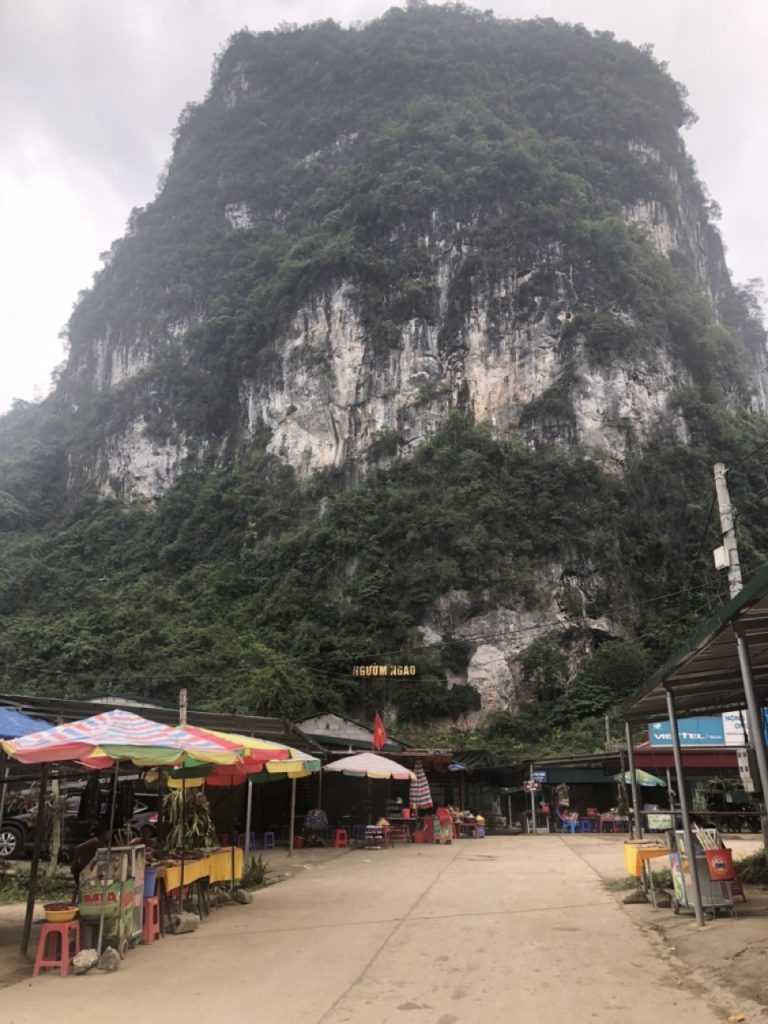
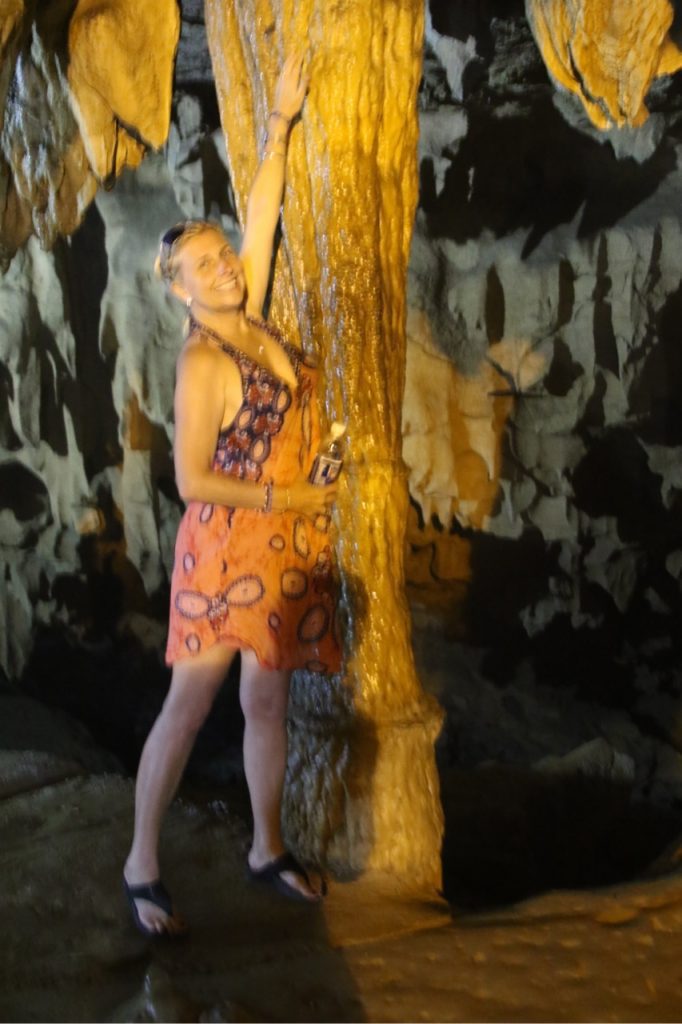
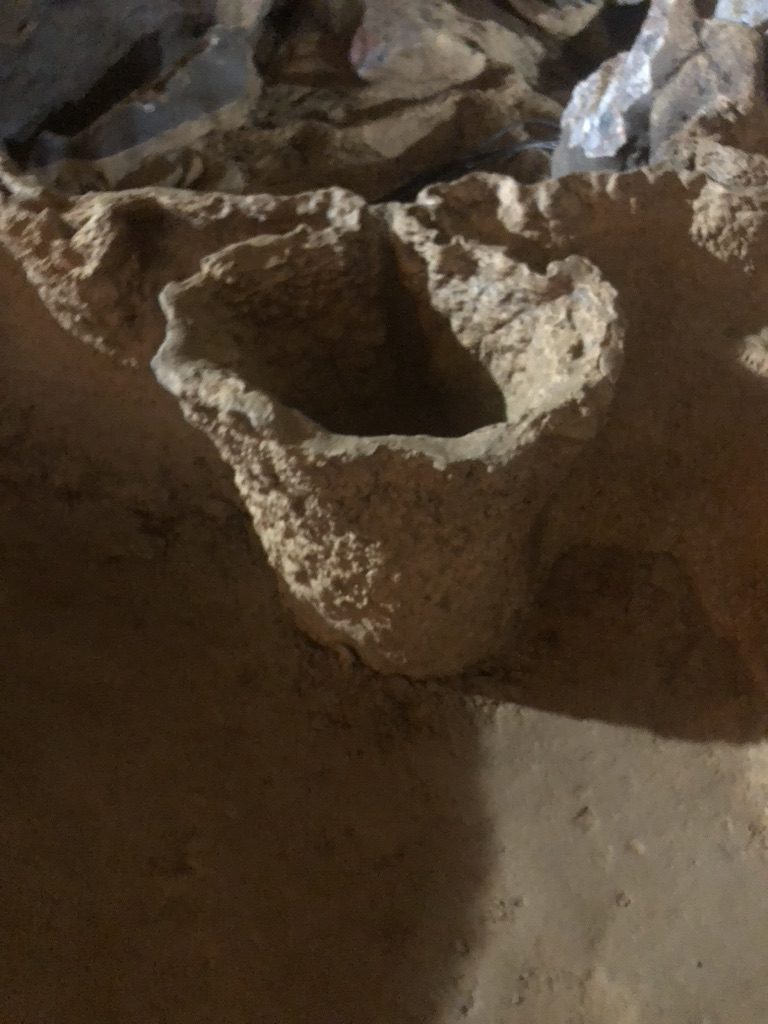
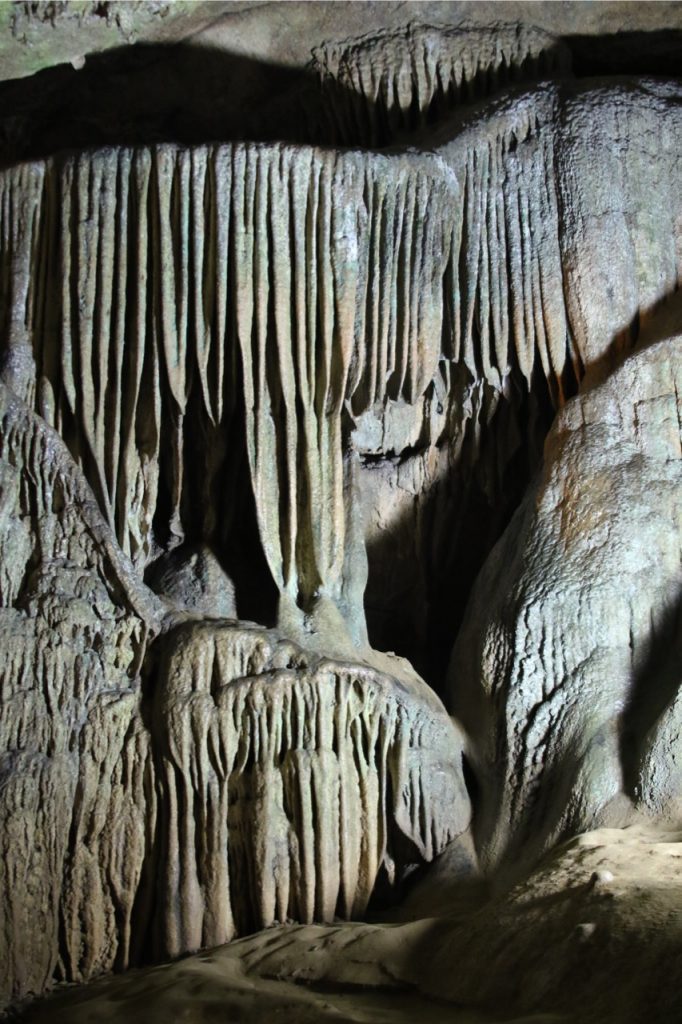
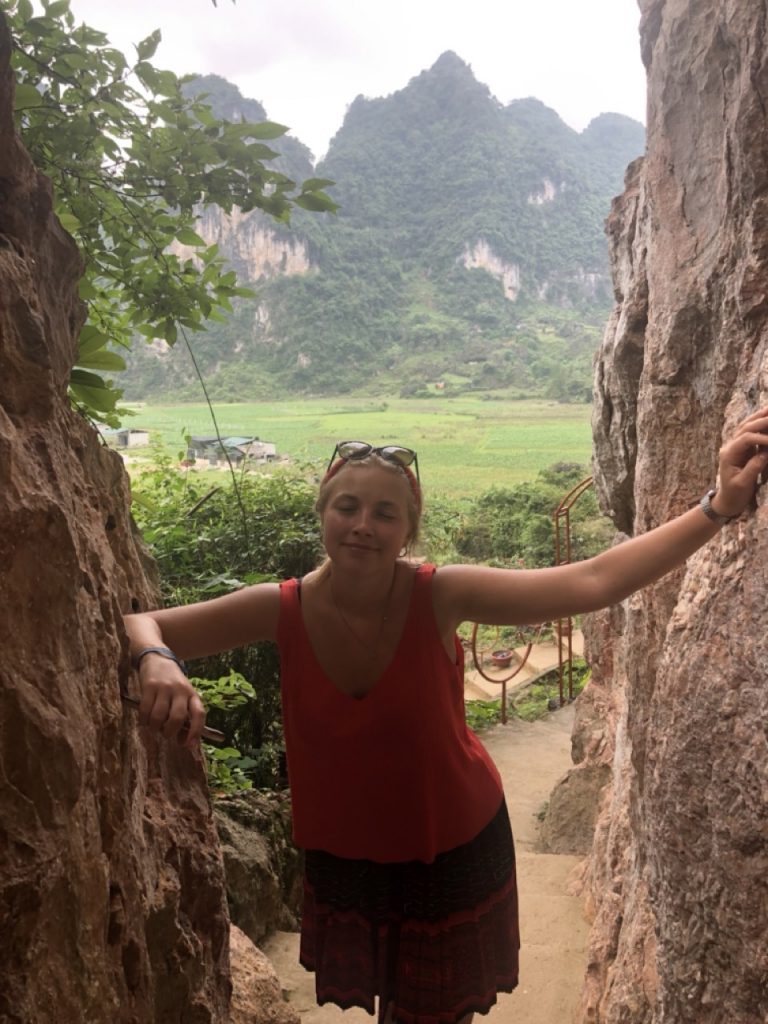
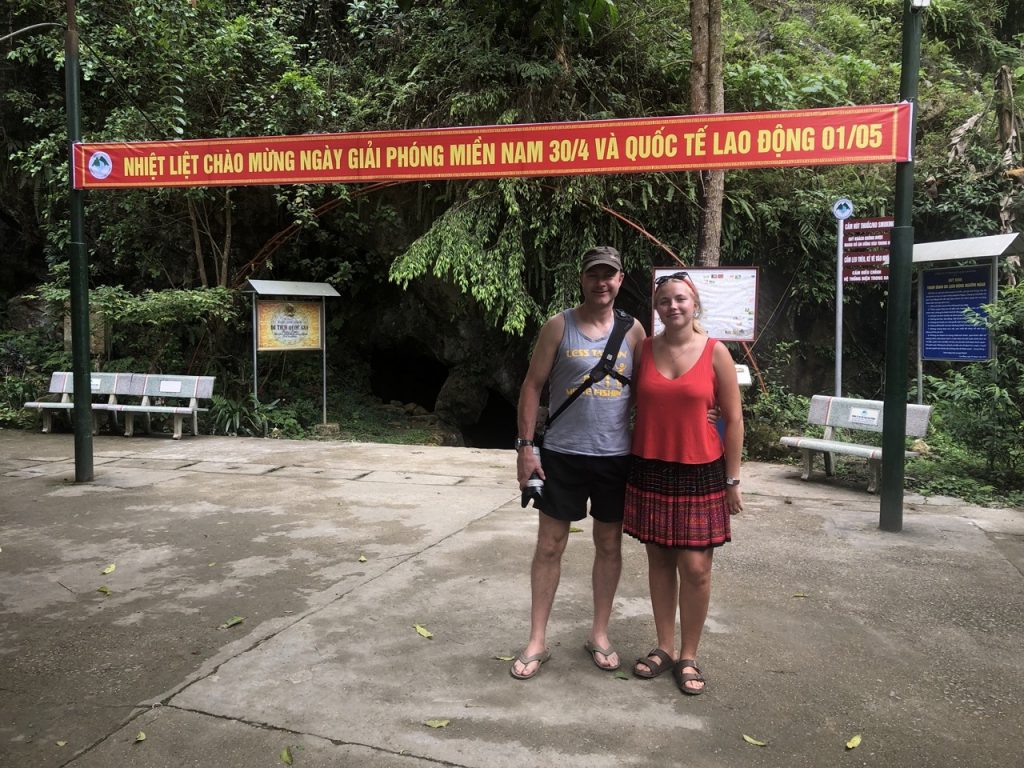
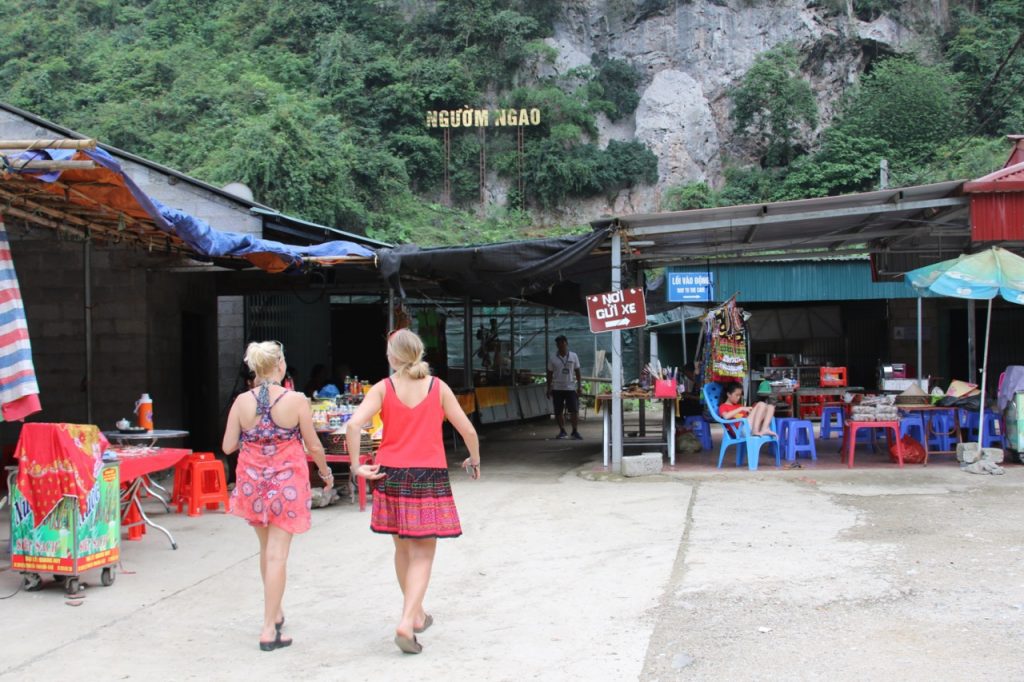
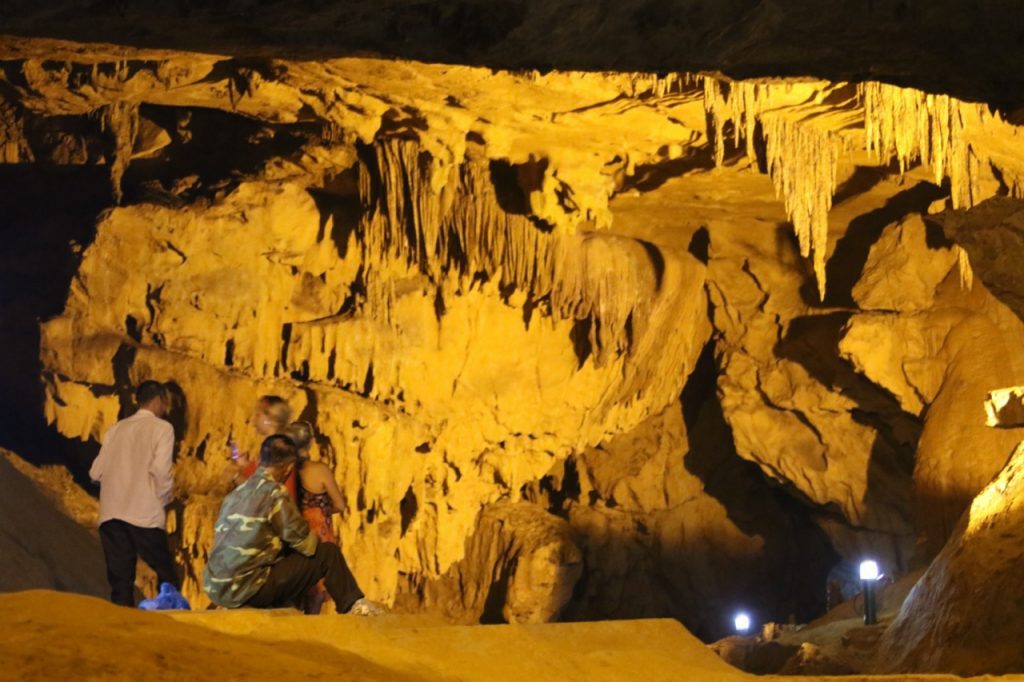
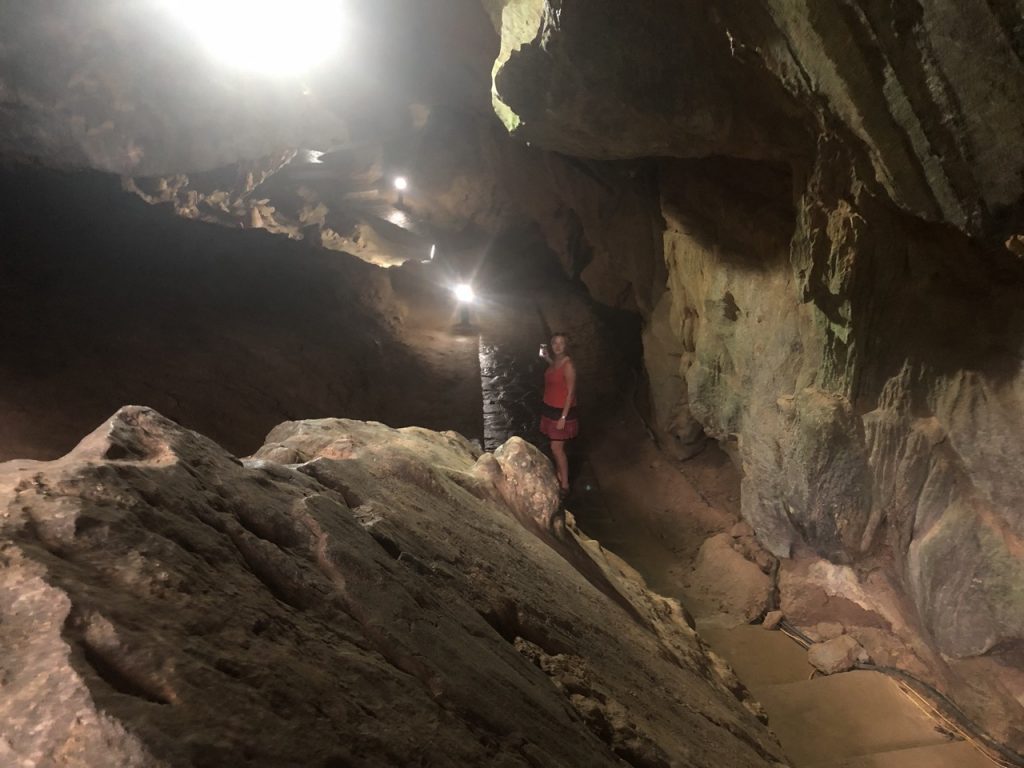
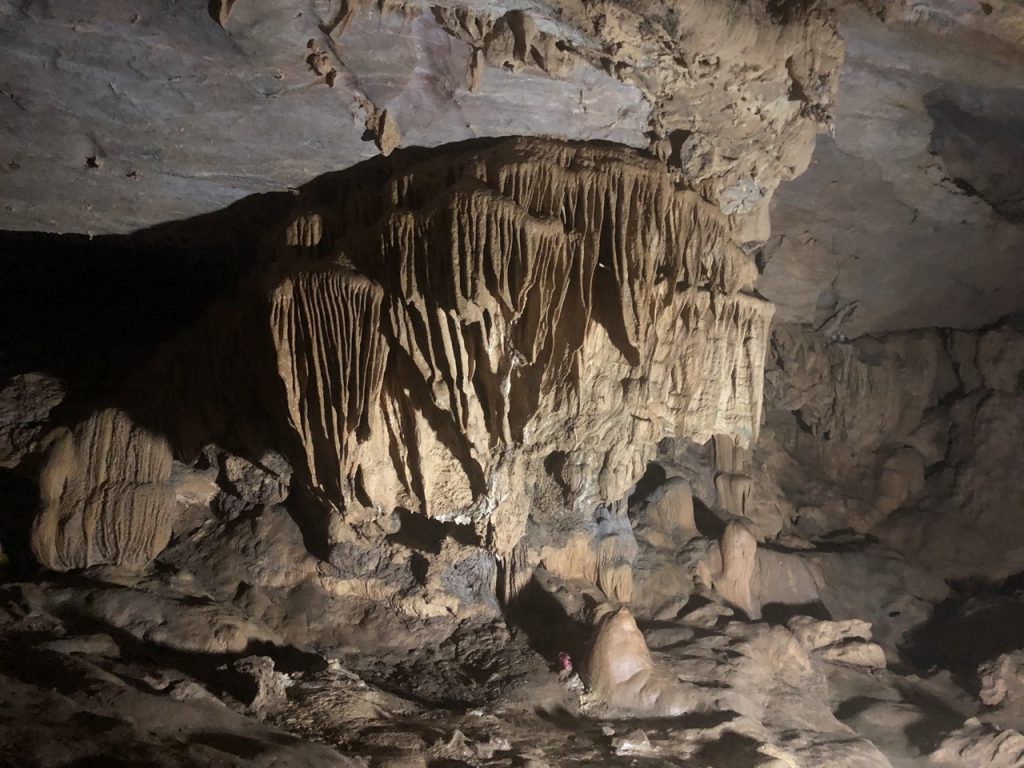
We left the caves and drove on another scenic route stopping to buy some maize before entering a homestay and Incense making village called: Phia Thap. This stunningly located and authentic village was amazing to visit. Tiny little villagers with big smiles all hard at work on creating incense from bamboo. Incense is considered the connection between real life and the spiritual world in Vietnamese culture. Making incense has become an indispensable cultural specificity. The incense making craft of the Nung people has a long history. For Phia Thap villagers, making incense is not only portraying their national identity but is also associated with the custom of burning incense in Vietnam. Although no one knows when the incense making craft began, this tradition has been handed down from generation to generation in the Nung community. More than 50 families in Phia Thap village are involved in this traditional craft. Gourd leaves, which form the glue are dried in the sun. Yellow apricot tree sticks or bamboo sticks are soaked four times in in a mixture of sawdust and agarwood powder. They are then dried in the sun and the bottom of the sticks are dyed red and are laid out to dry again. It is a time consuming process.
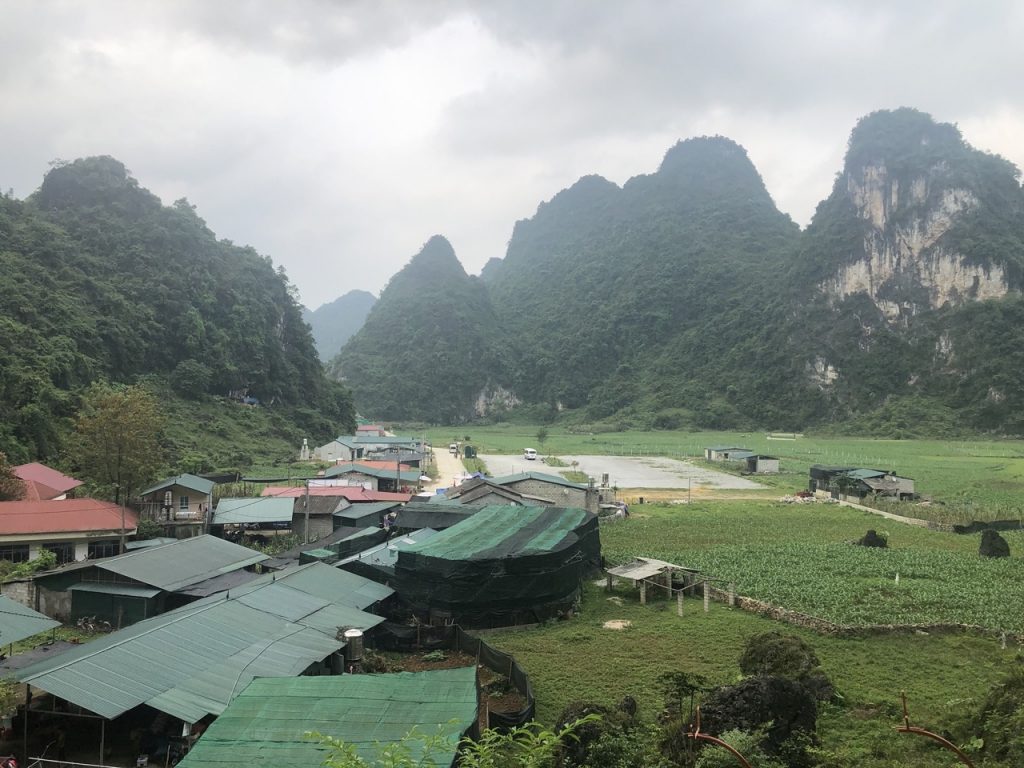
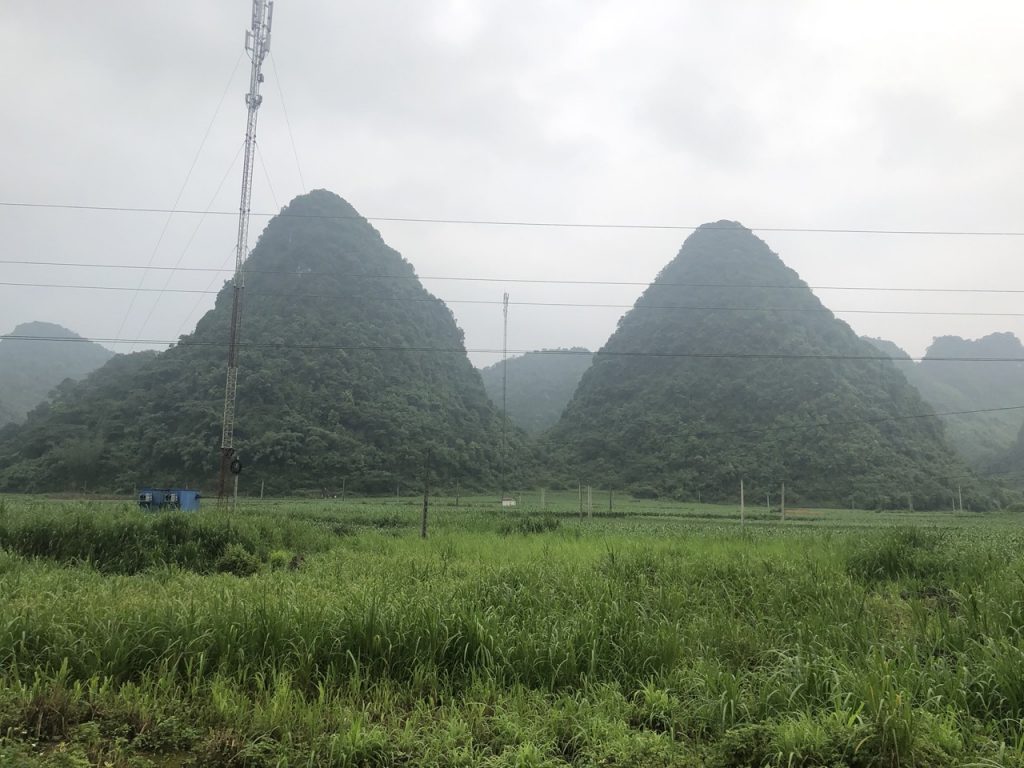
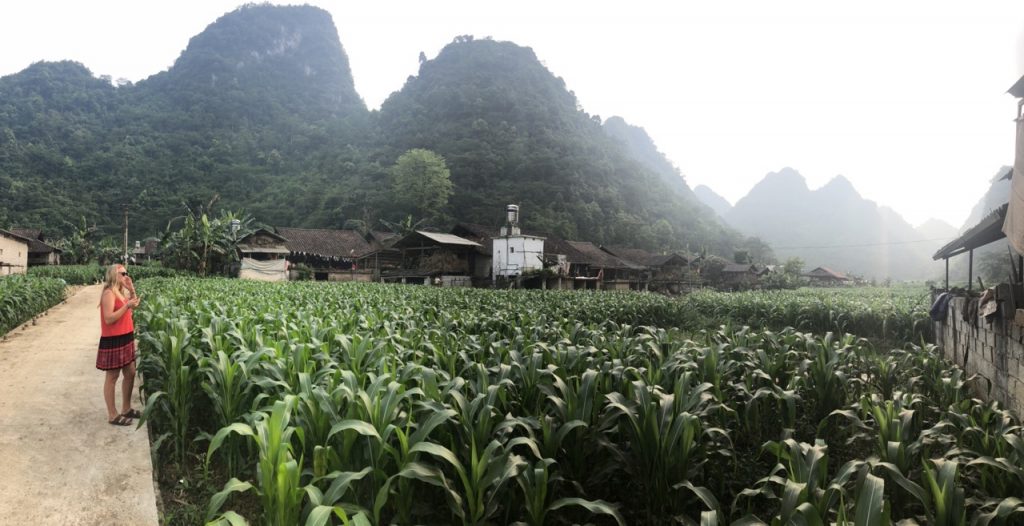
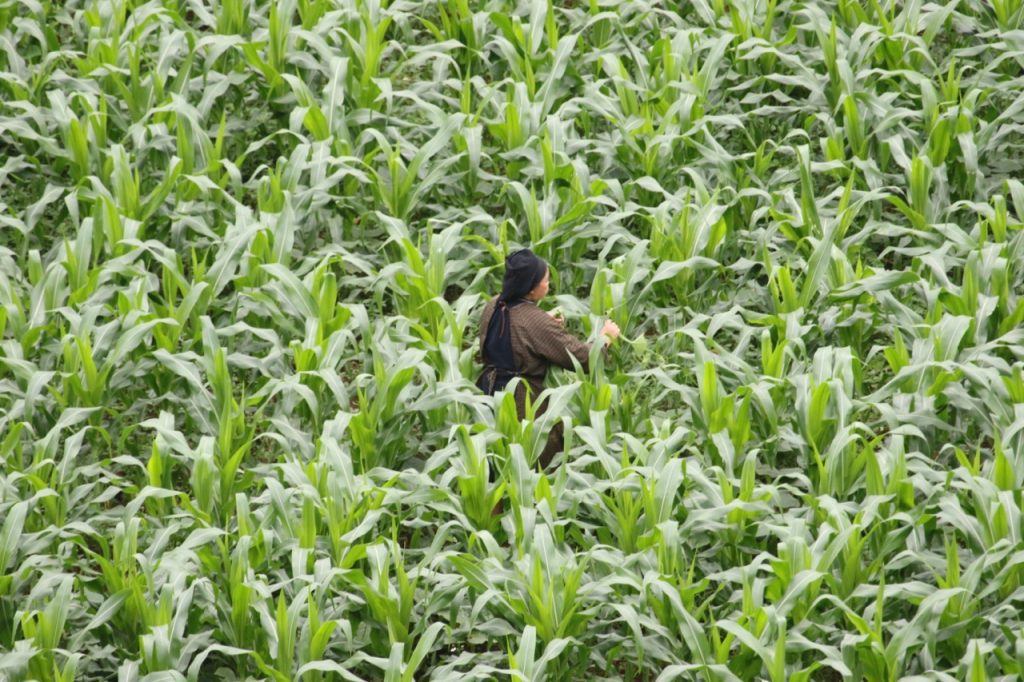
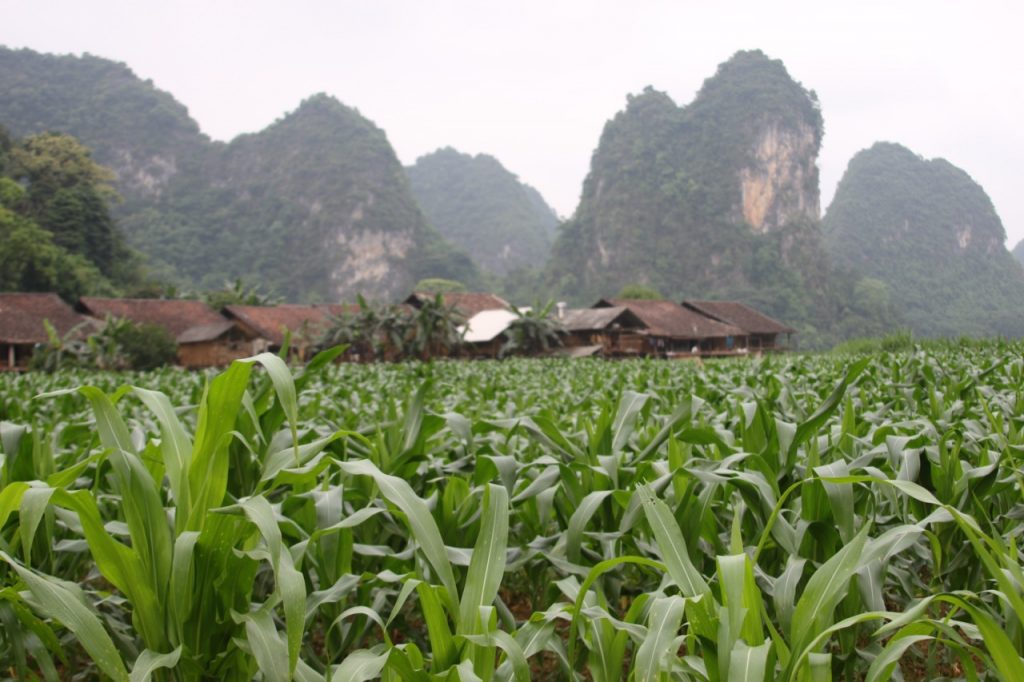
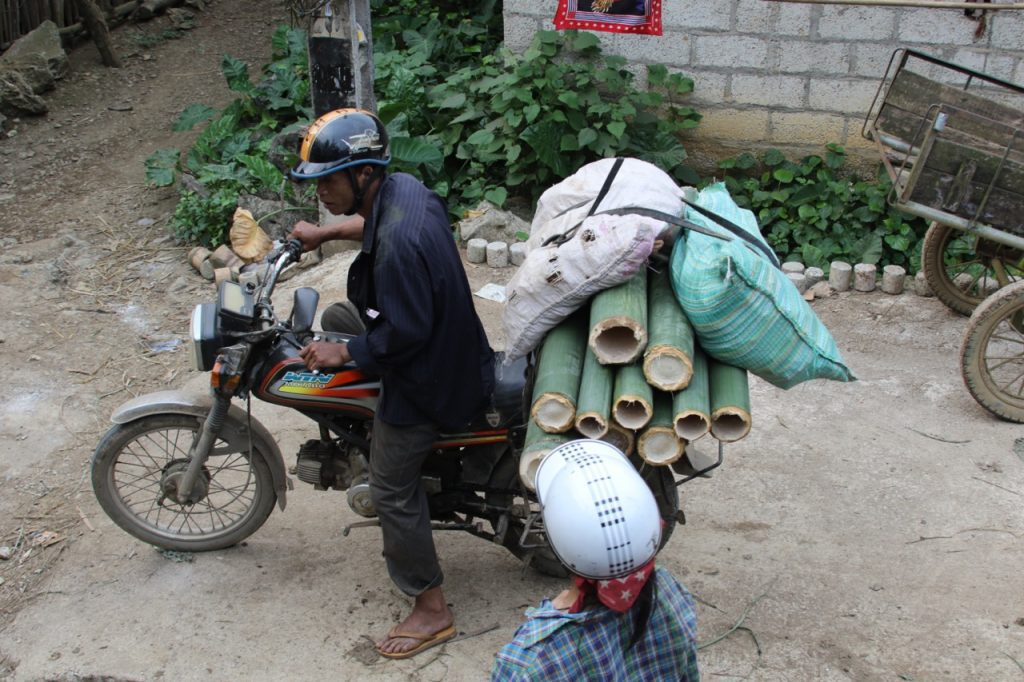
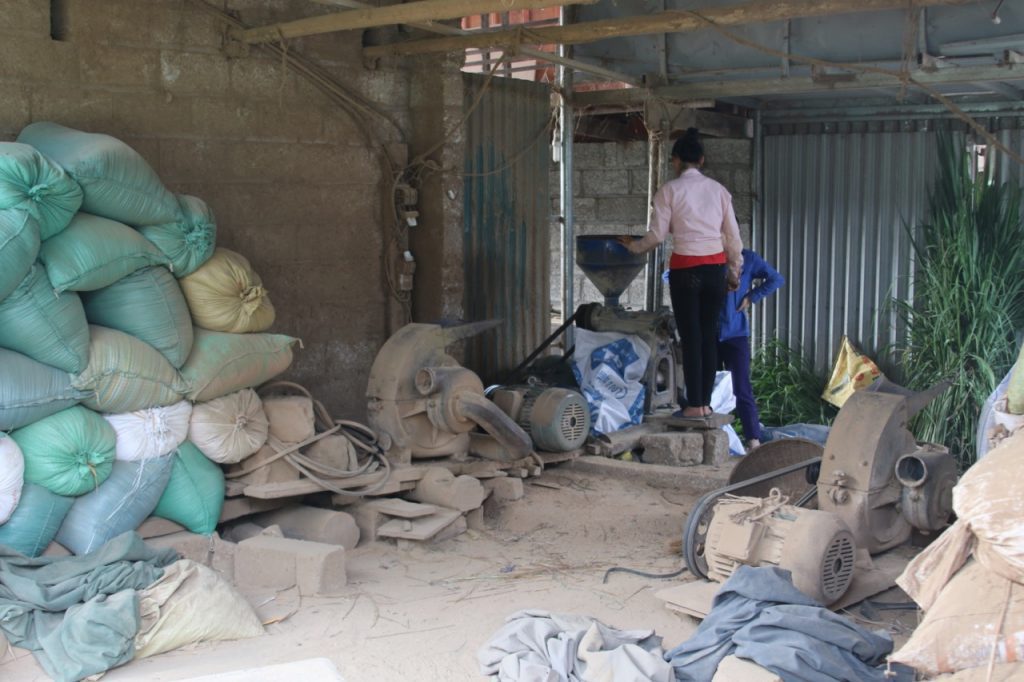
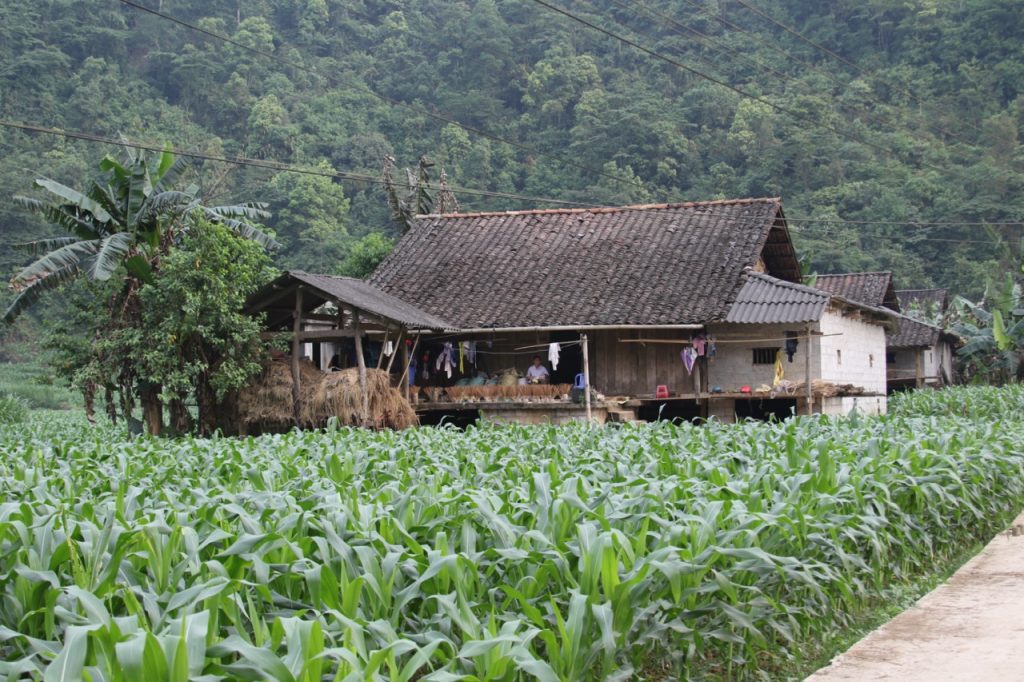
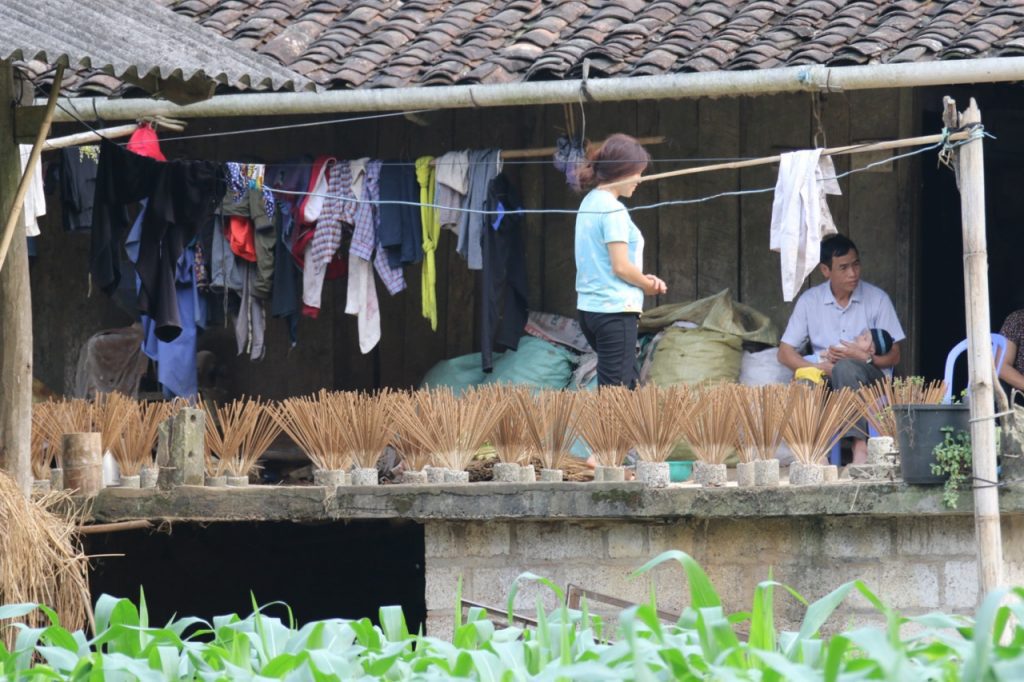
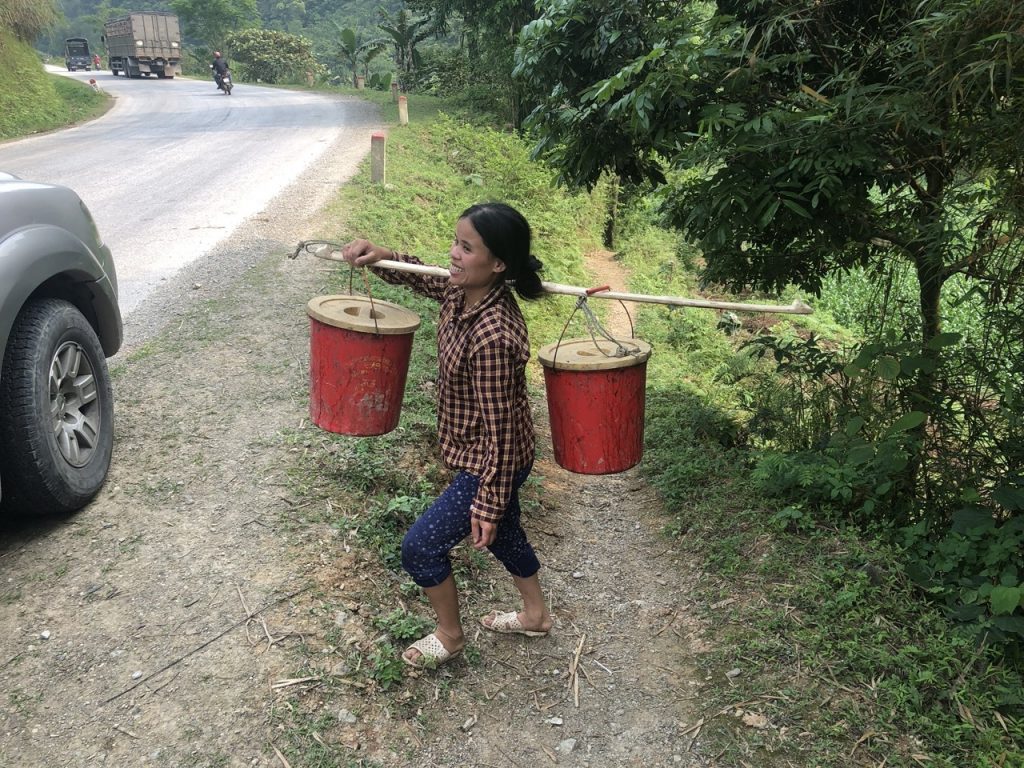
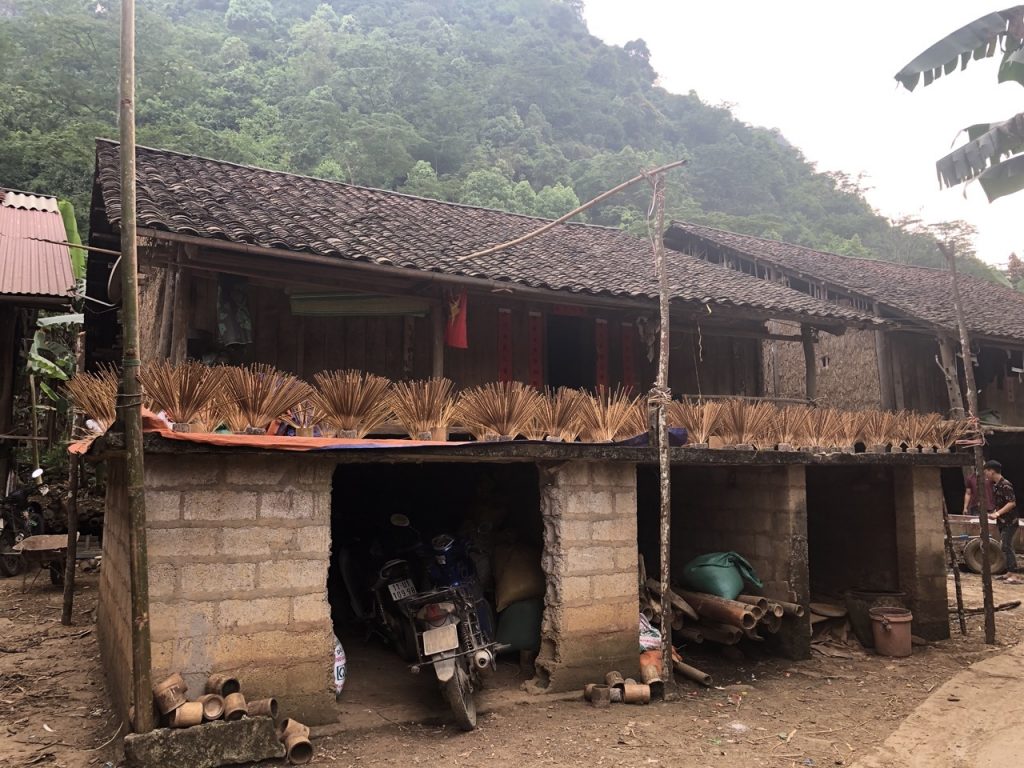
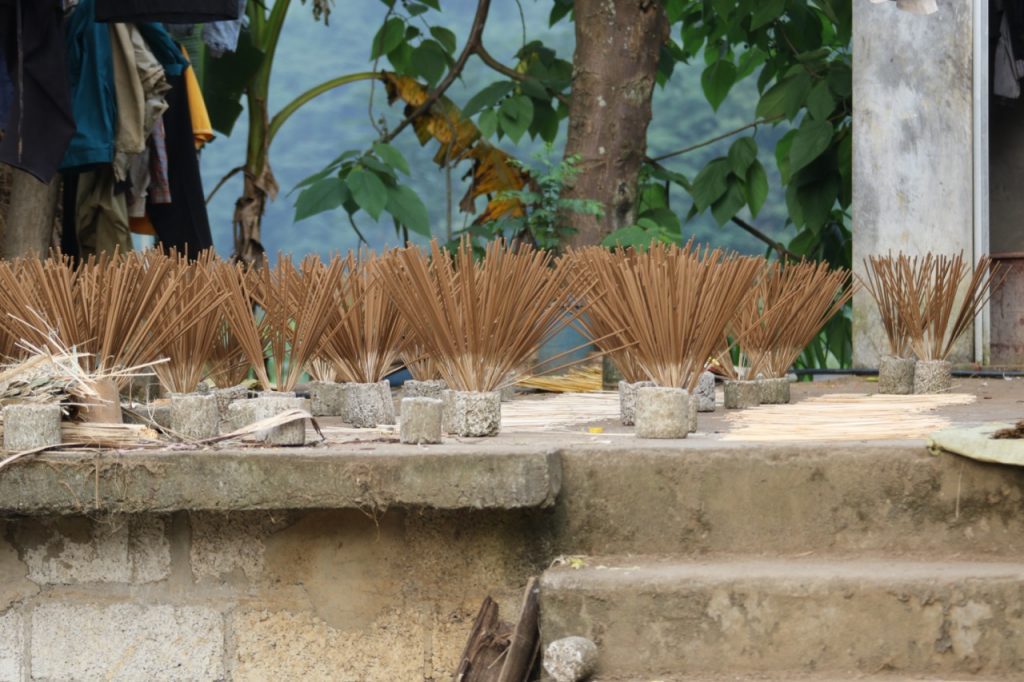
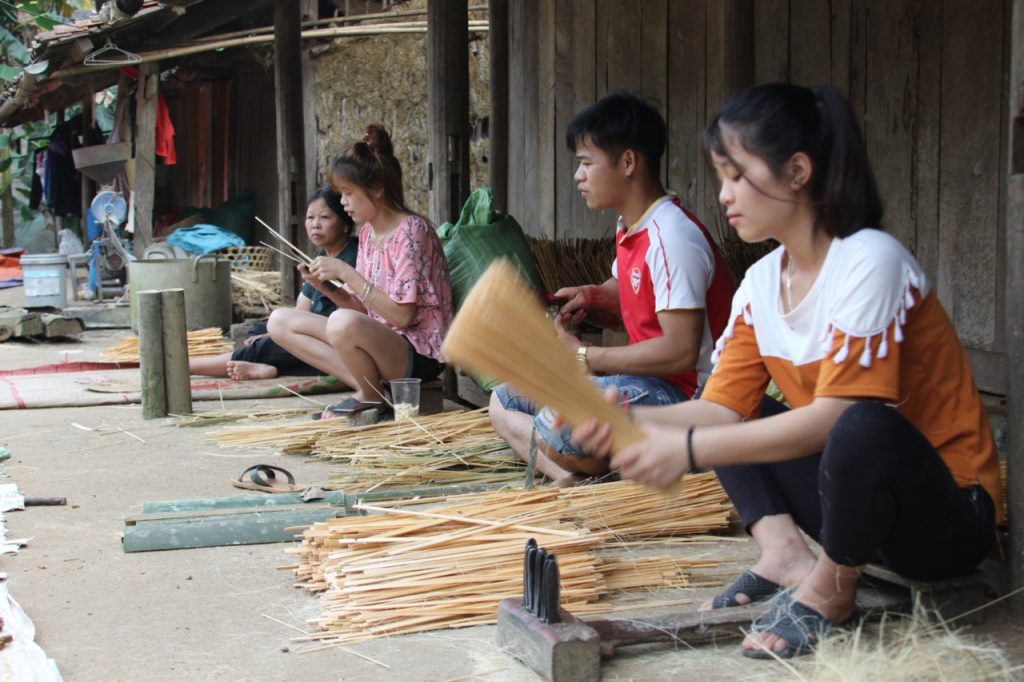
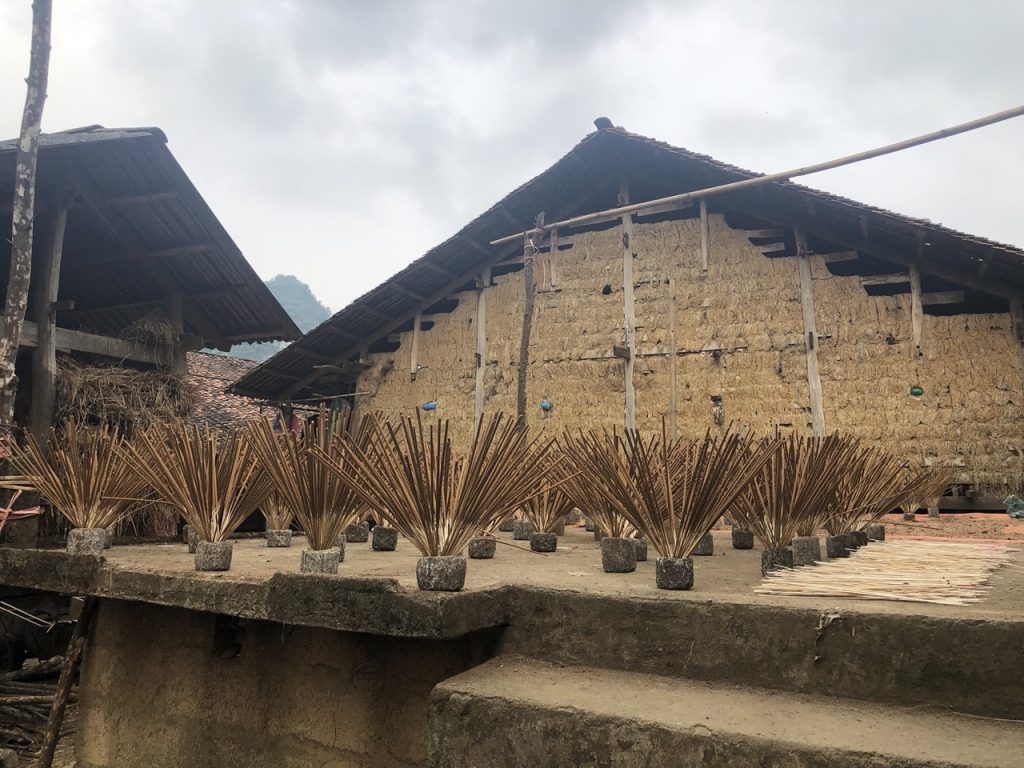
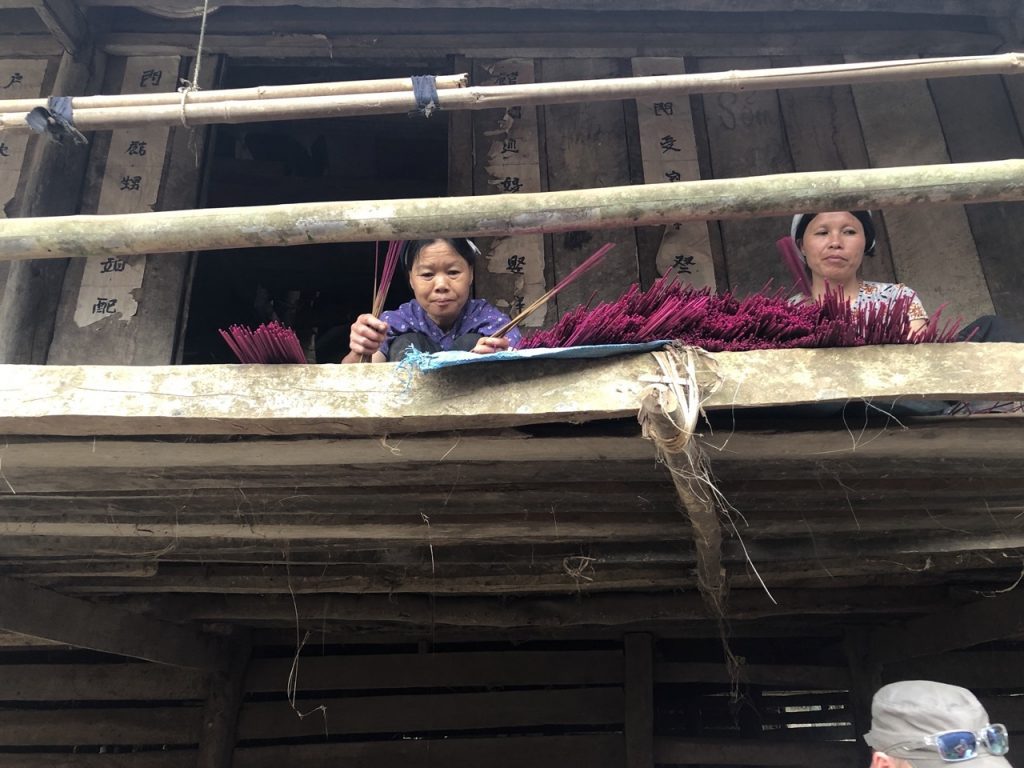
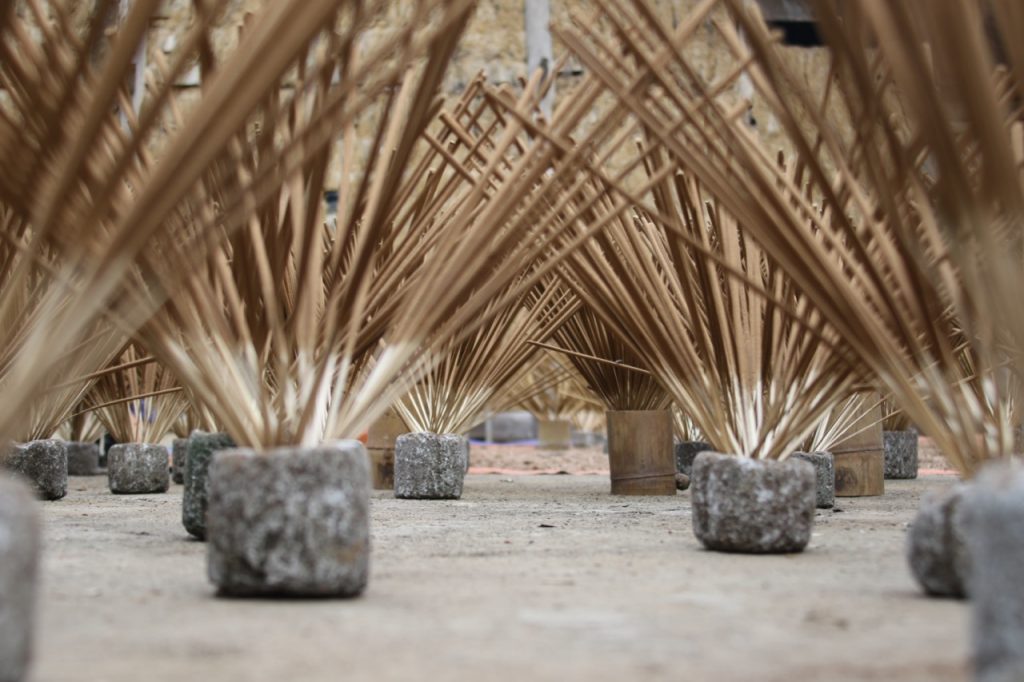
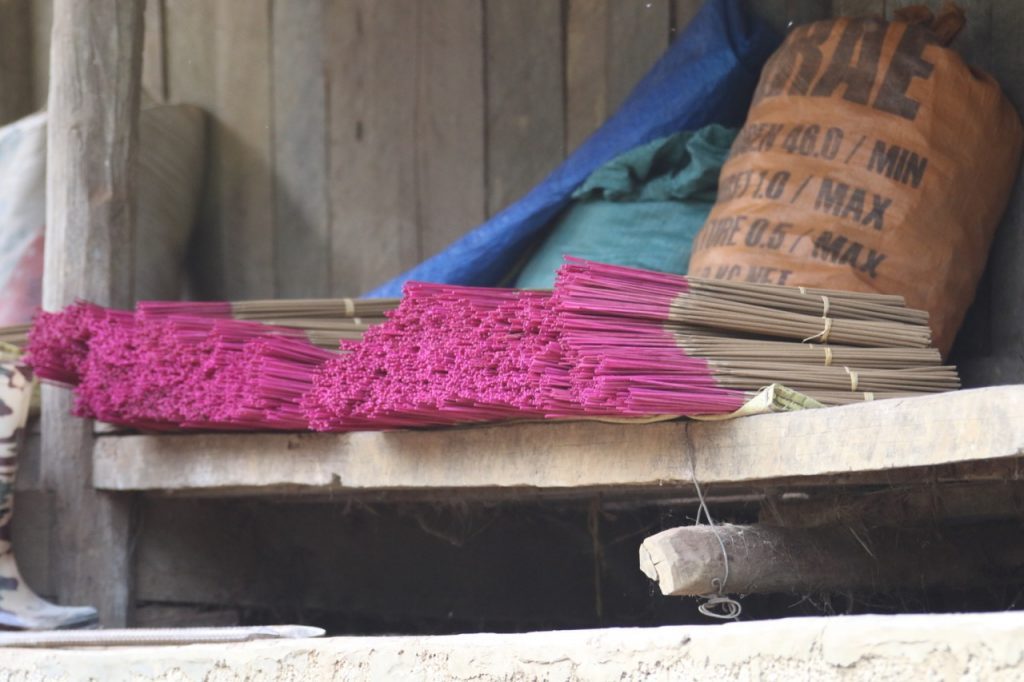
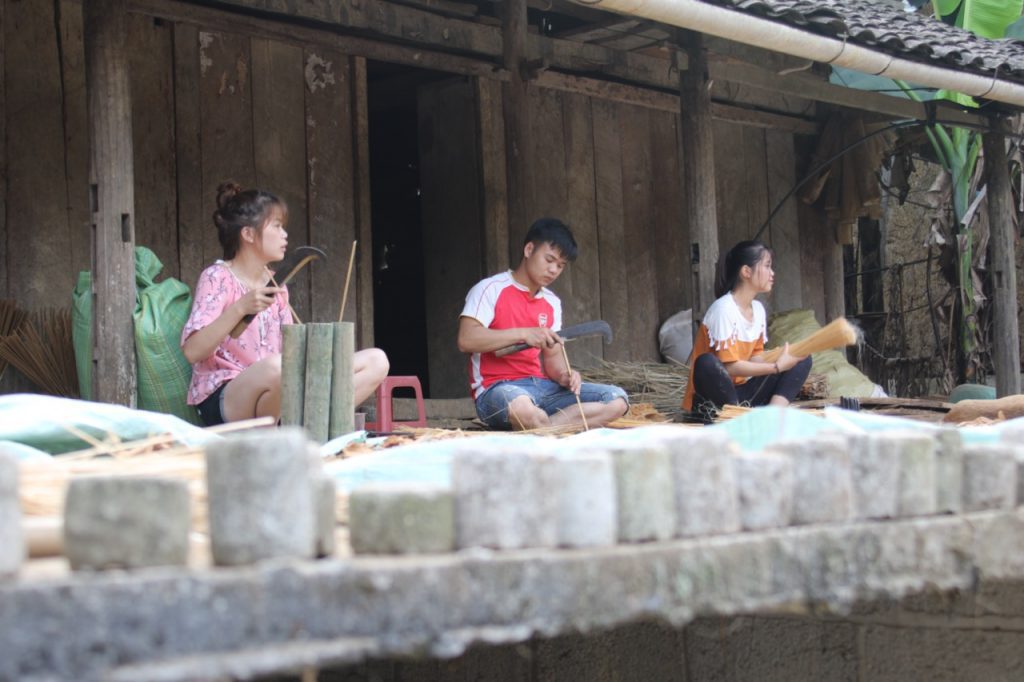
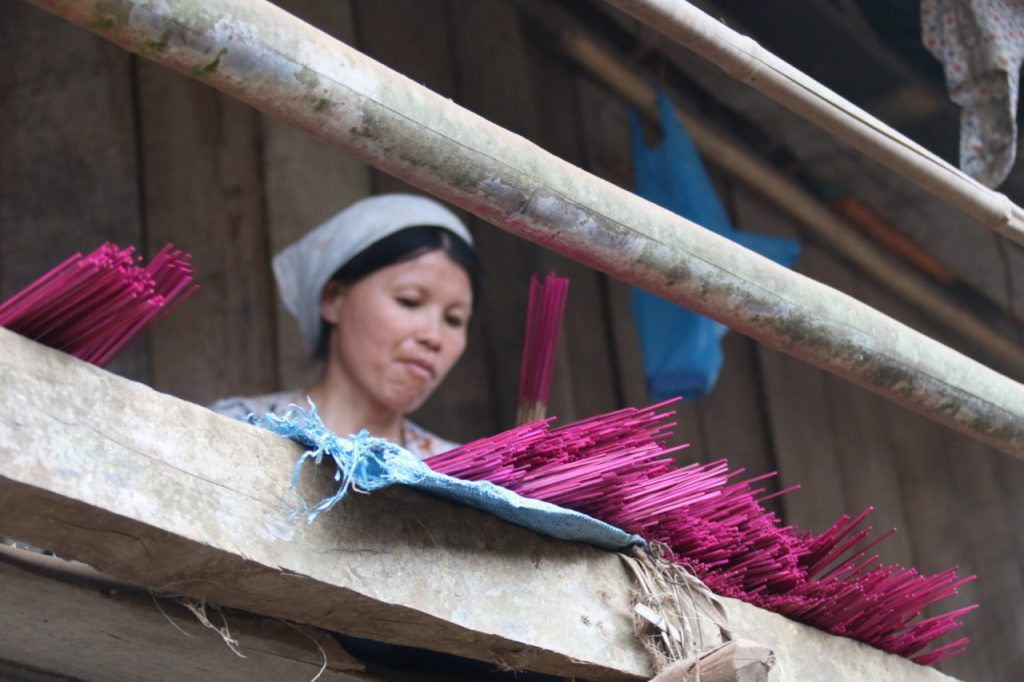
We wished that we were staying in the homestay – as the sun set the smells were wonderful and the sound of the cockerels crowing and the water buffalo coming home were comforting.
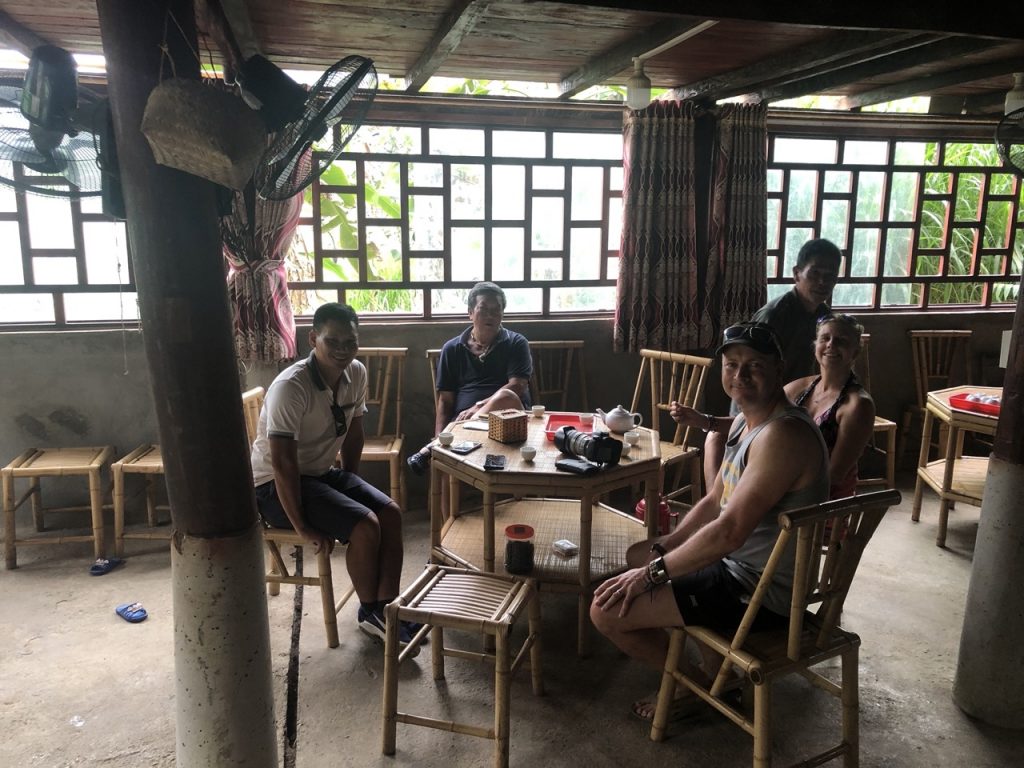
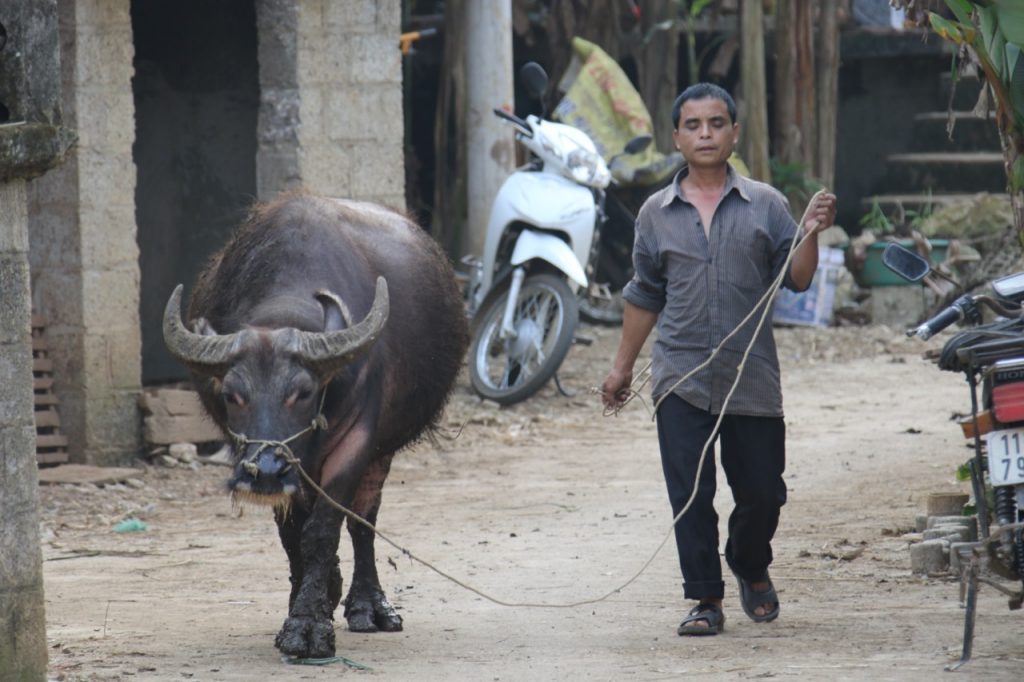
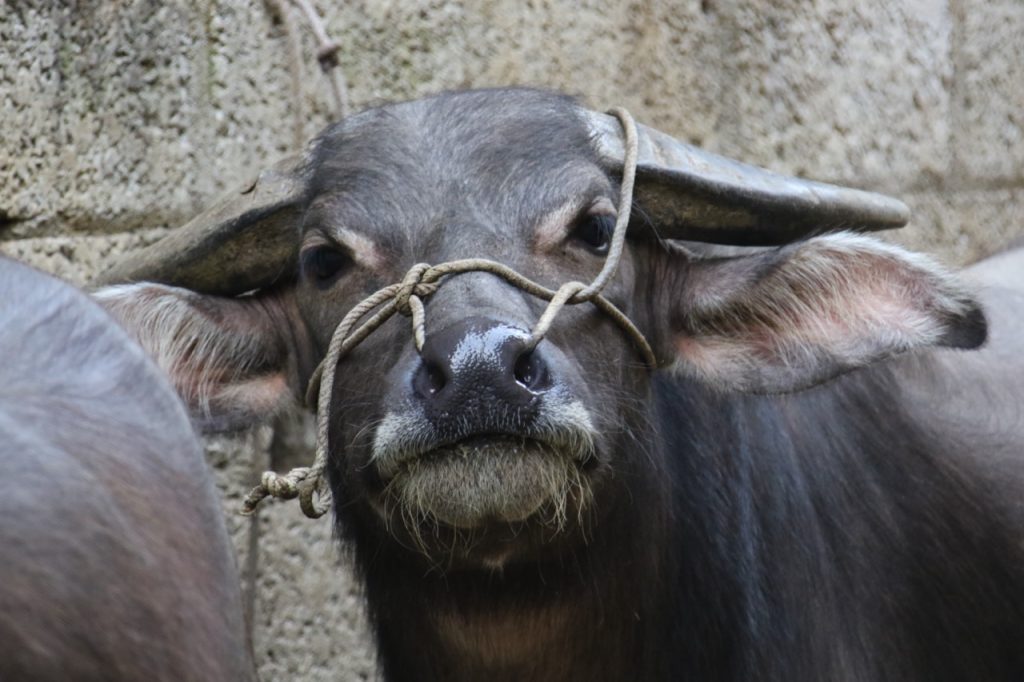
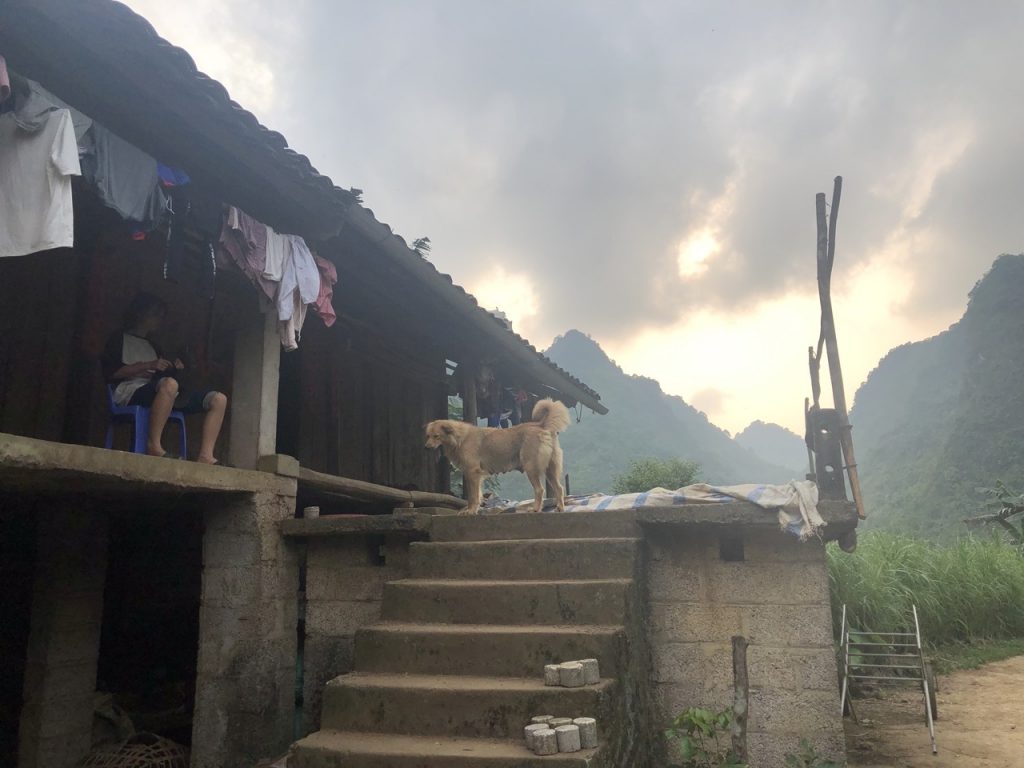
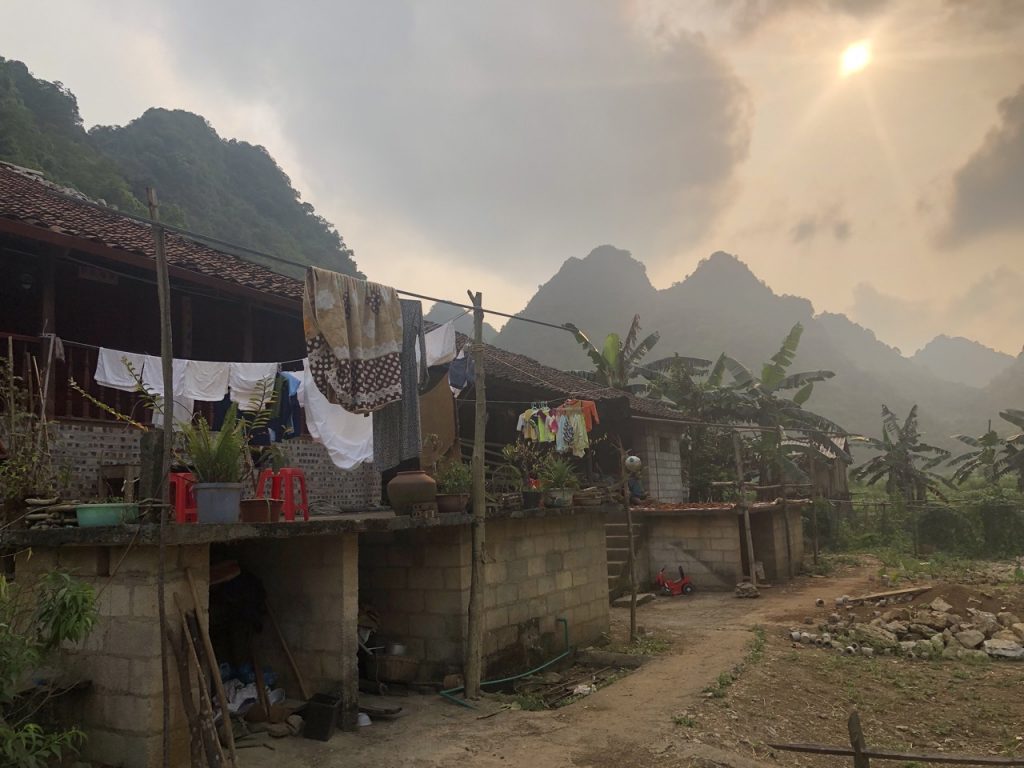
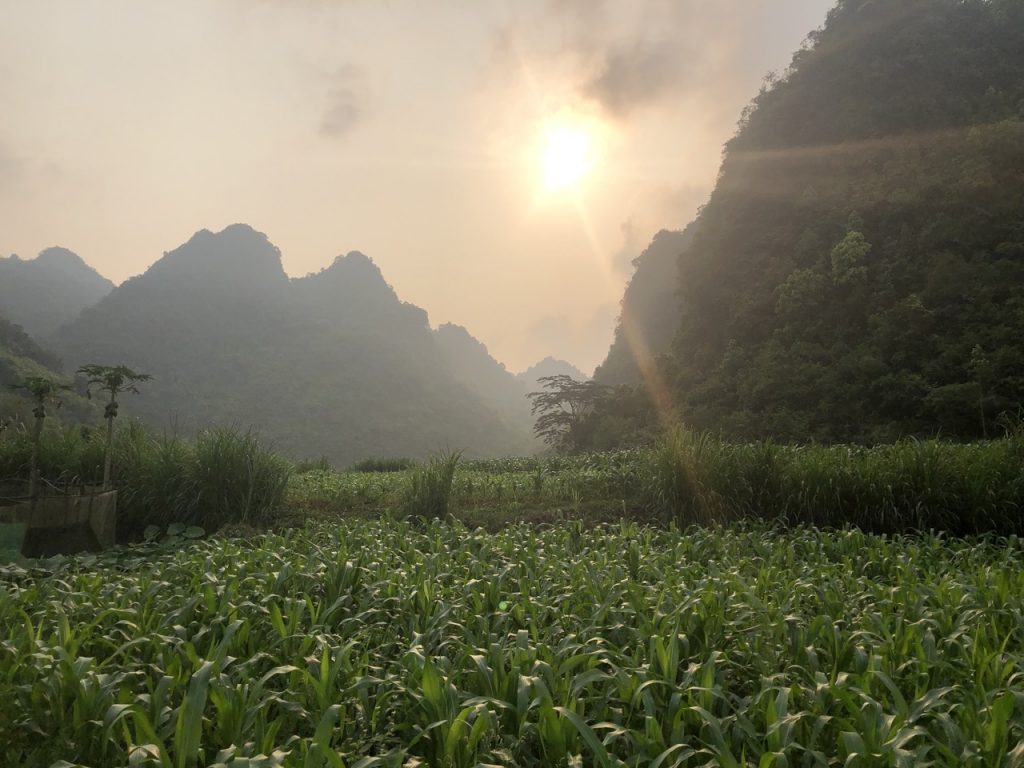
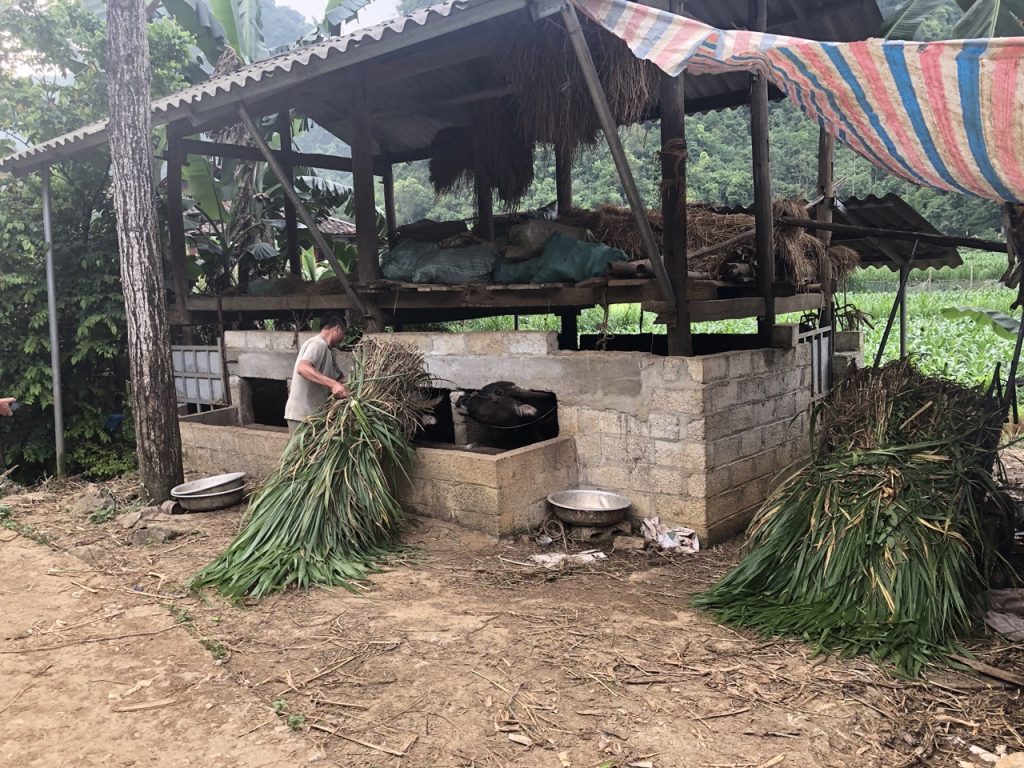
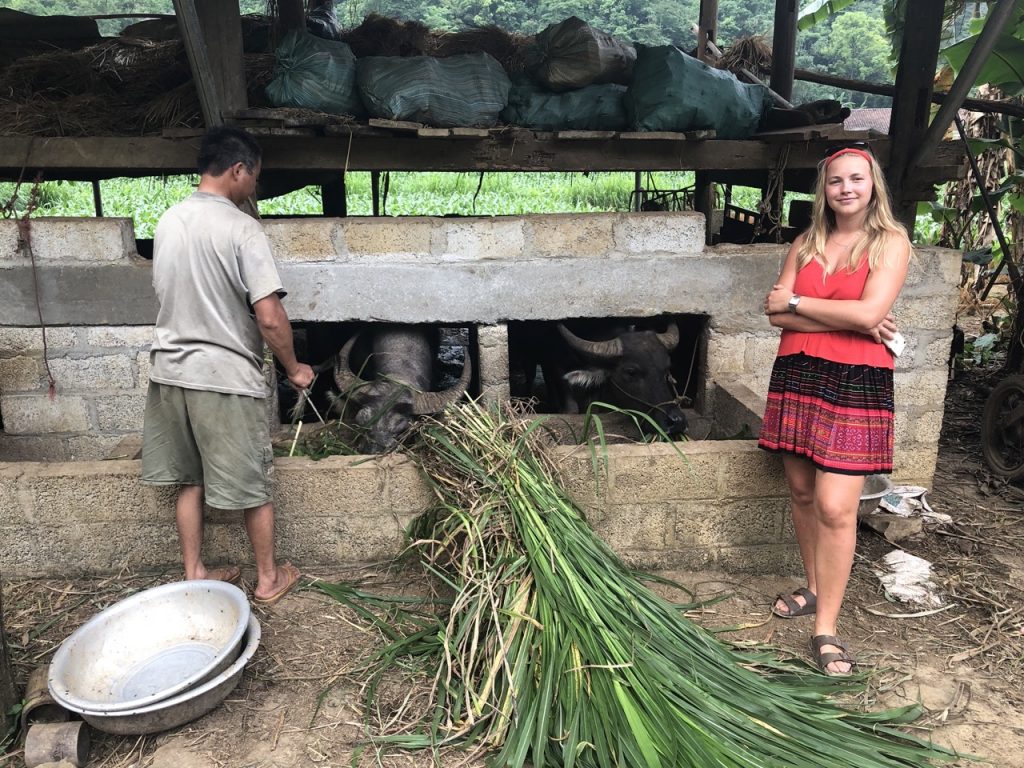
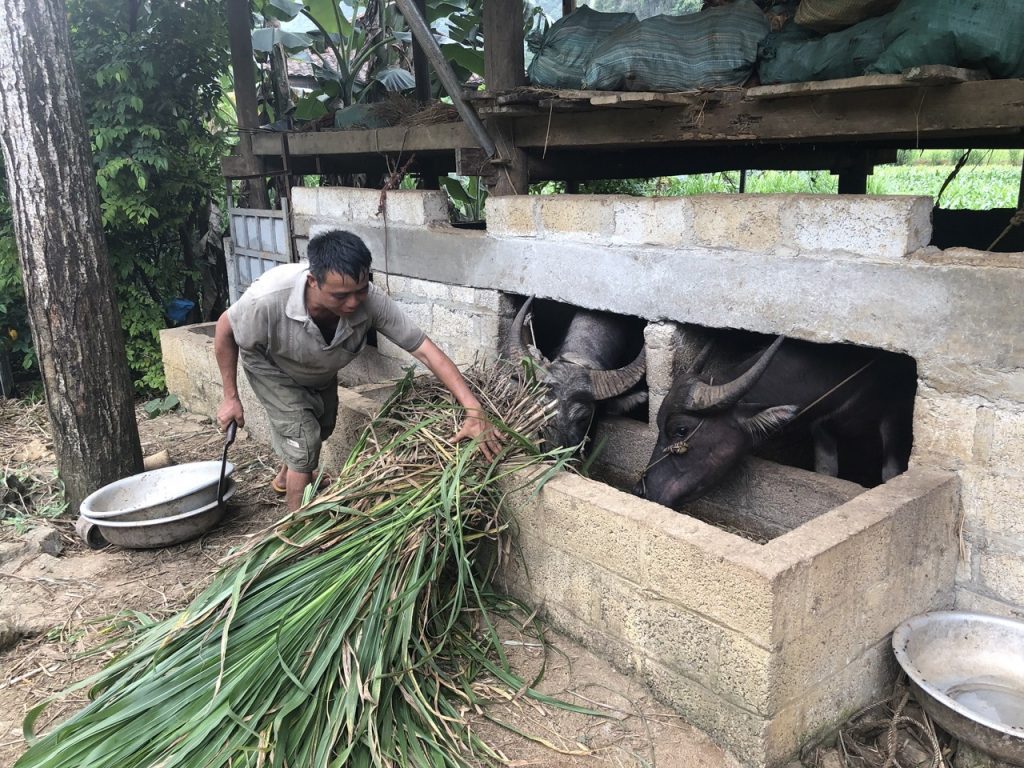
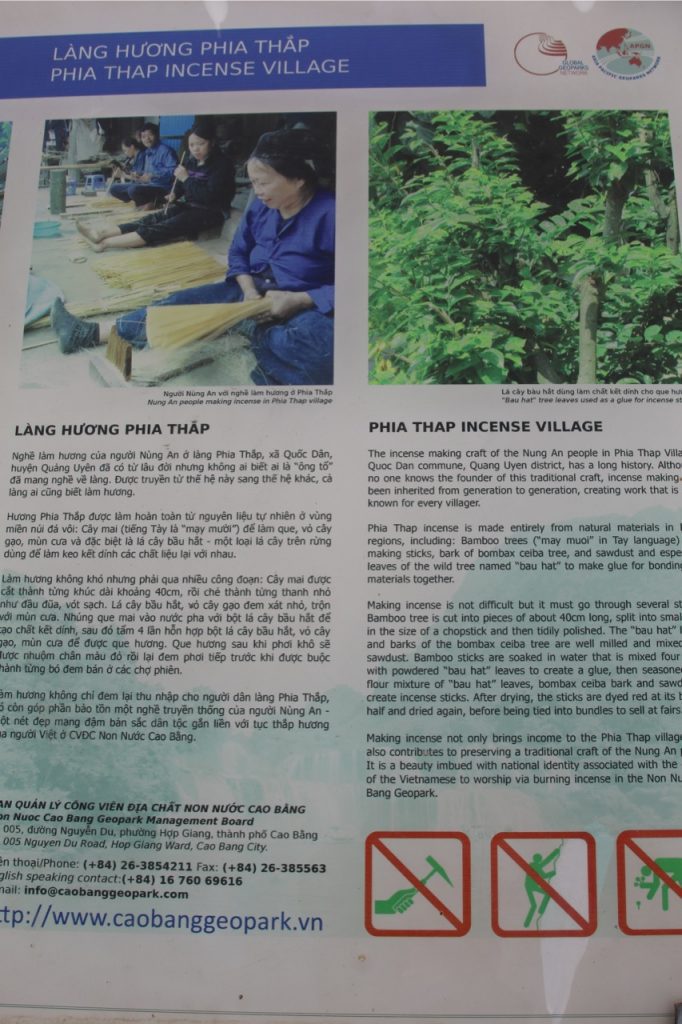
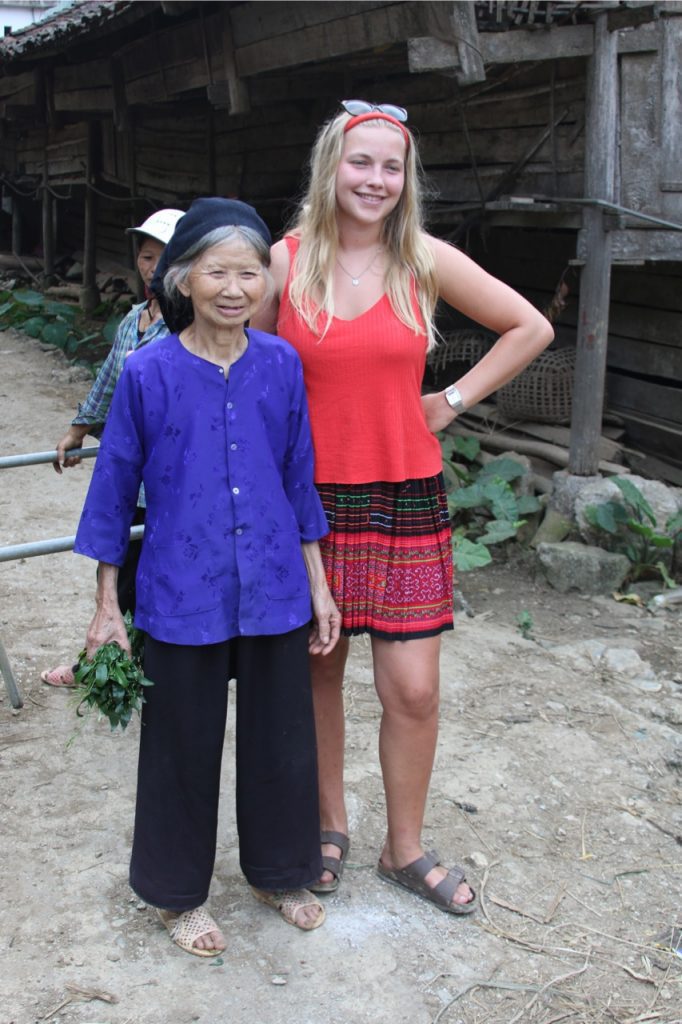
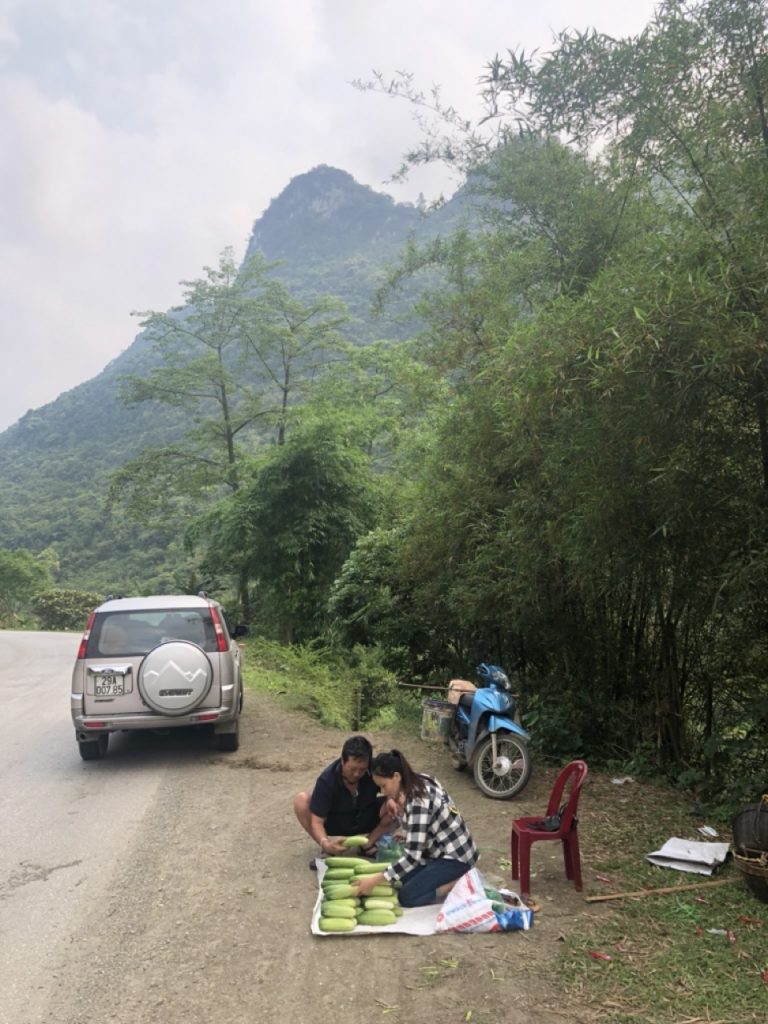
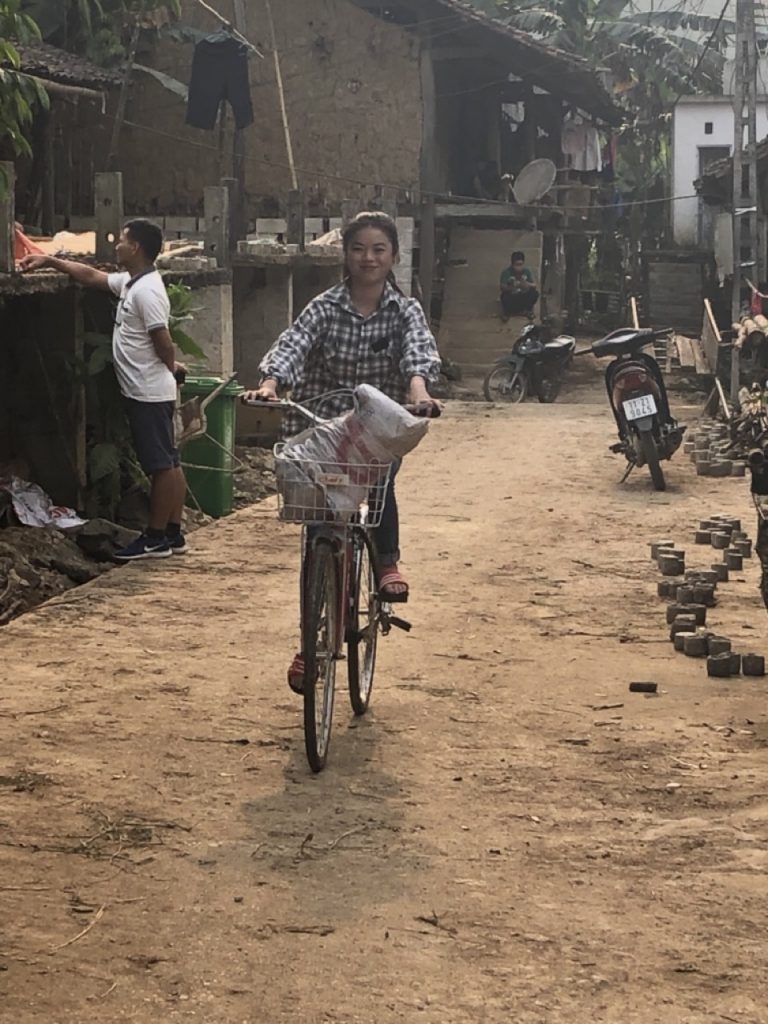
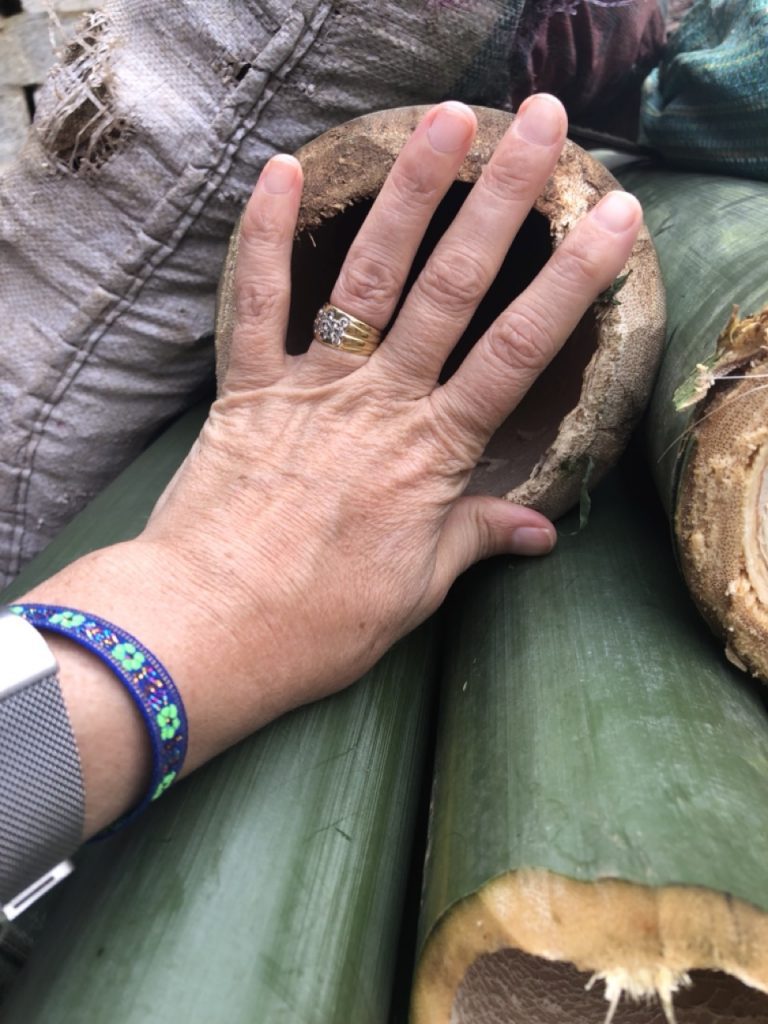
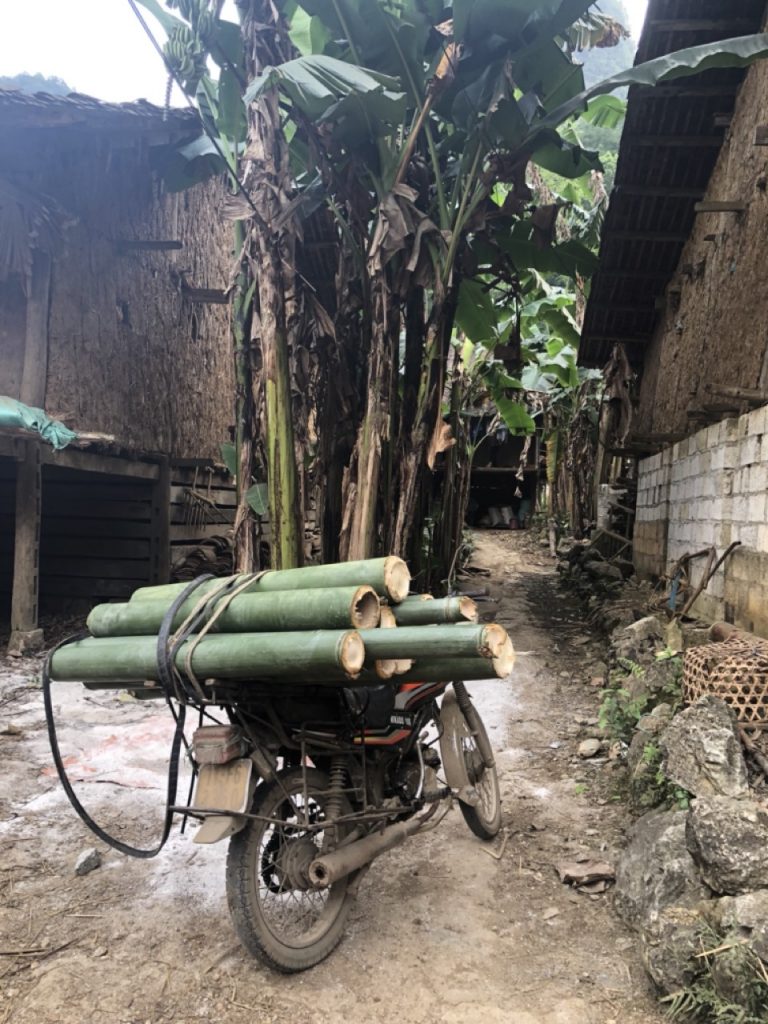
We drove on to Hop Giang and arrived at a very similar hotel with heavy wooden furniture and parked our car in Reception.
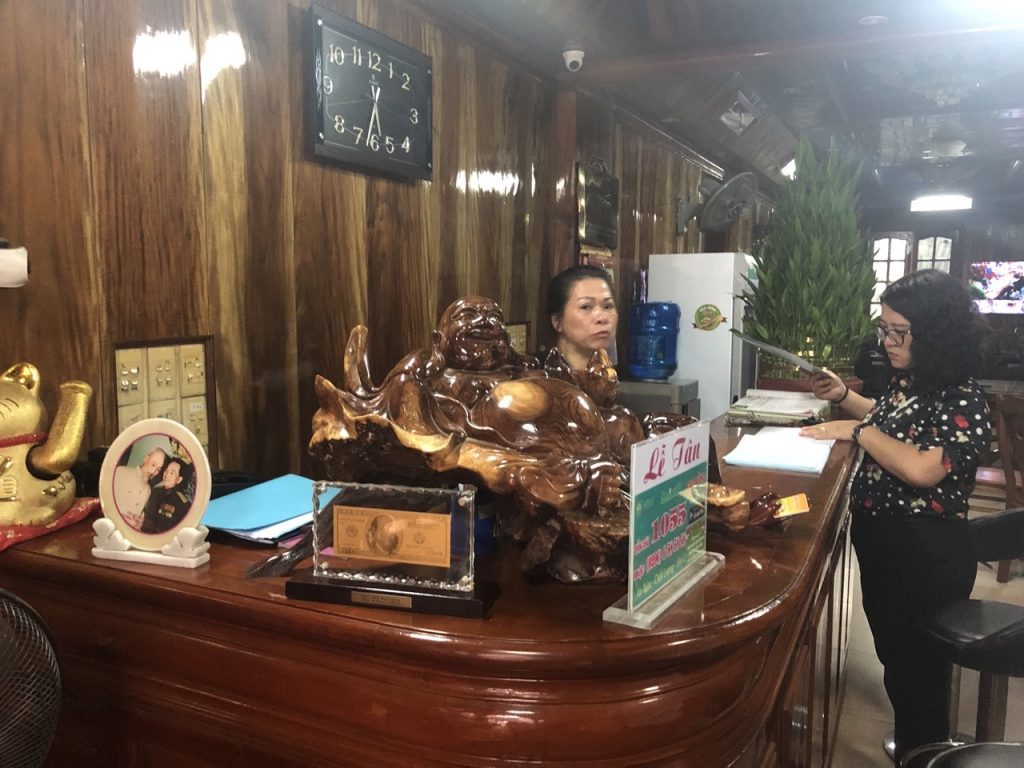
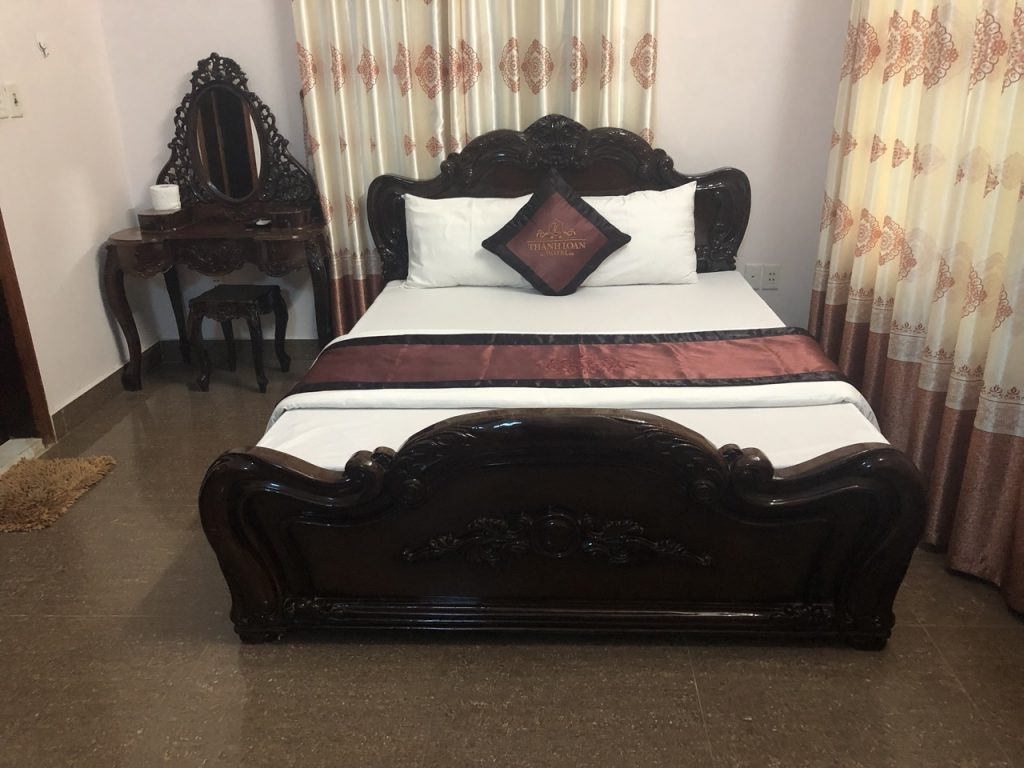
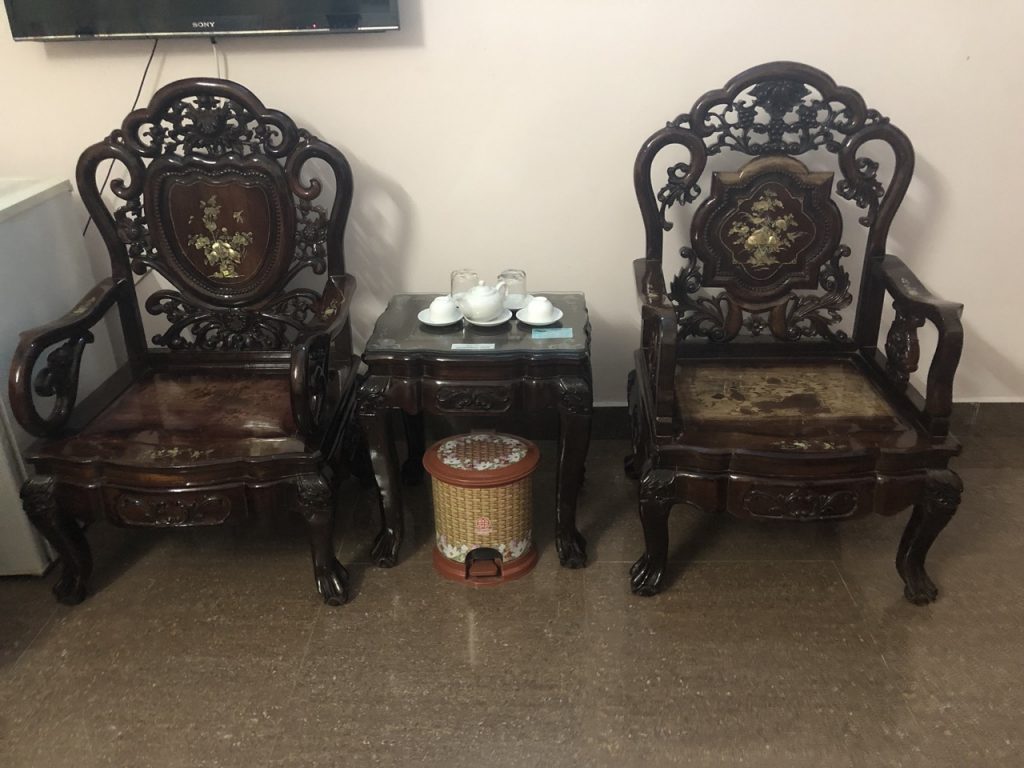
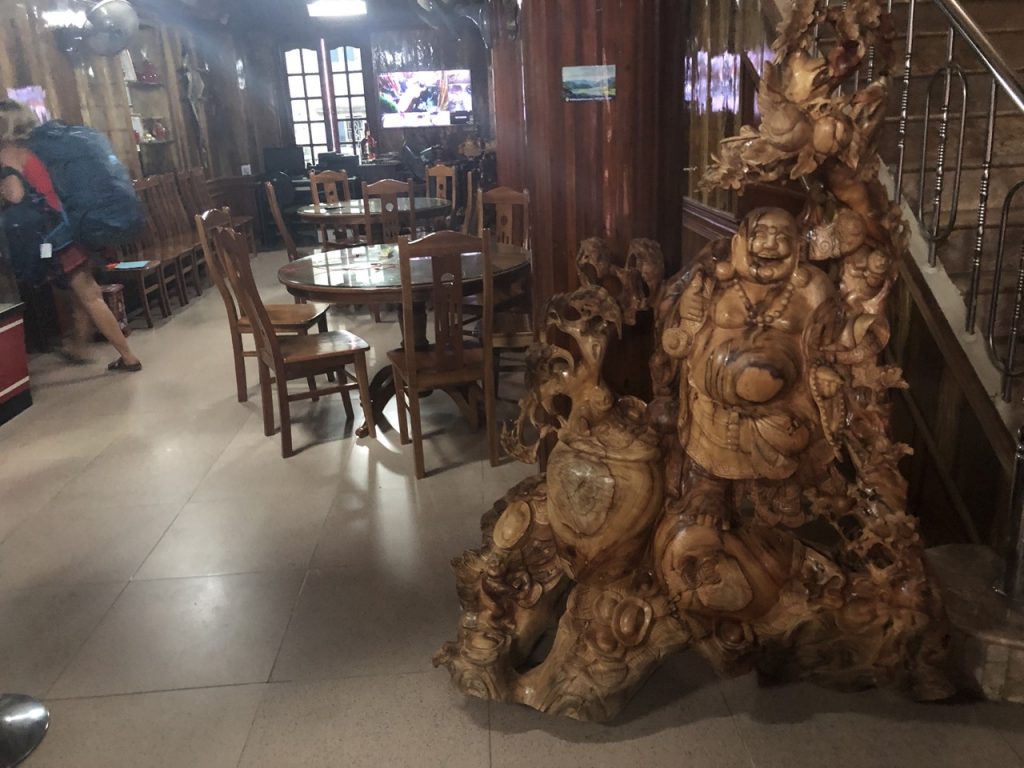
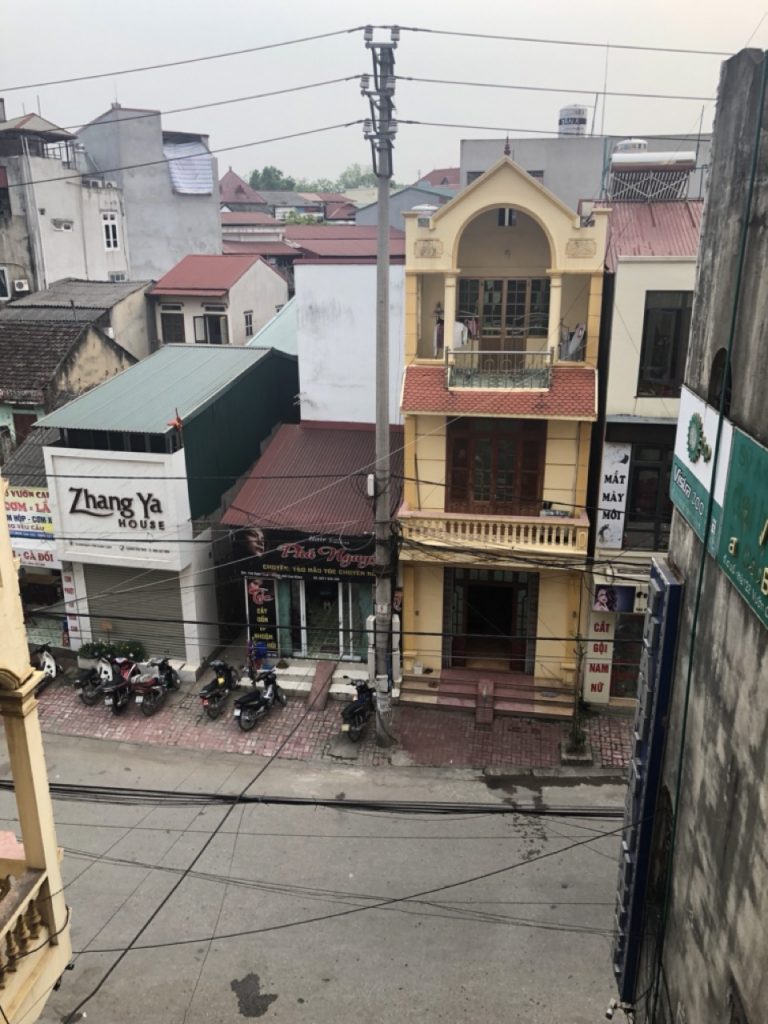
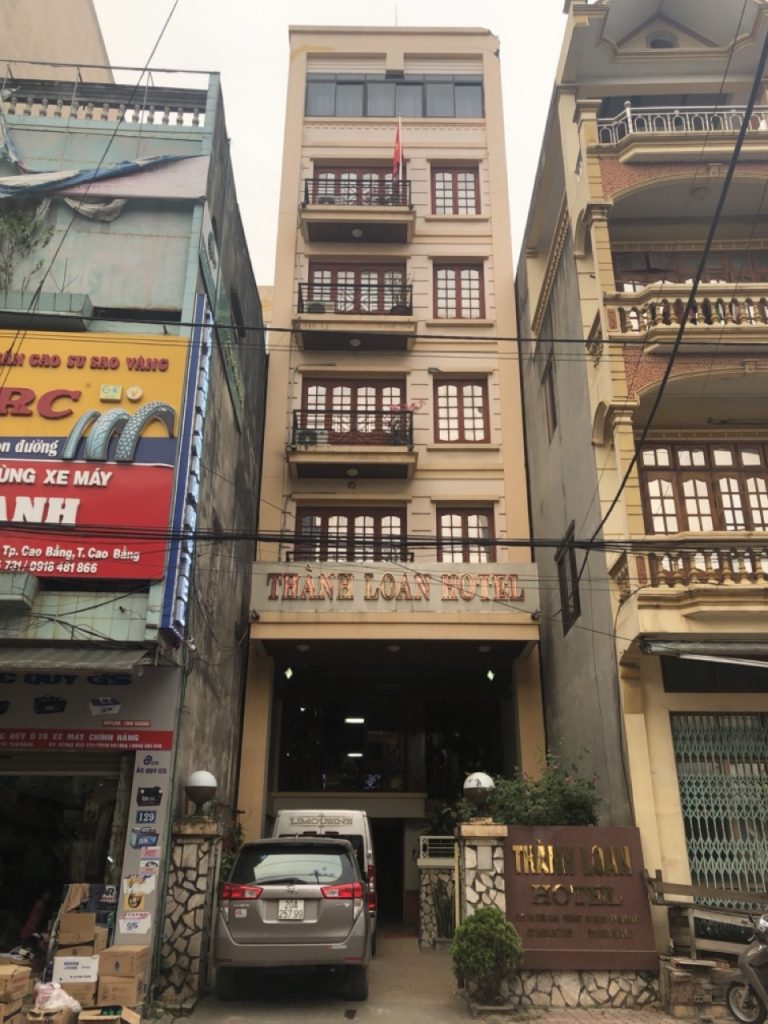
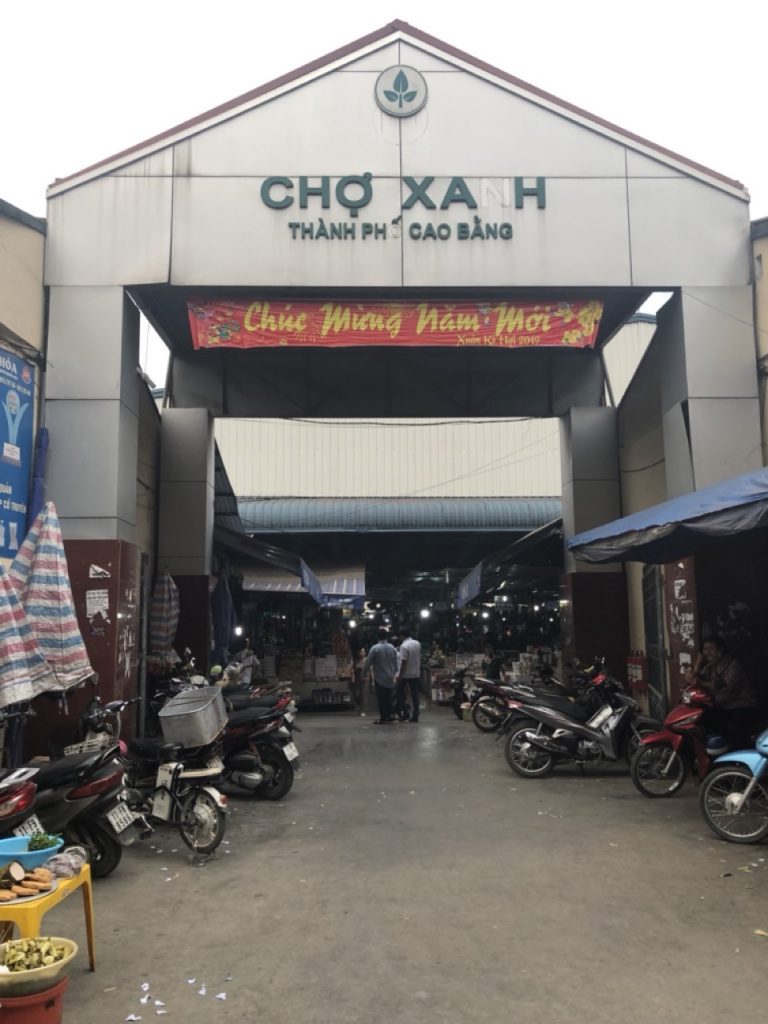
We headed out for a yummy meal.
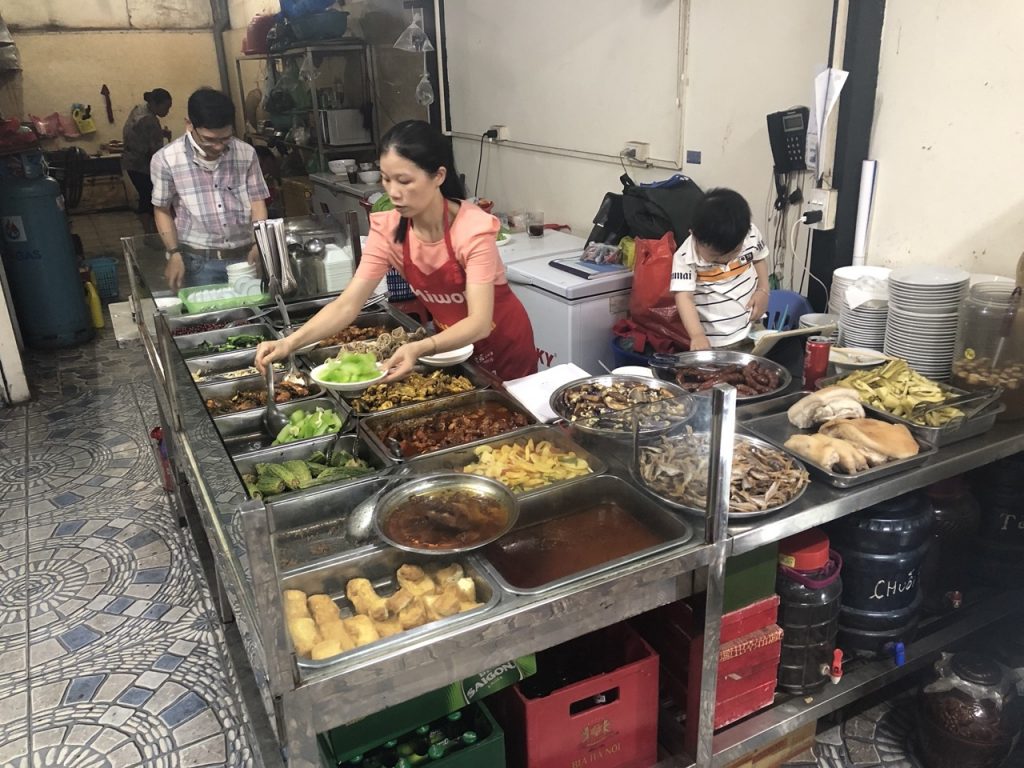
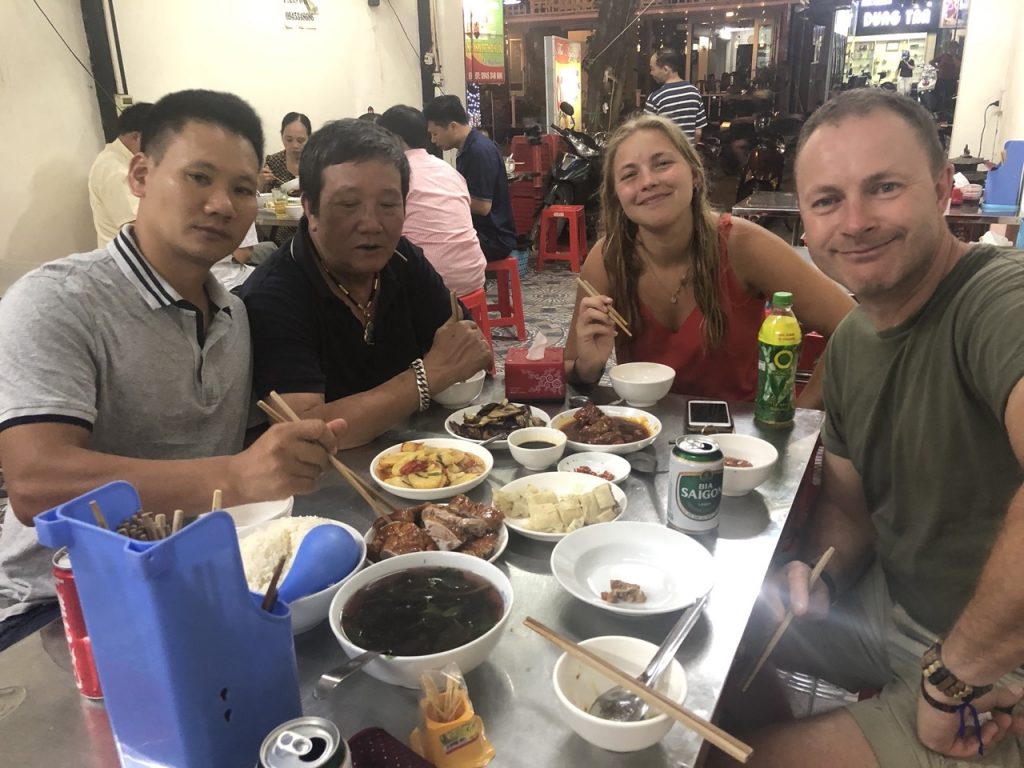
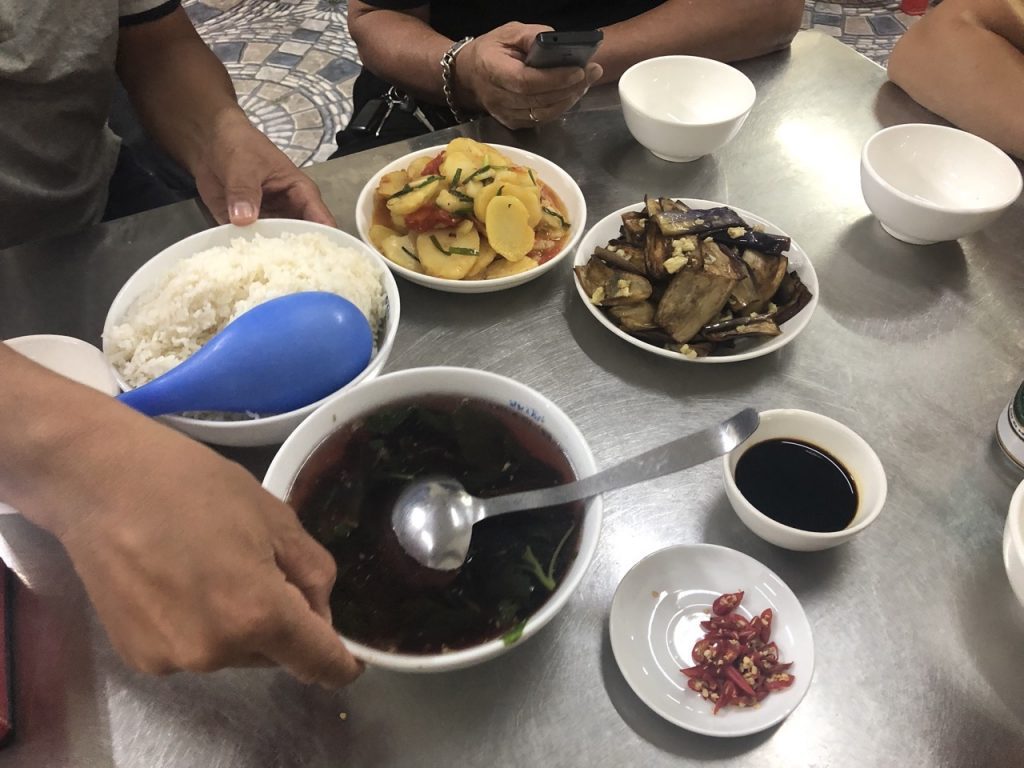
We walked around the corner to the local market where Villagers literally drove through with their vespas doing their shopping – crazy!
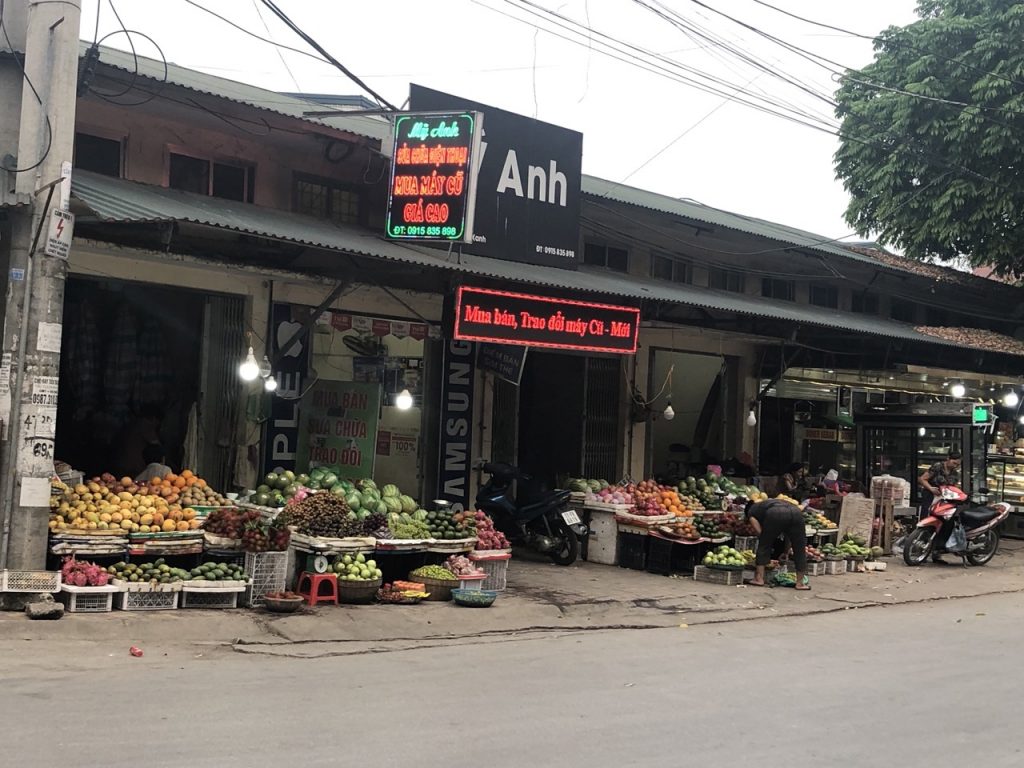
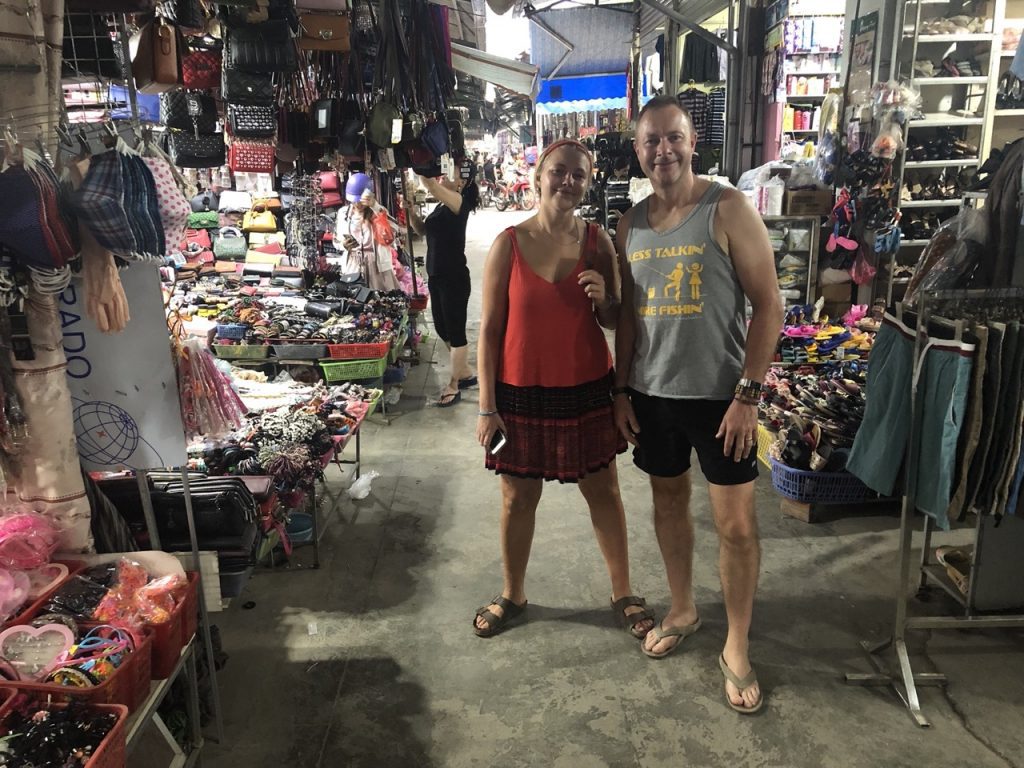
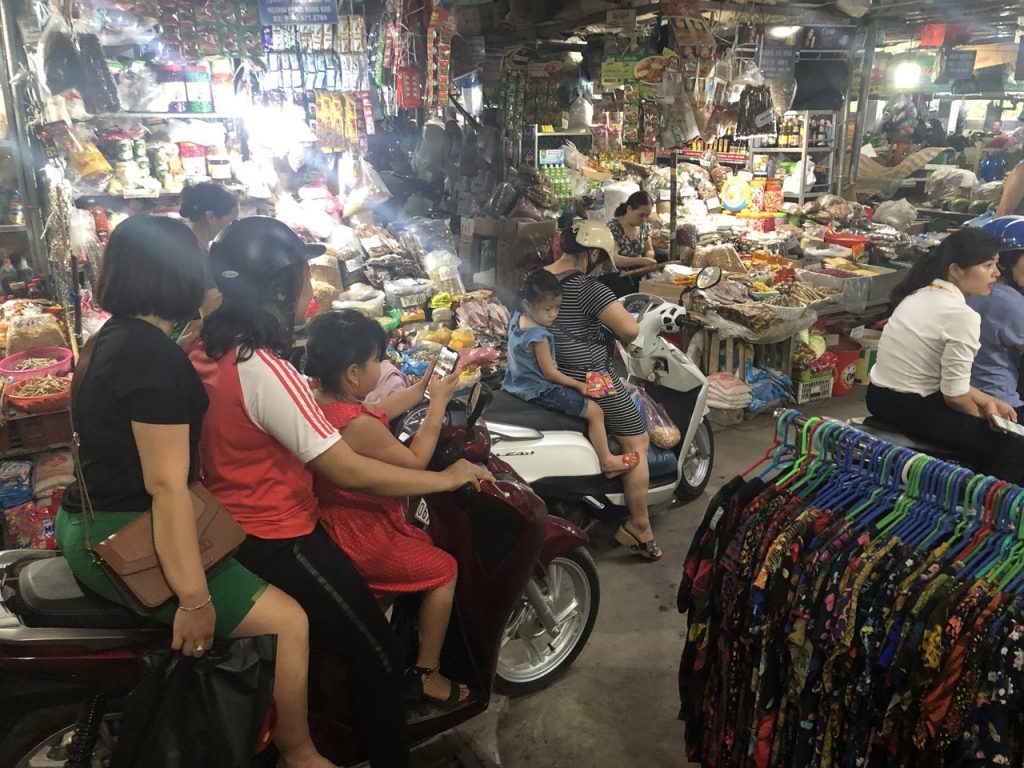
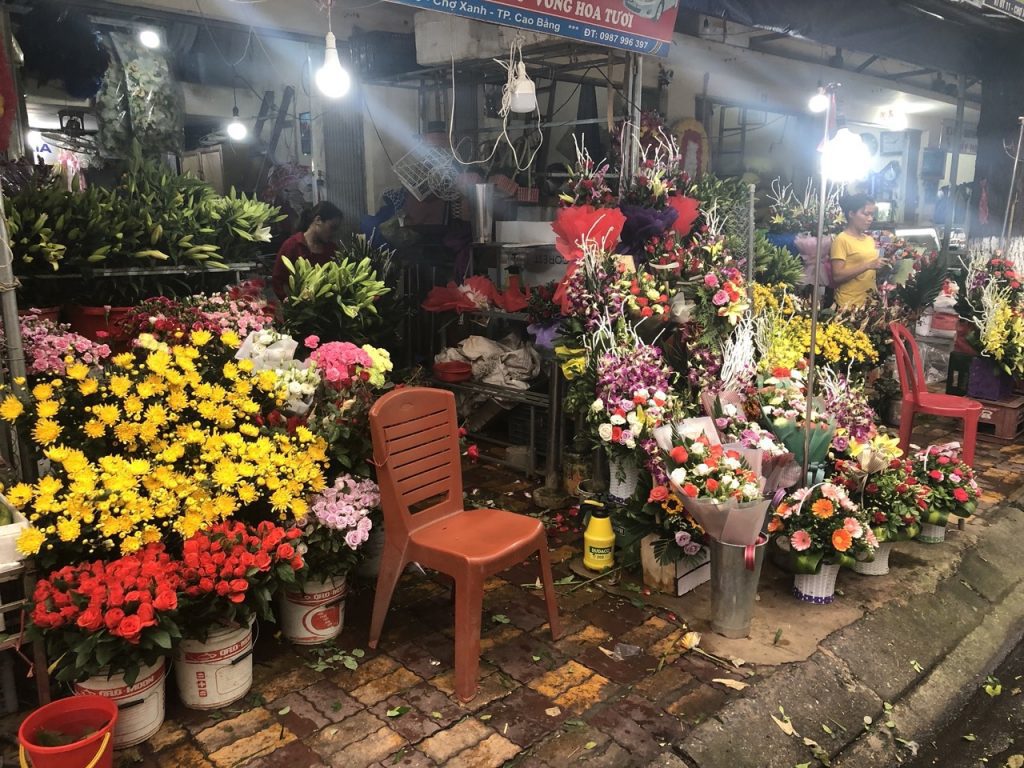
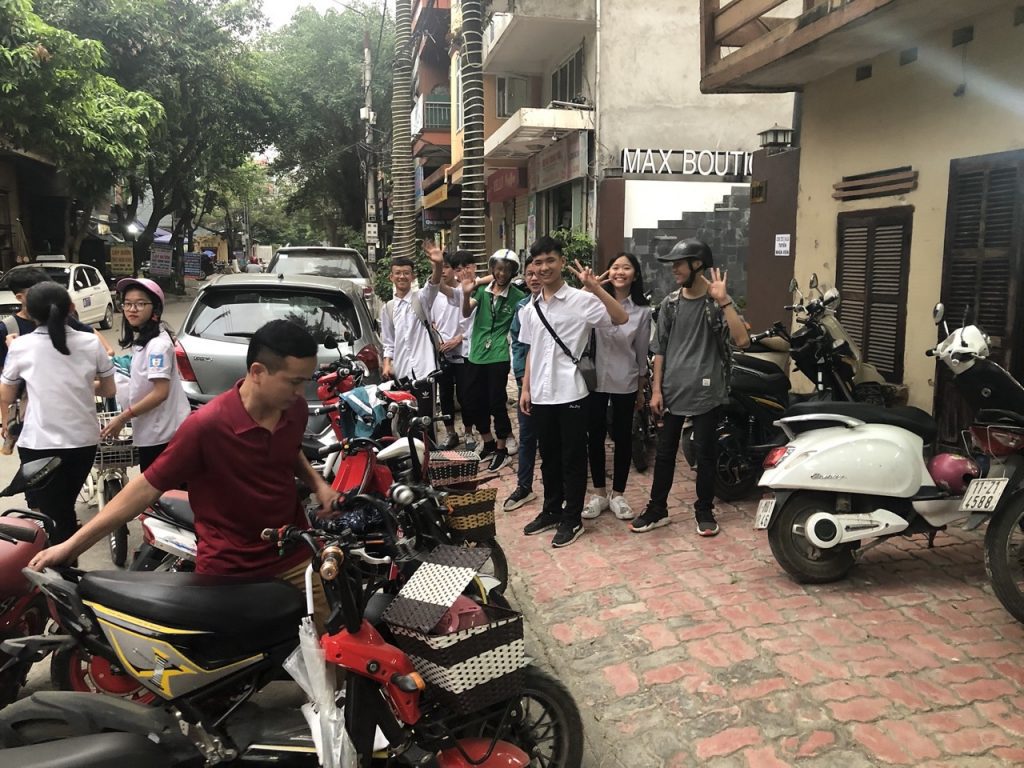
Interesting dried fish and spices…
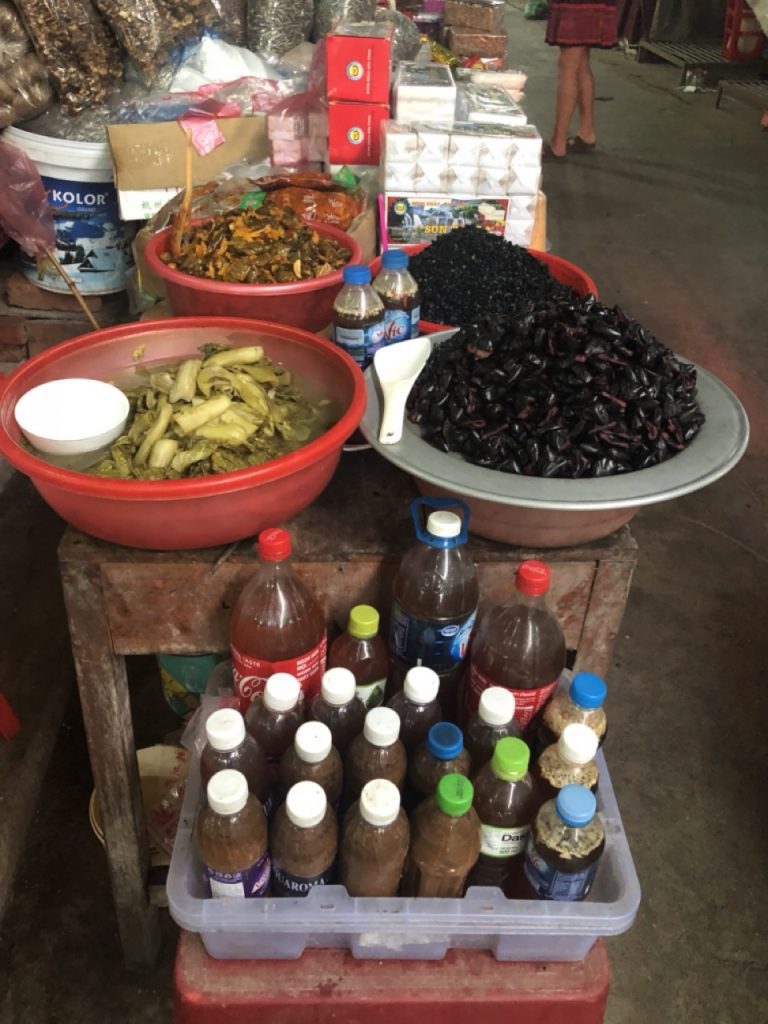
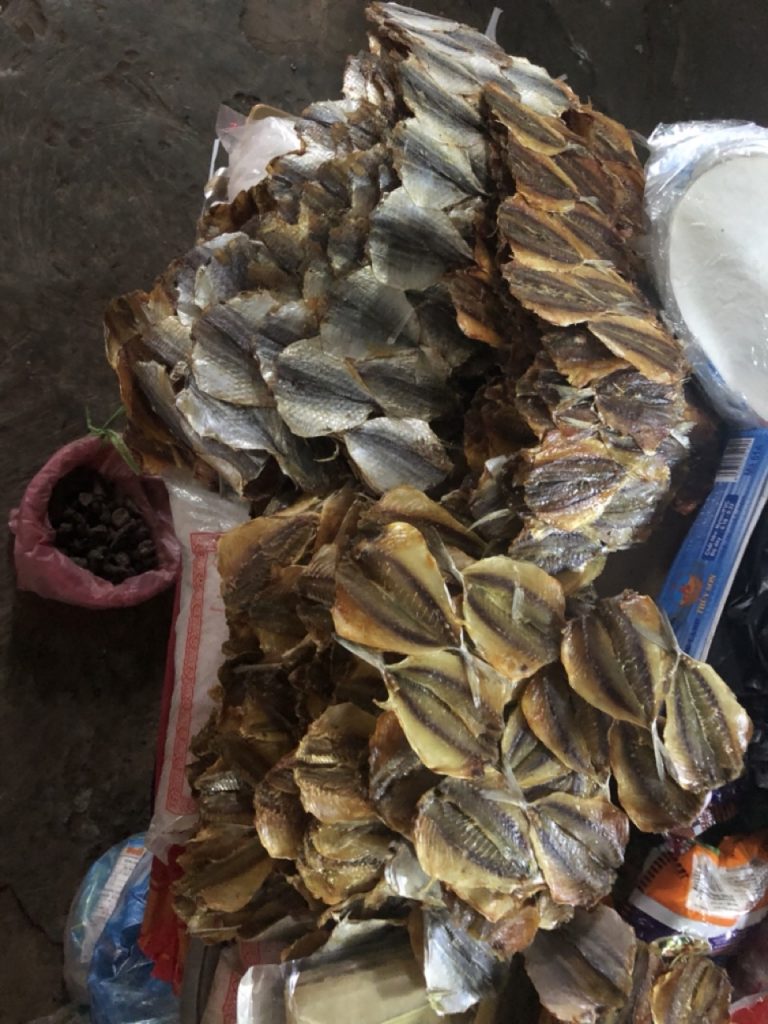
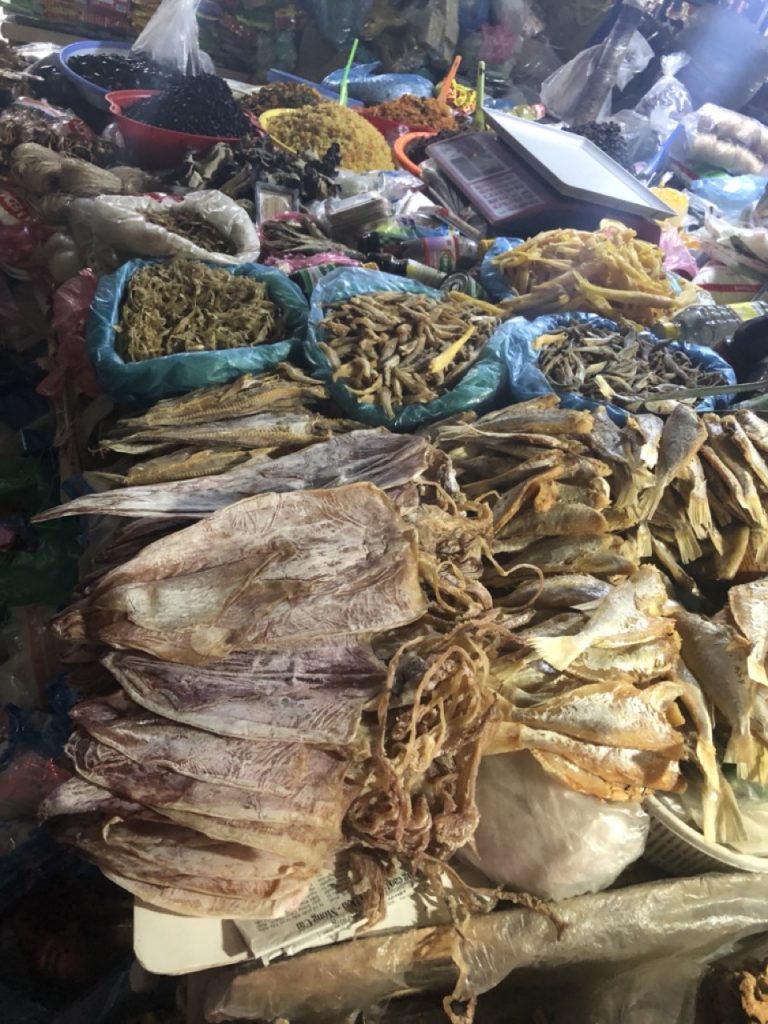
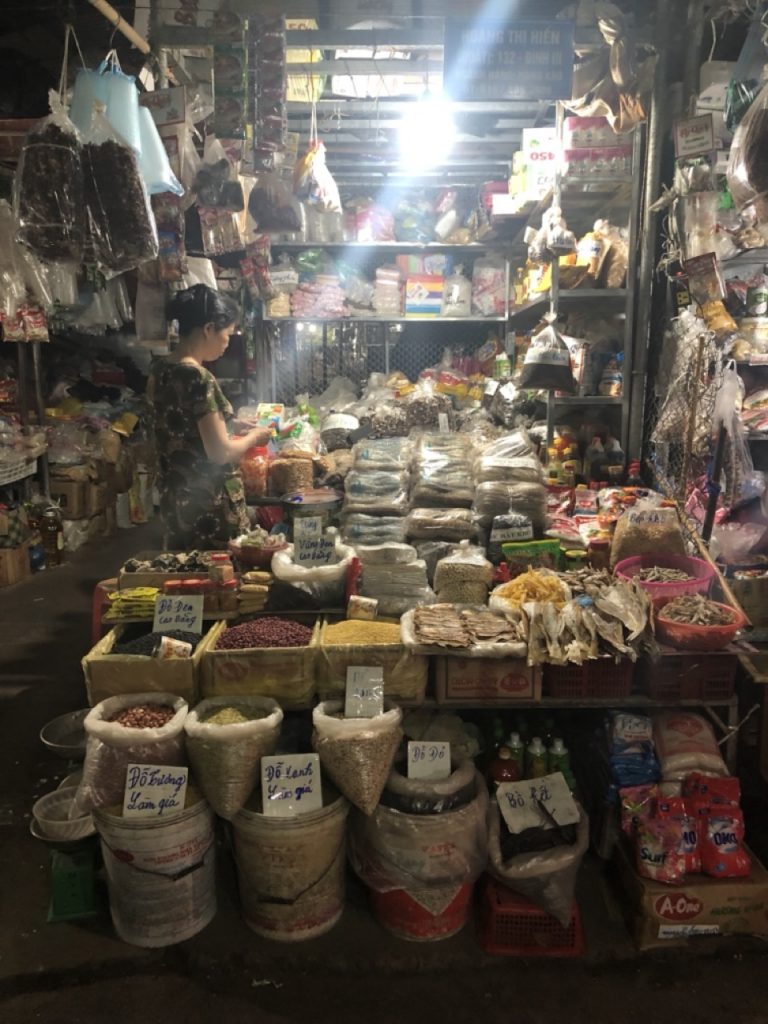
Saturday, 27 April 2019 36C – Cao Bang – Ba Be Lake – Hanoi
We were up for an early Pho breakfast and headed to Ba Be Lake – just stunning!! Ba Bể Lake is the largest natural lake in Vietnam. It is located in Nam Mẫu commune, Ba Bể district, Bắc Kạn Province in the Northeast region of the country. Having been formed approximately 200 million years ago, the lake is surrounded by limestone cliffs, which in turn are covered by primary forests. The birth of Ba Be lake was associated with a very famous legend. Once upon a time, a leper visited to a festival held by Nam Mau villagers, only to received hostility and discrimination from the host villagers for the disease she had. But one widow and her son showed this old poor woman kindness and invited her to their house and let her stay that night. In midnight, both of them were roused by the loud roaring noise, they found out a dragon instead of the old leper woman. When morning came, the old woman told them the truth that she was a higher being that had come down to test the villagers and decided to punish them with a cataclysm. The woman and her son were the only ones spared from the calamity for the good deed they’ve done. They were given a 2 pairs of rice husks to rescue people when everything got calm. After the flood was gone, a huge valley became the immense lake, called Be Be as today. It was a wonderful and relaxing boat journey followed by sampling some interesting street food on the shores of the lake!!
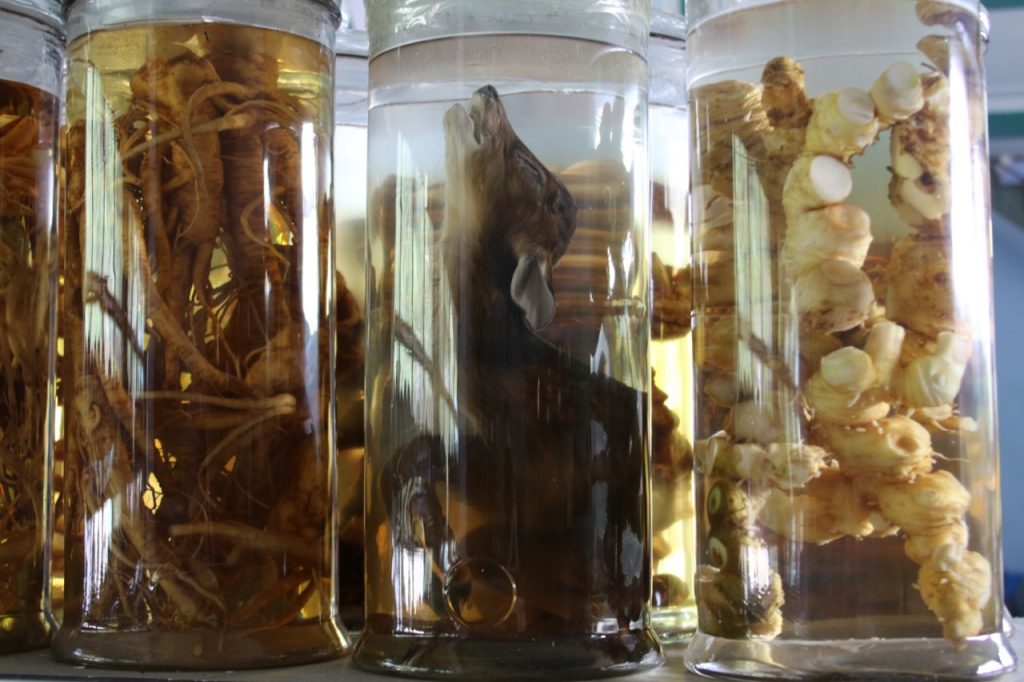
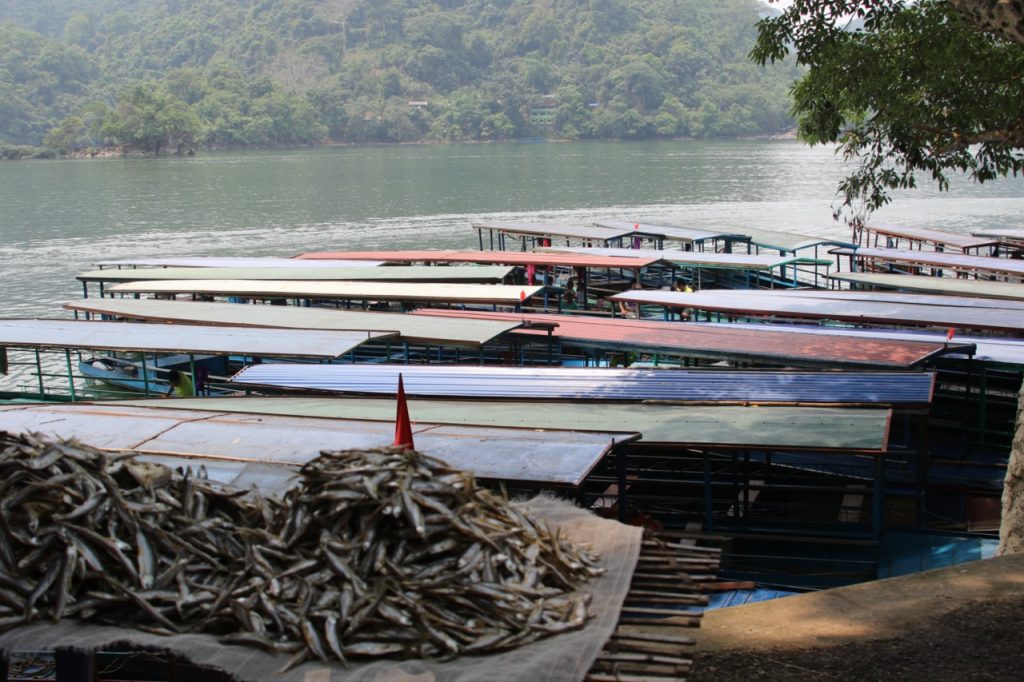

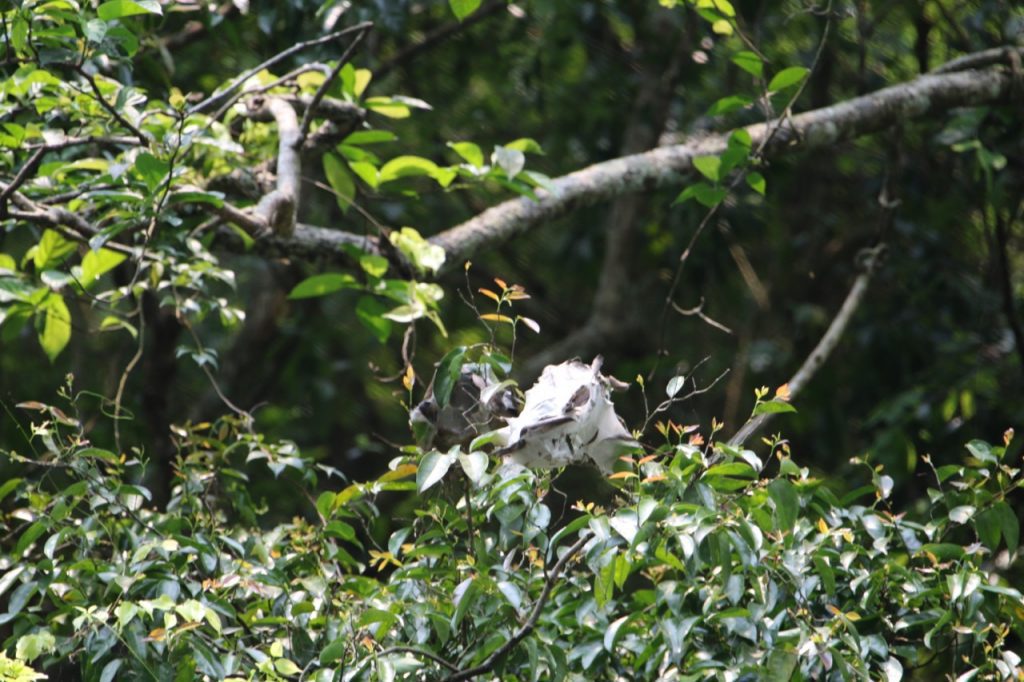
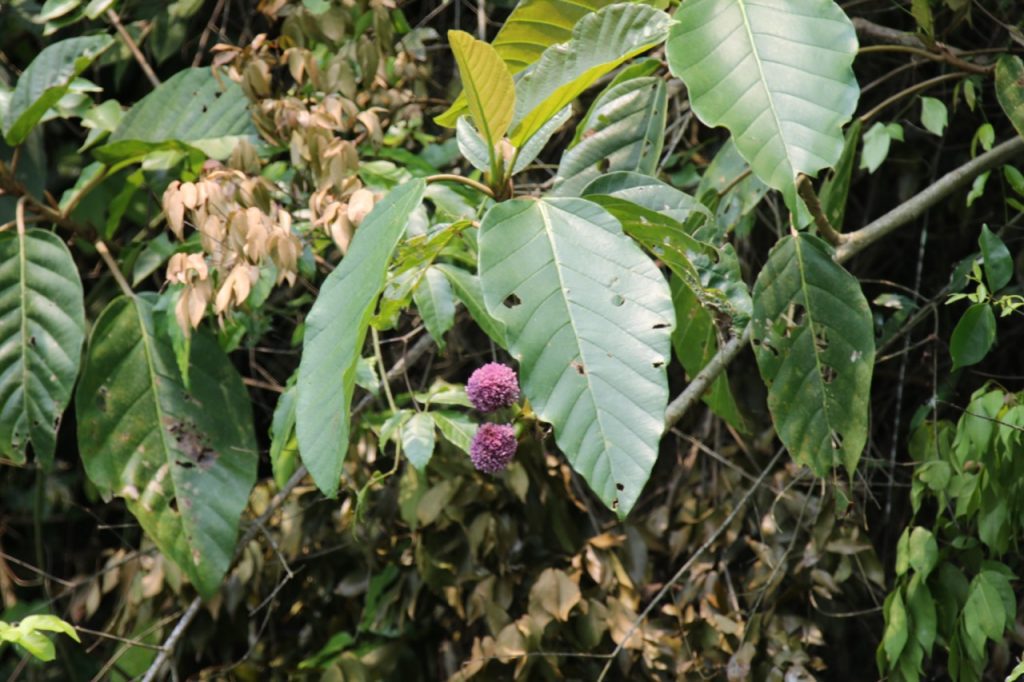
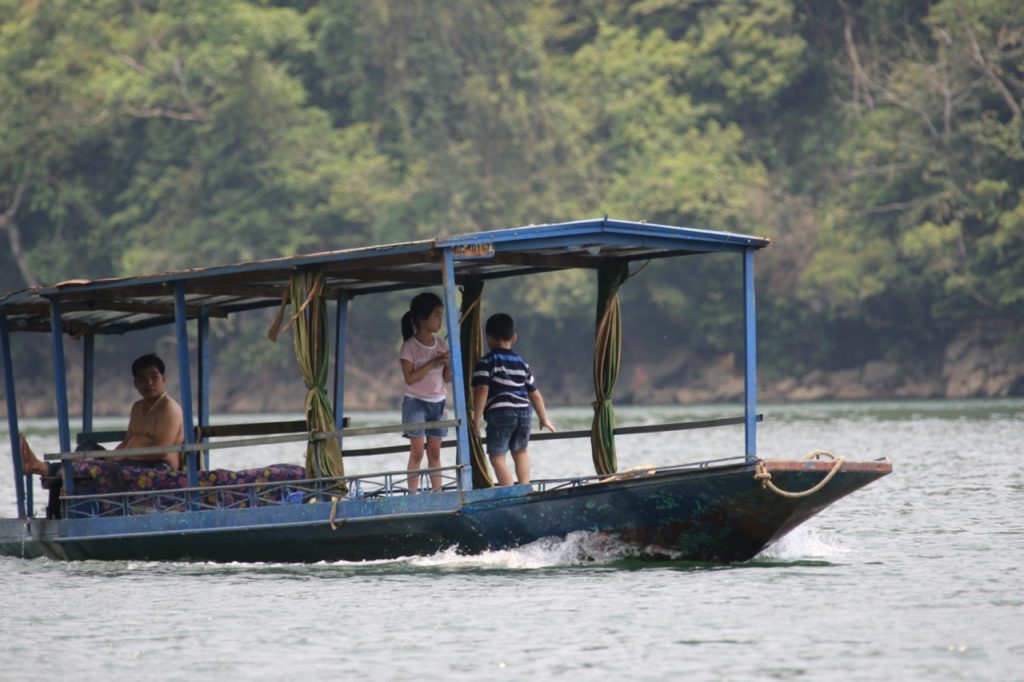
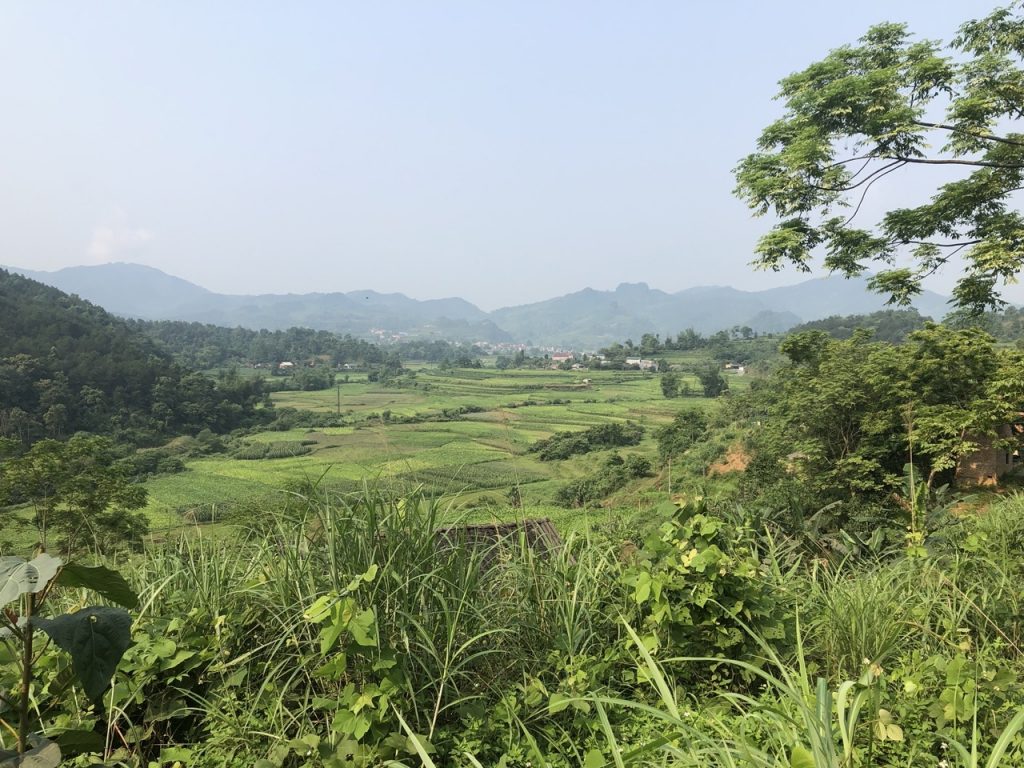
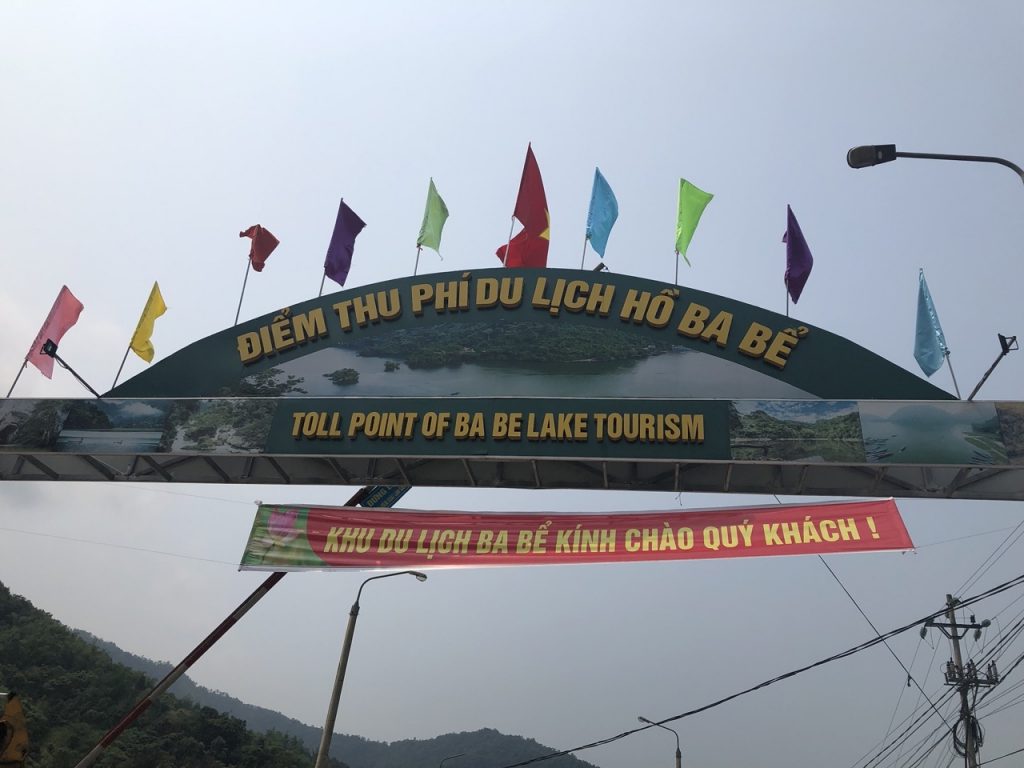
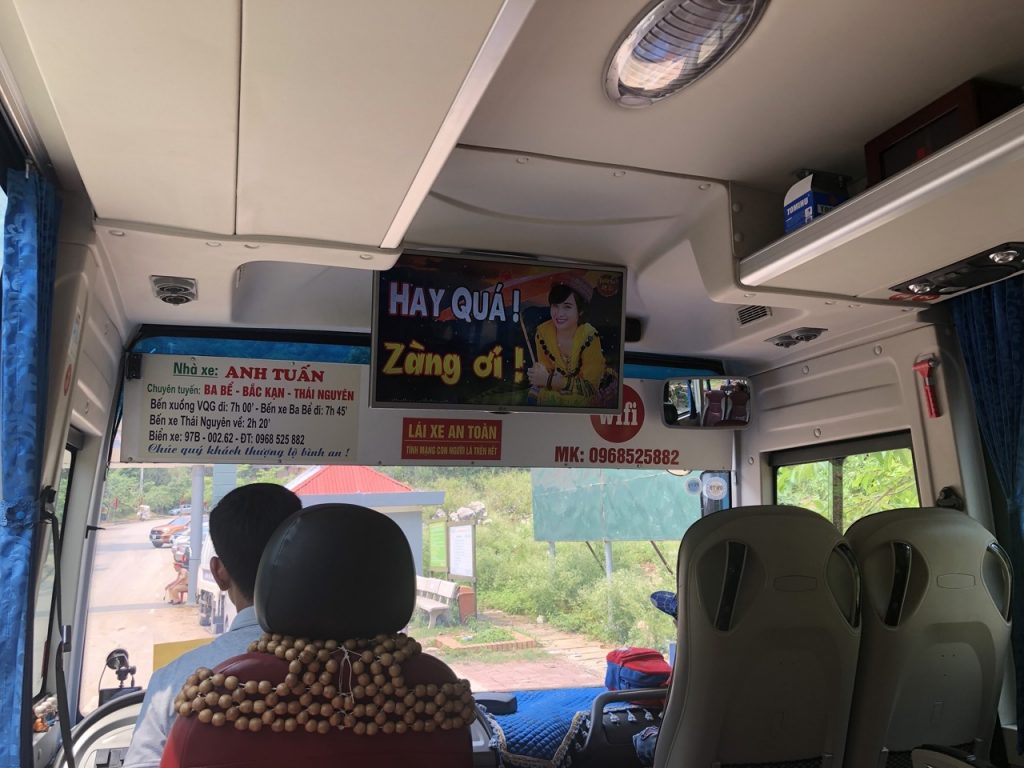
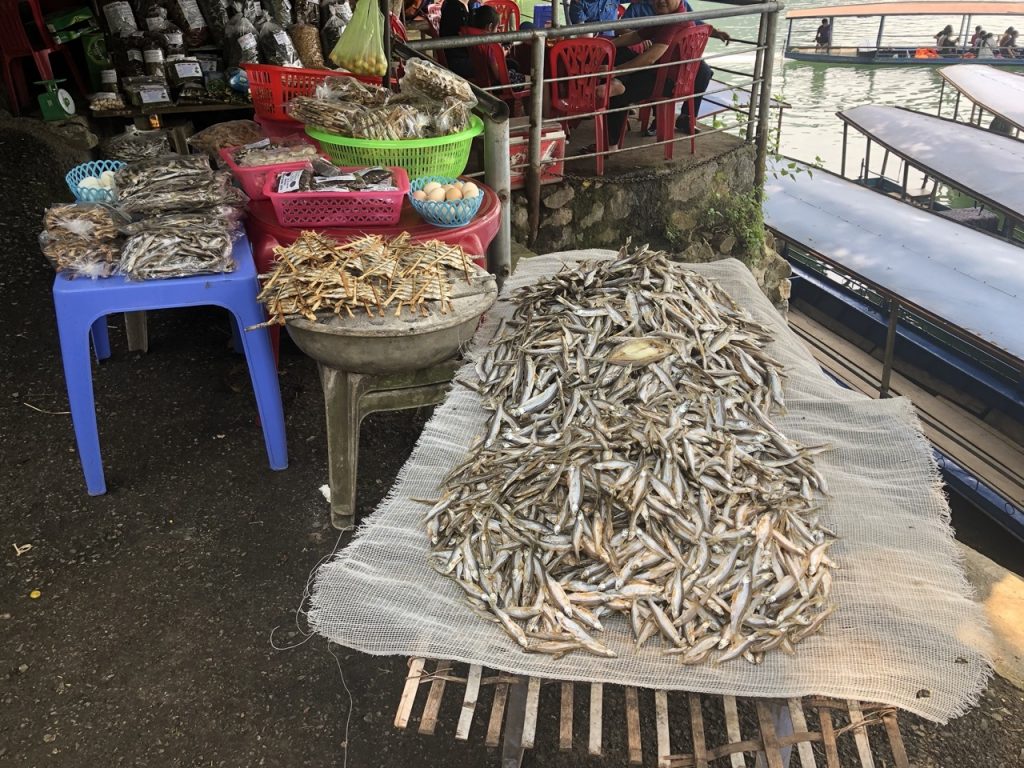
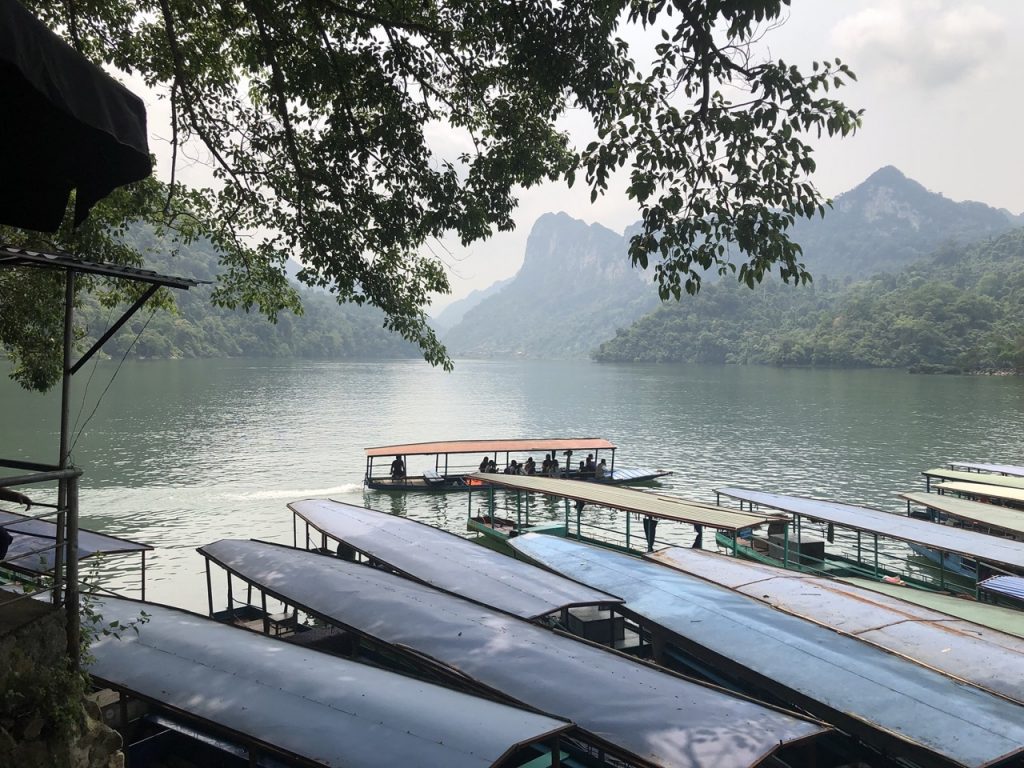
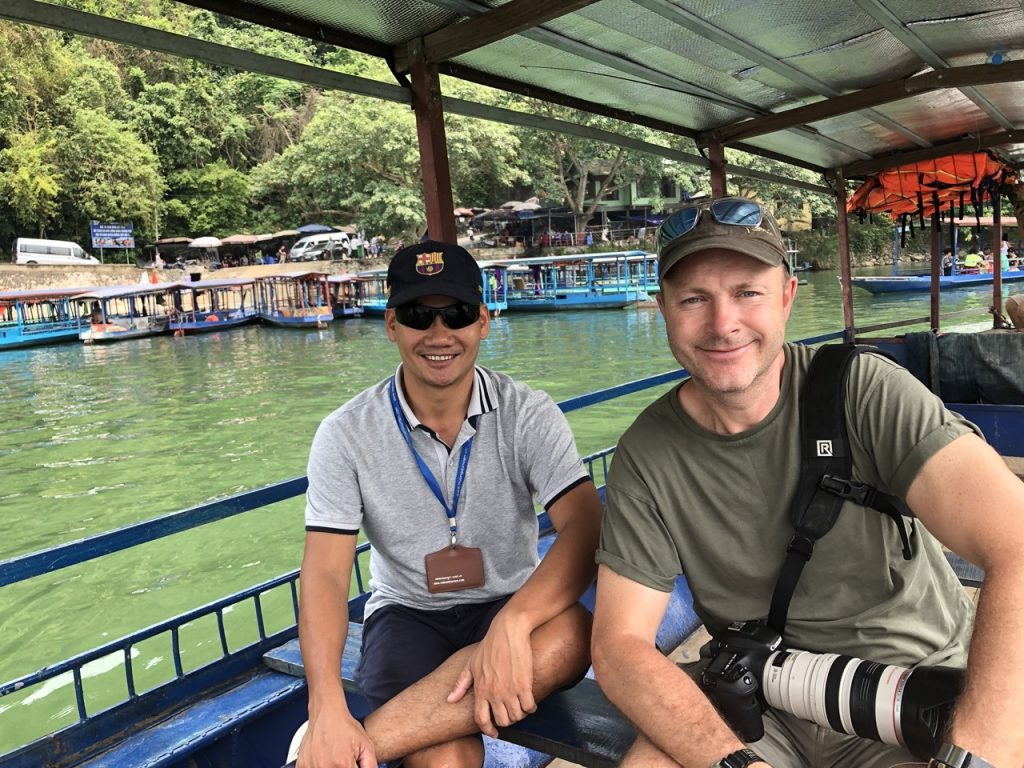
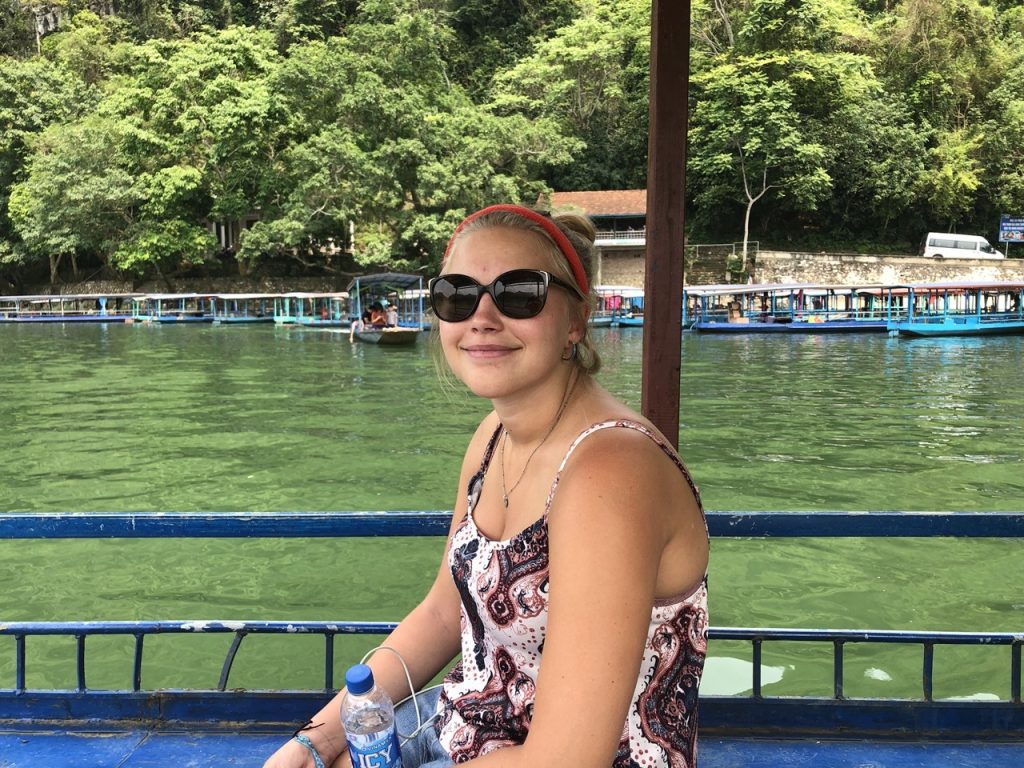
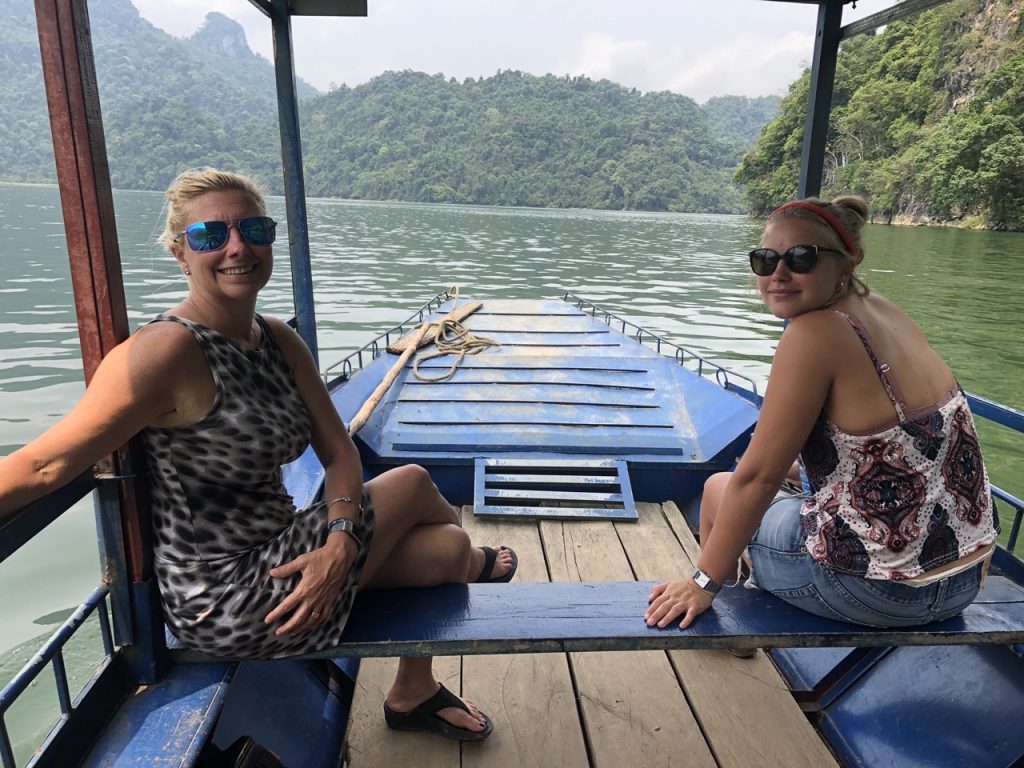
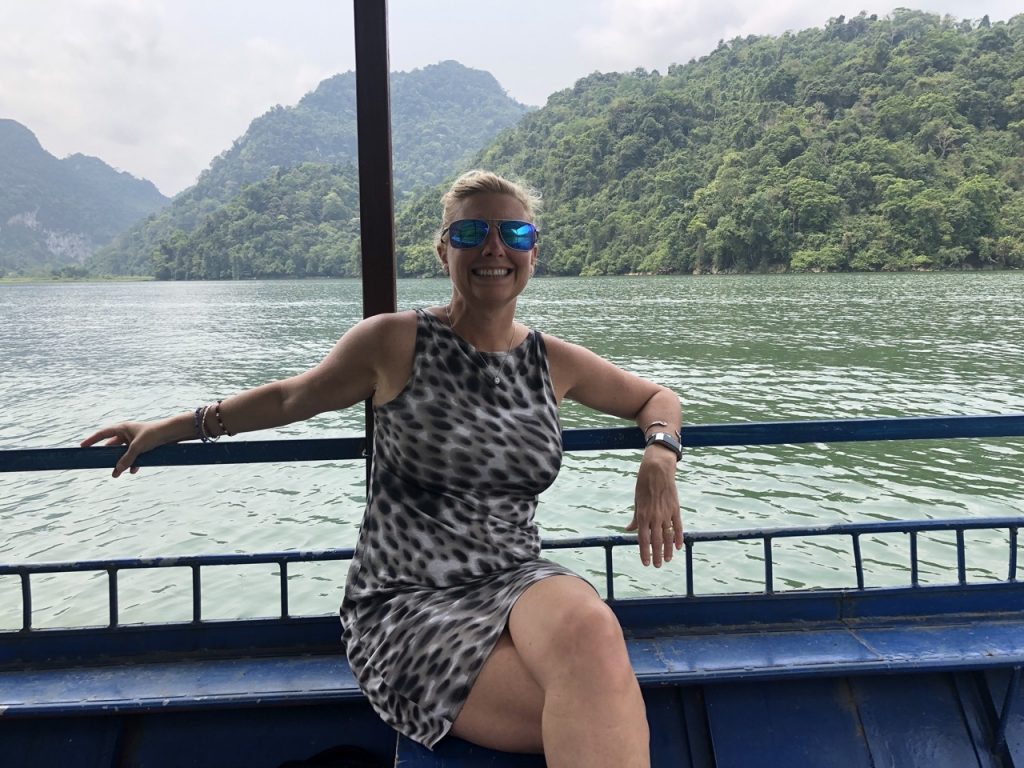
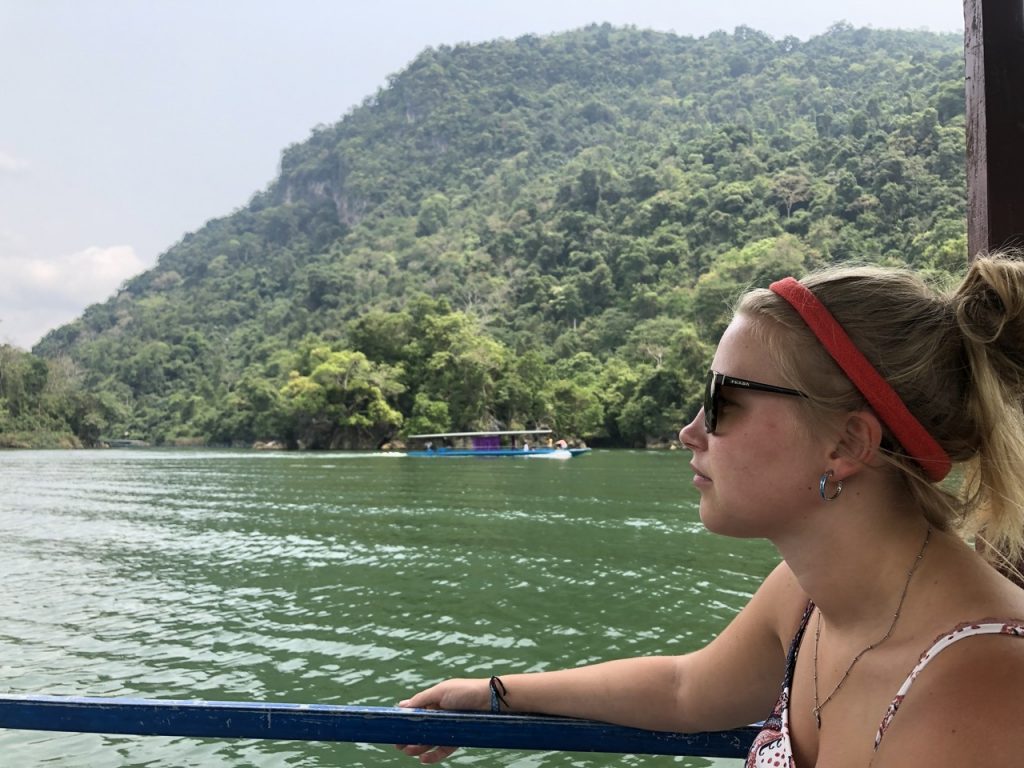
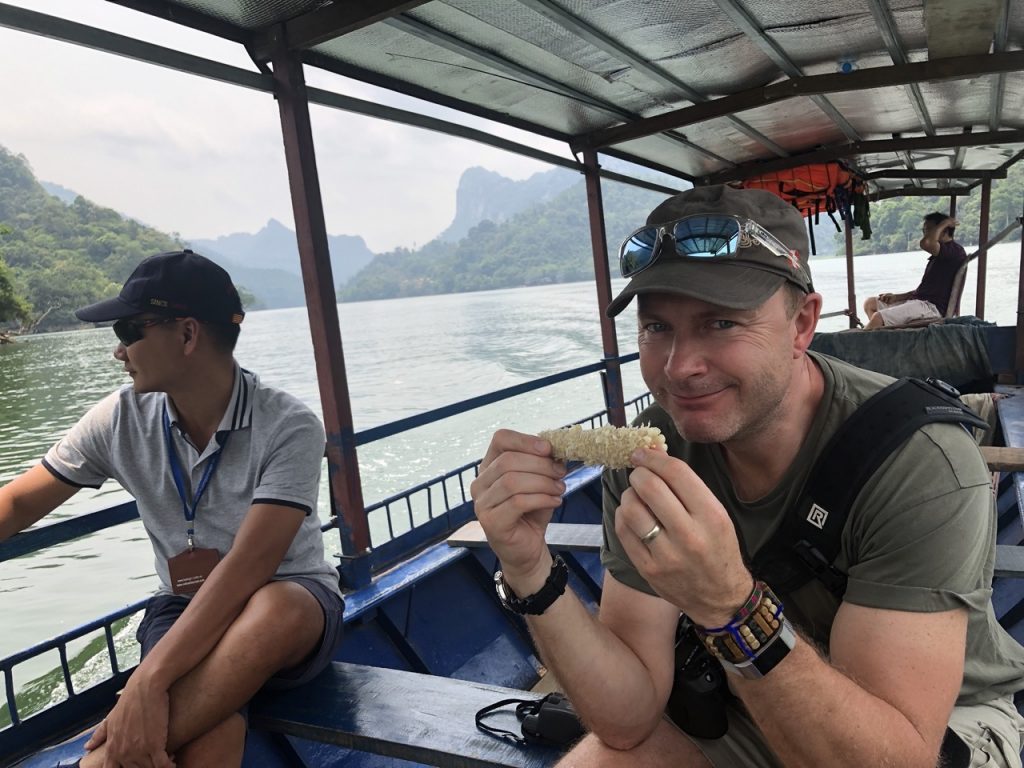
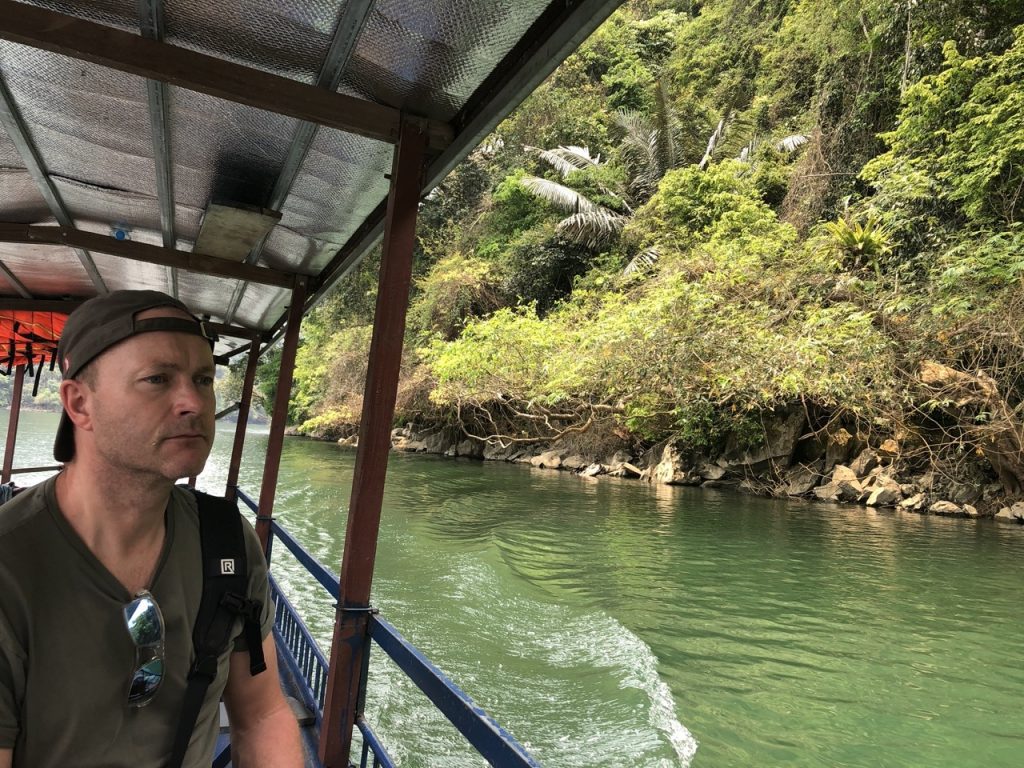
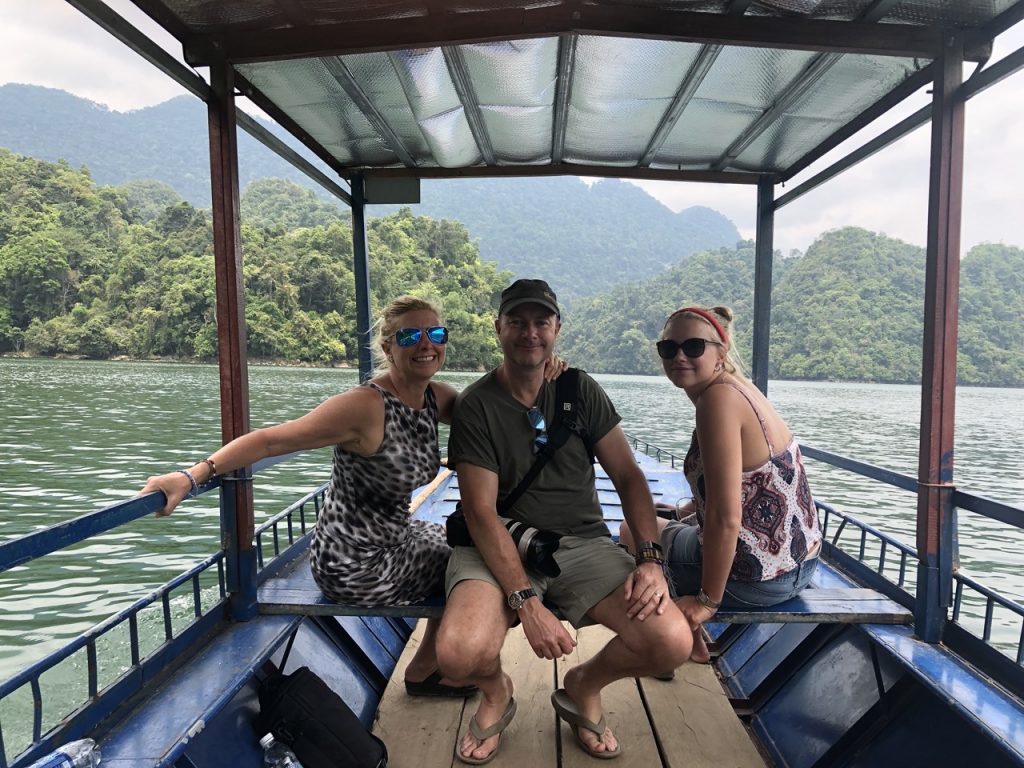
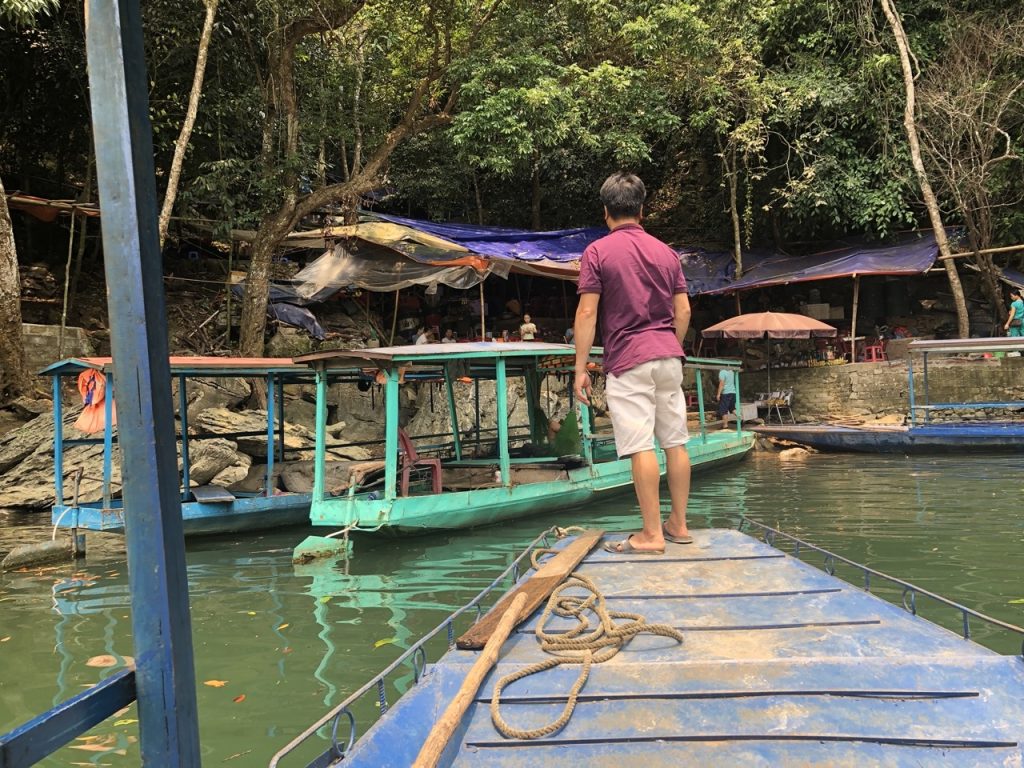
The food was ‘interesting’ … Phong shopped for aphrodisiacs! LOL. We absolutely loved it here – there were no tourists other than local travellers and it was just part of their daily lives.
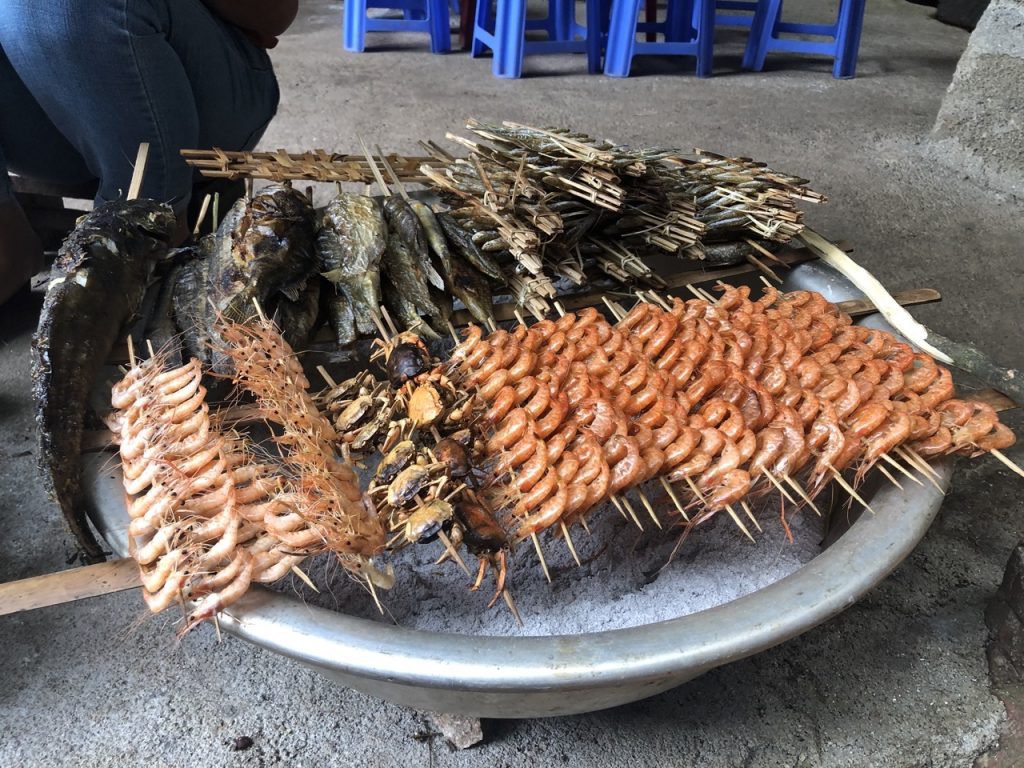
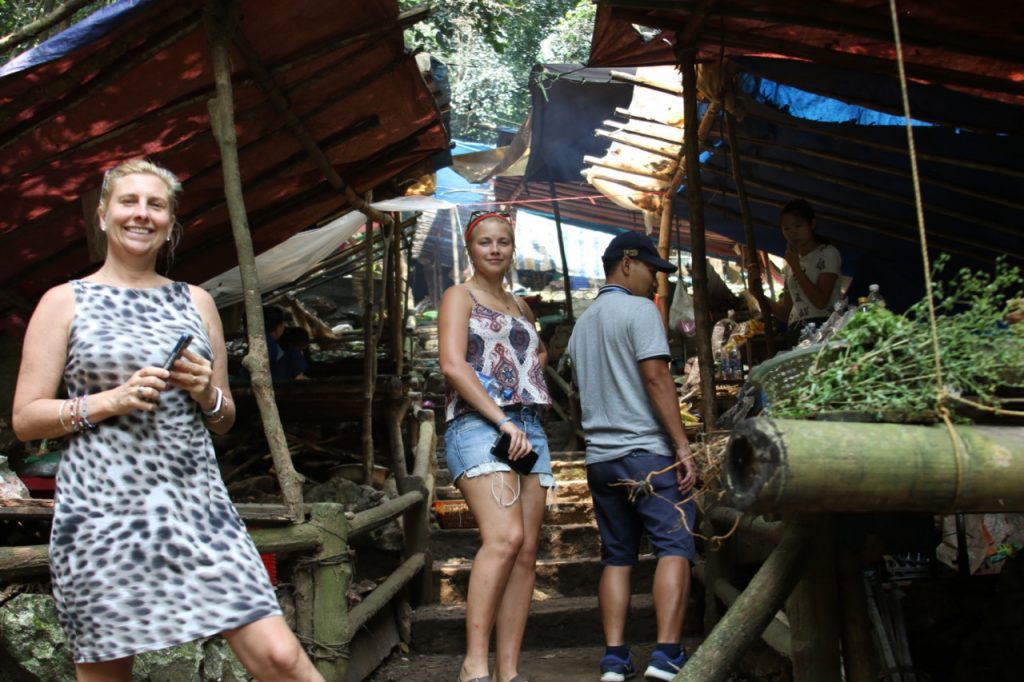
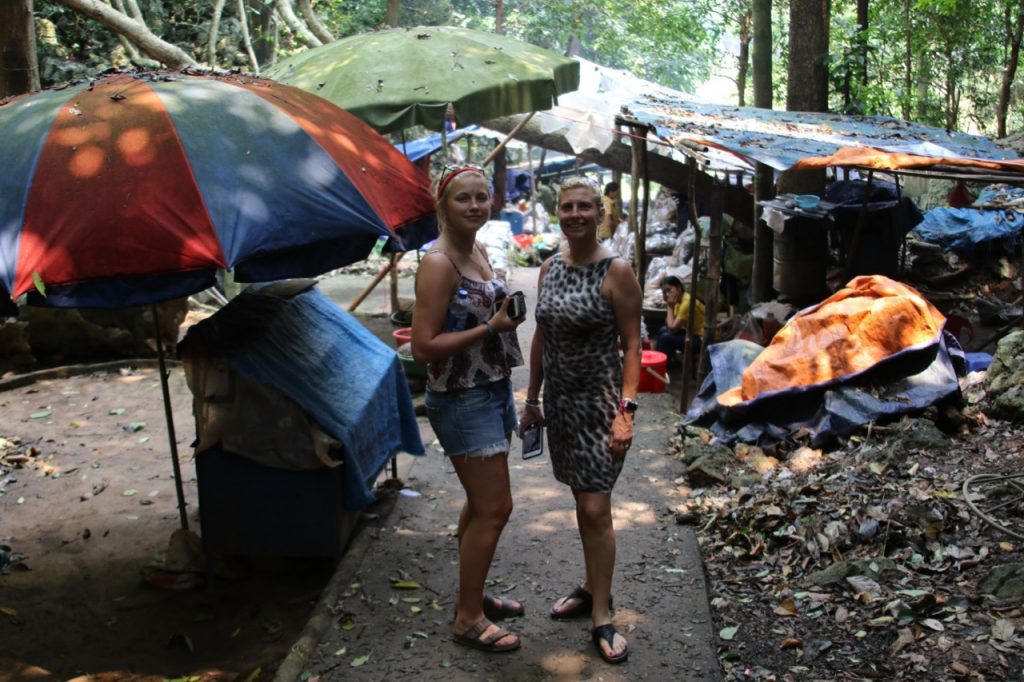
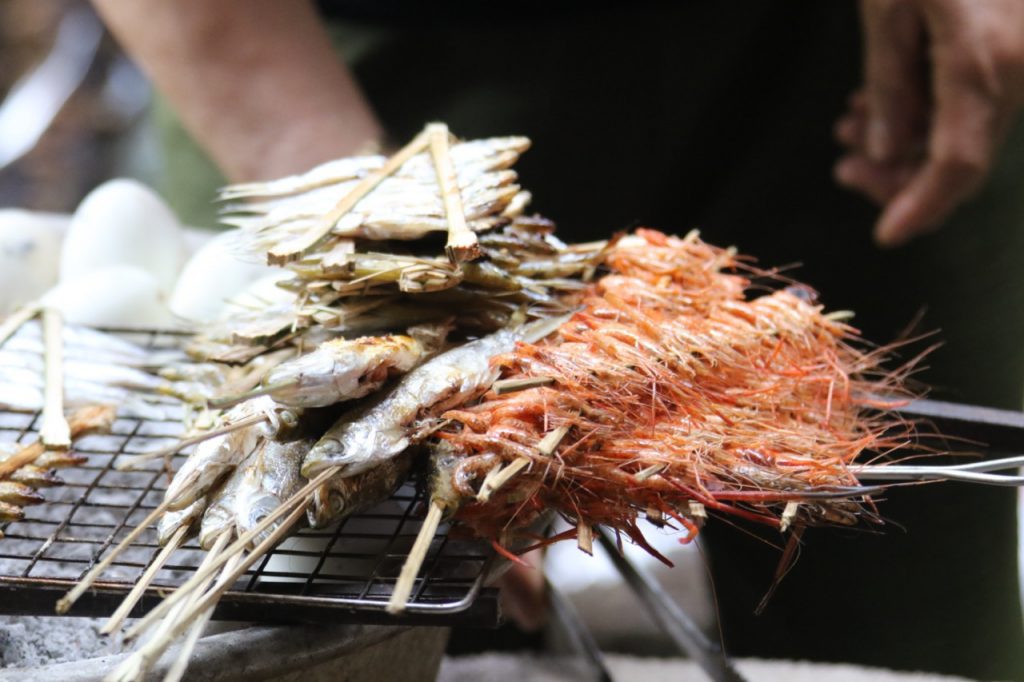
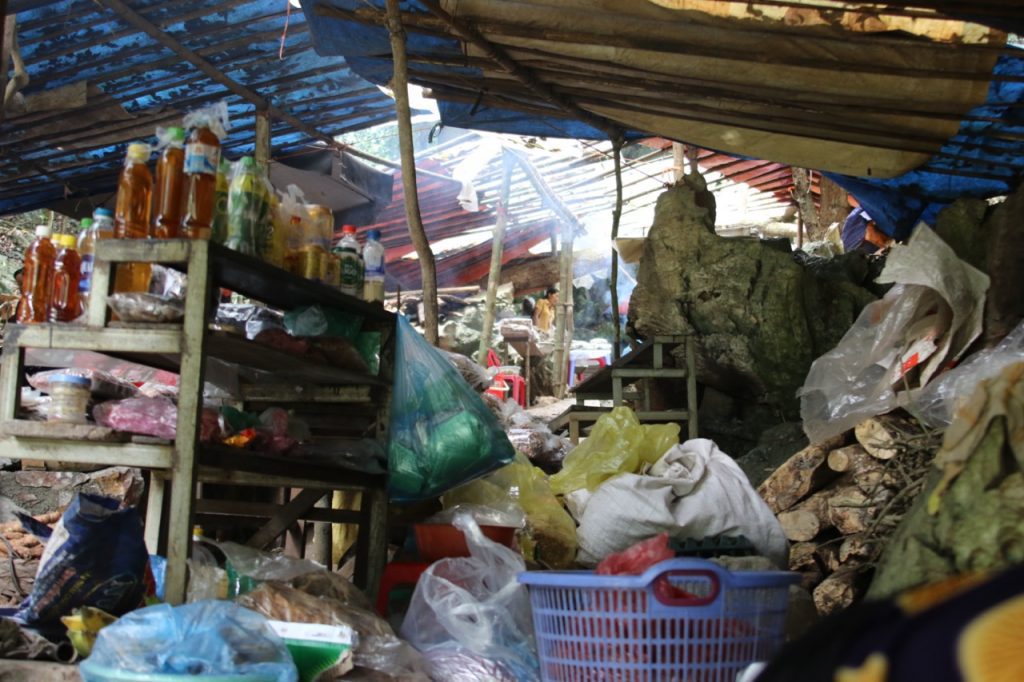
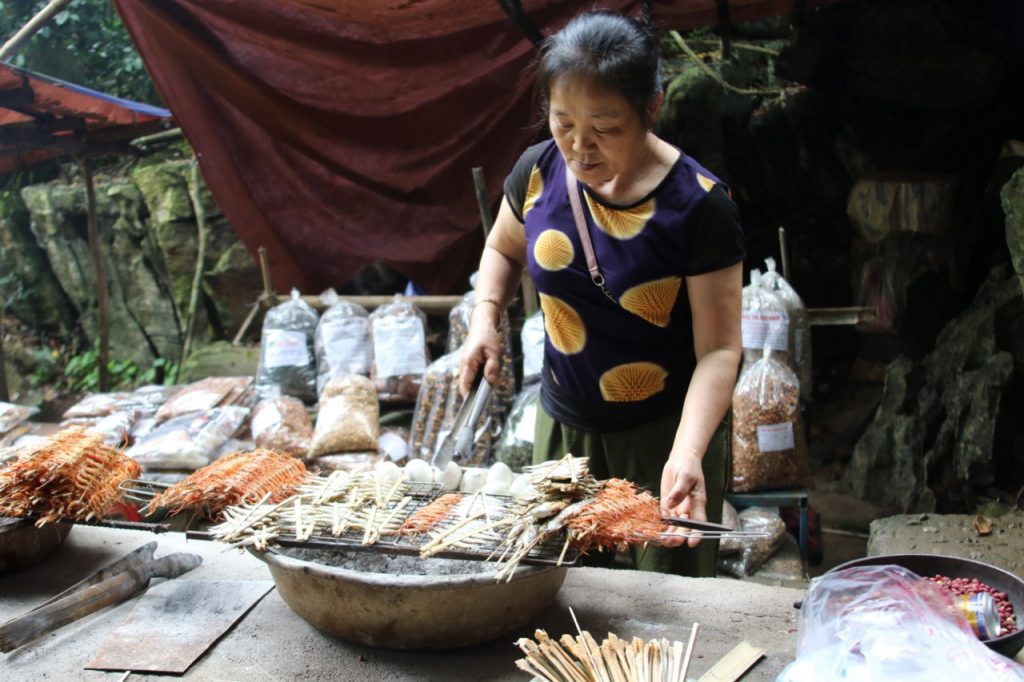
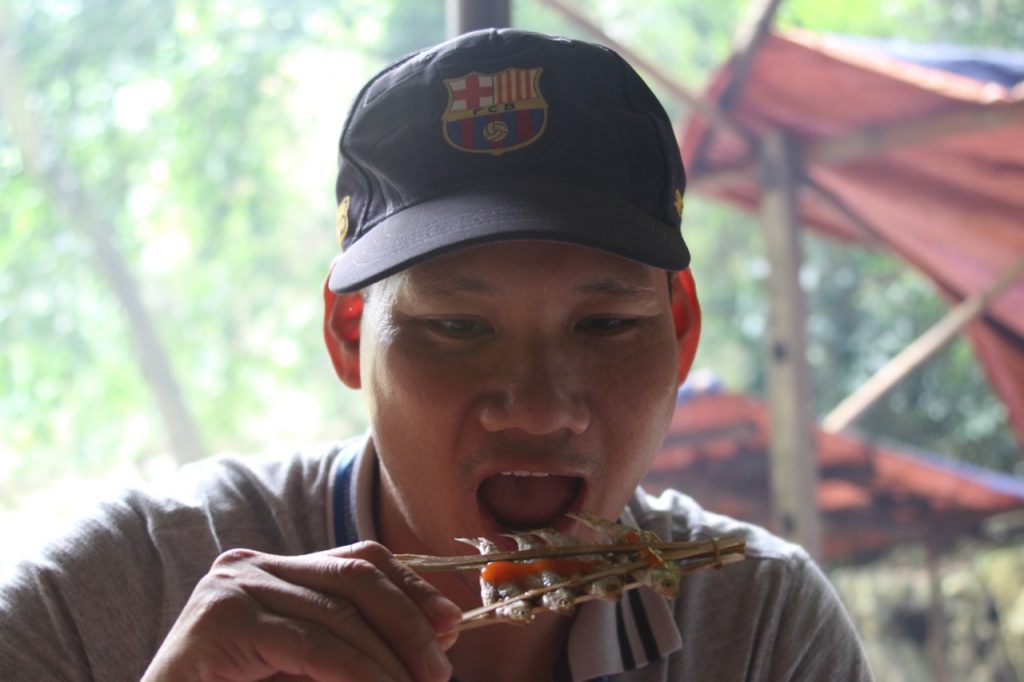
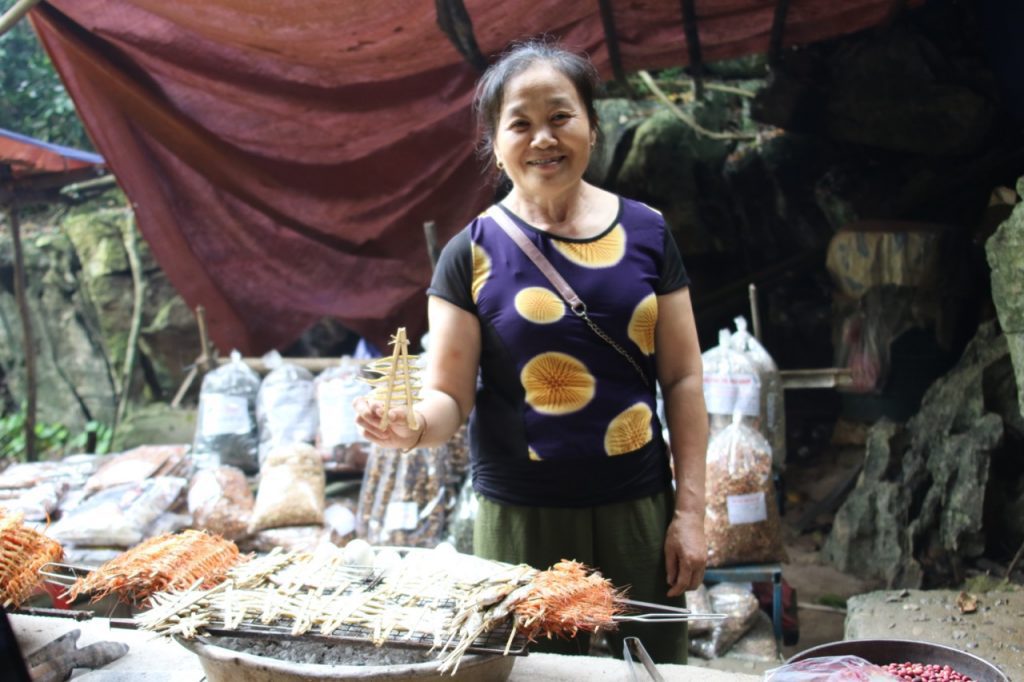
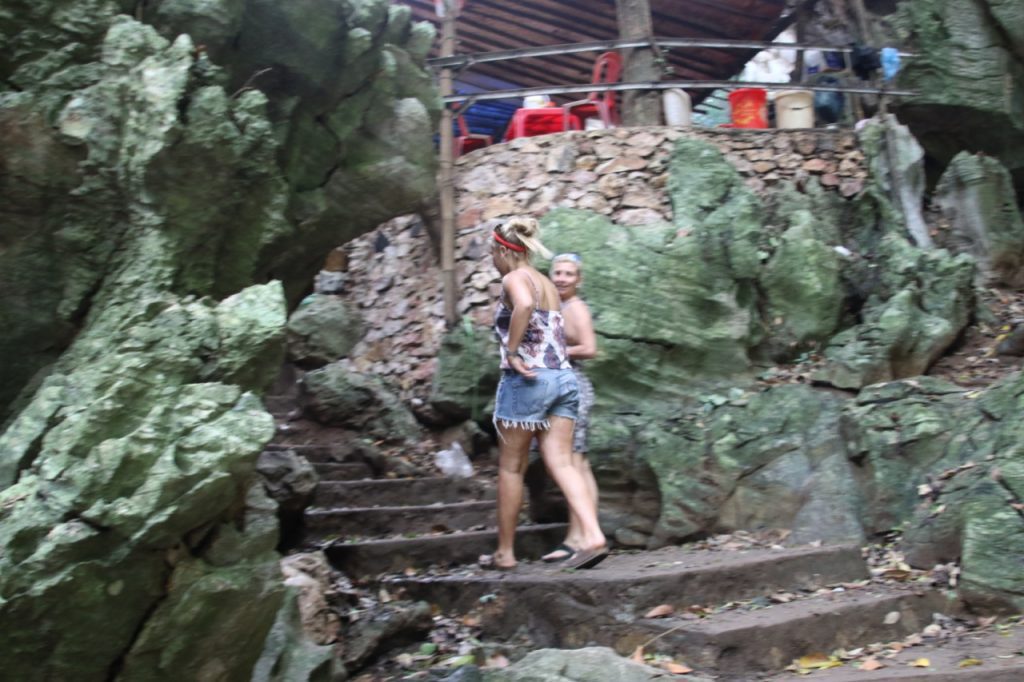
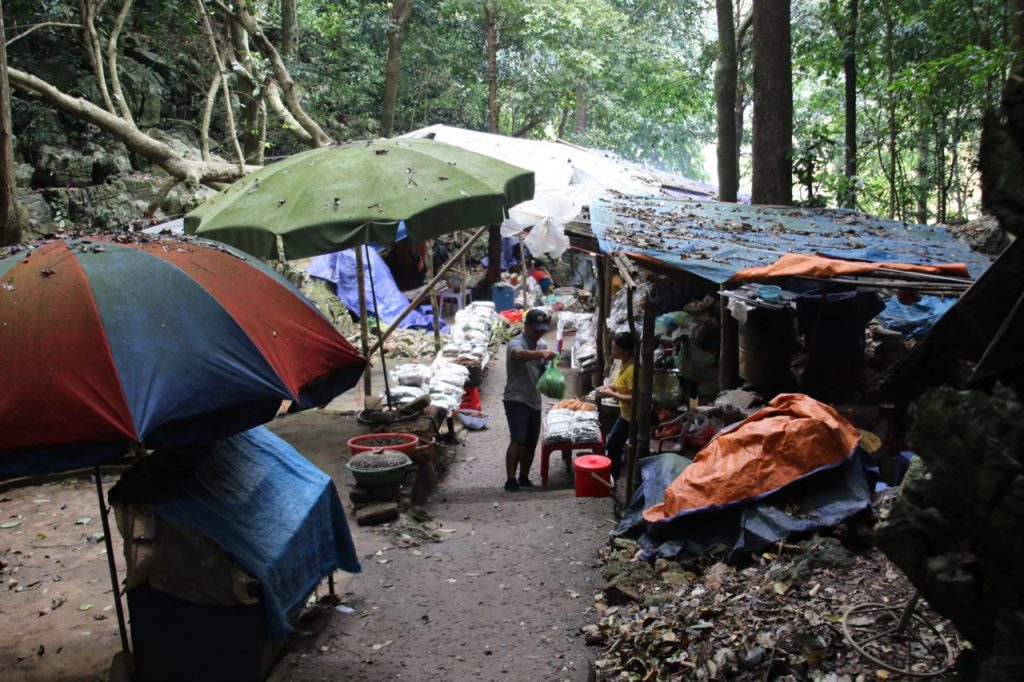
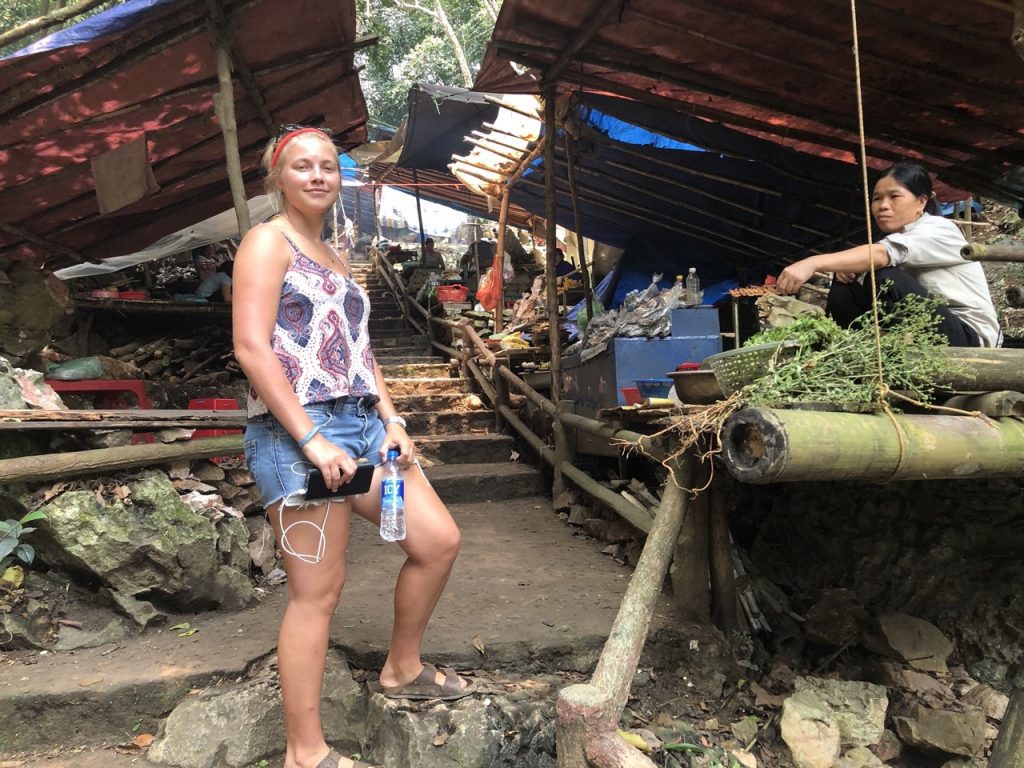
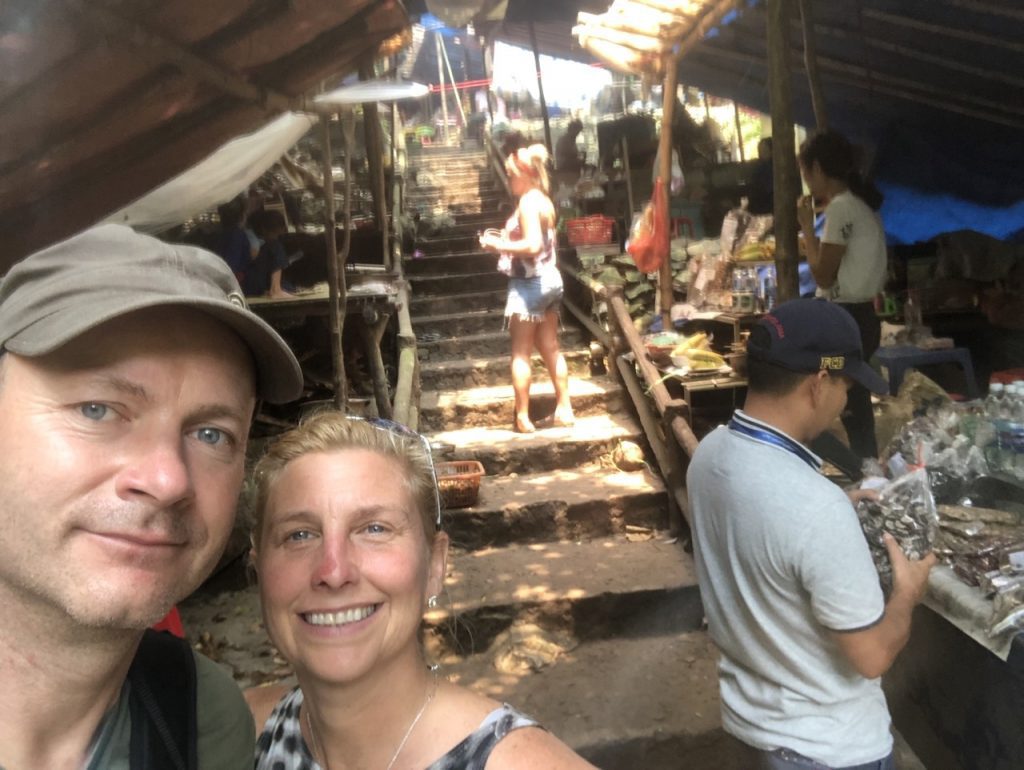
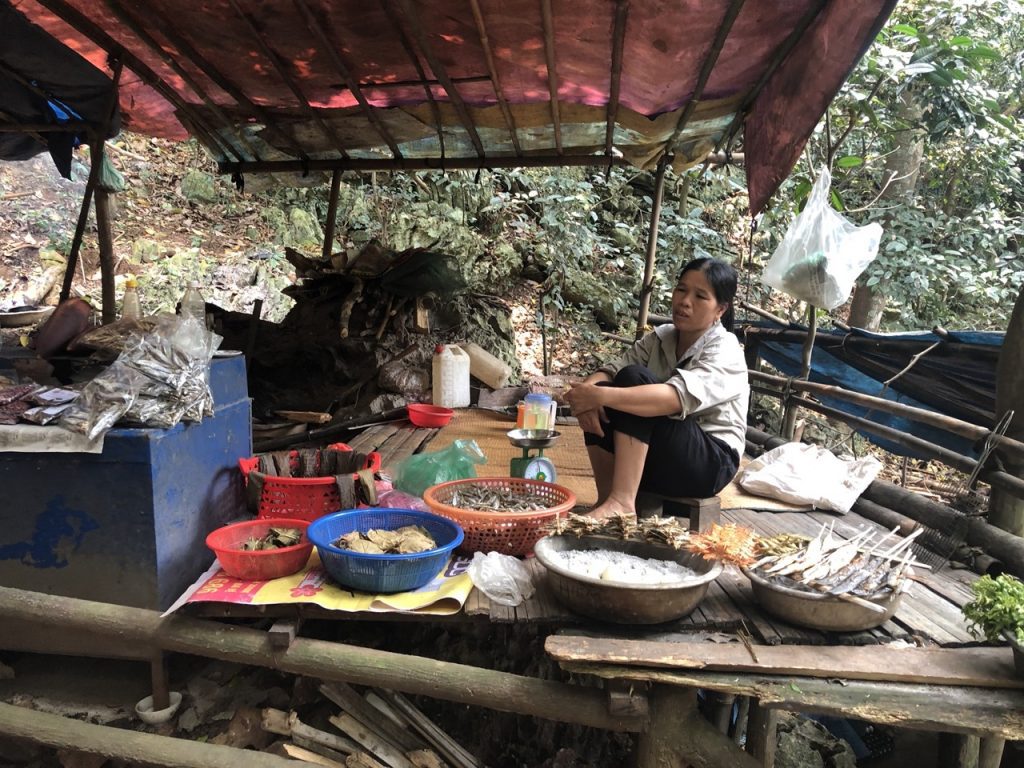
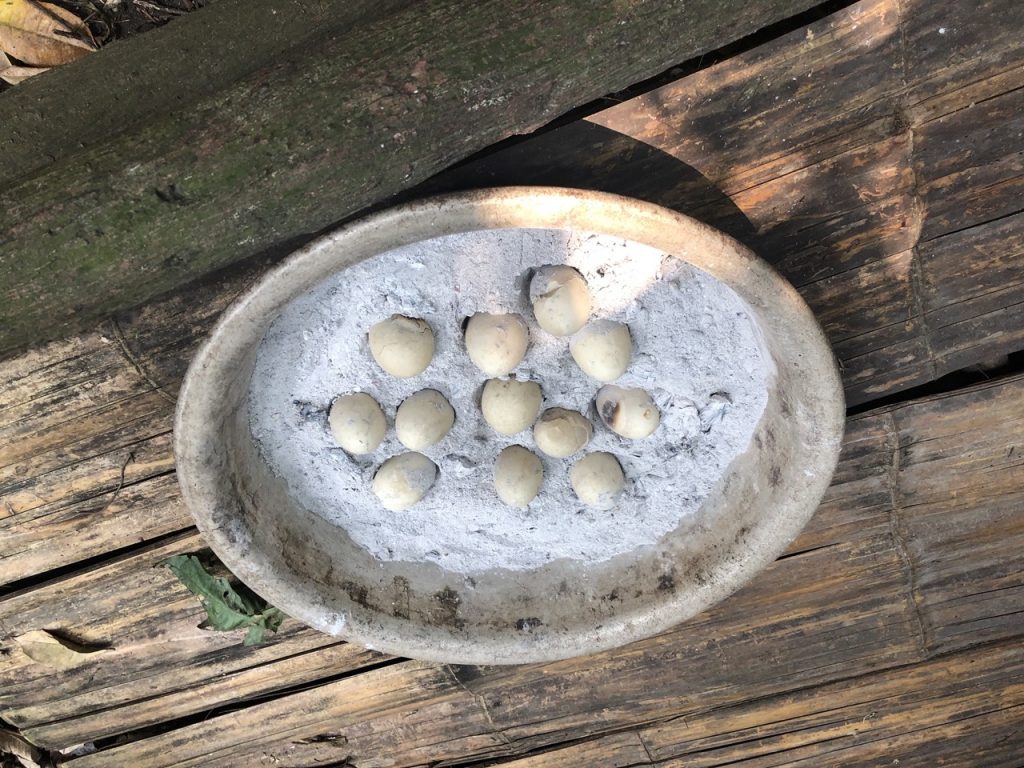
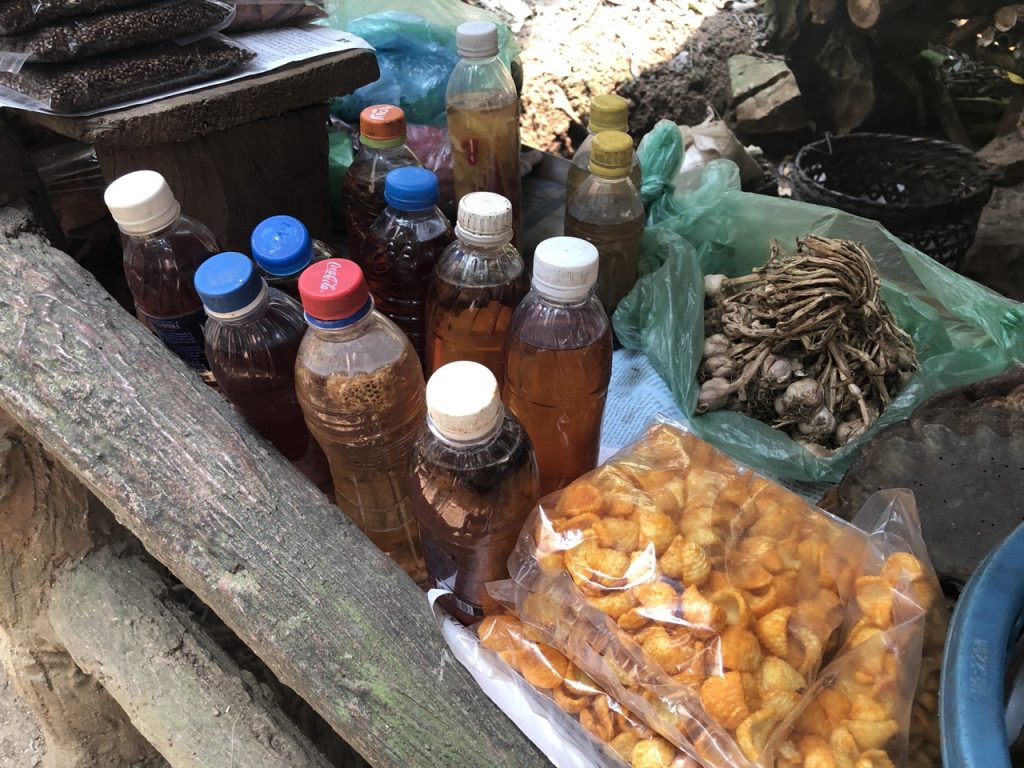
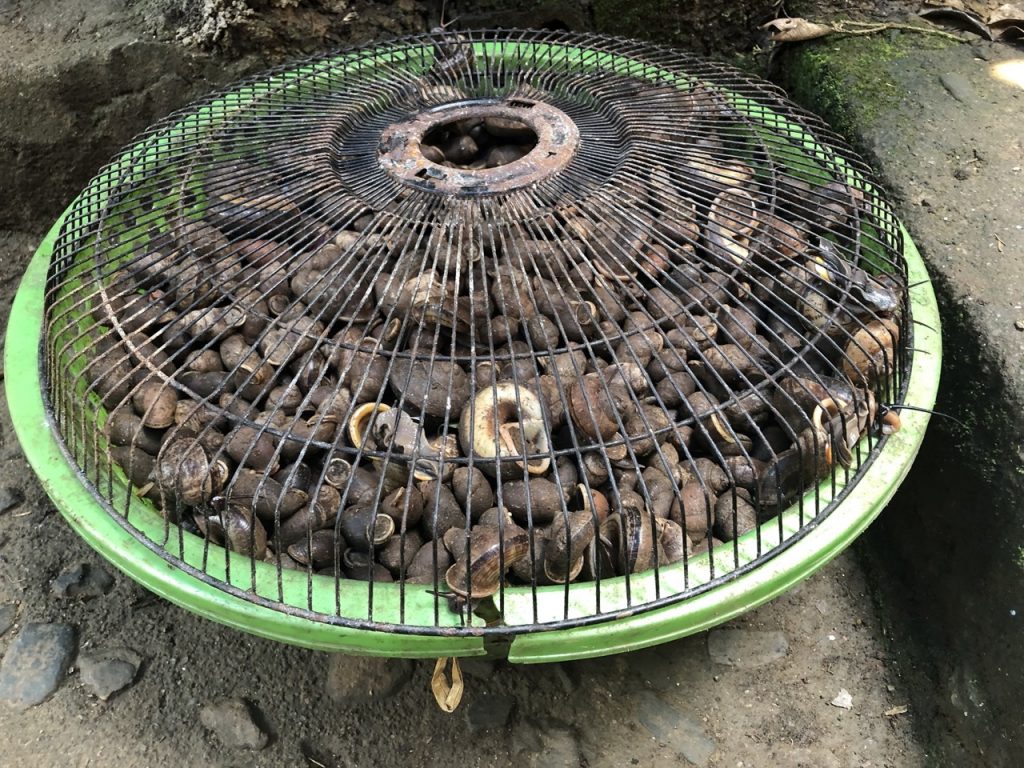
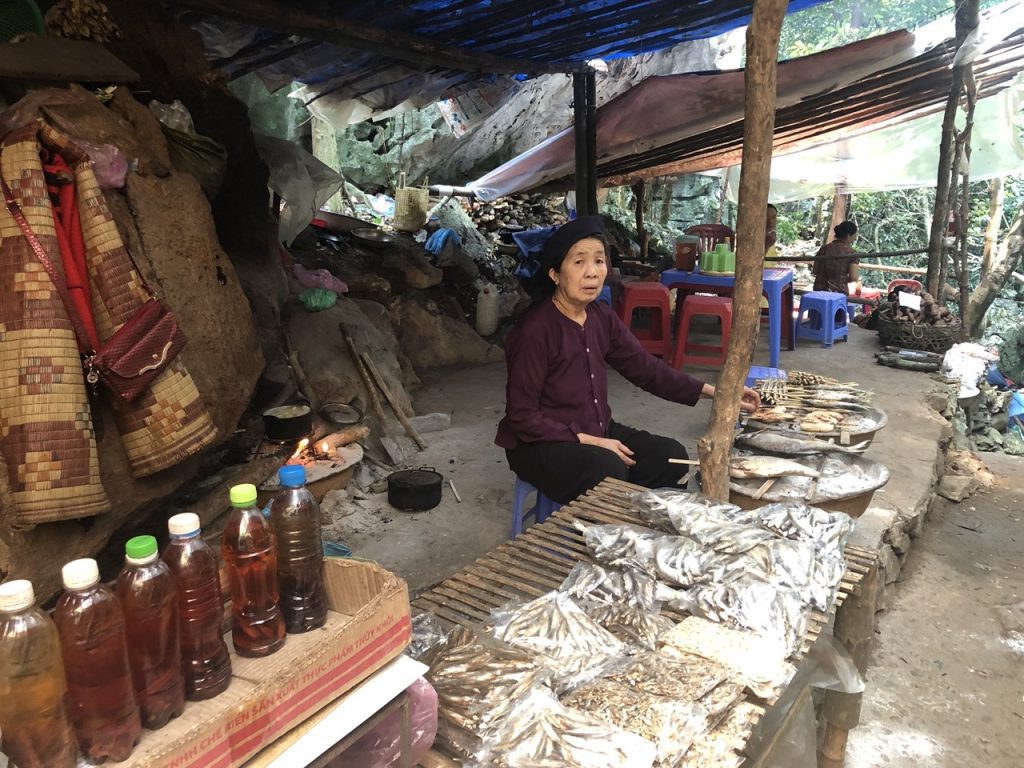
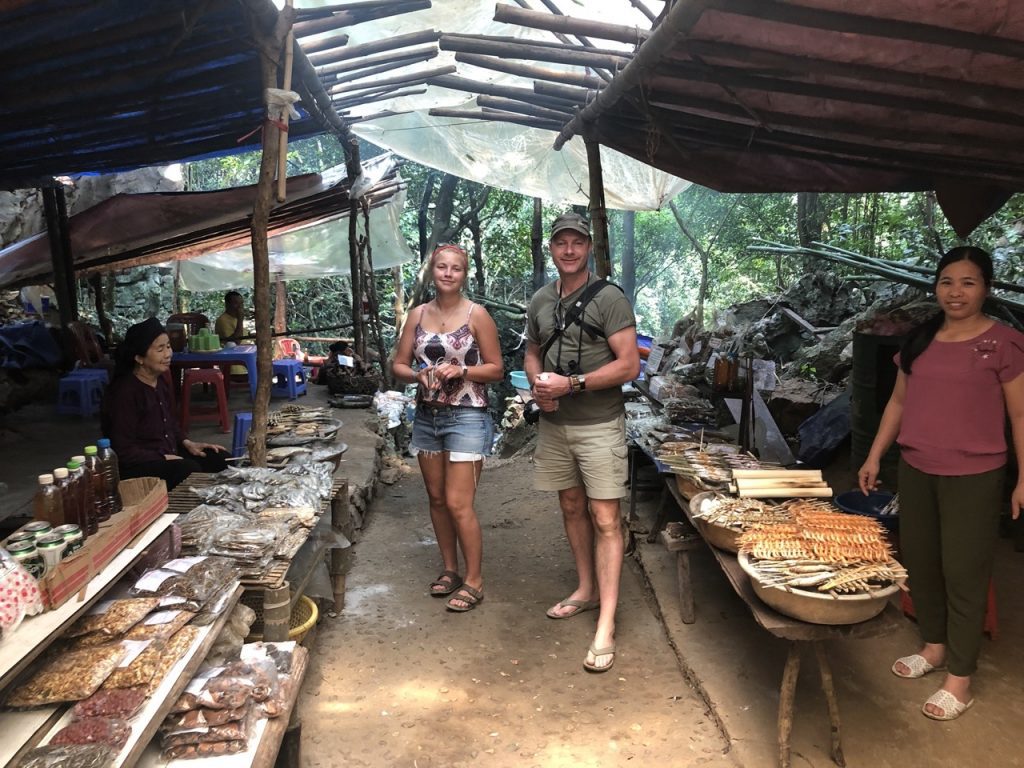
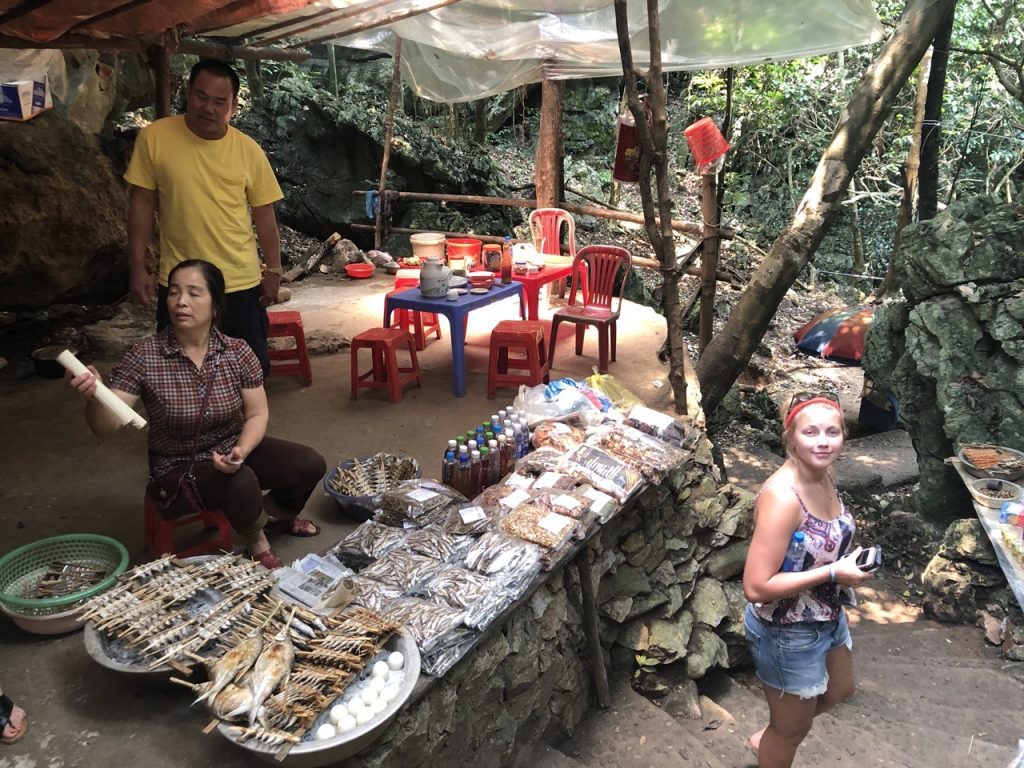
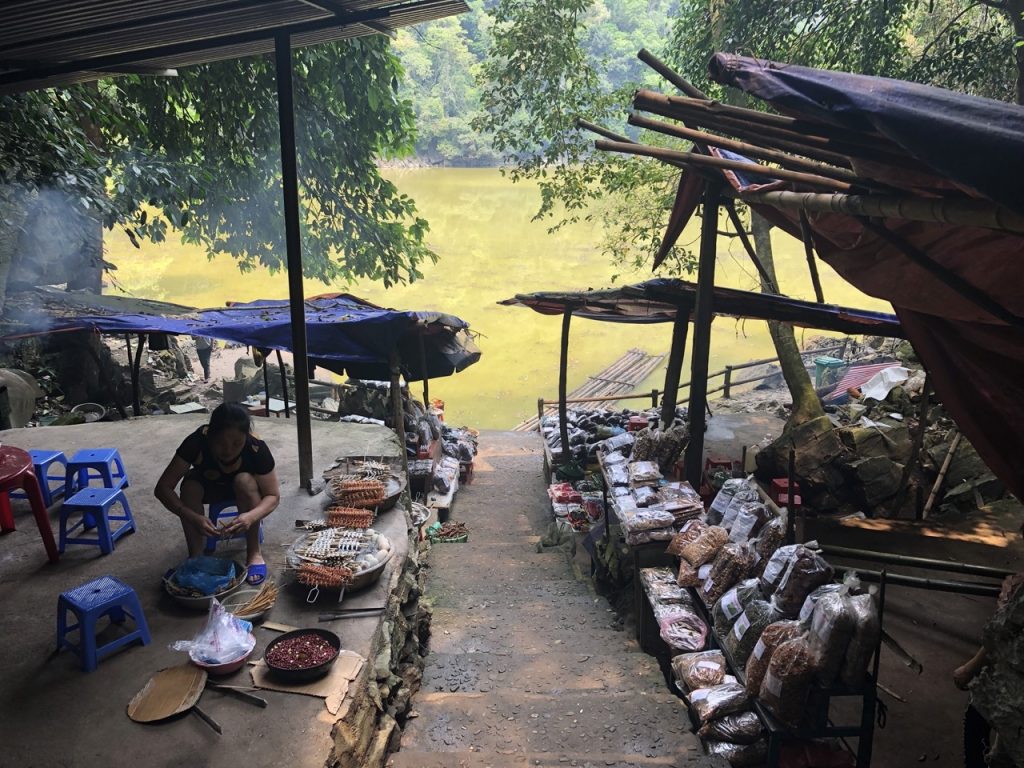
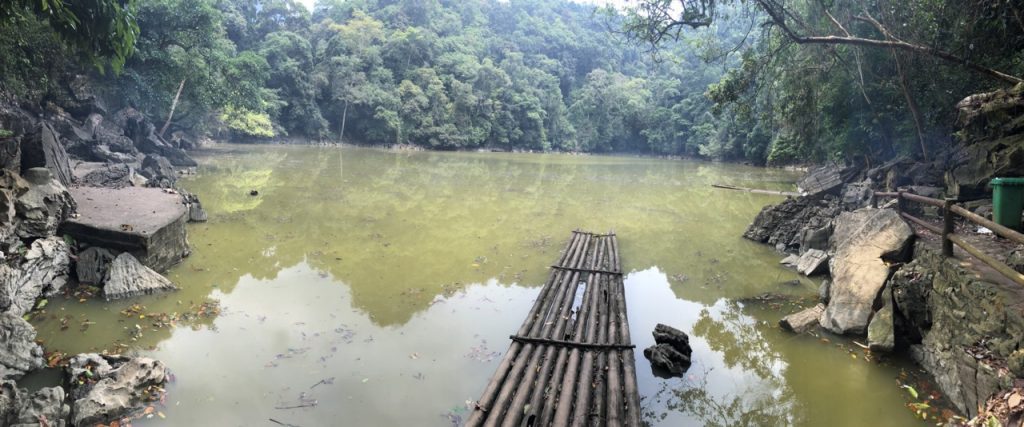
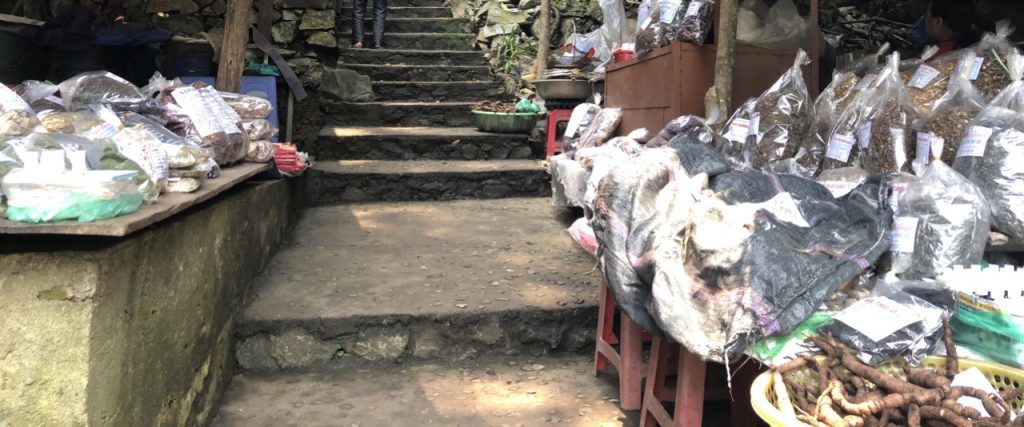
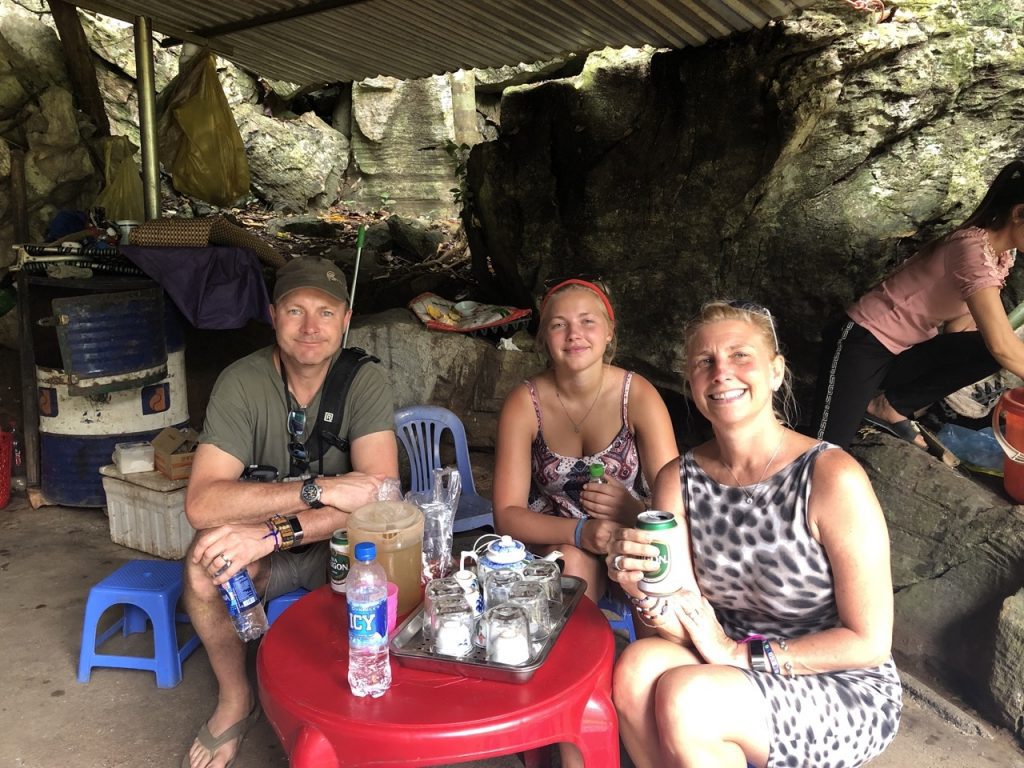
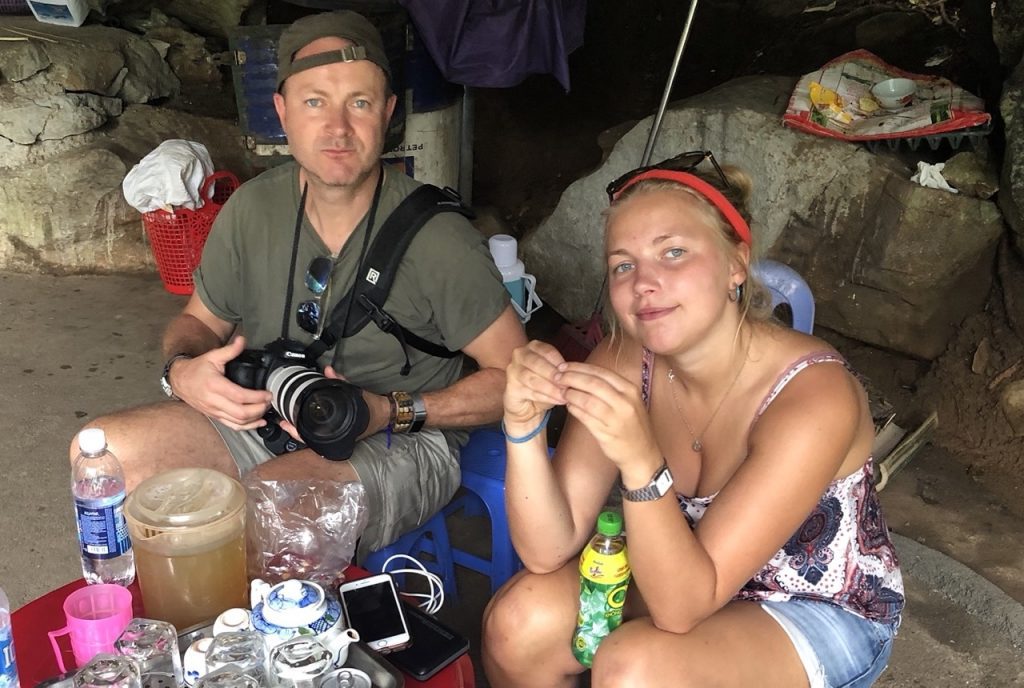
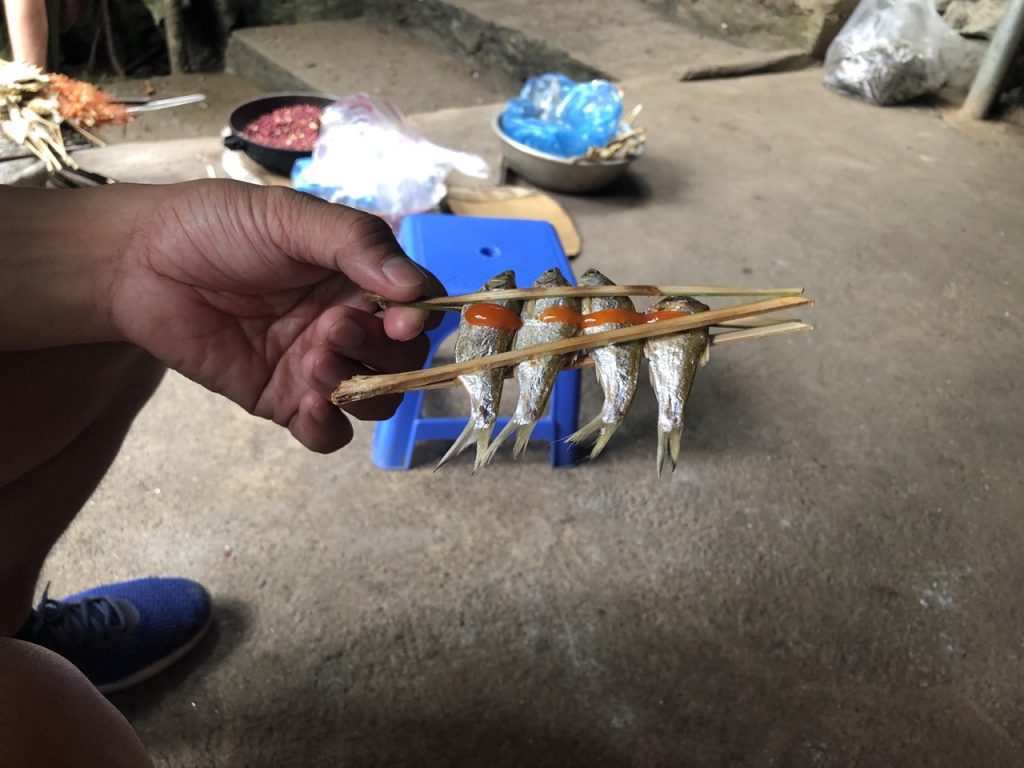
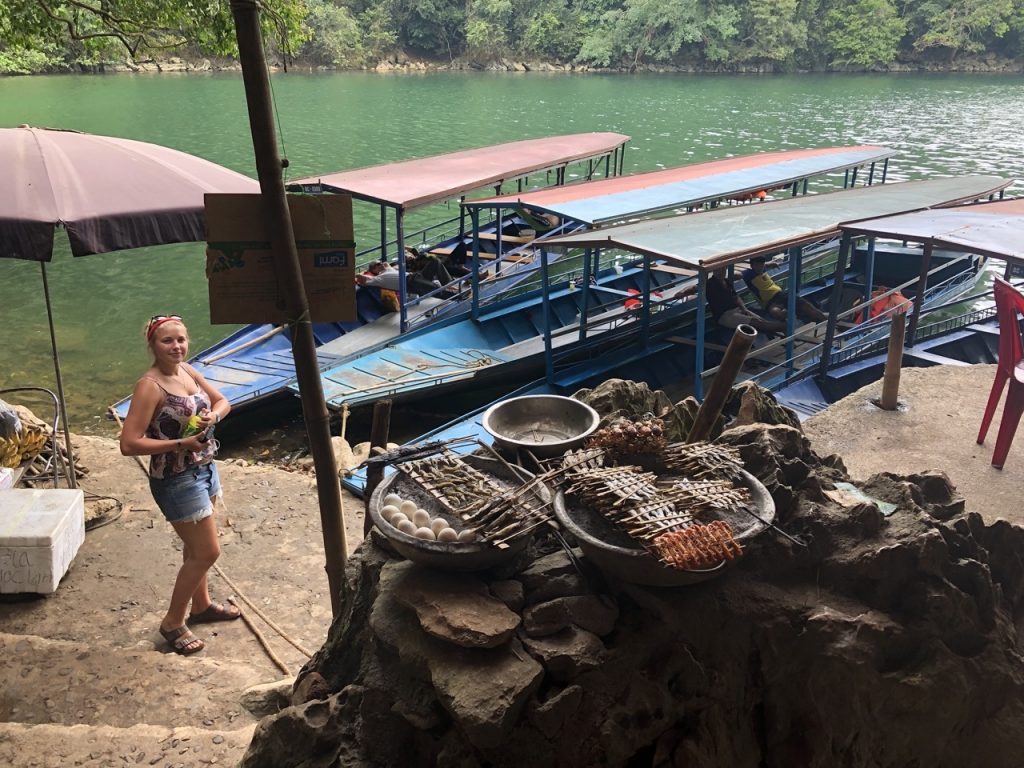
Some interesting bottled items!
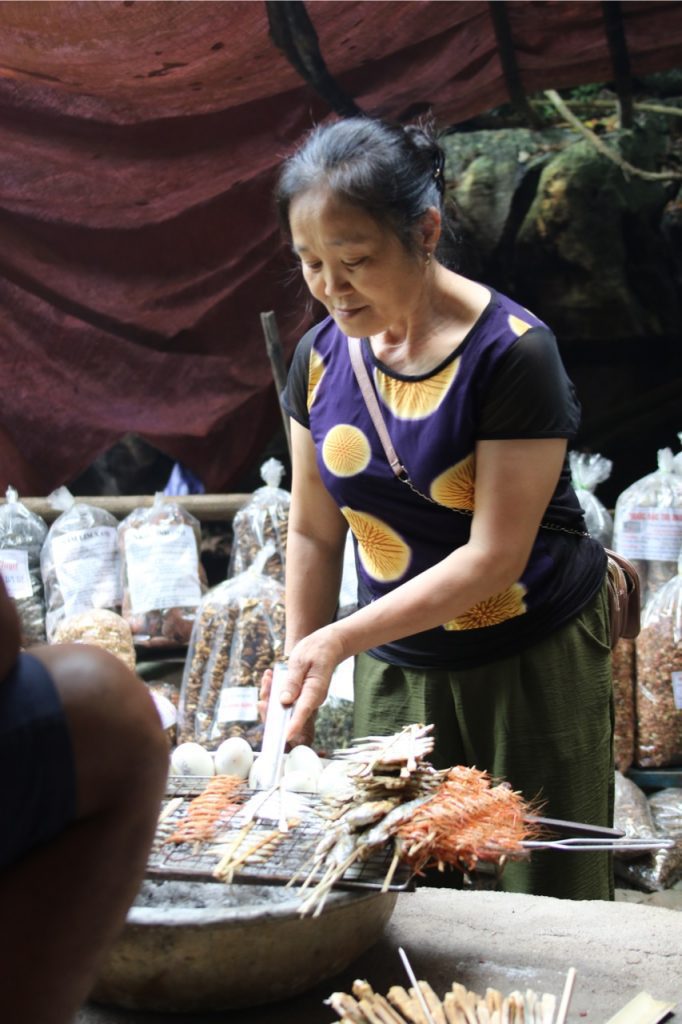
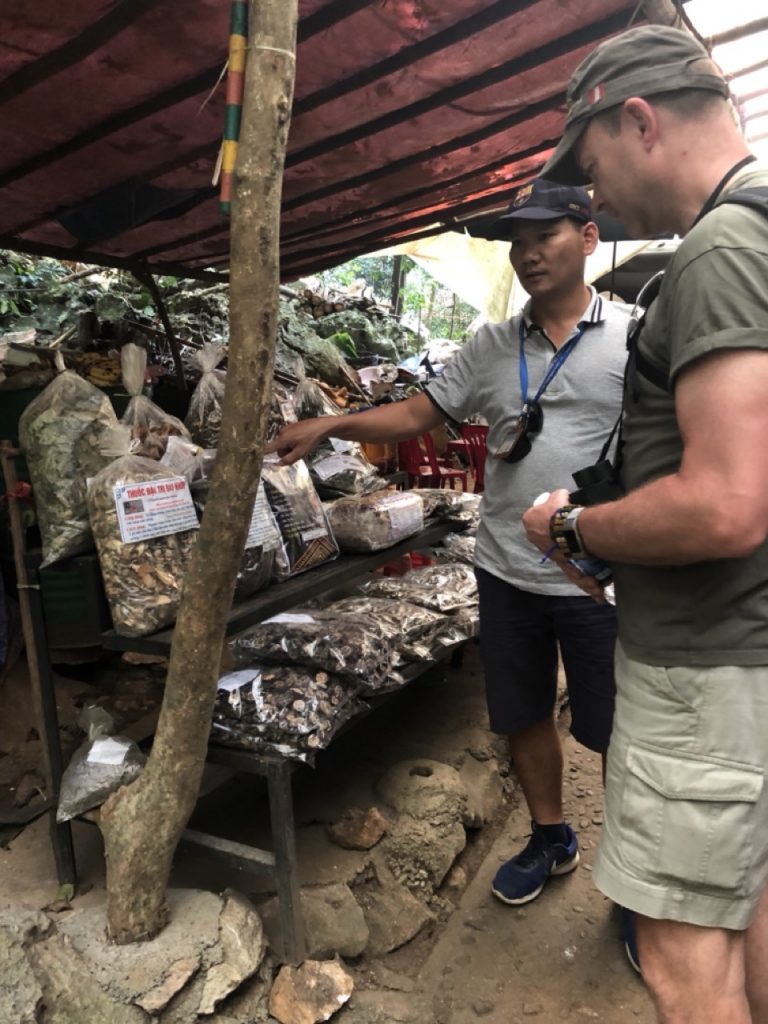
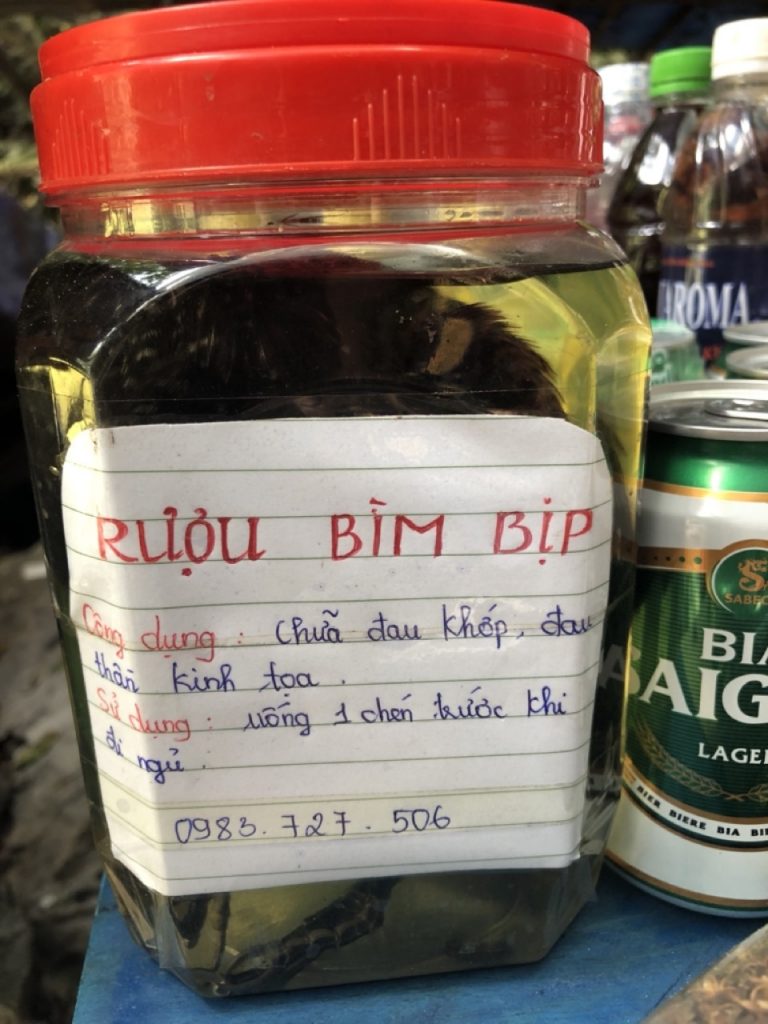
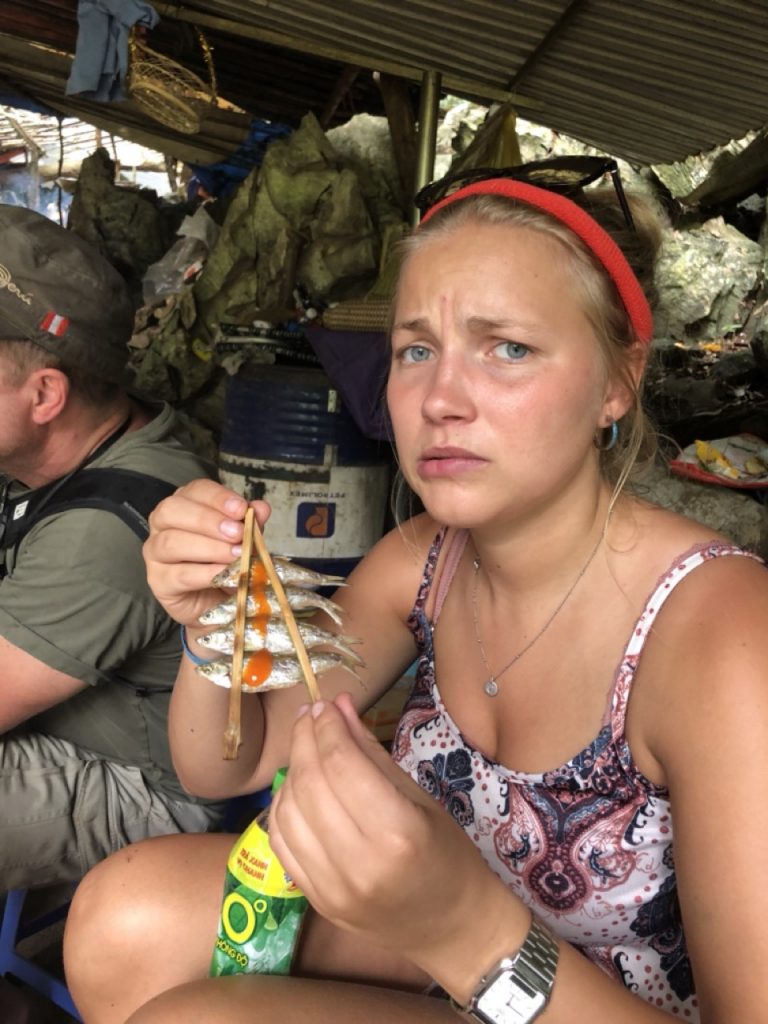
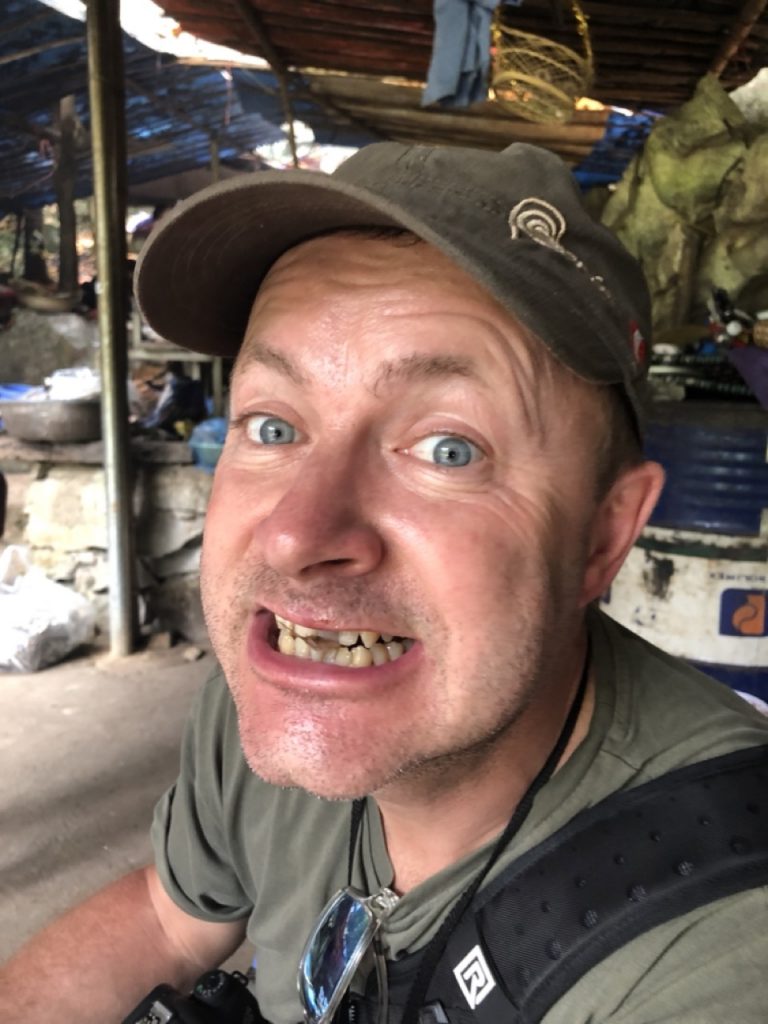
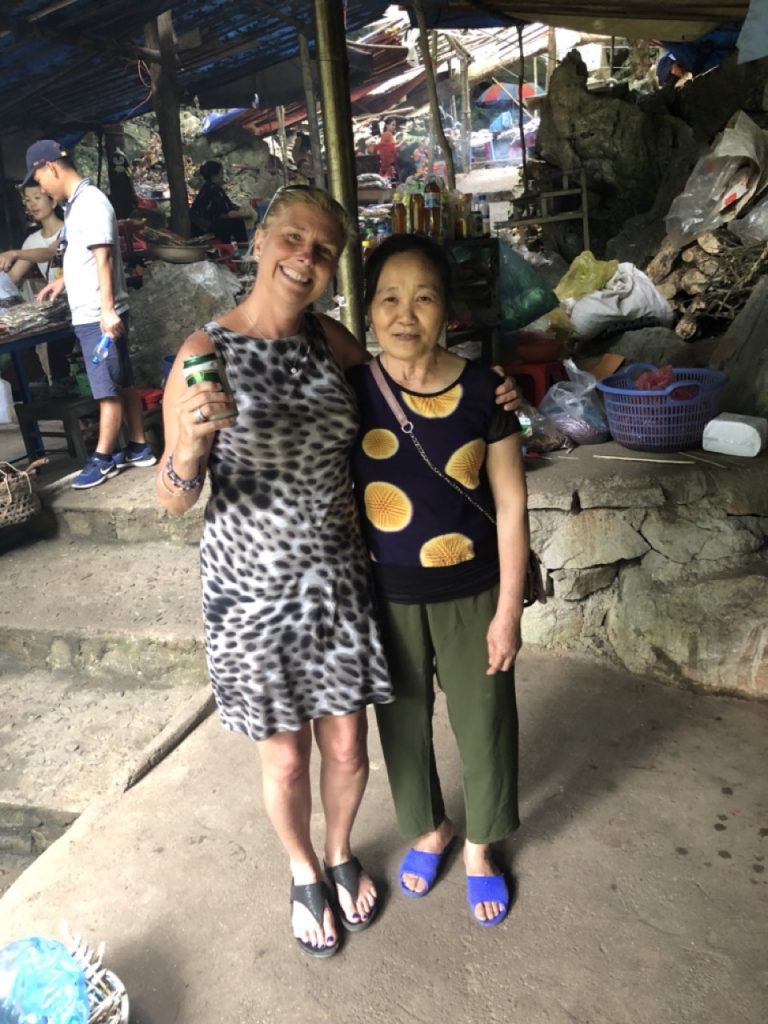
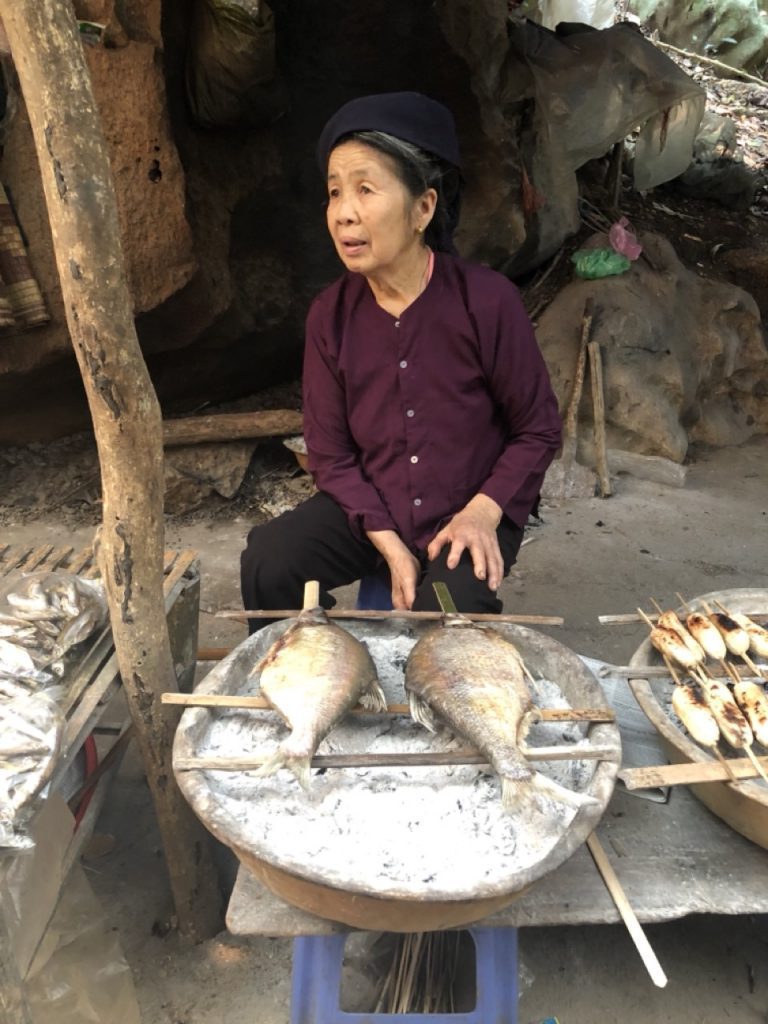
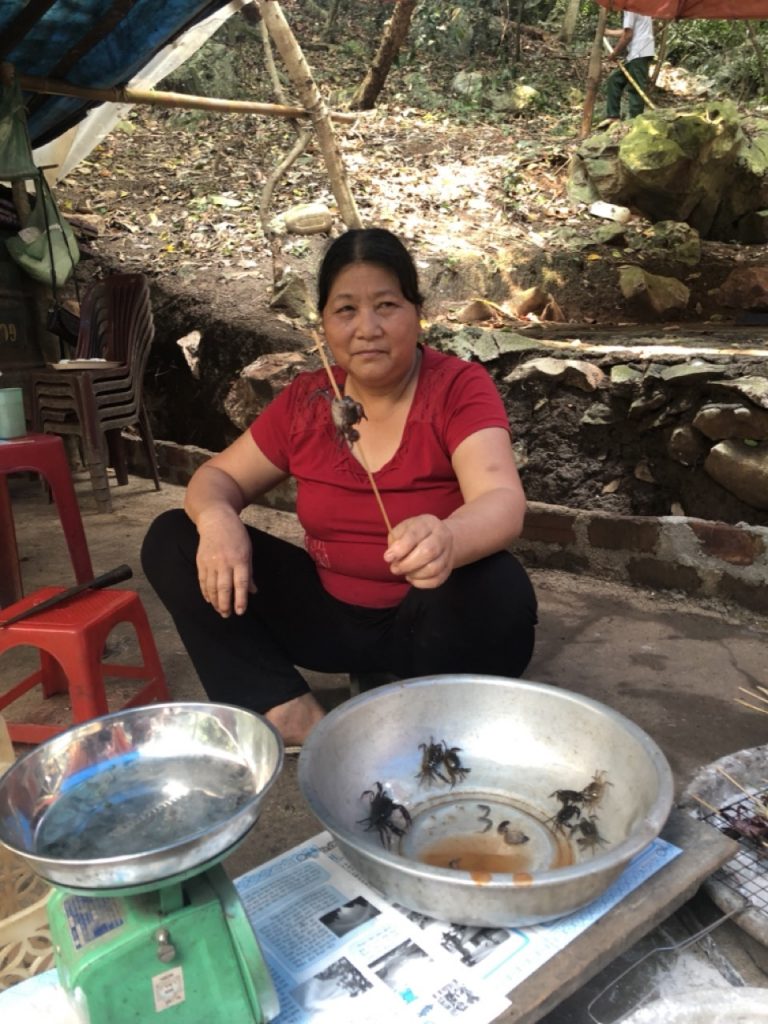
Back on board Phong shared a local delicacy with us – ant eggs and larvae in sticky rice – Paul tasted it and said it was actually delicious and sweet! Phong also shared the aphrodisiac with us – tablets made from a plant which he put in his rice wine to assist with his libido. He had bought a big bag as his Father-in-Law always appreciated some of these when he had bought some when at the lake! LOL.
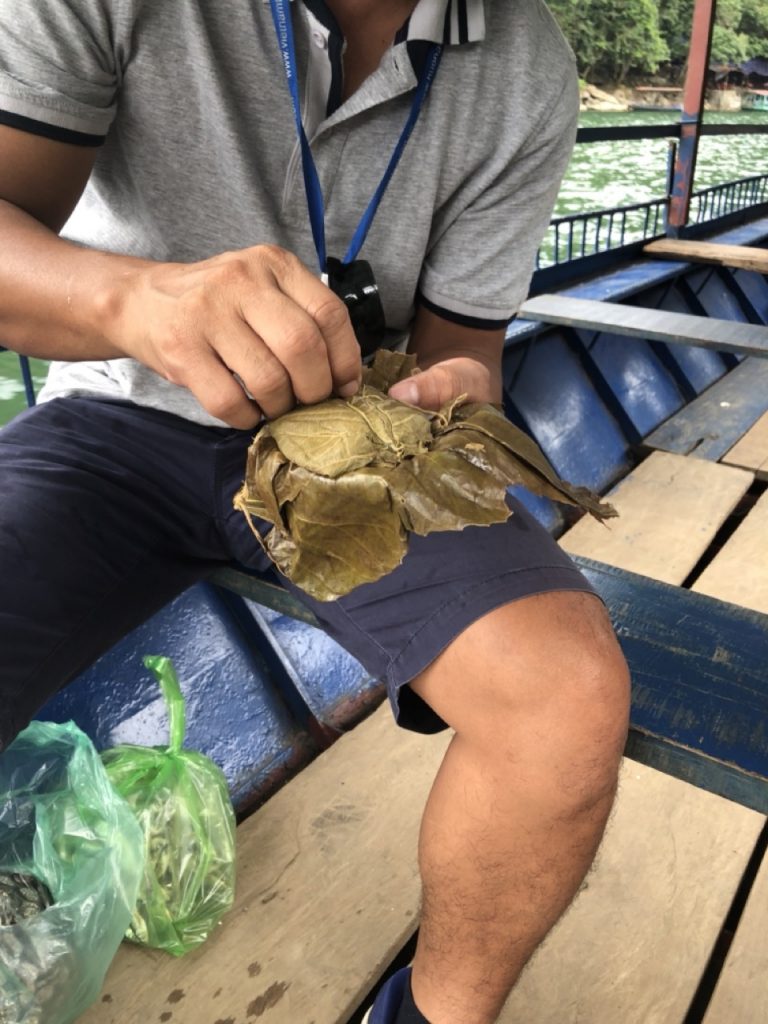
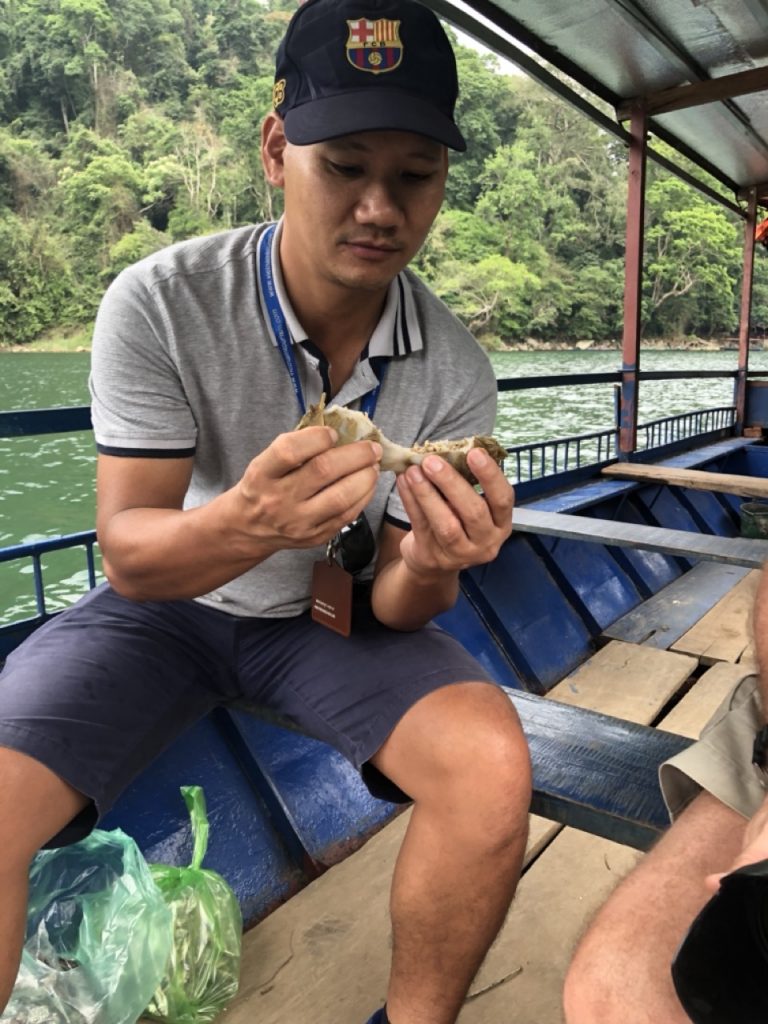
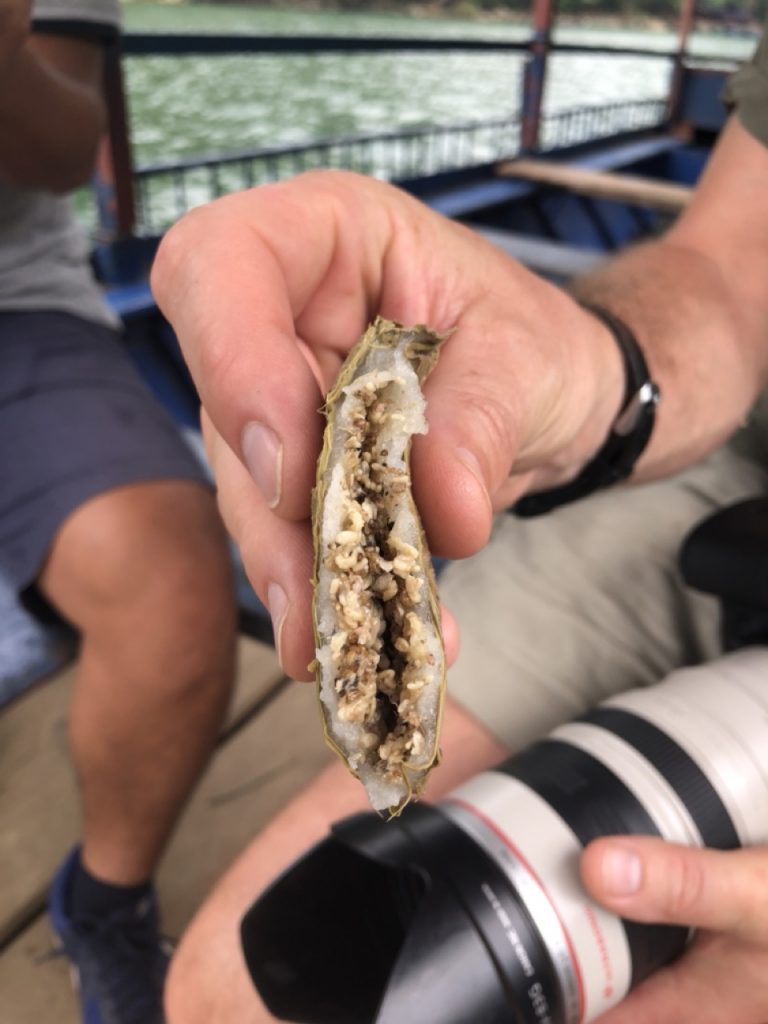
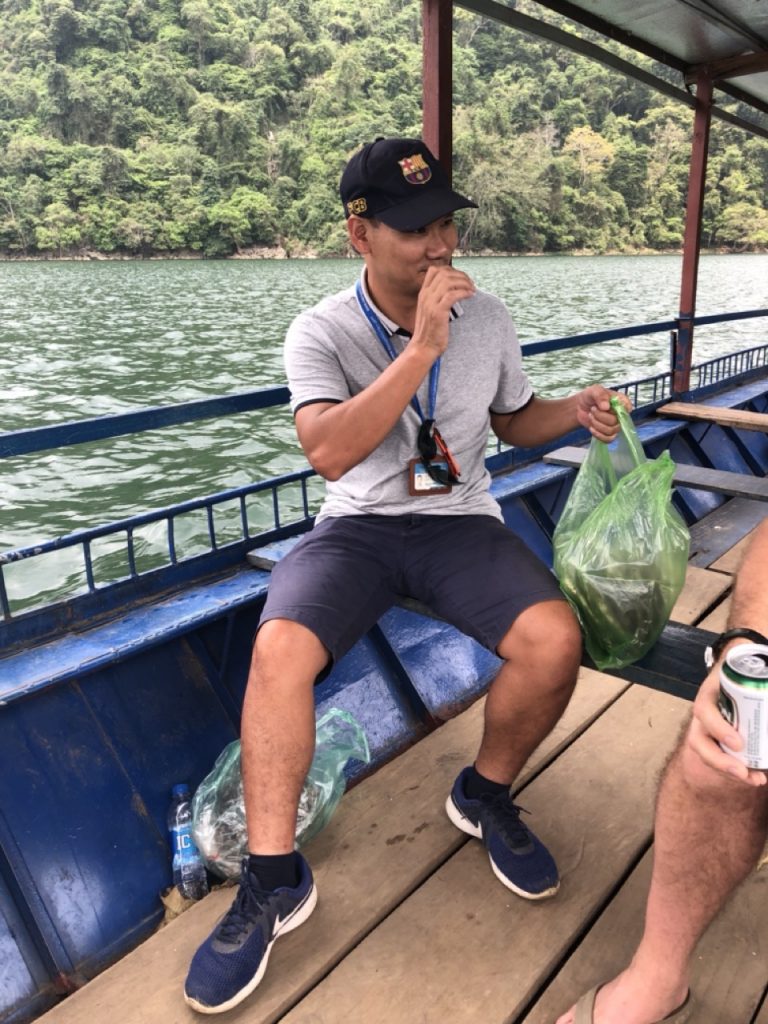
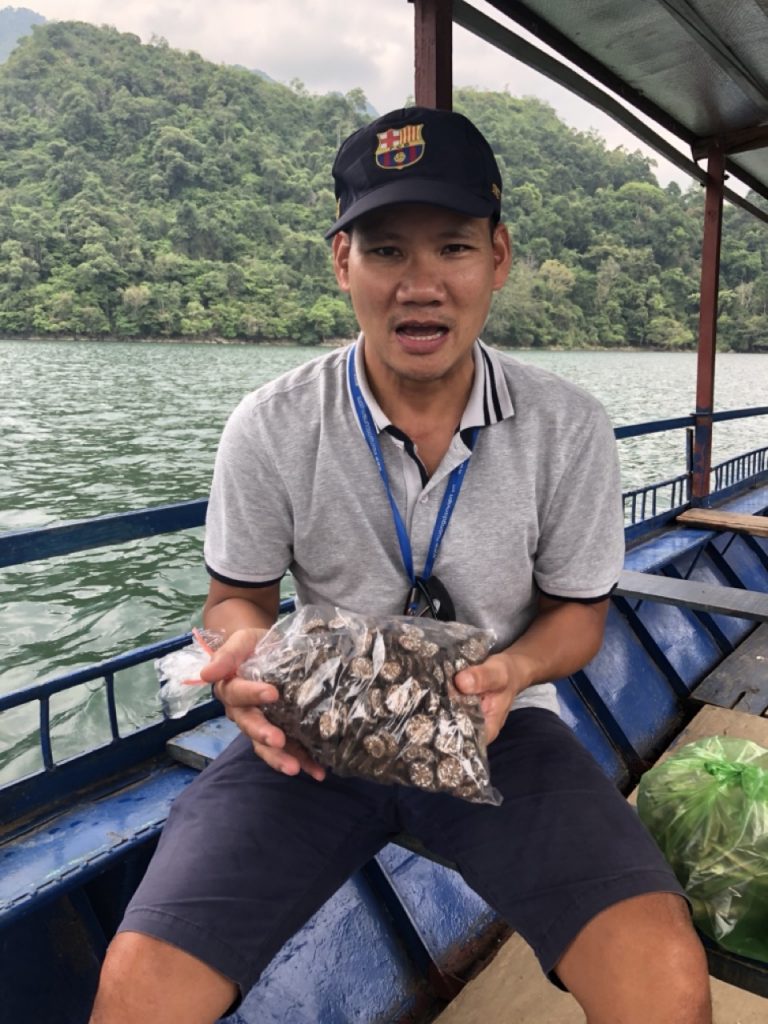
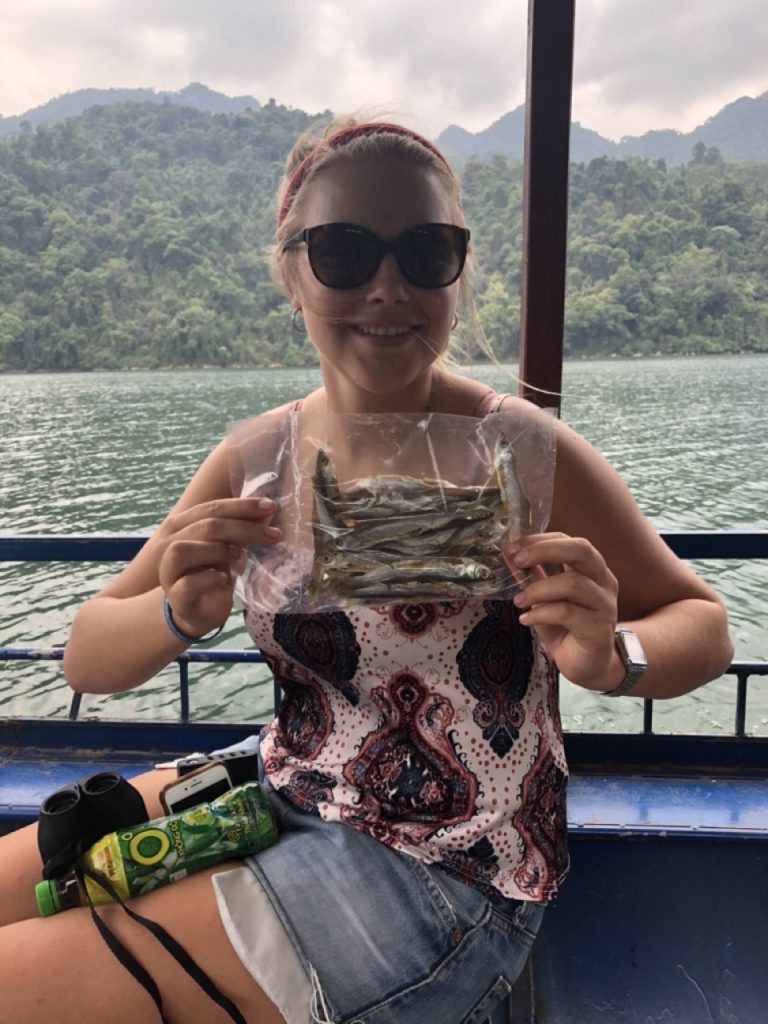
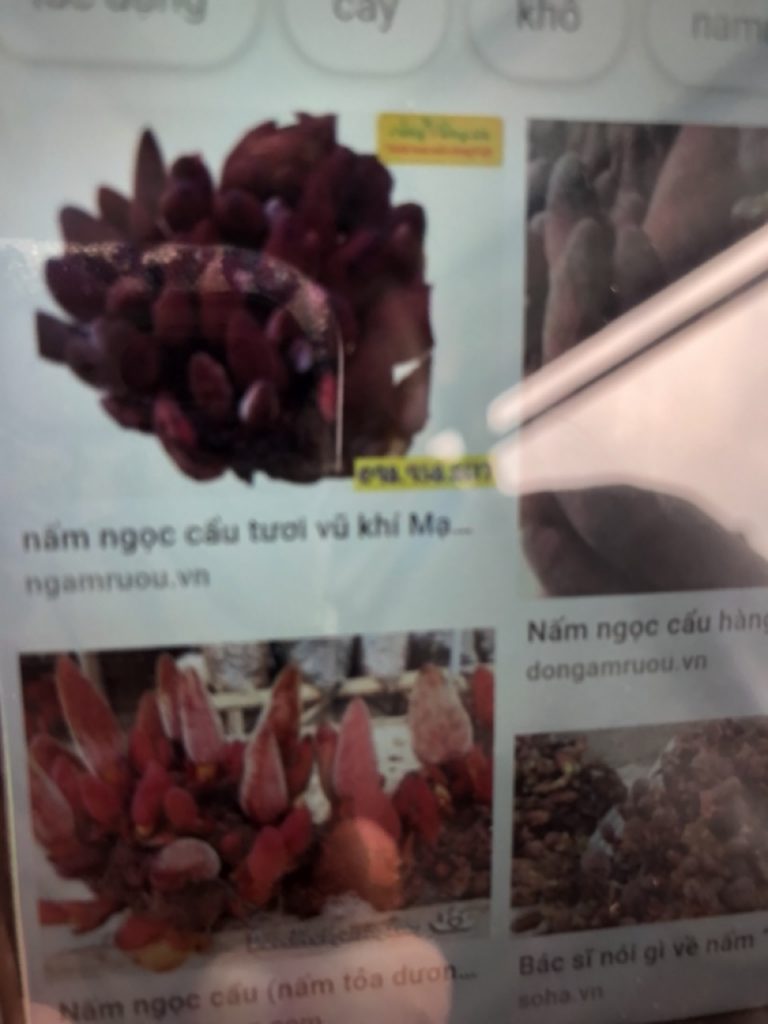
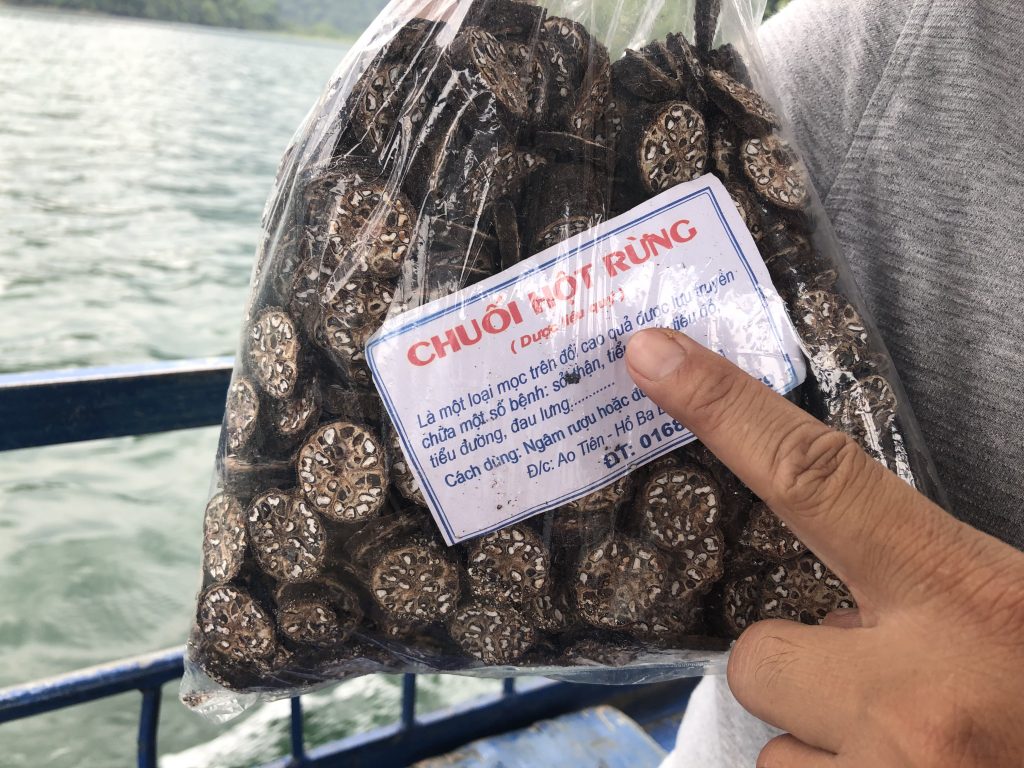
The Lake is so peaceful and serene – a perfect place for a temple so hopped off and paid a visit.
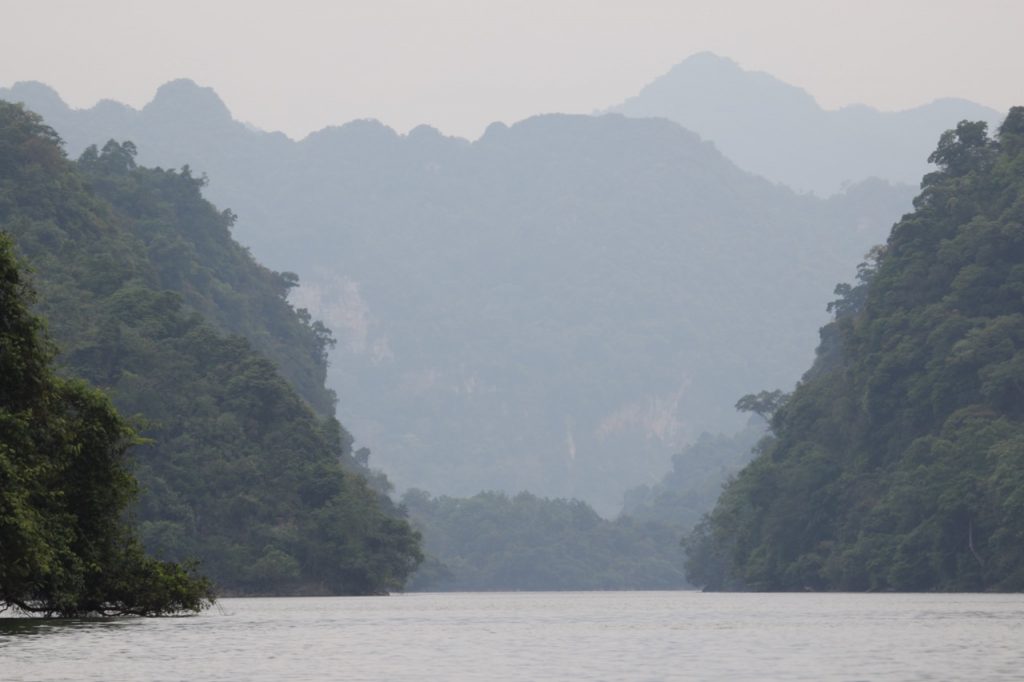
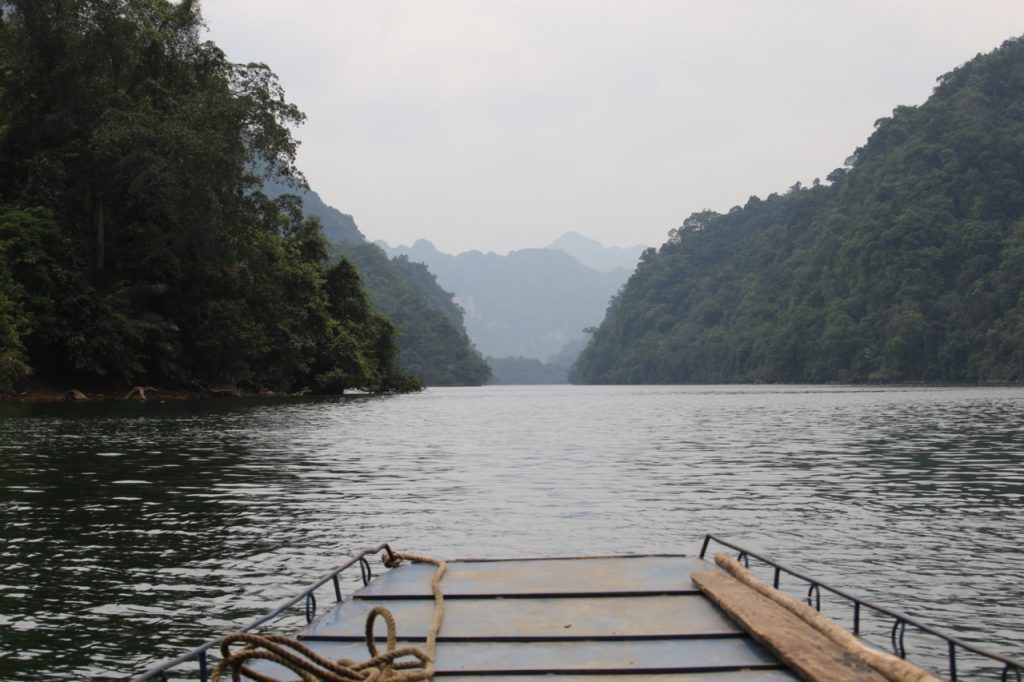
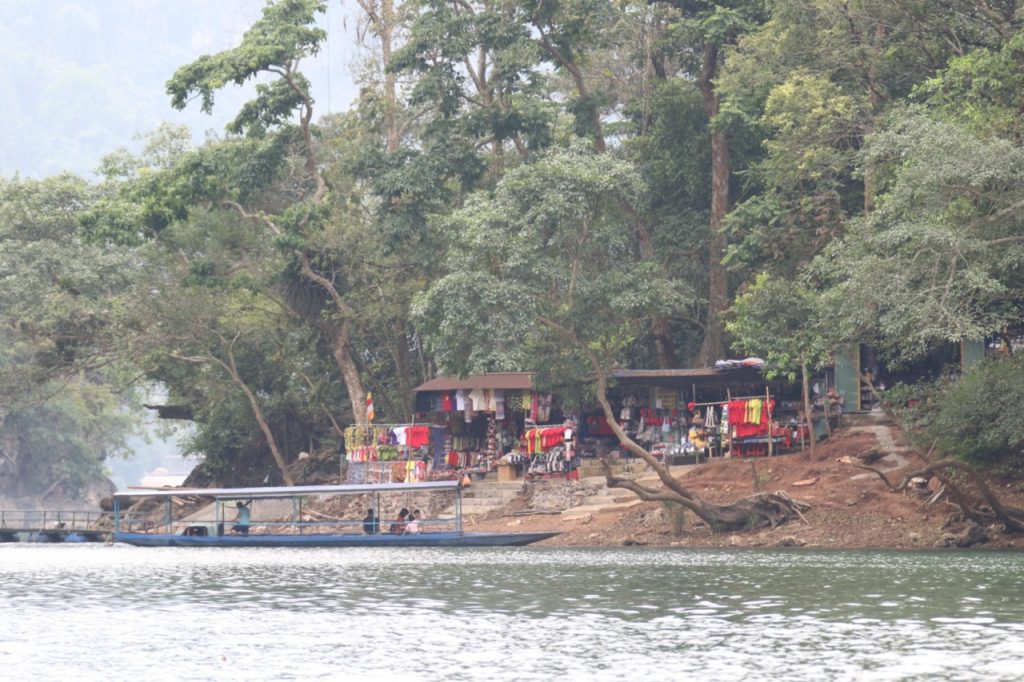
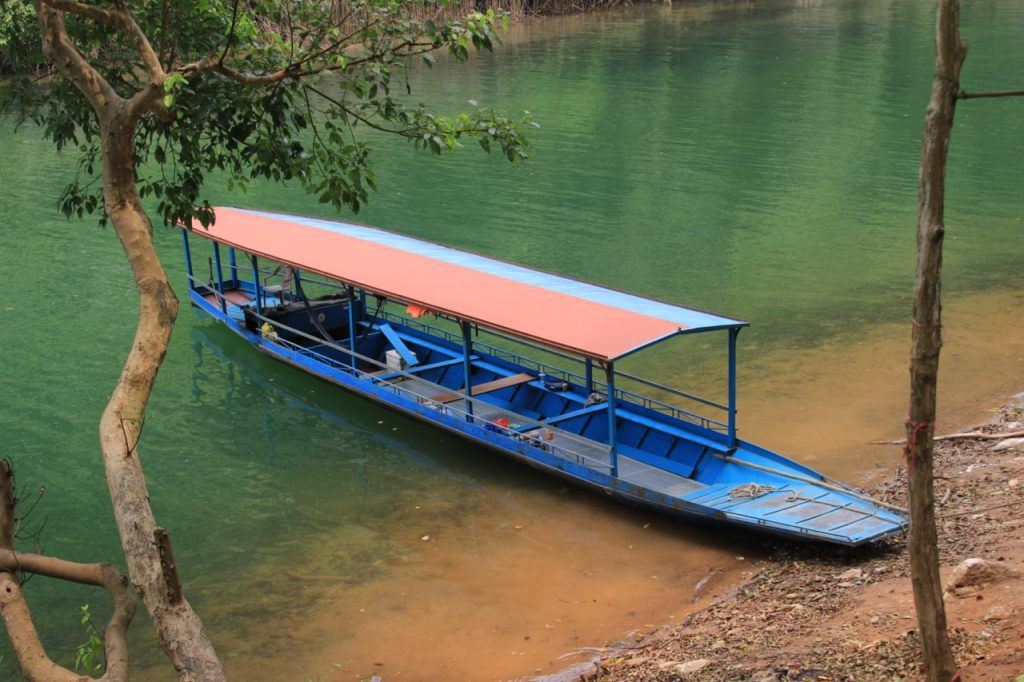
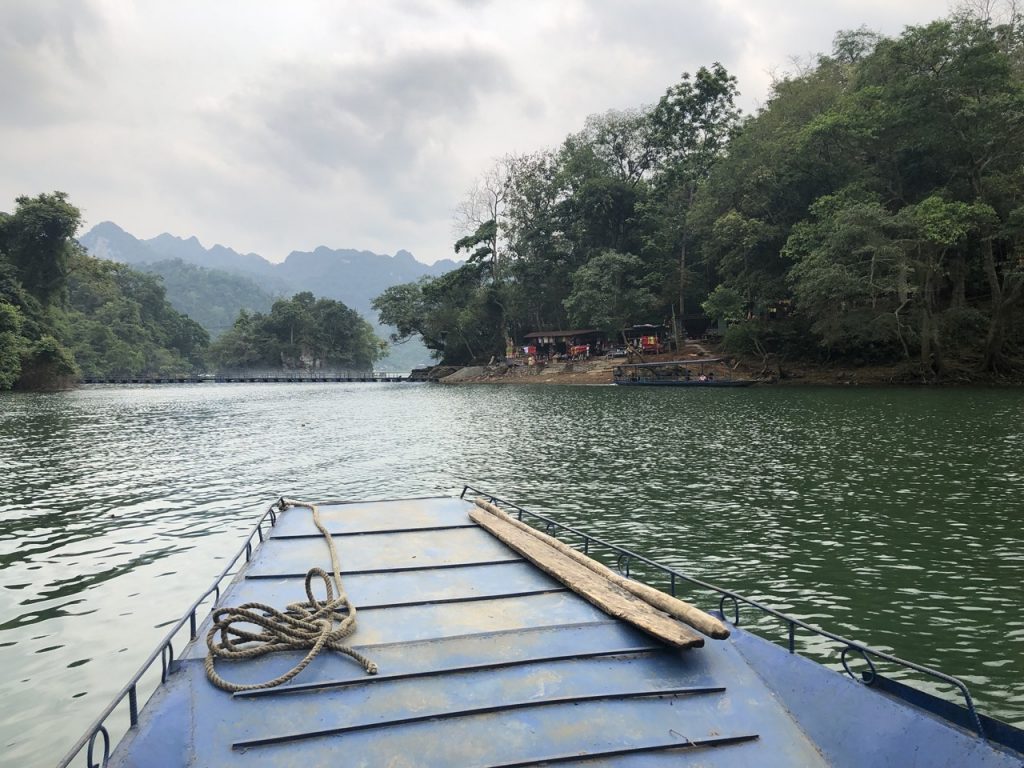
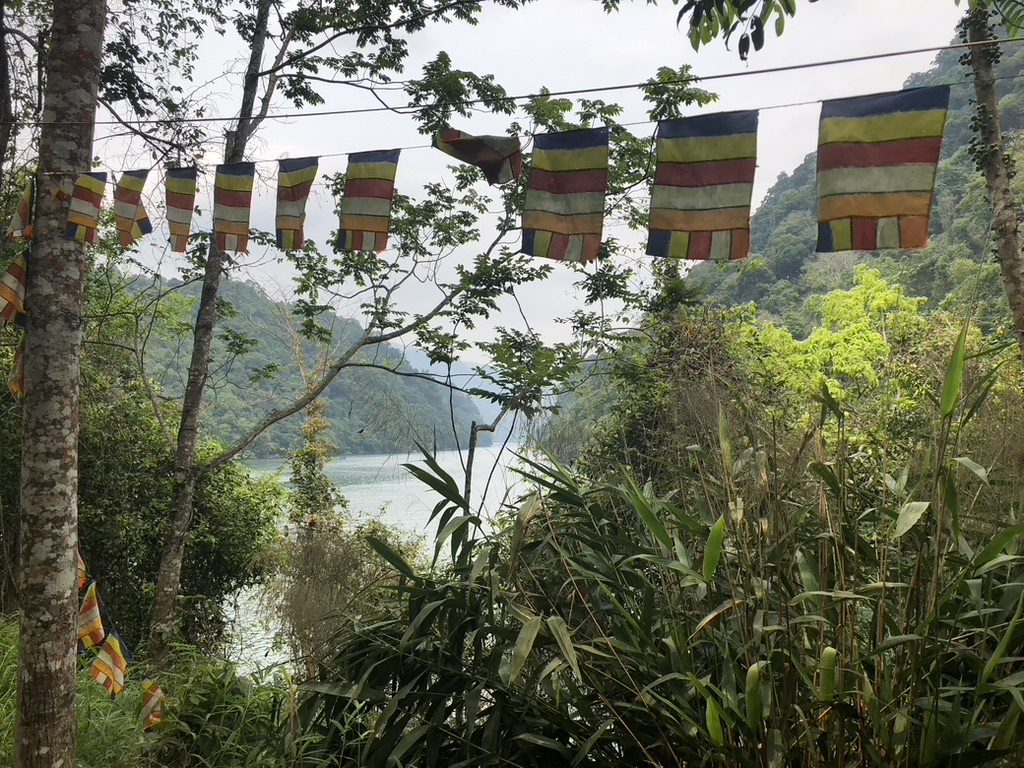
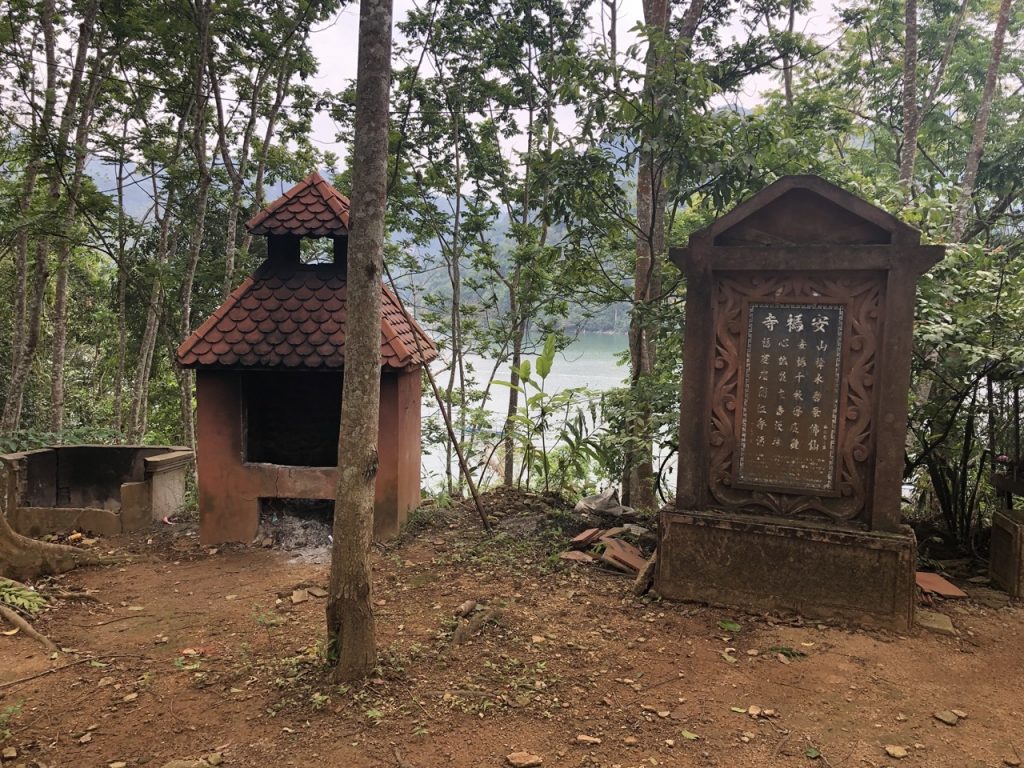
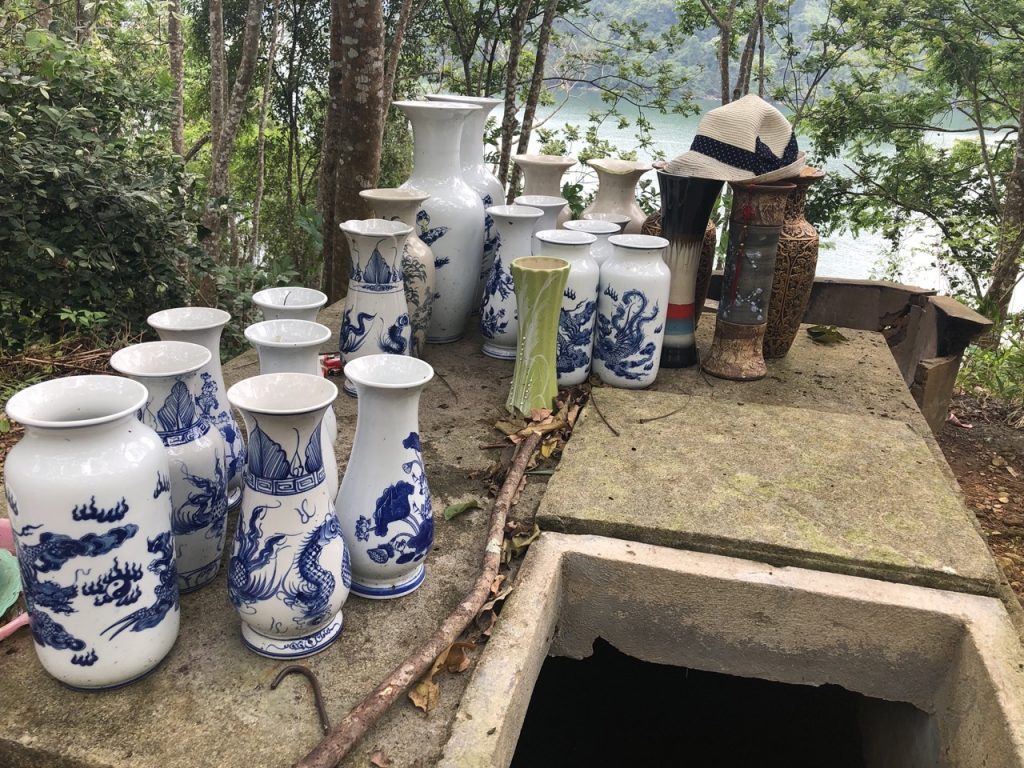
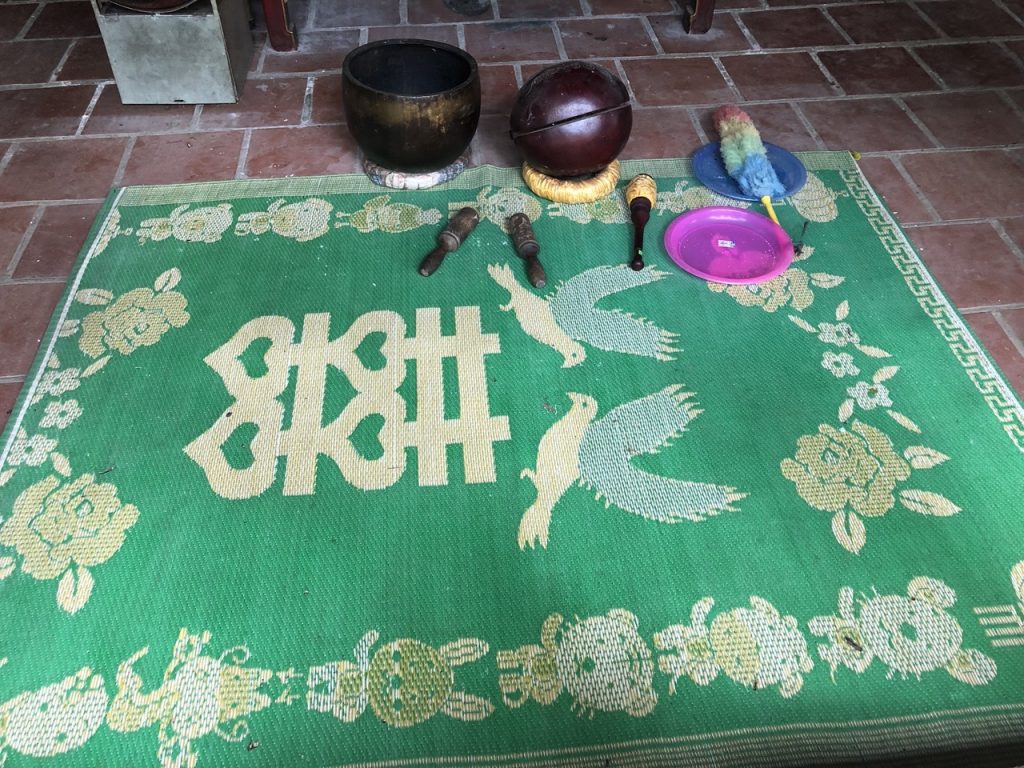
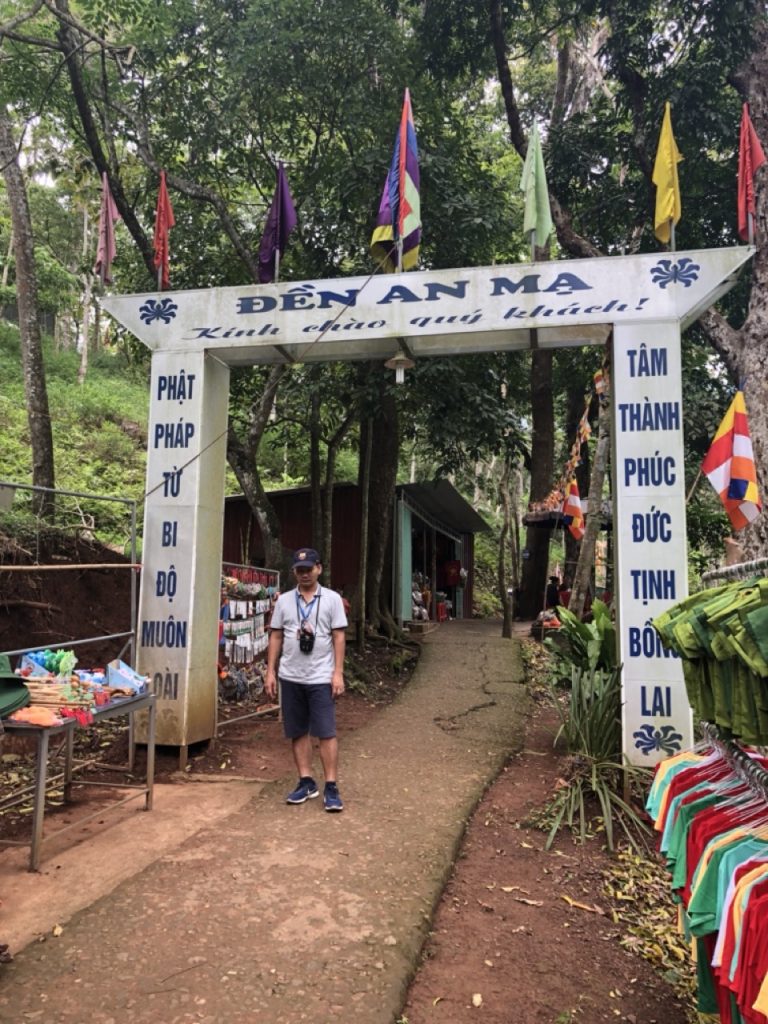
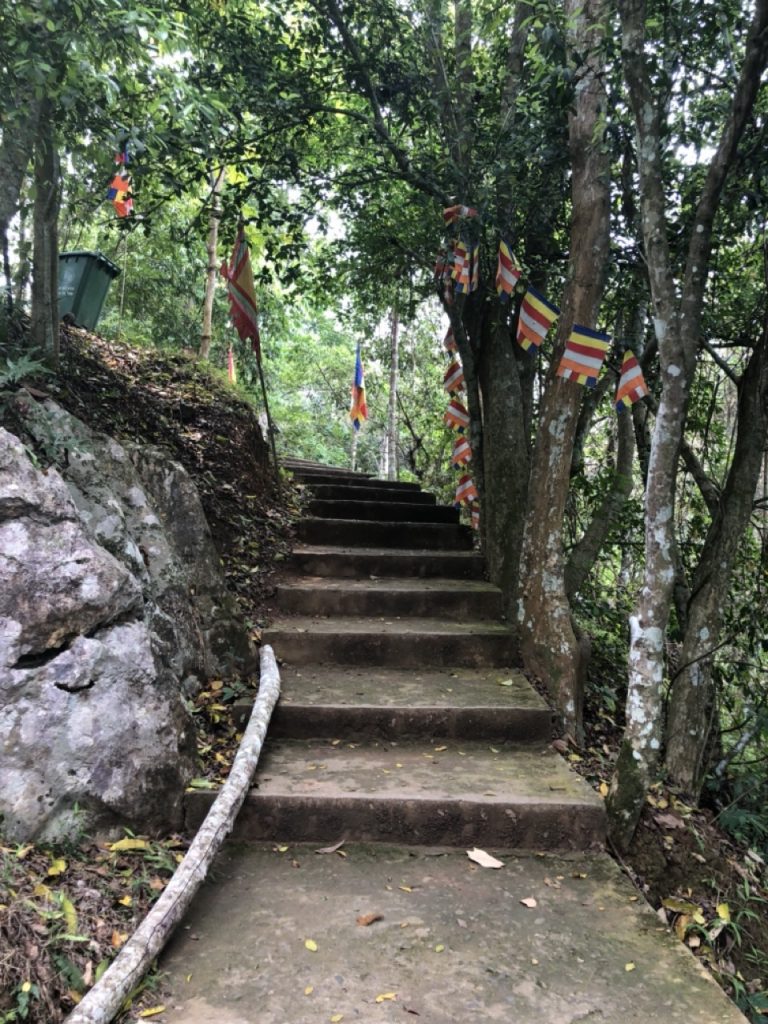
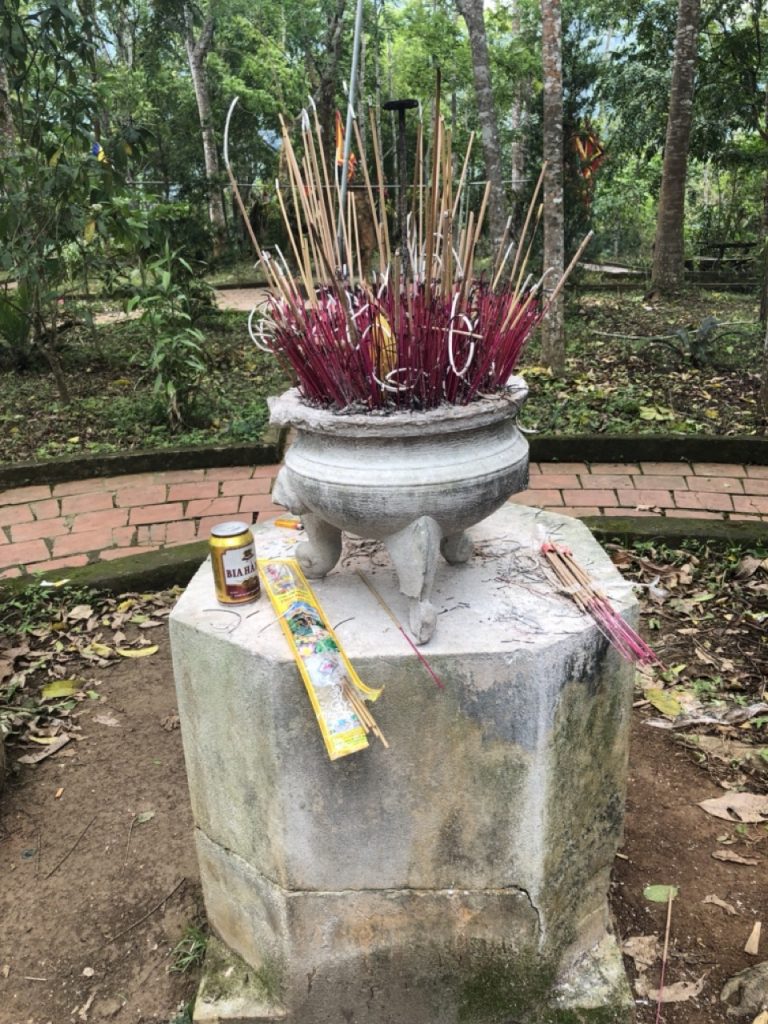
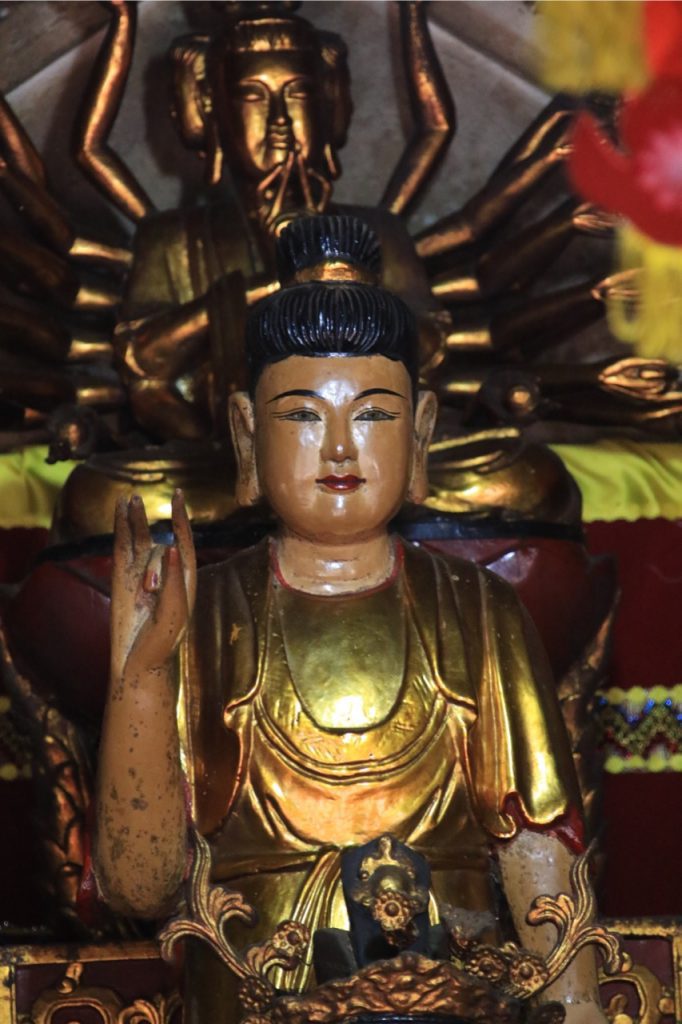
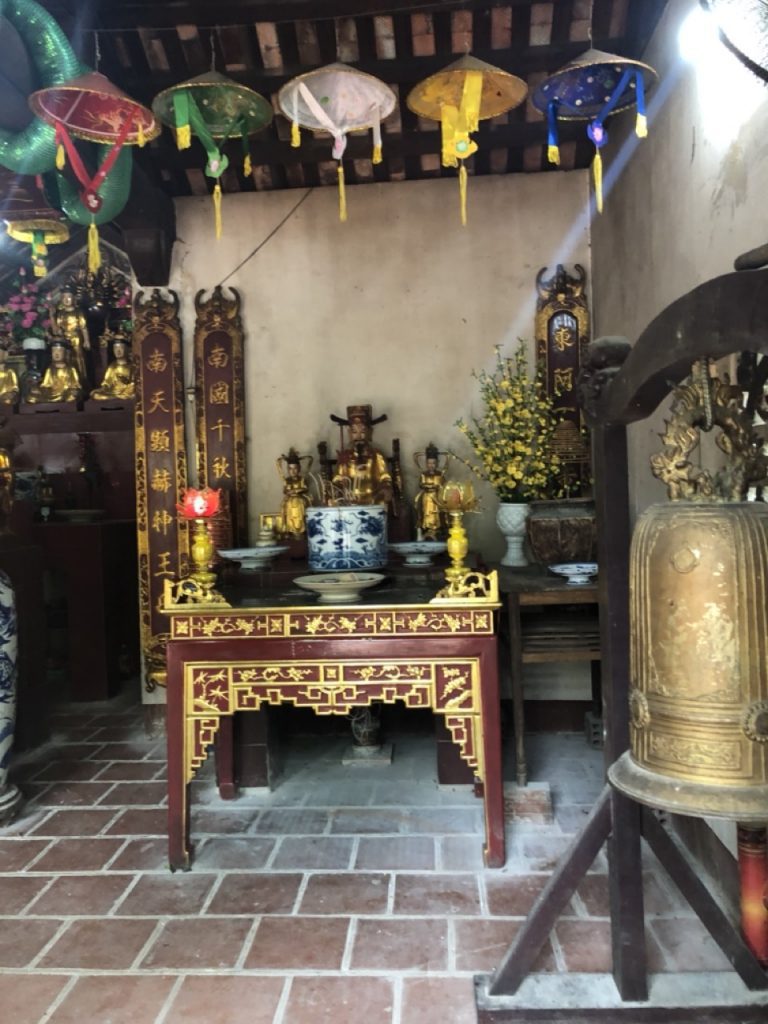
On our way back to Hanoi we stopped at a rice wine place which used various strange potions to distill with – yikes! Paul had about 10 shots of varying degrees of horror (feet, rats, snakes, caterpillars!!) and he felt a bit squiffy! We also ate cooked sugar cane the heart of bamboo with sticky rice. Interesting open plan long drop toilets!
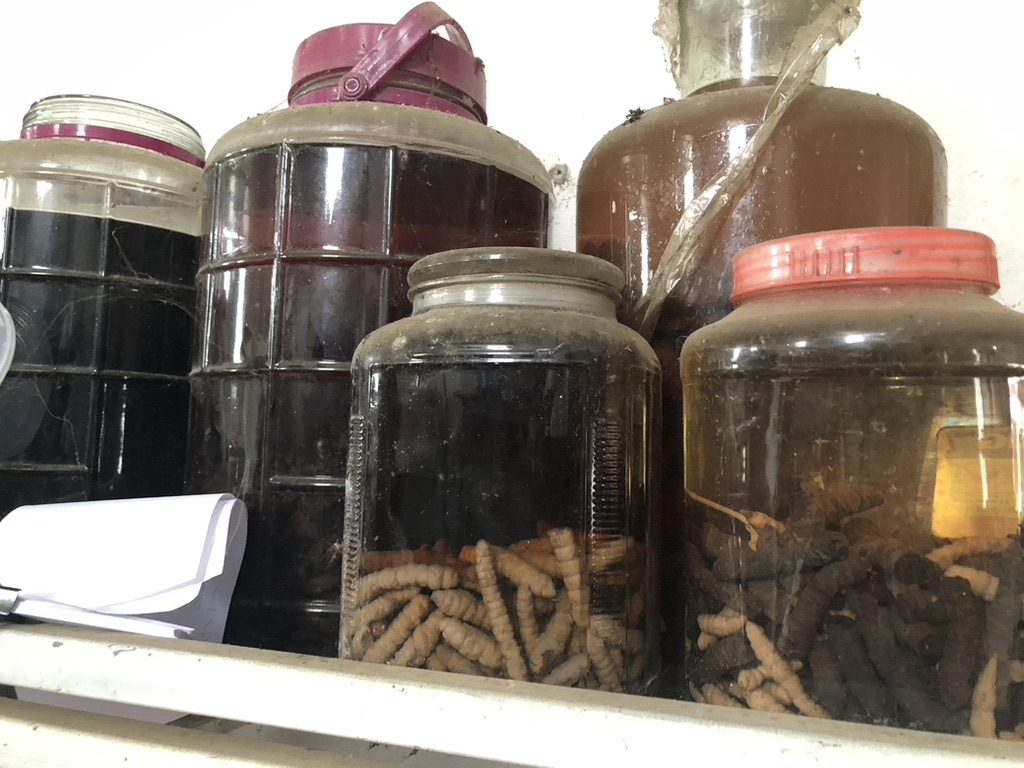
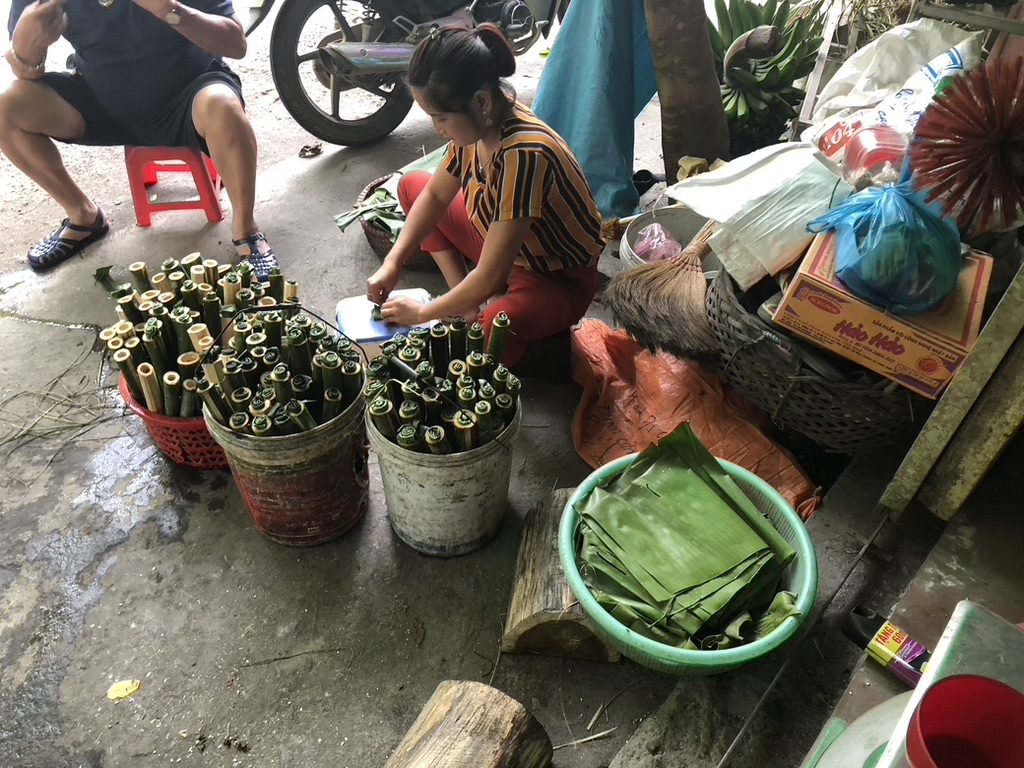
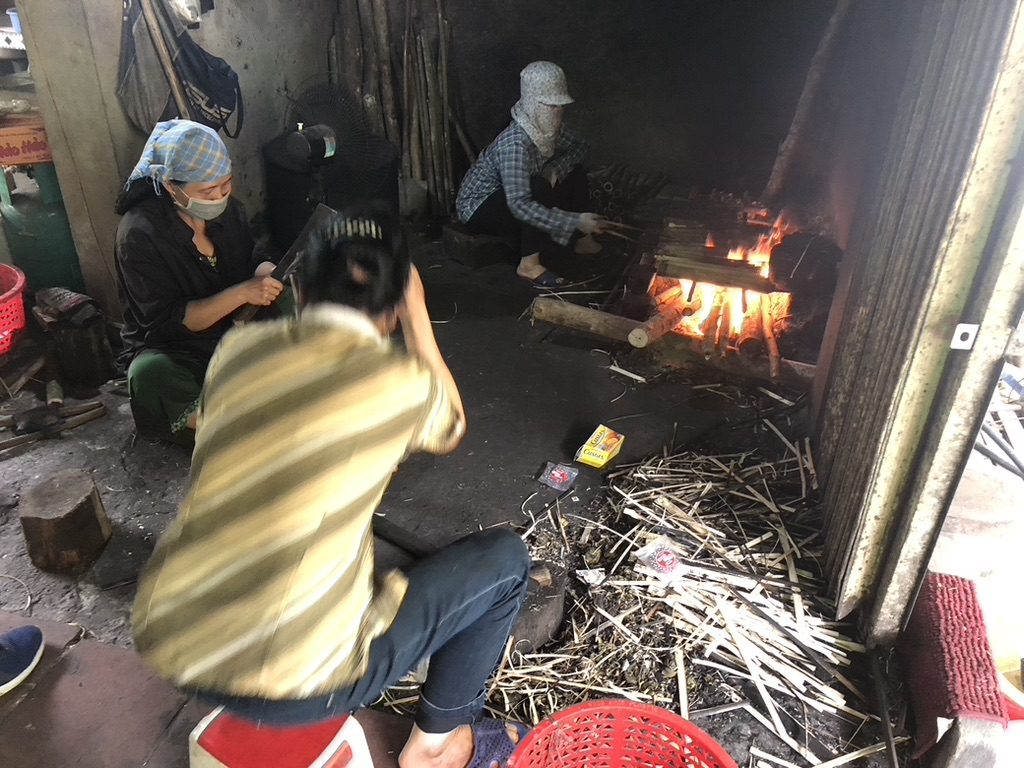
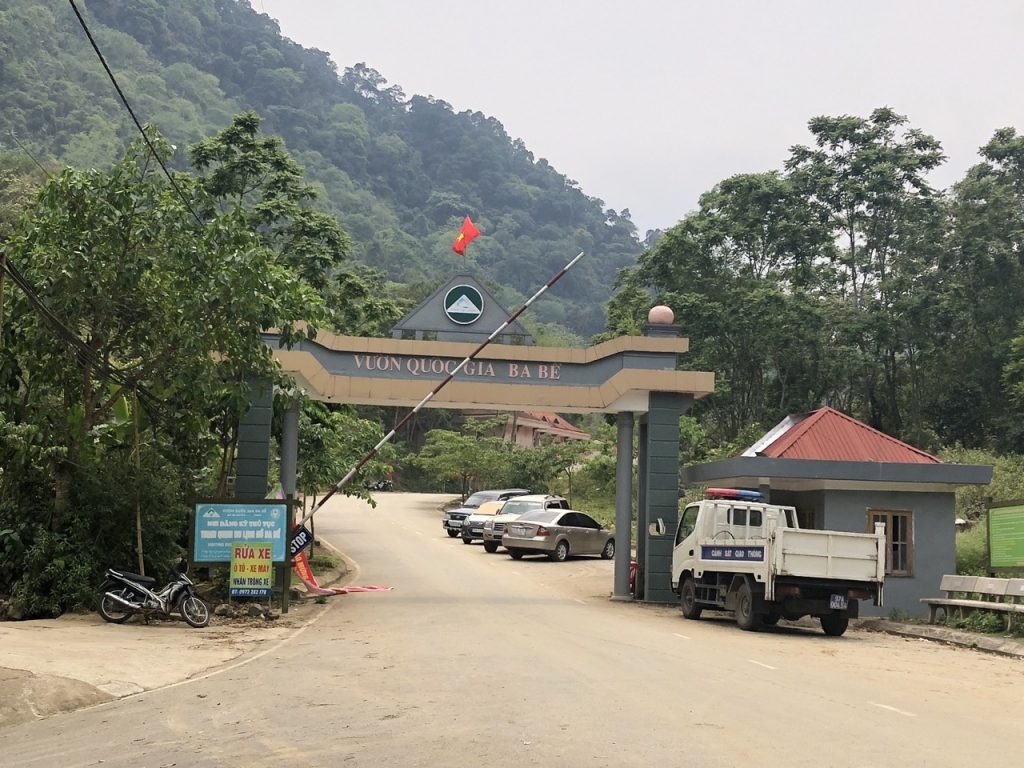
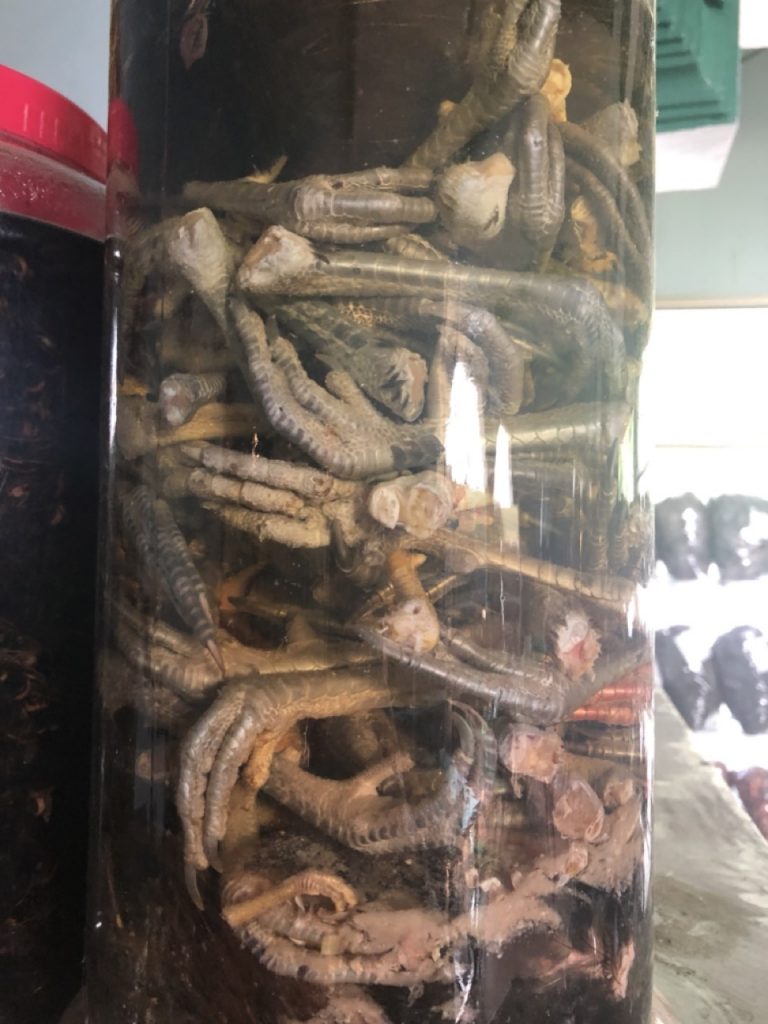
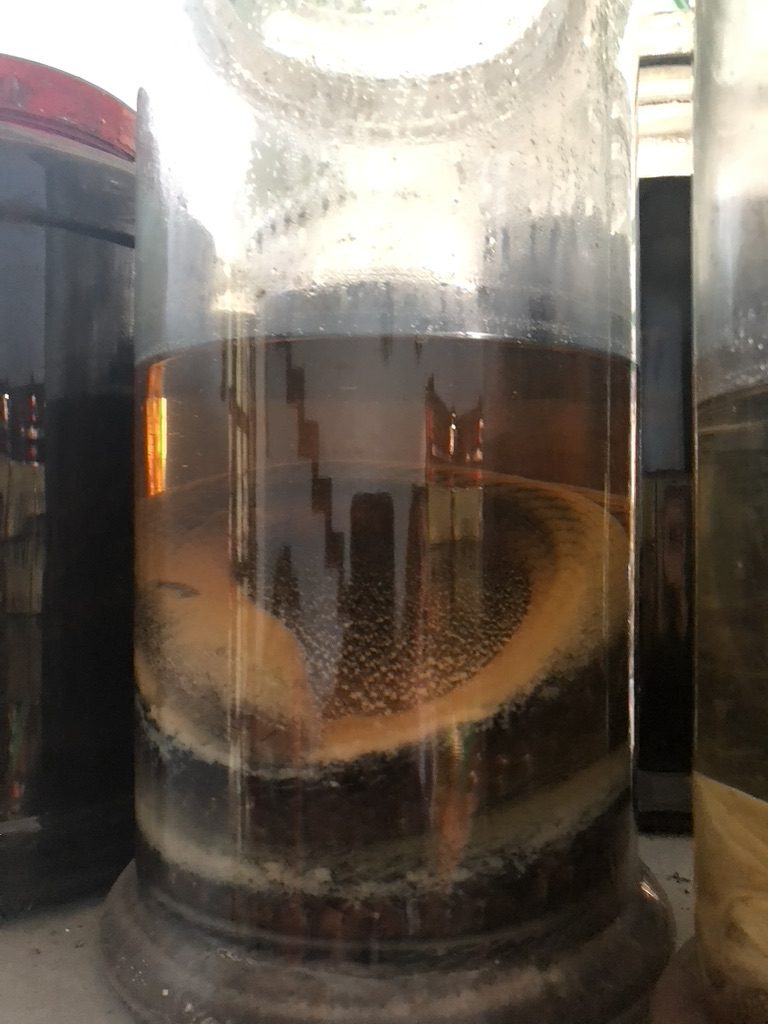
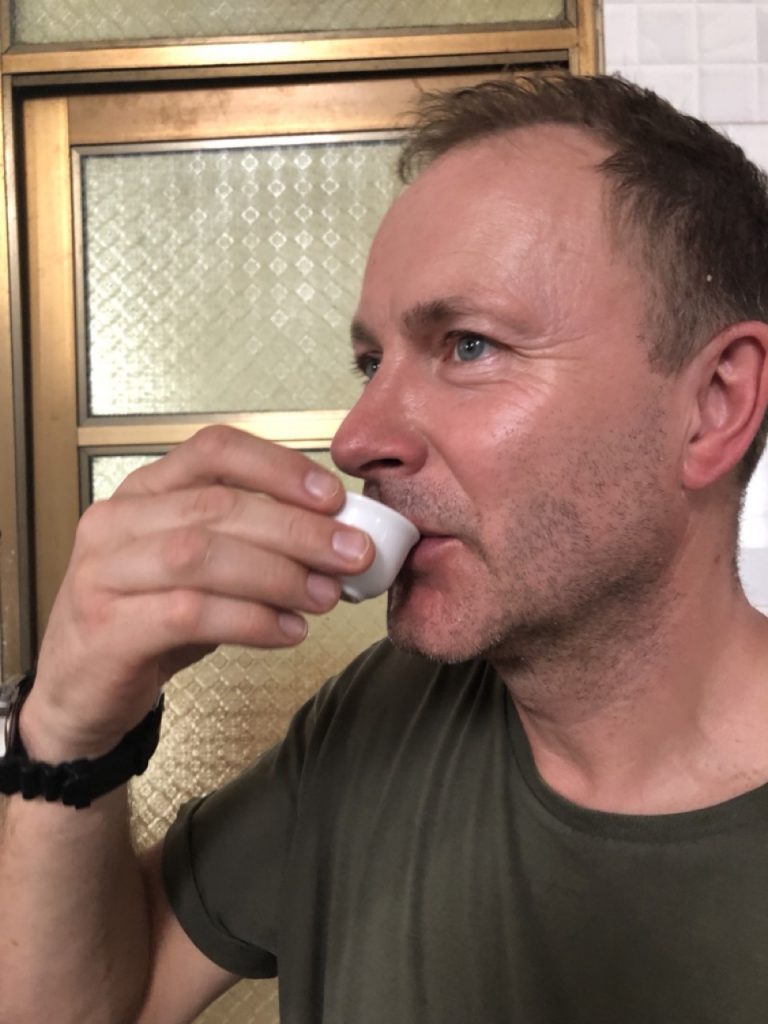
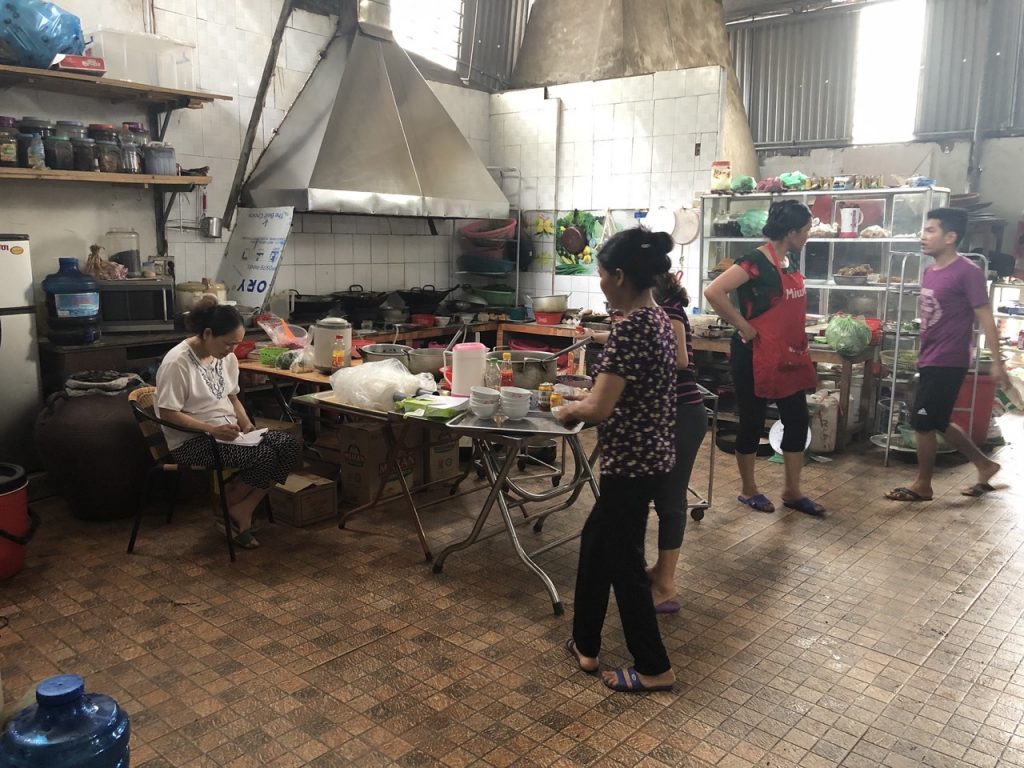
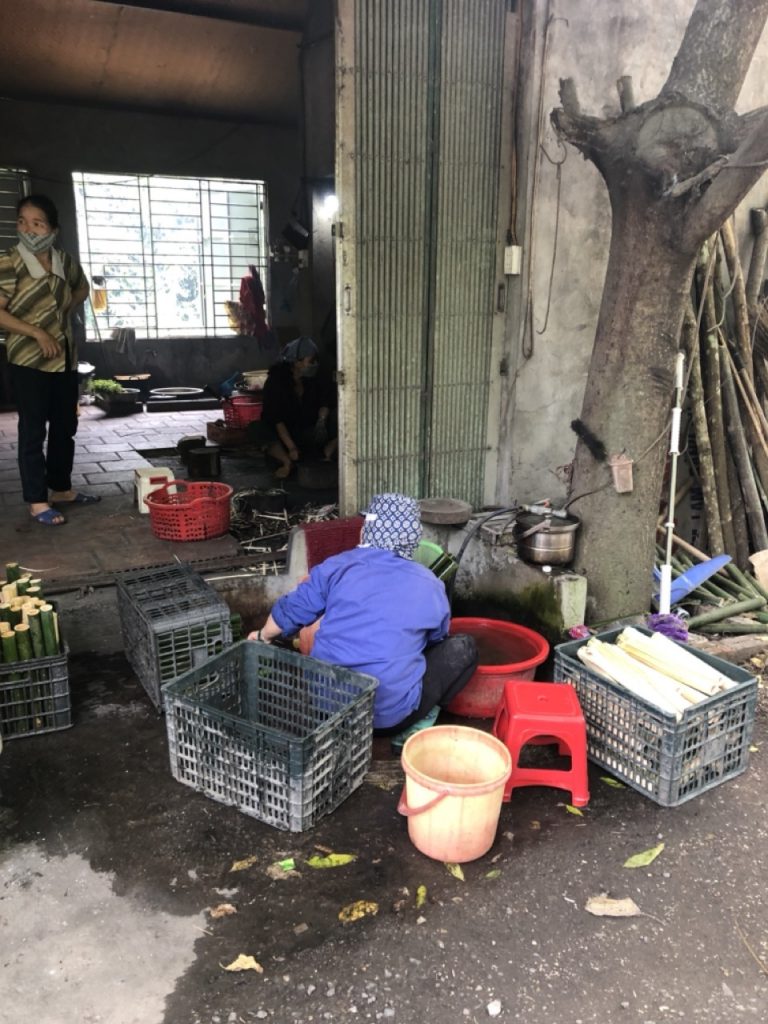
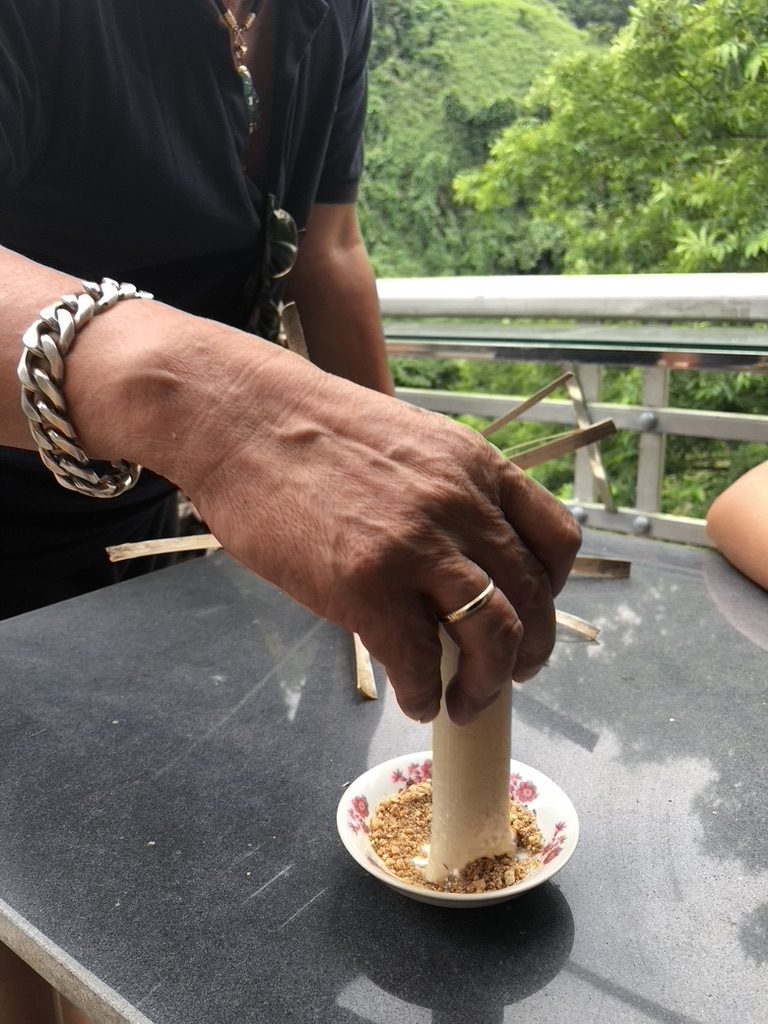
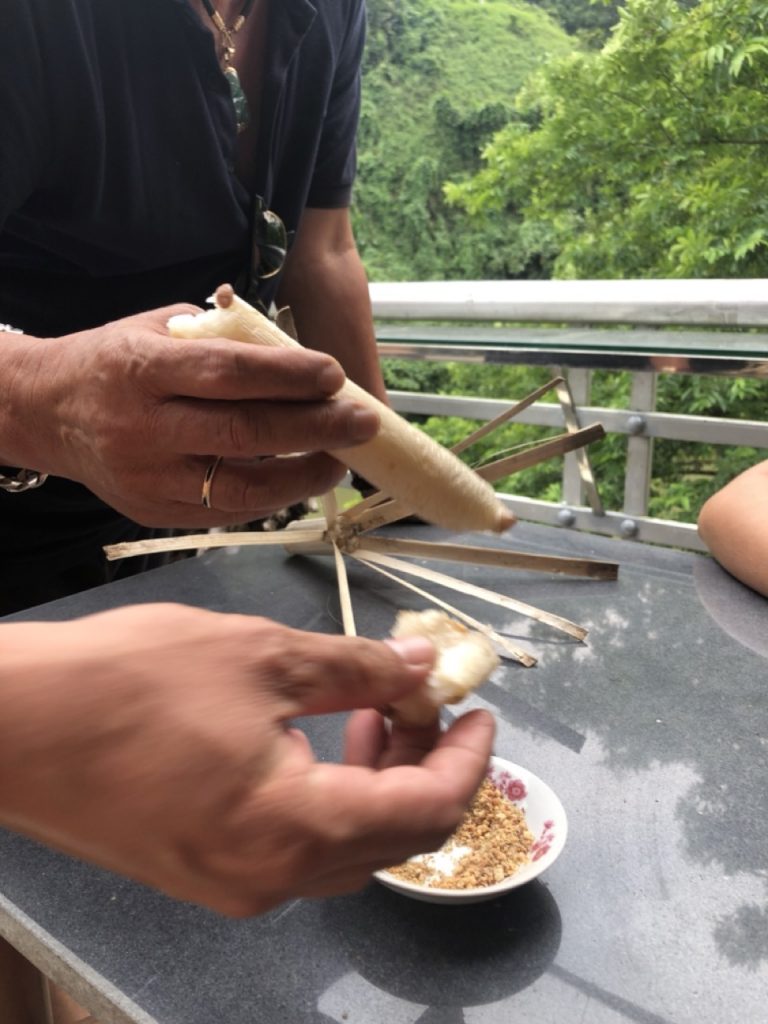
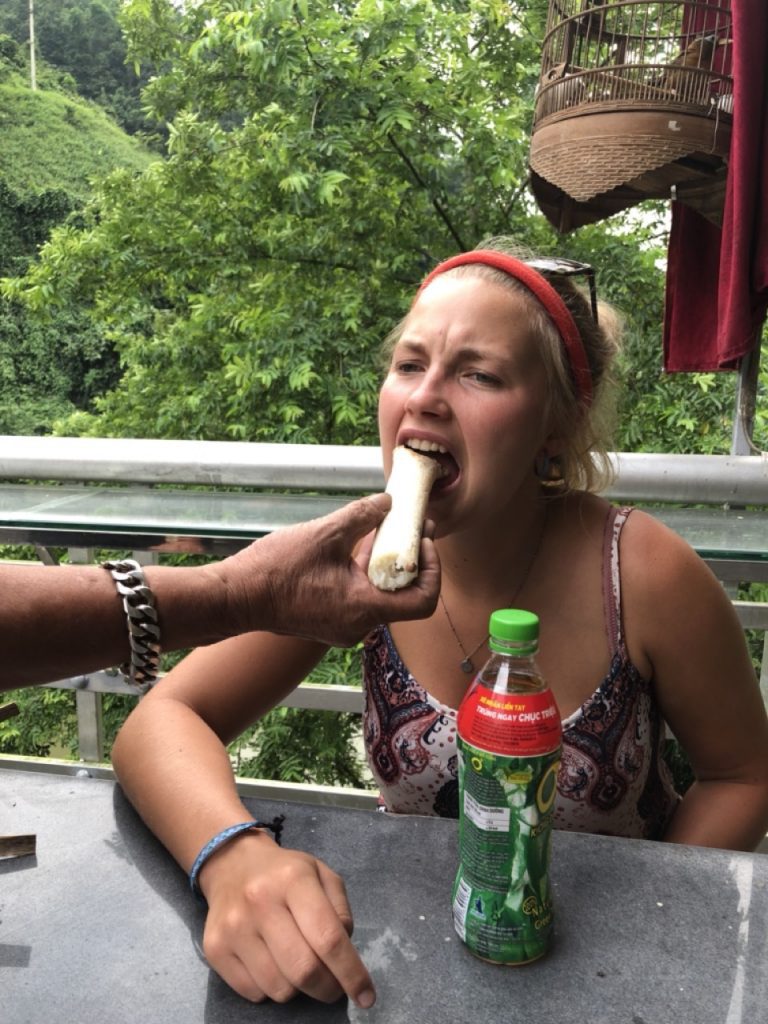
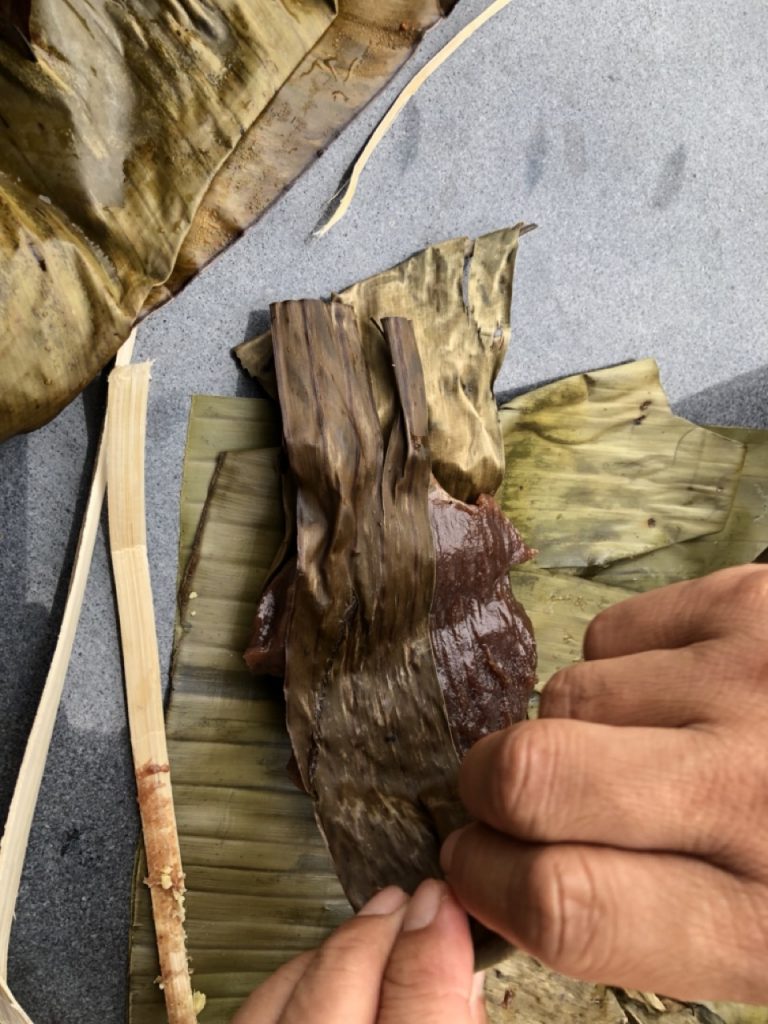
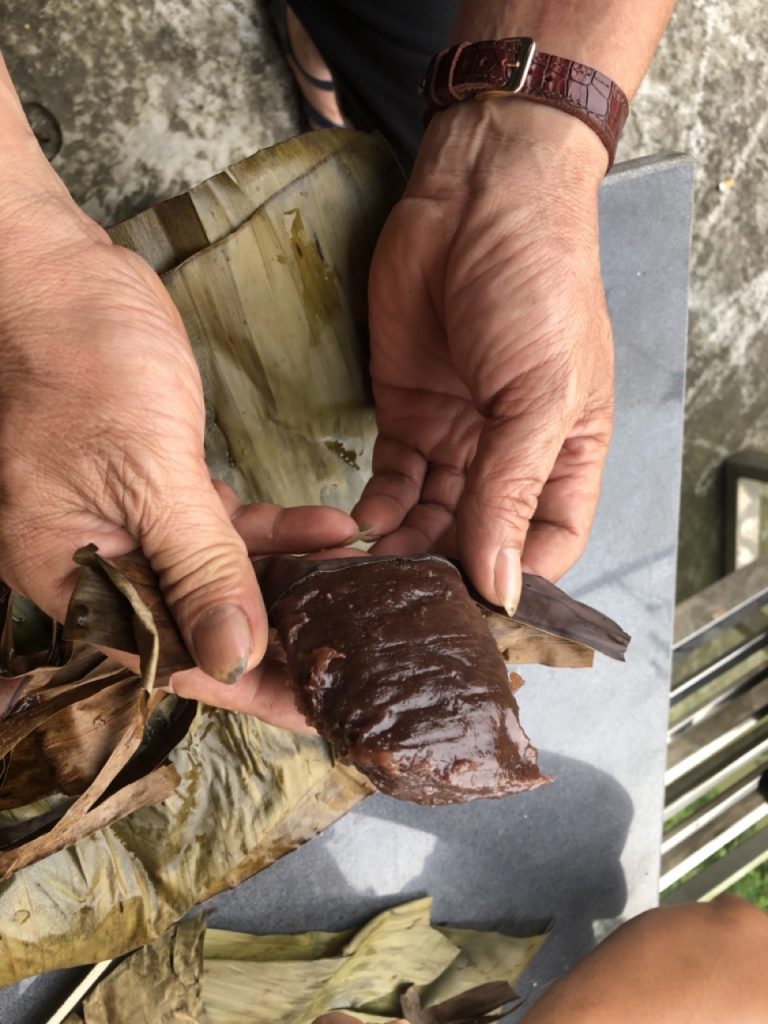
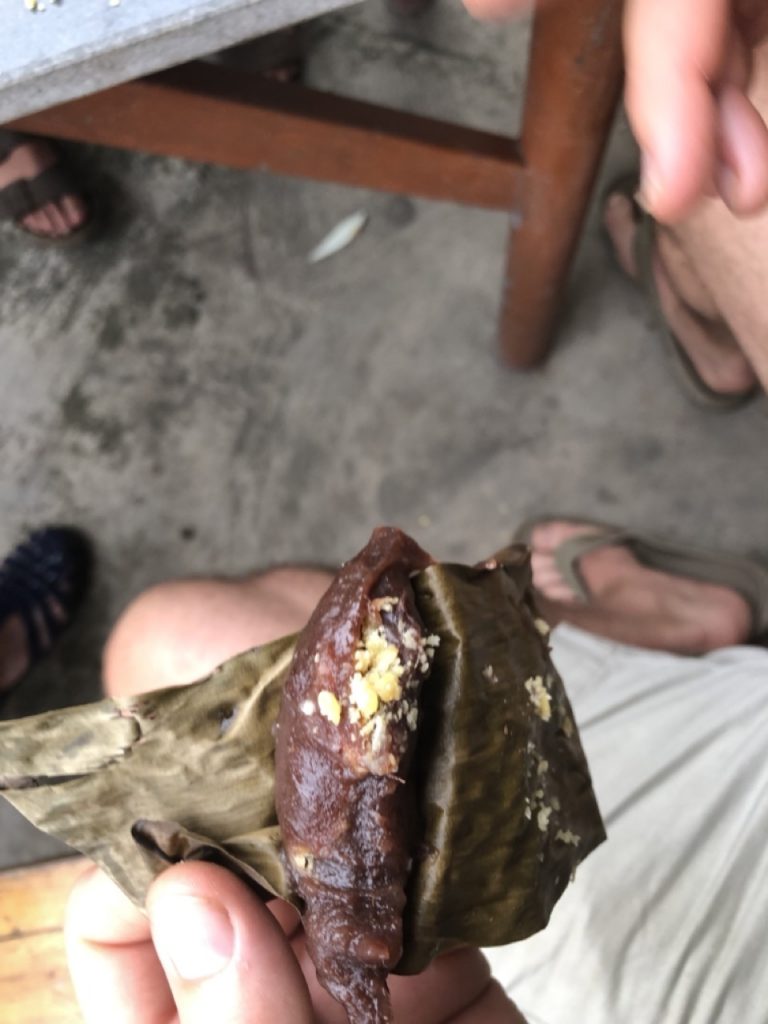
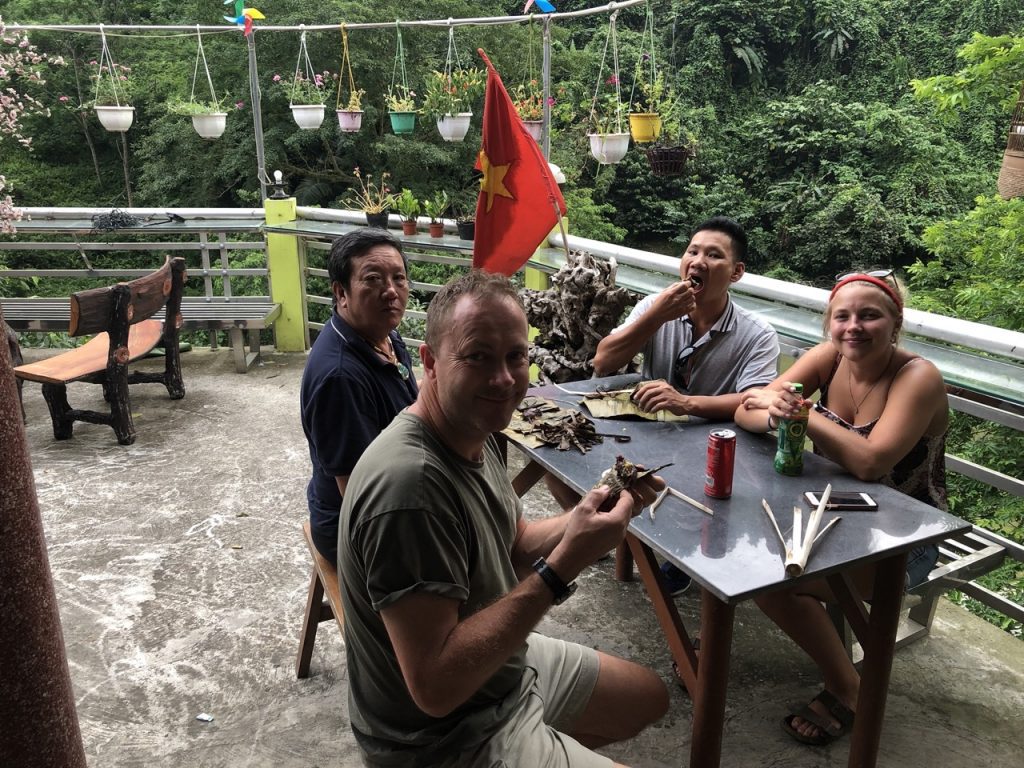
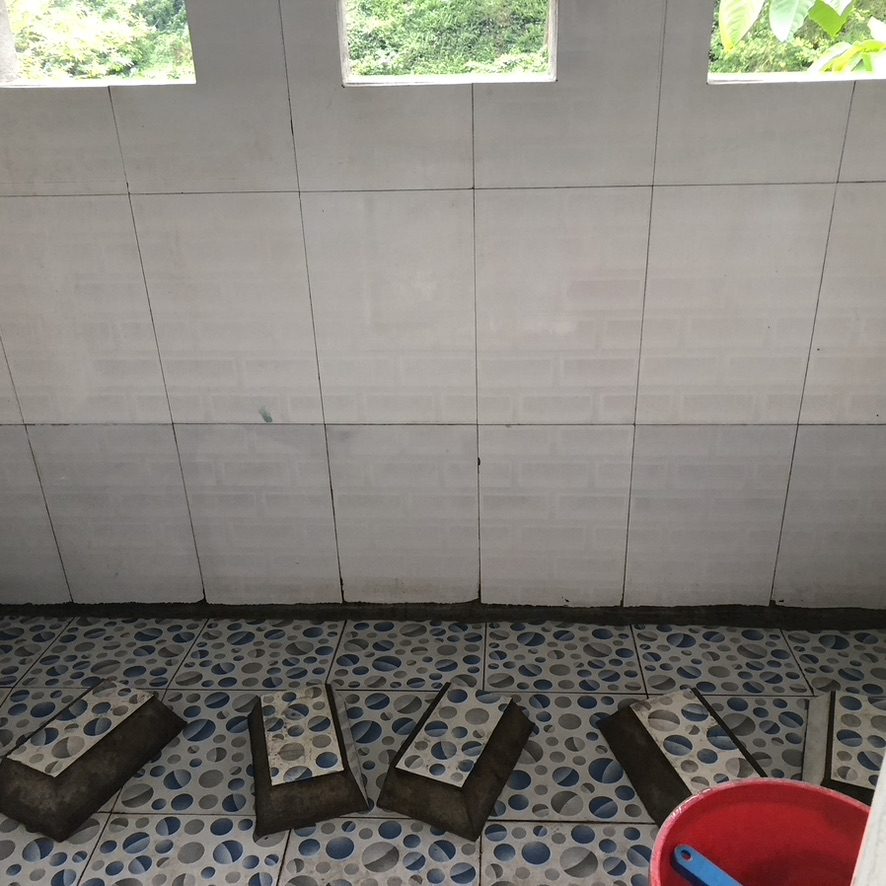
We drove on to Hanoi where Ngan dropped us back at our lovely hotel La Siesta Hotel Trendy and we said fond farewells – Paul was upset as he had lost his sunglasses… That evening we headed out with Ngoc and Phong to their fav place to eat in Hanoi. It was lovely to meet their two children …

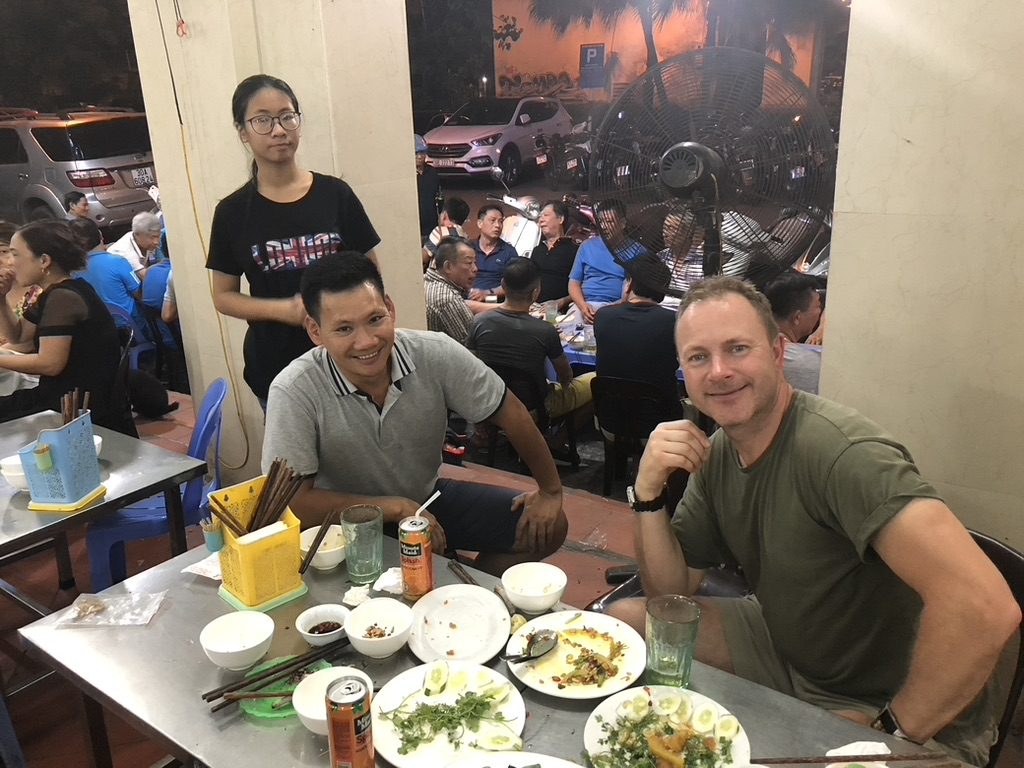
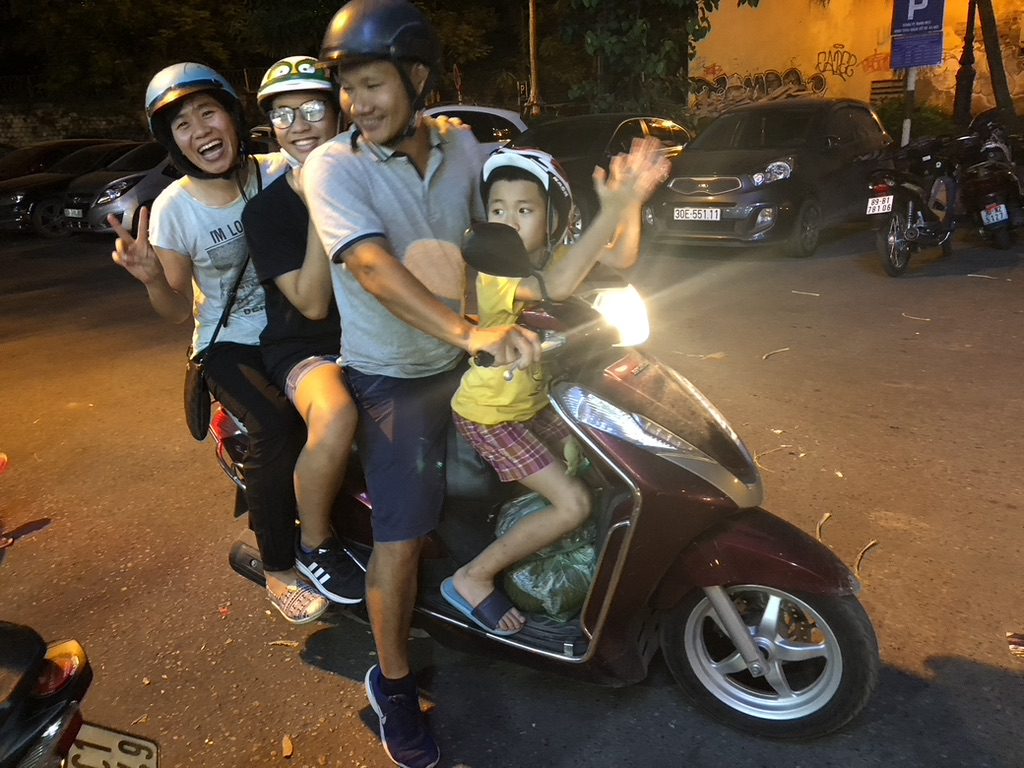
Our next adventure was Hue!
Go Back to: Sapa
Go to: Hue
Go to: Vietnam

